

HIKING in PATAGONIA – The Ultimate Guide to the Best Treks
- Last Updated: February 5, 2024
Everything you need to know about hiking in Patagonia. From trekking in Torres del Paine to El Chalten and everywhere in between, this list of the best hikes in Patagonia will help you plan your big adventure!
Often and widely considered as having the most breathtaking, scenic landscapes in the world, trekking in Patagonia is every hiker’s dream, whether it is for the avid day hiker to the seasoned, experienced multi-day trekker.
Patagonia is a land of dreams, ranging from the raging rivers of the Rio Moscu to the iceberg glacial lakes of Tigre Sur.
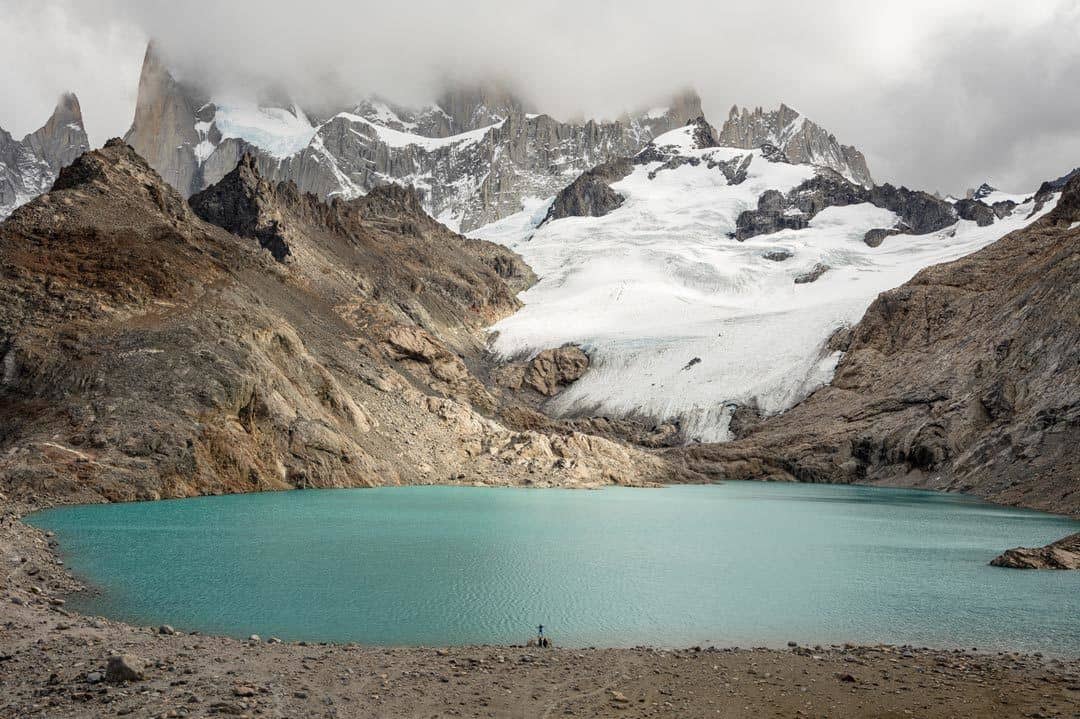
The hiking routes take you from lush meadows of wild flowers to snowy-rugged peaks at the base of the world famous Mount Fitz Roy.
Just the thought of hiking in Torres Del Paine National Park sends shivers down my spine. Ever wanted to visit one of the world’s most famous granite peaks? Cerro Torre in Patagonia is your place to do so.
There are literally endless kilometres of hikes to do, but it can be very difficult to choose just one when everything looks like it’s worthy of being on a postcard.
Patagonia truly is one if not the most beautiful places on earth, so where do you begin?
It’s every adventurer’s desire to get a taste of what trekking and hiking in Patagonia is like, so I have established a list of the best day hikes to the some of the world’s most stunning multi-day treks.
READ MORE: Don’t miss our guide on backpacking in Patagonia on a budget.
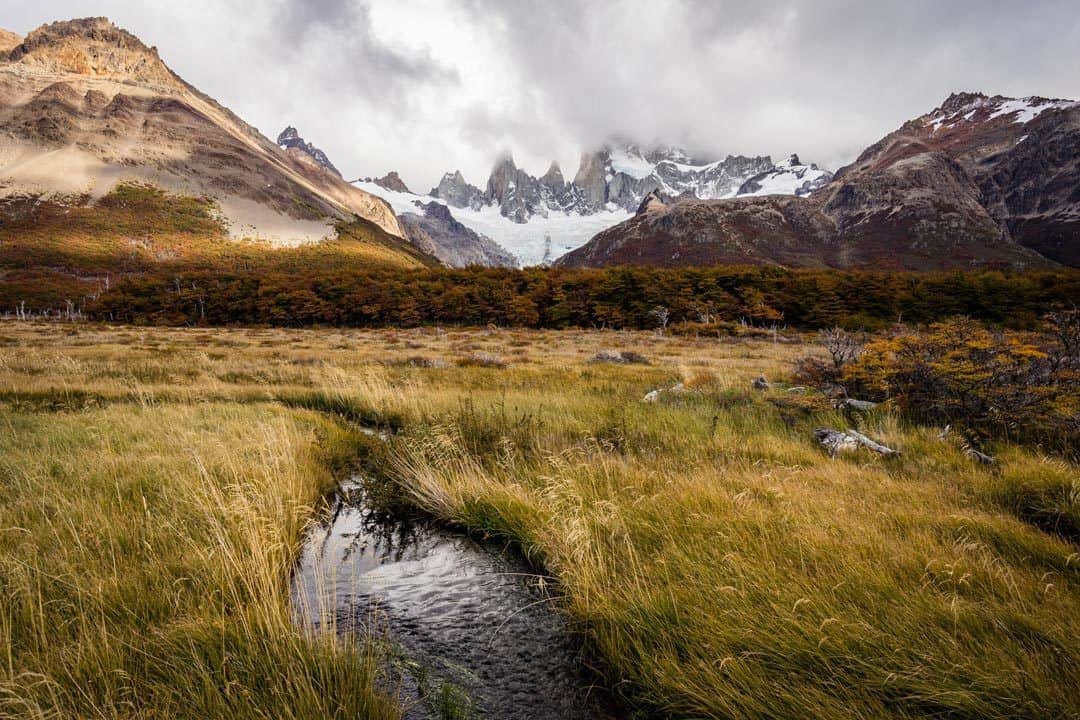
Table of Contents
Hiking to Mirador Las Torres
Lago grey (grey glacier), the french valley – valle del frances, los cuernos trail, the “o” circuit, short hike to condor lookout, day hike to the base of mount fitz roy – laguna de los tres, day hike to cerro torre, the huemul circuit, laguna esmeralda, glaciar vinciguerra, sierra valdivieso circuit, laguna tigre sur, valle rio moscu, cerro castillo, pumalin park – cascadas waterfalls hike (escondidas), save this pin for later, the best time to go hiking in patagonia.
Early November until late April are generally the best times to go hiking in Patagonia, however this can change from year to year due to varying amounts of snowfall.
Not a fan of the cold? Try and head there in February and March for the warmer months for some great Patagonia trekking.
Also it’s necessary to know that weather in Patagonia is so varied and can change at any time, which can very quickly alter your Patagonia hiking trip. Keep that in mind when planning your adventure.
Hiking according to the seasons in Patagonia has both pros and cons no matter what time of year you decide to go, so if you were going to pick a time, aim for the end of March to mid-April, where weather seems to be slightly cooler but more stable allowing you to enjoy Patagonia in all its glory.
But the best reason for visiting Patagonia at that time of year is to see the entire region in autumn colours! Simply breathtaking.
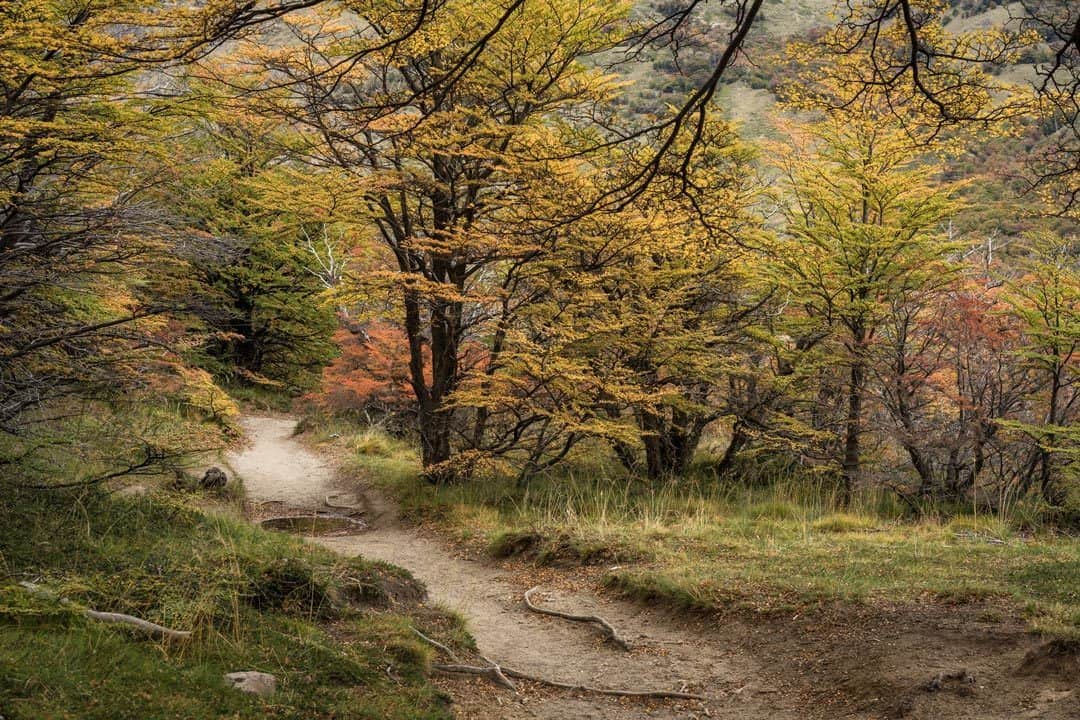
Hiking In Torres del Paine National Park
When it come to hiking in Patagonia, no trip would be complete without spending at least a few days in Torres del Paine National Park, the crown jewel of Chile.
Whether you’re interested in just heading into the park for a day hike, using one of the accommodations inside the park as a base (we personally recommend EcoCamp ), or carrying all of your camping gear and completing the famous O Circuit, you definitely won’t be disappointed with the trekking here.
- Time Required: 8 to 9 hours
- Distance: 18km
- Difficulty: Hard
- Start / Finish Points: Hotel Las Torres
Widely considered to be the most popular day hike in Torres del Paine, Mirador Las Torres is just one of the magical places you can hike to when in Torres del Paine.
Las Torres translated to English means ‘The Towers’, and mirador means ‘Lookout’ , so you should have an idea of what to expect up there.
The Towers are a series of 3 jagged peaks that literally tower over a turquoise lake below, and chances are you’ve already seen a photo of them at least once in your life.
This particular trek is 18 kilometres of visual delights, despite it being considered as a difficult hike, and the views once you reach the top are just awesome!
Most of the trek is uphill, but don’t let that put you off this classic day hike, as cascading waterfalls, forests beaming with life and boulder fields dominating the higher landscapes and just waiting for you to enjoy.
The last hour is extremely steep, so make sure you save some energy for the final slog.
If you are after a really magical experience spend the night in the park and start hiking up in the dark. If the weather cooperates you’ll be rewarded with Las Torres looking as though they’re on fire with the red sun lighting them up at sunrise.
Las Torres is a hiker’s dream, and if you could only choose one trek in the whole of Patagonia, this would be it! Return via the same way you climbed, starting and finishing at the Hotel Las Torres.
Prefer to hike with a guide? Book your Mirador Las Torres tour here with Get Your Guide.
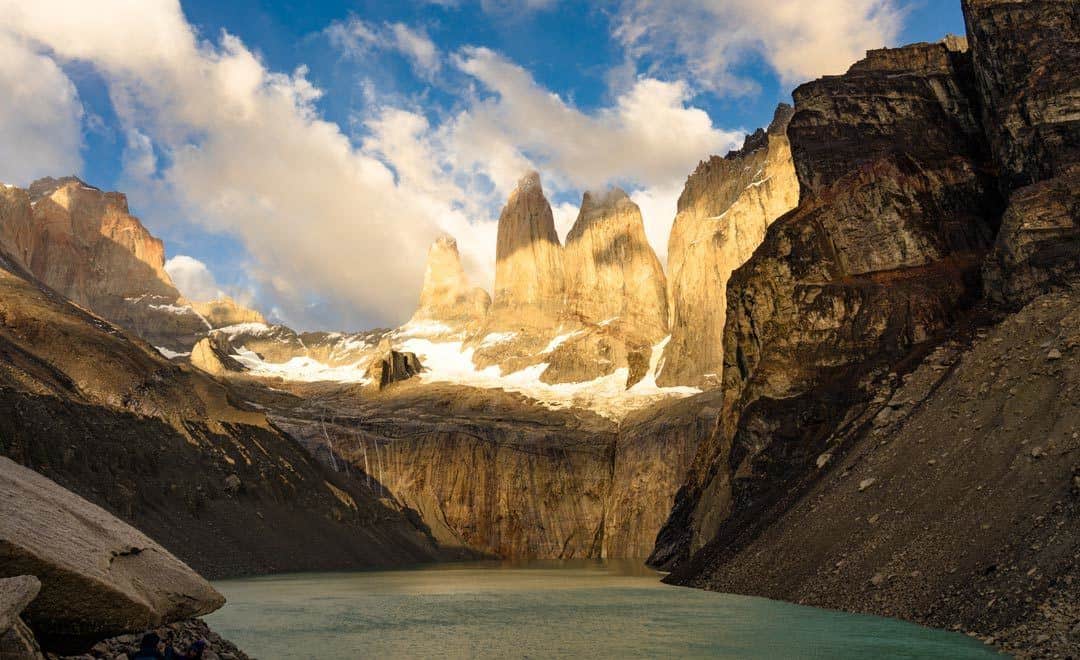
- Time Required: 3 to 4 hours
- Distance: 11 kilometres
- Difficulty: Easy to moderate
- Start / Finish Points: Mountain Lodge Paine Grande to Refugio Grey
As you might know there are quite a few glaciers in Patagonia (you can even visit some on an amazing glacier cruise in the Chilean fjords ), but this one takes the cake as the best of the best.
Along the famous “W” Trek, towards the western part of the hike, is a long section that follows the Lago Grey lake, which is gradually fed by a huge glacier known as Glaciar Grey.
Here you can expect to see pale blue icebergs floating around in the Lago Grey, as parts of Glaciar Grey collapse into the lake below and it’s a spectacular sight to see!
From Refugio Grey to Mountain Lodge Paine Grande is a 3 to 4 hour hike spanning over 11 kilometres, with little ascent or descent making it a fairly easy day out.
Expect to see vast areas of vegetation, wild flowers and the odd section of track that requires a tricky traverse but nothing too major. Keep an eye out for the majestic Cerro Torre piercing the sky.
Camping is available at Mountain Lodge Paine Grande and Refugio Grey if you want to spend the night there. Otherwise take the ferry to Paine Grande or Refugio Grey and start walking.
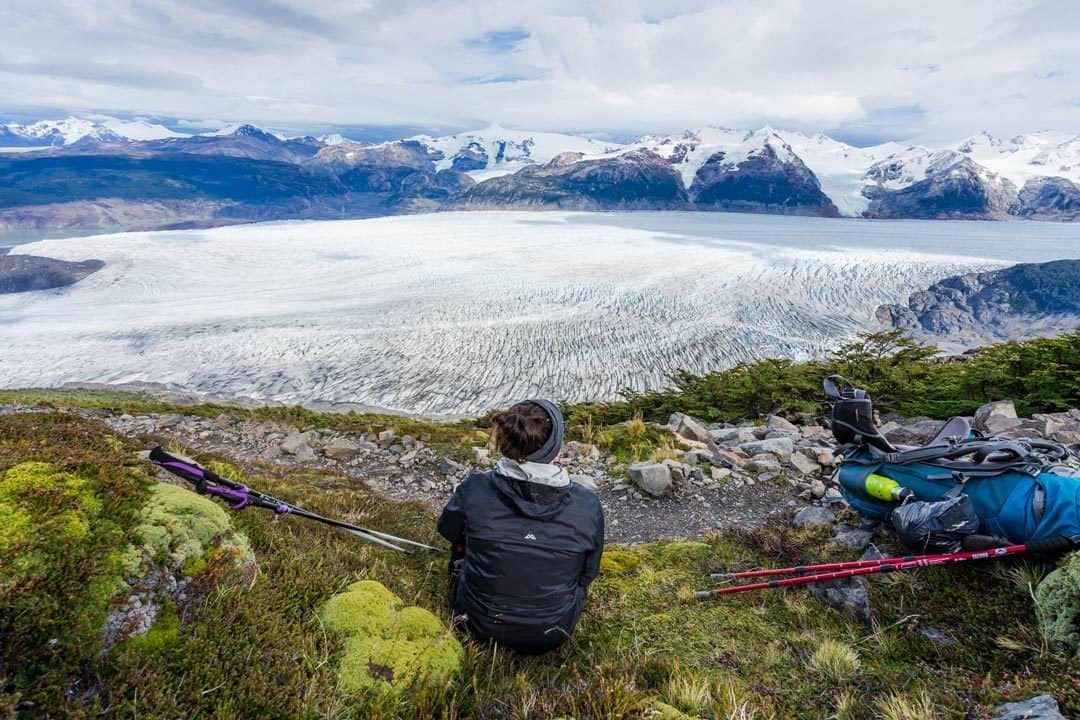
Alesha enjoying the view over Grey Glacier.
- Time Required: 3 to 4 hours
- Distance: 12km
- Difficulty: Moderate
- Start / Finish Points: Refugio Los Cuernos
You always have energy in Patagonia, even when you are literally falling asleep, so don’t miss this epic side trip that takes you between the Cerro Paine Grande and the Cuernos del Paine following the flowing river of the Rio Frances.
Why this hike is the one of the most spectacular side trips is because it has frozen waterfalls…how cool is that?!
READ MORE: We’ve just published our best hiking tips after 15 years trekking!
Also pretty dangerous though, so don’t be getting your ice picks out too soon, because there are views much higher up that you can enjoy, such as the 15 minute trek past the Campamento Britanico placing you in an almost cathedral of mountains.
The Mirador right towards the end is complete with a series of tarns beaming the reflections of the surrounding mountains making it that ideal moment to getting that camera of yours out! Camping is available (minus the facilities of toilets etc). Return the same way you came.
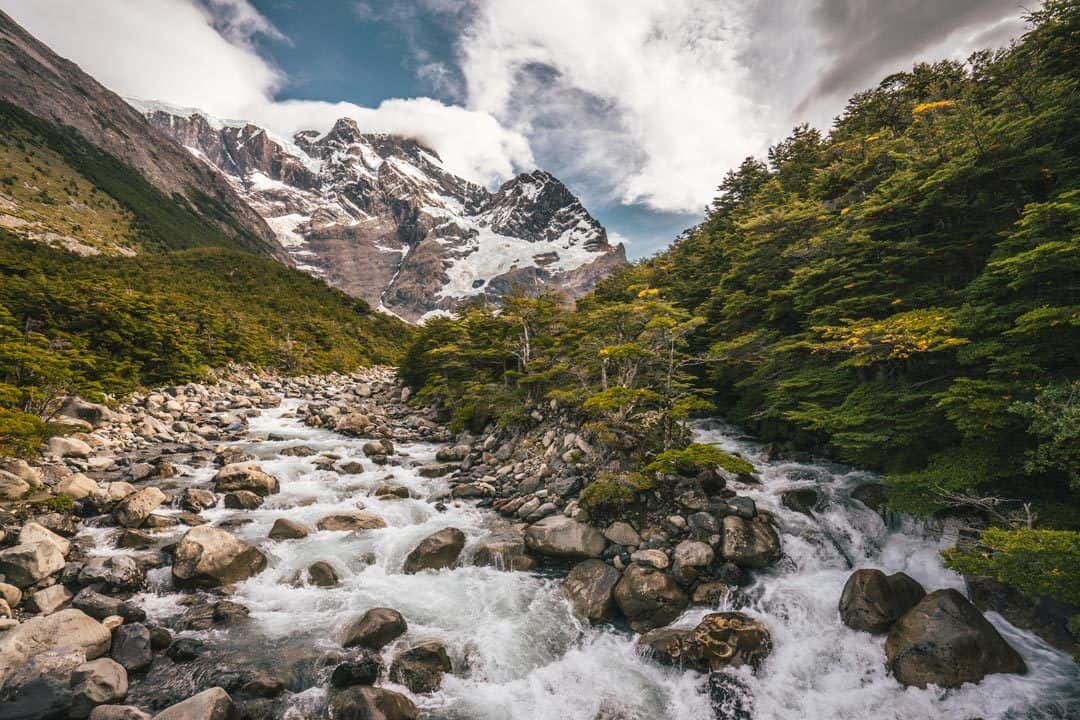
- Time Required: 6 hours
- Distance: 22km
- Difficulty: Moderate
- Start / Finish Points: Hotel Las Torres to Refugio Los Cuernos
Based along the front half of the park, home to the W Trek, is a fantastic day hike weaving around a series of steep banks perched along the edges of the Lago Nordenskjold.
Los Cuernos Trail, which means ‘The Horns’ in English and named after the mountains you can see that are shaped like horns, is a beautiful stretch offering views of the Cuernos del Paine, which never cease to amaze, and gorgeous vistas over the lake.
If you still have bounce in your step when you finish the trail, consider a side trips up the Valle del Frances, an additional 12 kilometre stunning section of track.
Plenty of camping is available on the south side of Cuernos Del Paine if you prefer to take more time on this hike (just keep in mind it gets quite windy in these camp spots).
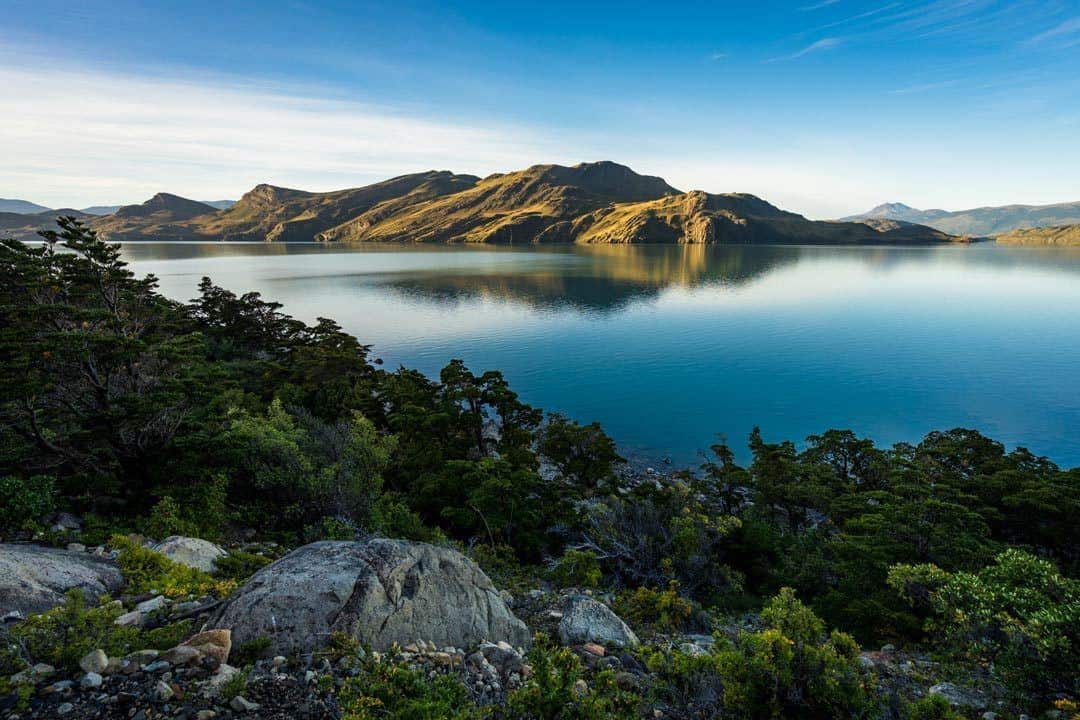
- Time Required: 6-8 days
- Distance: 135km
- Difficulty: Hard
- Start / Finish Points – Hotel Las Torres
Defined as one of the best treks on earth, the Paine Circuit, commonly known to the hiking world as the “O” Circuit due to its shape on a map, is a must do if you have a sense of adventure.
The circuit literally has it all, from pristine forests, meadows of native wild flowers to the grand peaks of Cerro Paine and Cuernos del Paine…and let’s not forget the addition of Las Torres along the eastern side of the trek.
You are best off starting at Hotel Las Torres and heading to Campamento Seron, where views of Cerro Paine (1,508 metres) dominate your surrounds along with rivers flowing off Lago Paine.
Once you connect with the track along the Rio de los Perros, mountains begin to pop-up more frequently along with glaciers, but be sure to pitch your tent at the campsite on Lago Dickinson, as views here are some of the best along the hike.
As you continue to be blown away by Grey Glacier in Torres del Paine (hopefully not by the wind), you find yourself on the trail that begins the “W” trek, which is the shorter, more popular sister of the O Circuit, which begins at Refugio Grey camping area.
Finishing the “O” circuit adds side trips along the French Valley (a must-do hike) and up to Las Torres to watch the sunrise, then heading back down to where you started.
If you want to finish on an alternative route, from Mountain Lodge Paine Grande you can hike along the Rio Grey to the Lago del Toro administration centre.
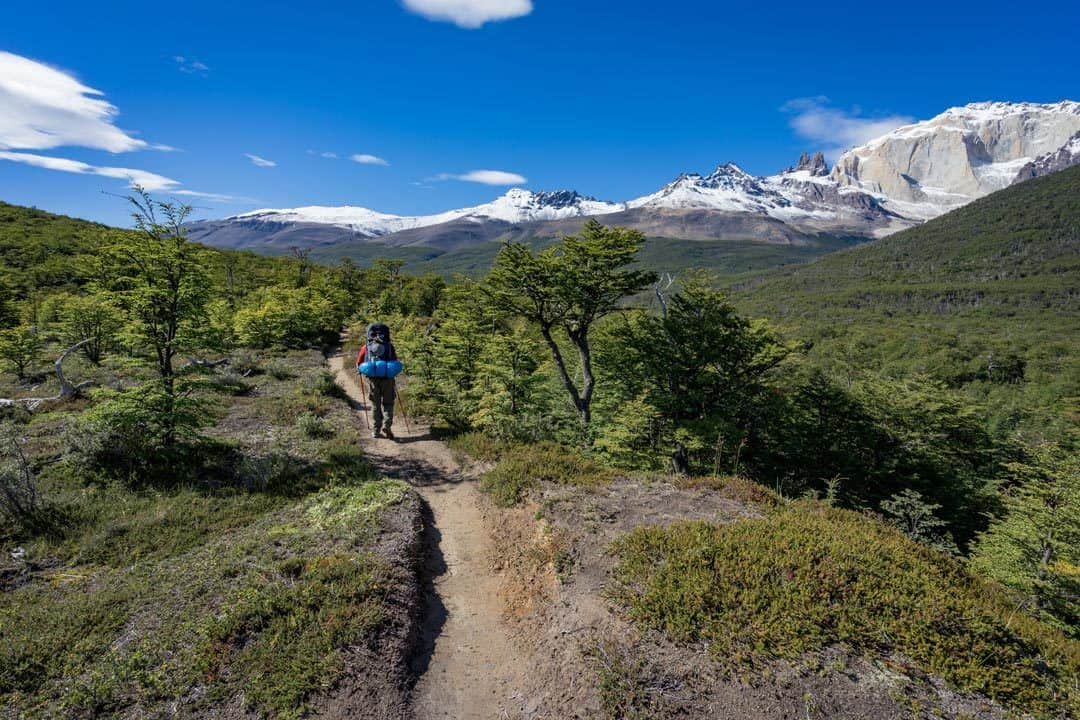
Trekking In El Chalten
While Torres del Paine is the most popular place to go hiking in Patagonia, the truth is El Chalten is the place that will steal most people’s hearts.
Across the border in Argentina, further north of Perito Moreno and its amazing glacier, is a tiny village called El Chalten that sits in the middle of Los Glaciares National Park.
What makes El Chalten so epic is that not only is entrance to the national park free (yes!!!), all of the hikes start from right in the middle of the village.
So once you’ve finished ticking off the quintessential Torres del Paine treks, head off to tackle some of the best hikes in El Chalten!
- Time Required: 1 hour
- Distance: 2km
- Difficulty : Easy
- Start / Finish Points: El Chaten
Based out of El Chaten is one of the shortest hikes in Patagonia, which mostly consists of a gradual ascent to views from Las Aguilas.
Just because it’s short doesn’t mean it’s not worth doing. The views are quite unexpected, as Viedma Lake appears with a backdrop of stunning, ever-covered mountains of snow.
This is a great hike to do for sunrise in case you don’t feel like camping out in the middle of the park. Return the same way you came.
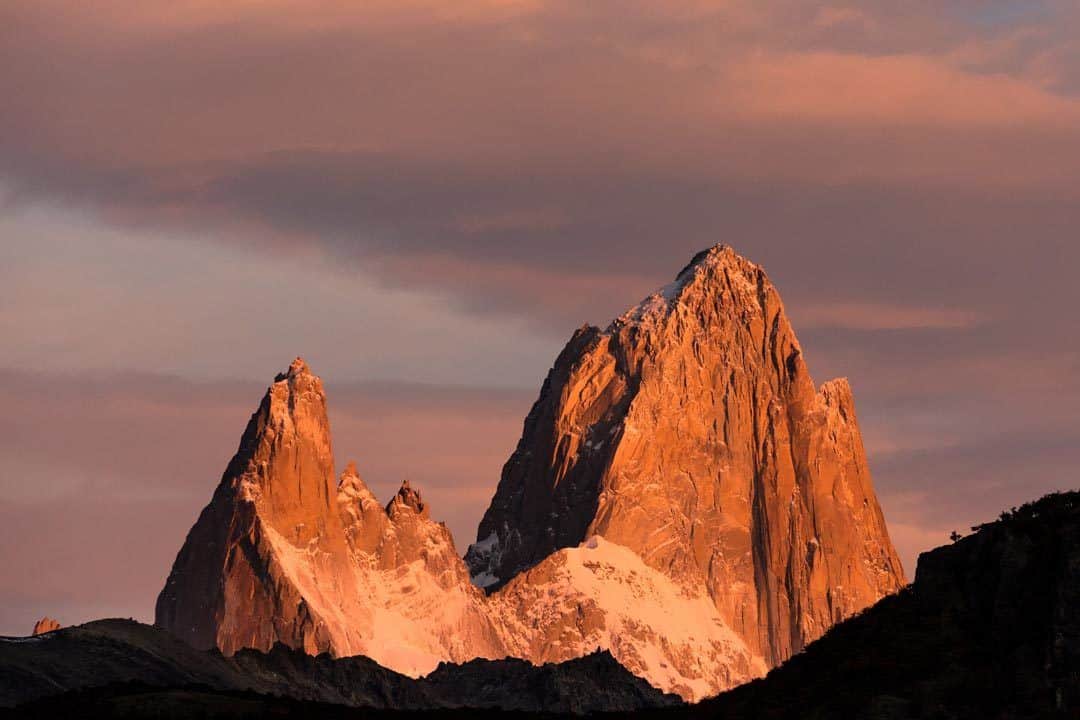
- Time Required: 8 hours
- Distance: 26km
- Difficulty: Moderate to hard
- Start / Finish Points: Northwest end of El Chalten
This hike will be the one that takes you as close as you can get to the foothill of Mt Fitz Roy, and one of the best hikes in El Chalten.
It’s best off to start early to enjoy the morning alpine glow on the peaks above, but that could be said of most treks in Patagonia.
The trail is pretty mellow to begin with, and there are a few narrow sections through forests which are lovely. Then the hard part comes.
Zig-zagging up and up for the last hour, you will finally reach Laguna de los Tres, with the most epic views of Mt Fitz Roy soaring above you!
Depending how skilled you are in the mountains, there is a climb that proceeds up the peak of Cerro Madsen (1,806 metres) for even better views of Fitz Roy.
Return the same way you came to head back to El Chalten, unless you are deciding to camp at Campamento Poincenot.
Prefer to have a guide? Book your Mount Fitz Roy tour here with Get Your Guide.
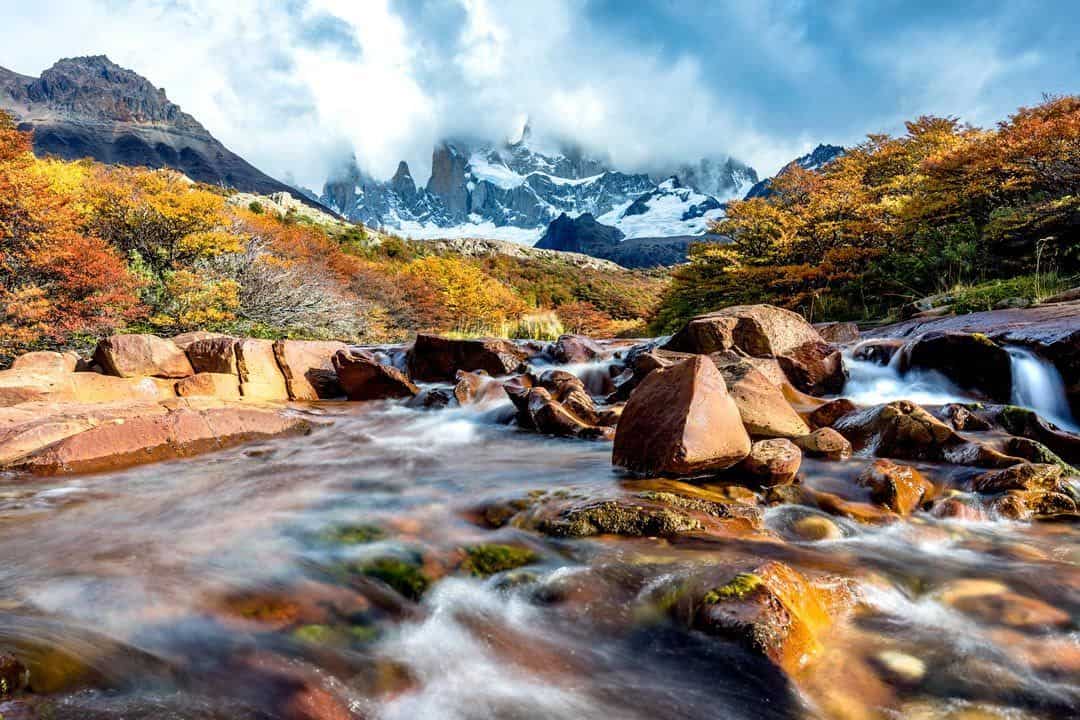
- Time Required: 2 days (can be done as a day hike)
- Distance: 19km
- Difficulty: Easy
- Start / Finish Points: El Chalten
A perfect opportunity to get up close and personal with Cerro Torre, reaching into the sky at 3102 metres, can be done as a day hike, but I think it’s pretty cool to take refuge at Campamento de Agostini at the base of Laguna Torre.
This 2-day trek is a culmination of lush meadows, rugged ever-changing glaciers and stunning views of Cerro Torre and its surround snowcapped peaks.
As a side trip, opt for the Mirador Maestri lookout which will add an additional 5 kilometres to your adventure. At Mirador Maestri be prepared for uninterrupted views of Cerro Torre in all its glory!
On return, head back the same way you came with views looking down the Rio Fitz Roy (a glaciated river from Glaciar Torre).
Prefer to have a guide? Book your Cerro Torre tour here with Get Your Guide.
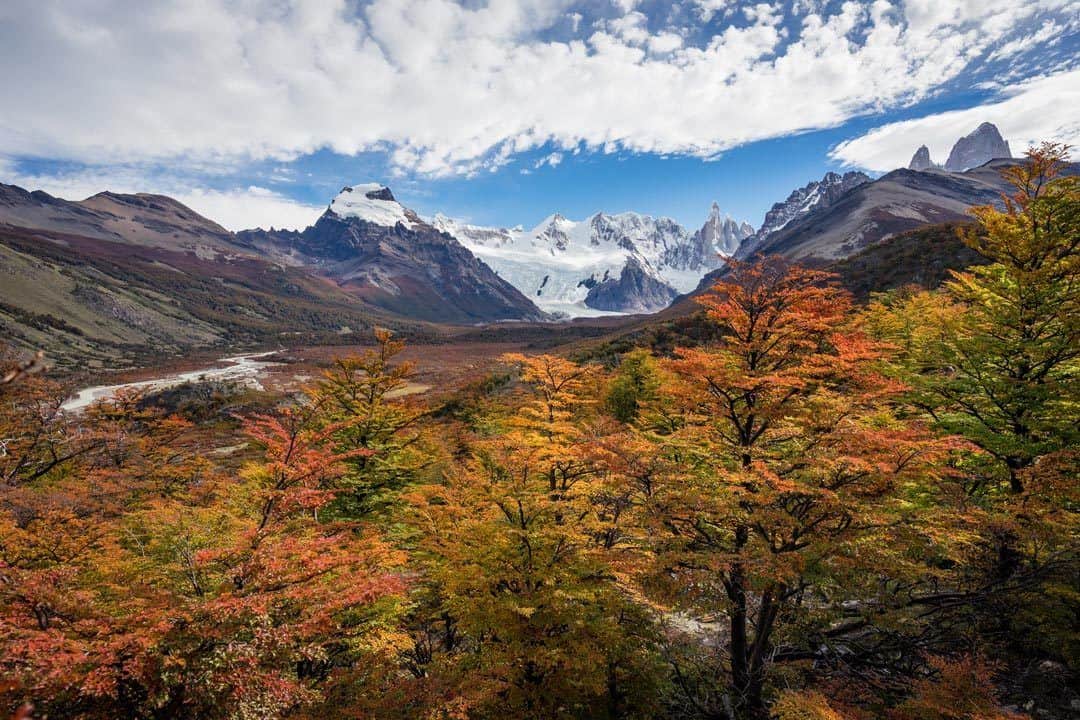
- Days Required: 4 days
- Distance: 63km
- Difficulty: Very difficult
This one is up there as one of the most difficult treks in Patagonia, so be prepared to be fully tested in this stunning lesser-known area of El Chalten.
This Patagonian trek, while demanding in nature, takes you into areas where Cerro Solo can be seen almost standing alone, hence the name ‘solo’.
Mount Huemul is also just as impressive as the contrast between the forest floor, fields of green pastures and rocky spires mix to create stunning views.
The Huemul track puts you to the test with a river crossing almost chest deep as you navigate the Rio Tunel with majestic mountain backdrops.
It only gets harder from here as the Southern Patagonian Ice Field nears, with a climb to Paso del Viento, which is sure to get your blood pumping.
But that’s not all, with a demanding climb to Passo Huemul presenting the clash of Lago Videma (lake) and the walls of the Videma Glaciar.
Views here are gobsmackingly awesome! Take your time to breathe in the fresh air before descending back the way you came.
The Huemul Circuit is considered as a very difficult trek, so its best off to hire a local guide who can help you navigate the rivers and provide insights into one of Patagonia’s most magical areas if you aren’t experienced.
Either way you’ll need a harness and know how to use it, so all hikers on the Huemul Circuit must check in at the information centre before departure to prove they know what they’re doing.
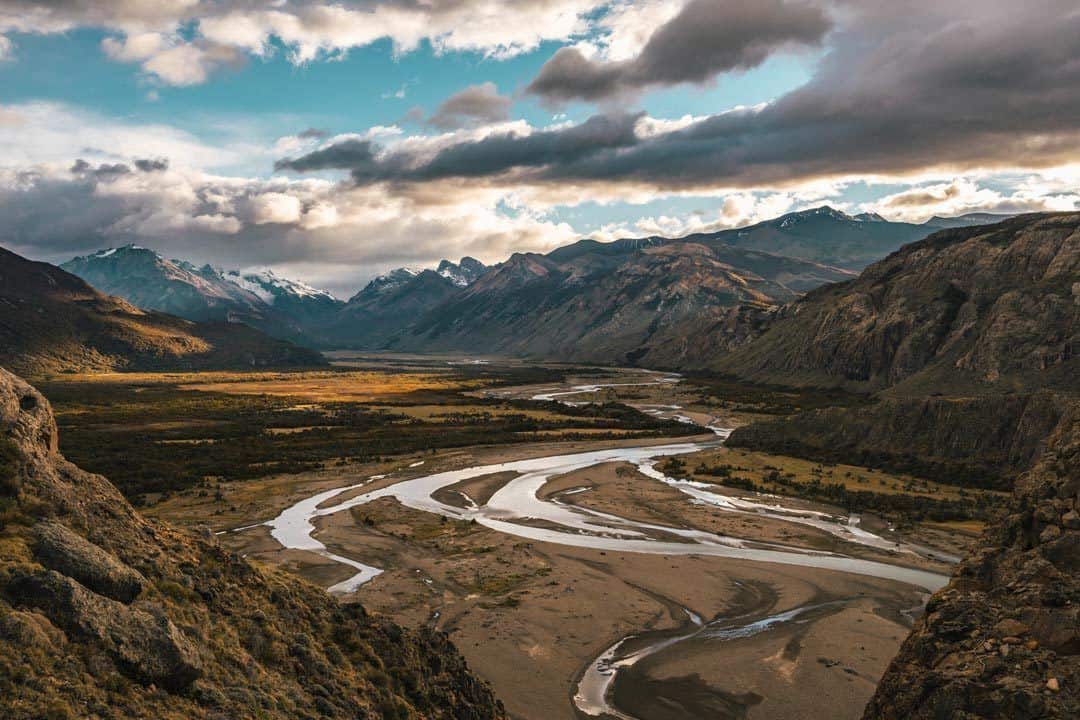
The Best Hikes in Ushuaia
Located at the bottom of Argentina and known as being ‘the end of the world’, Ushuaia is a place that often draws visitors looking to hang out at the bottom of South America. (Click here to read about our experience there.)
It also is a departure point for many people heading off on an expedition to Antarctica.
For those of us that love the outdoors, Ushuaia offers so much more though, and it’s worth spending a few days here to get in some good treks. These are some of the favourite hikes in Ushuaia!
- Distance: 9km
- Start / Finish Points: Refugio Valle Los Lobos
Patagonia isn’t all about multi-day treks, as sometimes the shorter it is the sweeter it tastes. Laguna Esmeralda is an easy 9 kilometre hike to the base of a glacier known as Glaciar Del Albino.
If you prefer to spend extra time taking in the stunning views, a refugios ‘ campsite’ is available near the lake towards the end of the hike allowing you to absorb your surrounds.
At the top, be rewarded with mesmerising views of the Esmeralda Valley down below.
Although this day hike is short, there is an opportunity to put on your crampons and go for a walk along Glaciar del Albino.
The walk on Glaciar del Albino does require advanced hiking skills and that extra bounce in your step, so add up to 4 hours on to your day.
If you’re not fully prepared for it and know what you are doing, don’t go past the 50 metre marker unless your name is Jimmy Chin.
- Days Required: 5 to 6 hours
- Distance: 13km
- Difficulty: Moderate
- Start / Finish Points: Tubera Valle Andorra
This moderately difficult Patagonian trek takes you to a series of glacial lakes with a few steep ascents, making this hike a worthy challenge for avid single day trekkers.
After a series of gradual/steep ascents, Laguna Encatada is finally reached, which is surrounded by lush meadows of grass with reflections of rugged peaks glimmering off its surface.
Hiking to Laguna Encatada provides a unique opportunity to climb the steady peak of Cerro Esfinge, rising to 1275 metres. At the top, the views are breathtaking!
When I think of this hike, I see rugged peaks, flowing hills of dark green grass blowing in the wind with cascading streams of water, and that’s exactly what it is!
The Glaciar Vinciguerra hike sees glaciers precariously wedged between the mountains you are hiking around, as glacial melt trickles past fields of wild flowers.
The water from the glaciers ends up accumulating in glacial lakes where the odd chunk of ice sits bobbing in the freezing waters.
Return the same way you came.
- Time Required: 4 Days
- Distance: 48.5km
- Difficulty: Demanding
- Start / Finish Points: Ruta Nacional 3 or Posada del Peregrine
Deep within the heart of the Fuegian Andes lays one of the more challenging treks in Argentina, but one that you definitely need to consider as a must do hike in Patagonia.
Trekking in the Patagonian Andes wouldn’t be complete with just lush-rugged forests; allow some icy peaks extending from the area’s many glaciers and crystal clear lakes (probably not ideal for swimming) to encompass your surrounds.
This particular trek is a lot quieter than some like the “O” Circuit, as tracks remain barely trodden, so a good sense of direction is always appreciated before attempting this 4 day, 48.5 kilometre trek.
Due to unstable weather conditions in this part of Argentina, it’s always appropriate to take more supplies than you think you will need.
Sierra Valdivieso is a culmination of muddy paths with contrasting streams of blue glimmering glacial water and is something that will acquire your sense of adventure.
This hike in the Fuegian Andes is a classic mix of snow, ice and scree which can be difficult in parts, but once you ascend to the high passes it all makes getting dirty worth it!
Prefer to have a guide? Book your Ushuaia hiking tour with Get Your Guide.
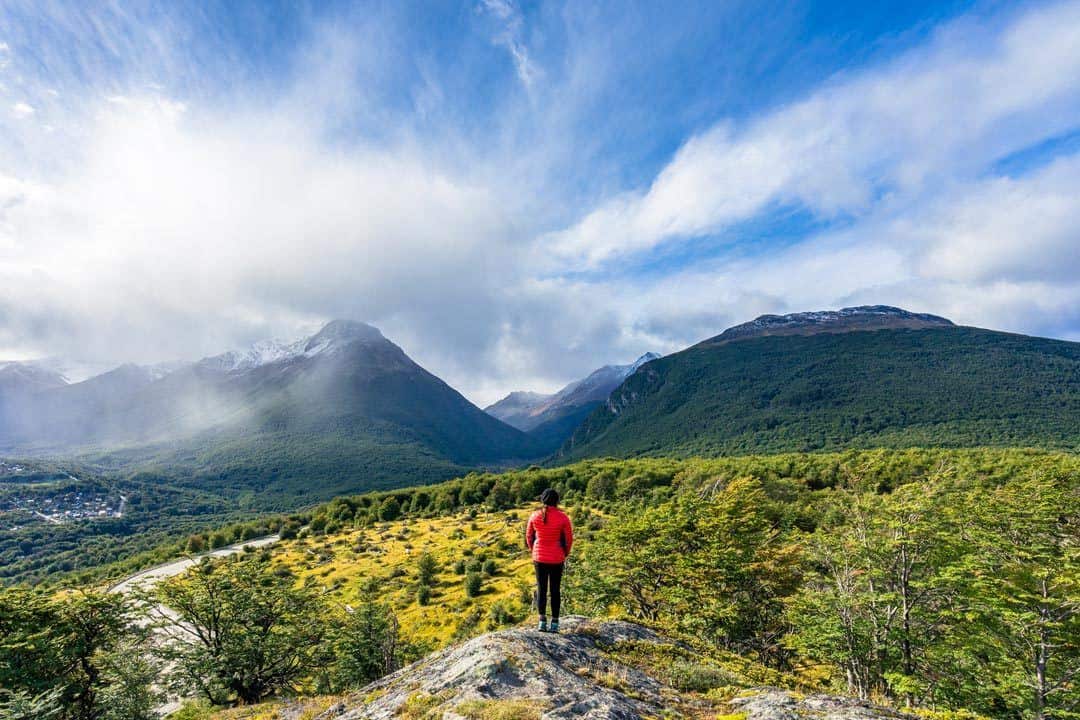
The Best Hikes Along The Carretera Austral
One of the least-visited parts of Patagonia is the long, narrow strip of coastline that makes up the bottom part of Chile.
While most people will make it to Torres del Paine and Puerto Natales , few cross back into the country and continue along the epic highway known as the Carretera Austral.
Public transport is just about non-existent along this long, rugged road, which leaves people to either hitchhike or self-drive between the towns.
When winter comes the place all but shuts down, so that leaves a big part of Chile that not many people see. But that doesn’t mean you shouldn’t check it out!
The Carretera Austral has some insane landscapes and gorgeous mountains and lakes. The coastline is as dramatic as you could imagine, and that all ads up for some amazing hiking!
- Time Required: 4 hours to 2 days (depending on side trips)
- Distance: 8km
- Start / Finish Points: Villa O’Higgins
Patagonia is known for its spectacular glacial landscapes and what better opportunity than to view them by hiking the Laguna Tigre Sur, a moderately difficult hike into some of the most densely populated region of glaciers.
This particular hike is best undertaken with the expertise of a local guide due to it being slightly confusing in regards to finding the correct track to take.
But don’t let that put you off visiting this glaciated area, as Laguna Tigre Sur offers a look into the wilder side of Patagonia, with the odd tricky ridge walk leading you to nearly undiscovered views, glaciers and mountain peaks.
High above the Glaciar Tigre is the Cordon Nevado where chilling winds and extreme temperatures can make things difficult so come prepared for the cold.
There are two side trips to choose from or you can do both with camping spots available. The first side trip leads to the base of the larger Glaciar Tigre Sur where wild flowers thrive in small pockets.
There are a few sections which require the use of your hands to navigate smaller gaps in the larger boulders. At the end of the trail its icebergs galore! Allow 2 hours for this side trip.
The 2 nd side trip continues onto the smaller glacier known as Glaciar Tigre, taking you past large gorges, pristine streams and colourful meadows. Allow 3 hours for this side trip and return the same way you came.
- Time Required: 2 days
- Start / Finish Points: Villa O’Higgins
Similar to what Laguna Tigre Sur provides in terms of glacial views, Valle Rio Moscu is an easy walk generally hiked in 2 days in order to explore a heavily glaciated valley towered by Patagonia’s famous jagged mountain tops.
Hiking at Valle Rio Moscu has a few tricky components such as small stream crossings, best to be taken when the river is low (check with local guides when this is).
The Rio Moscu is a fast-flowing river fed by smaller streams originating from the Cordon de Villa O’Higgins range, while glacial melt from the Ventisquero Rio Moscu contributes an overwhelming amount of water to the raging river.
Ideally it’s best to spend 2 days in the valley as you can explore a spectacular frozen world sitting high in the mountains above.
Camping is available at Refugio Rio Moscu, approximately halfway along the Rio Moscu.
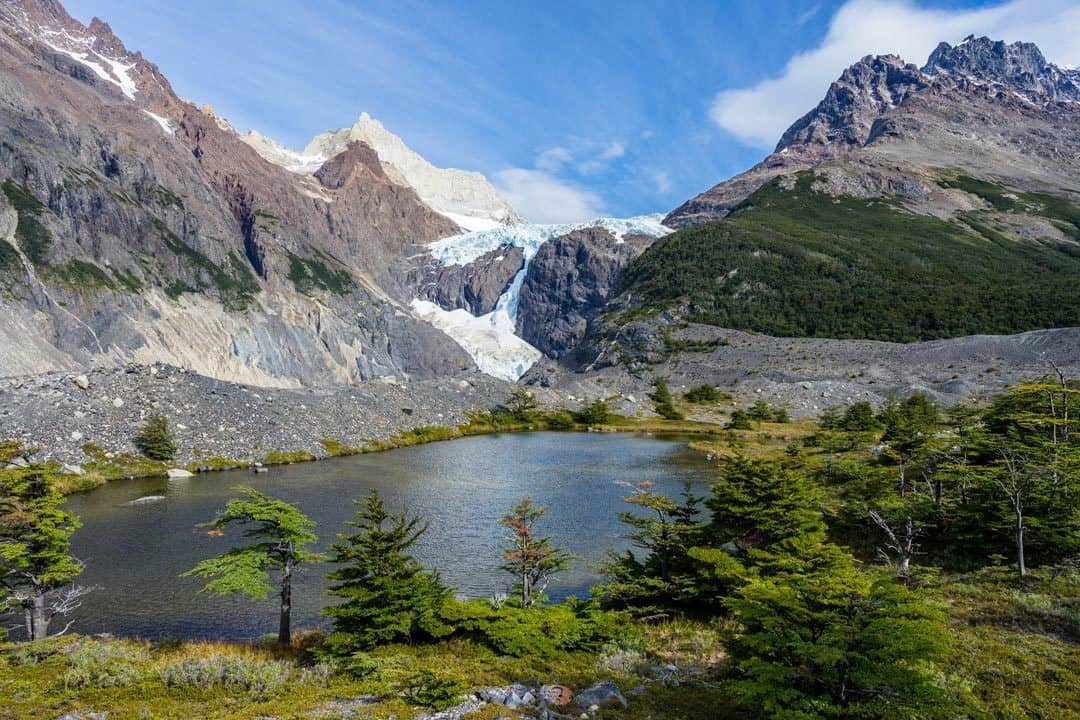
- Days Required: 4 days
- Distance: 62km
- Difficulty: Moderate to demanding
- Start / Finish Points: Las Horquetas Grandes to Villa Cerro Castillo
This 4-day trek will take you through majestic alpine landscapes guaranteed to lead you to plummeting waterfalls, isolated glaciers tucked away into the mountainous backdrops which you will find yourself immersed.
Cerro Castillo is a culmination of everything you think Patagonia is, all jam packed into this one epic Patagonian trek.
It will put you to the test with river crossings in freezing glacial waters, and parts of it needing spot-on navigational skills. Although tracks are well-trodden, they can be impeded by Patagonia’s wild untamed weather.
The whole hike consists of weaving in and out of a valley where mountains range from 1500 metres to a massive 2,675 metres of Cerro Castillo.
Camping is available the whole way along the trek, allowing you to take your time on one of Patagonia’s lesser known hikes which is increasing in popularity.
To gain a different perspective of Cerro Castillo, opt for the side trip into Upper Valle Parada, adding an additional 3 kilometres to your trek, where small lakes such as Laguna Duff remain hidden gems and well worth the extra few hours’ efforts.
The hike finishes at Villa Cerro Castillo, which can be taken by following either the Rio Ibanez or the adjacent path at Morro Rojo peak.
- Days Required: 1 to 2 hours
- Distance: 3.5km
- Start / Finish Points: Caleta Gonzalo
Pumalin Park is one of the world’s most remarkable nature reserves, not just because it is absolutely stunning, but because it would have been wiped off the planet if it wasn’t for a one awesome human being.
Doug Tompkins, the founder of the adventure gear company North Face, bought 400’000 hectares of land that was under threat from logging companies and turned it into a privately-owned by public-accessed park.
He later donated it to the Chilean government under the condition it would continue to be protected. The government agreed, adding more land to it, and today it is South America’s largest national park.
Pumalin Park can be kayaked if you prefer water, as 4 to 10-day kayak trips are available in this stunning part of the world.
However this article is all about hiking in Patagonia, so your best bet is to go for either those shorter hikes taking up to 30 minutes to the more demanding 8-hour plus hikes.
Cascadas is the one to go for as it showcases (as the name suggests) ‘cascading’ waterfalls. You will have to navigate through dense forests and wobbly wooden bridges and ladders before you reach the prize at the end of the trail, being the majestic Cascadas Bajas waterfall.
Camping is available at Rio Gonzalo.
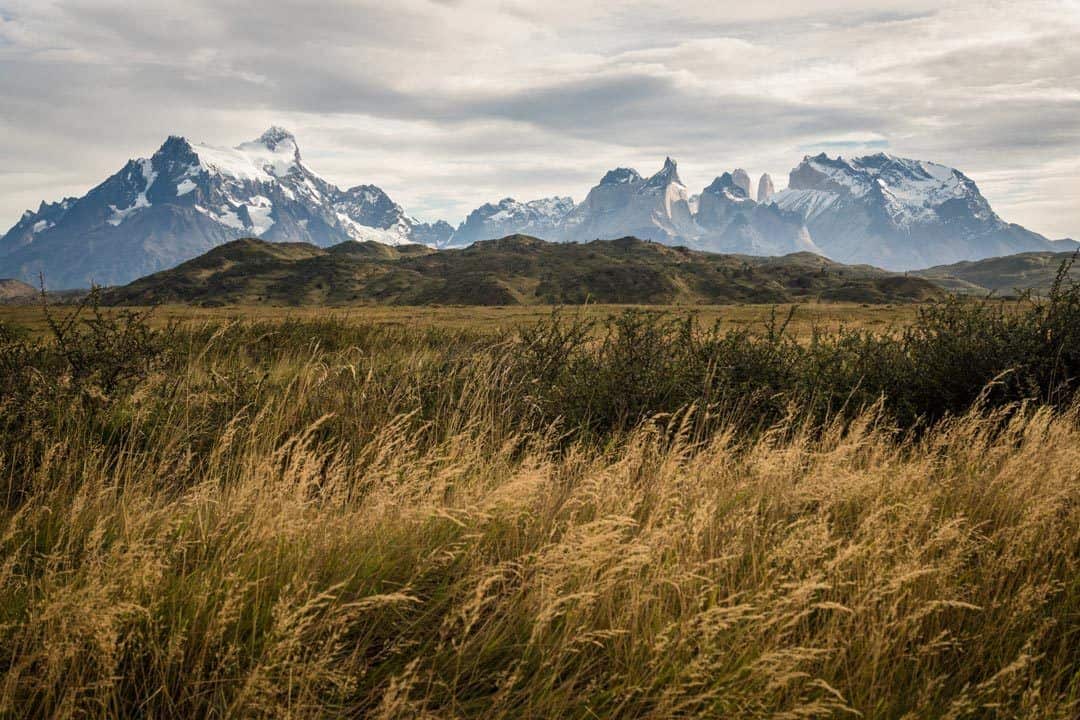
The Ultimate Trekking in Patagonia Packing List
Patagonia is certainly one of the most extreme, potentially harsh climates on earth, therefore it’s necessary to be prepared for all conditions months before you venture to the South American continent.
Hiking gear in Patagonia is quite expensive therefore it’s better to have your gear sorted before you travel to your destination. This packing list for hiking in Patagonia should give you a good idea on what to bring.
- Good quality, lightweight tent. Check out our guide to the best backpacking tents to find one that suits your style and budget.
- Thermal layering including top and pants
- Hiking pants, both long and short, or get convertible pants. These should be waterproof, otherwise get a pair of slip-over waterproof pants as well
- Gore-Tex (waterproof) hiking boots
- Quality backpack for hiking
- Down jacket – these puffy jackets are essential for keeping your torso warm
- Rain and wind jacket – make sure you get a quality jacket that doesn’t leak
- Sleeping bag and silk liner – The warmer the sleeping bag the better
- Cold weather gloves – you will need waterproof gloves aswell as a pair of inner gloves to keep your fingers warm
- Plenty of socks (dry socks are the best)
- A beanie – keeping your head warm is essential
- Hiking poles – if you’re carrying a heavy bag, hiking poles will help you balance. They also provide support for your knees.
- Ability to carry sufficient water (5 litres is ideal)
- Food to last the entire hike. You can pre-order food in some of the refugios in Torres del Paine, but that’s about it. Better to be over-prepared and over-fed then the other way around when hiking.
[box] Have you ever been hiking in Patagonia? Leave a comment below and tell us what your favourite trek was![/box]
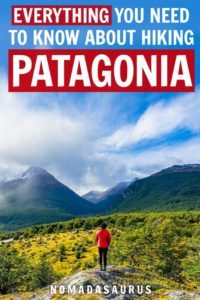
Calumn Hockey
Hi, We’re Alesha and Jarryd!

We’ve been traveling the world together since 2008, searching for the planet’s best destinations and adventures.
Love Travel?
Sign up for our free weekly newsletter for the best travel tips, ideas and deals!
We respect your privacy. Unsubscribe at any time.
READ MORE...
The Best Time To Visit Antarctica – Month By Month Breakdown
Siyam World Review – The Best 5-Star Resort in the Maldives
Sun Siyam Iru Fushi Review – 5-Star Luxury in the Maldives
Related Posts
Gopro hero 9 review – is it still worth it in 2024, jyrgalan – our favourite place in kyrgyzstan, the ultimate guide to hiking the overland track in tasmania, the mongol rally diaries – week 1: switzerland to turkey, 18 thoughts on “hiking in patagonia – the ultimate guide to the best treks”.
Happy to read your post. I found your blog is very useful and informative. Thank you for sharing with us.
Actually, I am planning to hike in Patagonia in December. I hope I will have good weather. I loved your article; fascinating and helpful.
Patagonia is such a special place. Hope you get good weather. Even if you don’t it is still so beautiful in the rain or snow. Happy travels
Why you keep lying that Patagonia is chilean? Patagonia is ONLY on the Argentinian side (EAST of Los Andes.
Mt. Fitz has been high on our list since we saw Tommy Caldwell and Alex Honnold do the traverse there. I don’t think we’re up to the standards of the traverse but we’d definitely like to do some hiking around there, looks epic!
Great article guys, thanks!
Glad you enjoyed the article. Hope you get to climb Mt Fitz one day. 🙂
Great work guys, will definitely follow you in instagram, could you recommend some good travel companies who can help me with these hiking circuits, will be a solo traveller.
Hi Basu, thank you so much. We did our hikes through Eco Camp and they were brilliant. They have nice accommodation. We did not go with any other agent. 🙂
Thanks for this comprehensive list of treks near El Chalten. Could you tell me how is the biking scene in the town? I am a cyclist and love to ride in new places I visit. I was planning to take my bike on my trip to El Chalten, but not sure if it will be a good idea.
Glad this article could help. We didn’t go biking ourselves in El Chalten so we can not say about the treks. We are sure there is some in the area. If you contact one of the adventure tour companies they may be able to help. All the best and have a great time.
Fantastic blog! For the short hikes ie. <5 hours, are the trails easy to follow or well marked or do we need to know how to navigate? Thank you!
Thank you so much. Yes the paths are easy to follow and there are signage. You do have to have your own wheels to get to some of the hikes as the tourist shuttle doesn’t go near the beginning of them. Have a great time
This was great! Thanks! I know the answer to this, but I’m going to ask it anyways. Since there are camping spots along the way, are there toilets? Should we buy biodegradable TP for the day hikes?
Hi Sam, there are toilets at the campgrounds. Surprisingly all of them are flush toilets. Toilet paper is provided but always bring your own as the toilets run out. When you are hiking and need to use the bush toilet. Please bury your business and pick up your toilet paper. Thanks
Great Post, looking forward to exploring Patagonia.
Thank you so much
Love your blog 🙂 I wish I had more money to travel, cos nothing is better then collecting memories while traveling.
Thank you so much Miljan. Collecting memories is beautiful
Leave a comment Cancel reply
Save my name, email, and website in this browser for the next time I comment.

Hiking The W Trek In Patagonia: A Self-Guided Itinerary [2024-25]
09 jul 2024 11 nov 2023 | danielle.
You can choose your own adventure when it comes to trekking in Chile, but if you like to plan ahead, here’s our tried-and-tested 5 day/4 night, east-to-west, self-guided itinerary for hiking the W Trek Patagonia .
Last updated on 9 July 2024 by Dan
Torres del Paine National Park is a place so epic and otherworldly, its name is often spoken with a kind of hushed reverence. This vast and dramatic stretch of Chilean Patagonia is home to some of the most mind-blowingly beautiful scenery on Earth, and hiking the W trek is one of the greatest ways to immerse in it.
This is Patagonian hiking at its very best, but how you trek the W trail is entirely up to you .
You can go with a guide, or do the W trek self guided (in the warmer months anyway). You can stay in lodges and enjoy a cooked meal and a warm bed. You can carry your own gear and pitch your tent in one of the designated campsites along the way, or carry no gear and book a tent at each site. You can carry all your food, or add a half or full board meal package to your booking, or do a bit of both.
We opted to camp but rather than carry all the gear, we arranged for a pitched tent to be waiting for us each day. We packed food for most of the trek and booked a full board meal package (dinner, breakfast and packed lunch) at one of our overnight camping stays.
The direction you hike and the time you take to do the trek is also your call. As occasional hikers with temperamental knees, we opted for the typical self guided W trek itinerary of 5 days and 4 nights .
Many argue that hiking west to east, and saving the striking granite peaks of Las Torres for the last day is a fitting finale to this incredible hike. We took the opposite view though, starting with the awe-inspiring torres and hiking the W trek east to west so that we could tackle the toughest legs of the trail in the first couple of days, while we still had plenty of energy.
At the end of the day, no matter how you take on the W hike, you’re still trekking one of the most spectacular trails on the planet. And you’ll still get to enjoy the jaw-dropping vista of Las Torres. Twice even, if you’re keen.
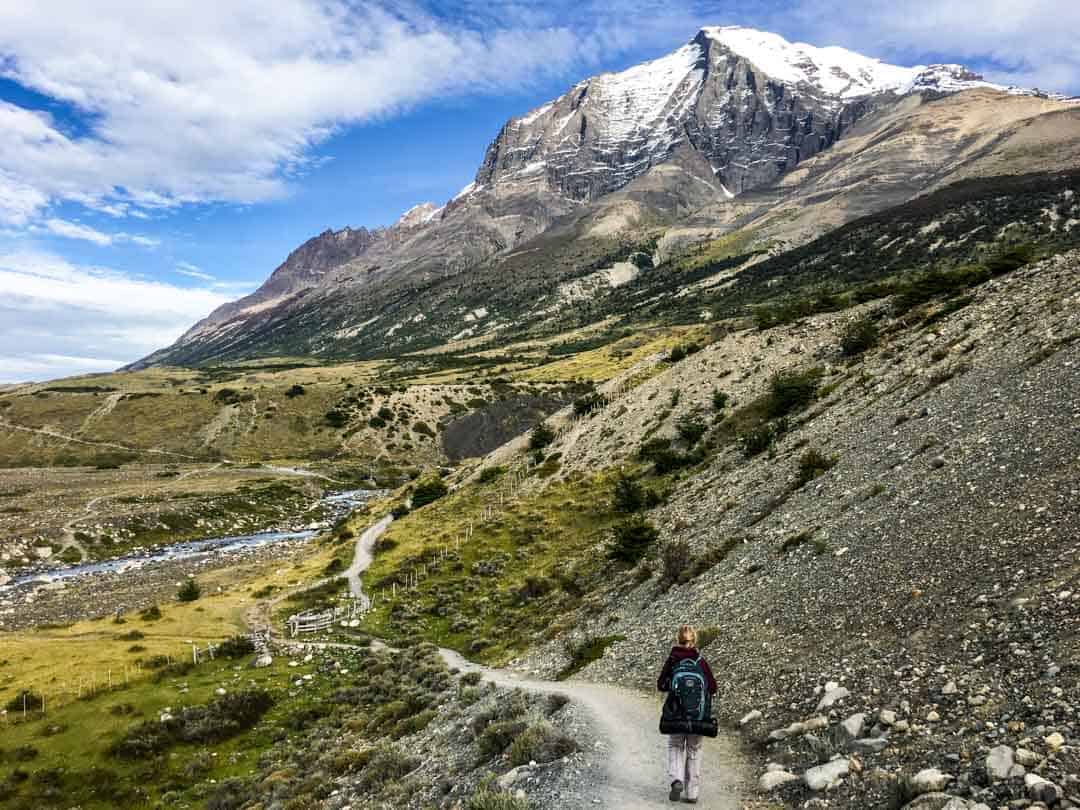
Hiking the W Trek Snapshot Location: Torres del Paine National Park, Chile Nearest town: Puerto Natales, Chile Getting to and from the park: Torres del Paine is easily accessible by bus from Puerto Natales. Park entry: Park entry tickets and overnight stays in the park (campsites and lodges) must be arranged before visiting the park. Start and finish: The W Trek traverses a roughly w-shaped route through Torres del Paine National Park between Refugio Las Torres in the east and Refugio Paine Grande in the west. For this itinerary, we start in the east and hike west. Distance: appx. 74 kilometres (46 miles) one-way Time: This itinerary is 5 days and 4 nights Difficulty: Moderately difficult, with some challenging stretches and steep climbs, plus highly changeable weather. We’re occasional hikers but with some preparation and a reasonable level of fitness, we found the W Trek very do-able (even if all our muscles were screaming for days afterwards!).
What’s in this post?
Preparing for hiking the W Trek Patagonia What time of year is best for hiking the W? Where to stay before and after the trek Entry to Torres del Paine National Park Booking Camping and Accommodation on the W Trail Bus tickets to and from Torres del Paine Packing for the W Trek Our Self-guided itinerary for hiking the W Trail Day 1 – Puerto Natales to Chileno via Las Torres Day 2 – Chileno to Francés Day 3 – Francés to Paine Grande via Francés Valley Day 4 – Paine Grande to Grey Day 5 – Grey to Paine Grande (and return to Puerto Natales)
This post contains affiliate links. If you choose to purchase through these links we may receive a small commission, at no extra cost to you, which helps us to keep this website running. Thanks for your support!
Preparing for hiking the W Trek Patagonia
We aim to fully check and refresh this post for each trekking high season (October to April). Things can change without notice though, so we recommend also visiting the links below for information while you’re planning and before you go:
- For the latest updates on requirements for travel to Chile, visit the official Chile tourism website .
- The W Trek is in Torres del Paine National Park, which is managed by the park agency CONAF. Visit the official national park website for park reports, park entry information and more.
- When you arrive at Torres del Pine National Park and register for your trek, you’ll receive an information guide with a map showing the park’s trails, services and accommodations. The current brochure can be found here .
What time of year is best for hiking the W?
Patagonian weather will keep you on your toes no matter when you visit Torres del Paine National Park. Be ready for everything. However, there are two distinct periods to be aware of when planning your trip.
High Season – October to April
These are the warmer months in the southern hemisphere, and December to March is the busiest time of year to trek in the park, with visitation peaking over January and February. During this period, you can choose to do a self-guided hike or go with a guide .
If you’re travelling in high season, and particularly if you’re planning to visit during the peak months, be sure to reserve your place in the lodges or campgrounds as far in advance as possible . Torres del Paine is now one of the most popular places to trek in Chile and overnight places book up very quickly.
We hiked the W trail towards the end of March, and while sections were busy, like the path to Las Torres, there were stretches where we wouldn’t see more than a handful of people in hours.
That said, despite making our campsite reservations months prior to our visit, we initially struggled to find availability and had to change our trekking dates to suit what we were able to book.
Low Season – May to September
Many people say winter is even more magical in Torres del Paine.
The park entry fee drops during the low season and you’ll find far fewer people in the park. But temps will also be lower, daylight hours are shorter, rain is frequent and there can be snow and ice. Many of the mountain trails are closed, as are a number of the mountain lodges and services. Trails that are open can close suddenly due to weather (though that can happen at any time of the year). Transport services pause over this period as well.
Most importantly, to do the W Trek or hike to the base of Las Torres during the winter season, you must have a qualified guide . This is for visitor safety and the period typically runs from May until August/September. The O circuit remains closed until October. Check the official Torres del Paine website for more information if you’re planning to visit over this time.
The bottom line: No matter what time of year you visit Torres del Paine, given the changeability of the weather there, you should check in with park agency CONAF for latest updates and closures.
Where to stay before and after the trek
The nearest major population centre, and the main jump-off point for a Torres del Paine trek is Puerto Natales , a low-key Patagonian town hugging the shores of the picturesque Última Esperanza Sound.
The drawcard of Torres del Paine’s trails has seen Puerto Natales develop a buzzing trekker scene.
We suggest giving yourself a couple of days in Puerto Natales before your trek to get organised, shop, hire any gear you need, and sort out transport to and from Torres del Paine if you haven’t already (see our section on sorting out bus tickets further on).
Just about everyone staying in Puerto Natales is out and about doing the same thing, so having extra time in town means you can stress less if you don’t find what you’re looking for in the first place you visit.
Spending a couple of days here after your trek is also worthwhile – you can rest your weary bones and enjoy this charming little town.
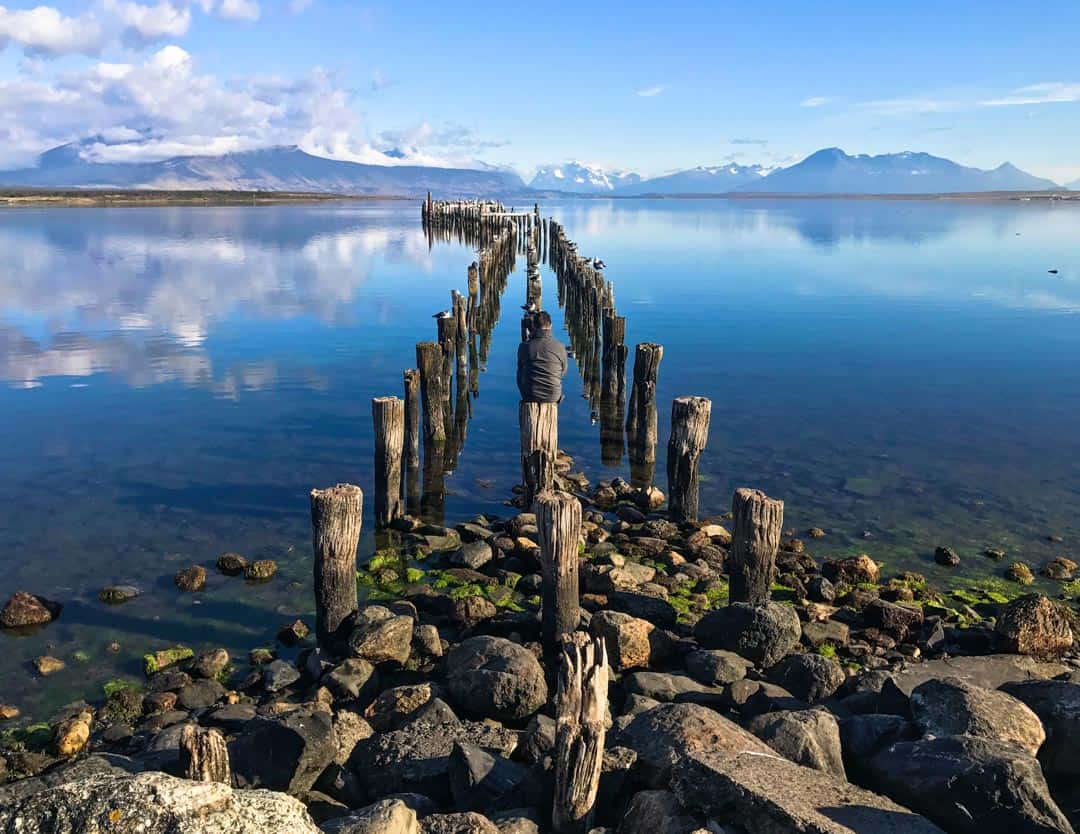
Accommodation in Puerto Natales
Puerto Natales isn’t a big place, but you’ll find everything from budget hostels through to five-star luxury in and around the town.
We stayed at the charming, centrally-located Hotel Aquaterra both before and after our trek. This is a great mid-range option and we really enjoyed our time here. They also stored our luggage for us while we were on the trail.
For more accommodation options like this in Puerto Natales, take a look at Booking.com . Or, if you’re after something more in the budget range, you’ll find various hostel options here .
For a lovely upmarket stay right in the centre of town before or after your trek, check out this place .
We’ve also got our eye on this unique domed apartment for a future trip. It’s about eight kilometres (five miles) out of town, but with the views it serves up, we wouldn’t be moving from the window seats anyway. Perfect for a post-trek, legs-up retreat!
Entry to Torres del Paine National Park
Entry to Torres del Paine National Park is ticketed and there are capacity limits in the mountain lodges and campgrounds. This is for the long-term care and protection of this wild and remote place, and for the safety of visitors to the park. So whether you’re planning to hike the W, trek the O circuit or visit for the day, you will need a ticket to get into the park.
You must buy your entrance ticket for Torres del Paine National Park in advance of your visit to the park. Visit the CONAF website to buy your park entry ticket .
Entry fees vary depending on whether you are Chilean or international, as well as your age, and whether you intend to stay in the park up to, or more than, three days. At last check, international adults 18 and over will pay CLP$31,200 (CLP is Chilean pesos) for up to three days in the park, and CLP$44,500 for more than three days.
Download your ticket to your phone before you head to the park (there’s very limited internet access once you’re there) and carry a printed copy just in case. Bring ID as well to present along with your ticket when you check in at the park.
Booking Camping and Accommodation on the W Trail
There are various ways to stay overnight on the W trek in Torres del Paine National Park, but whether you’re planning a lodge stay, hiring camping equipment, or camping with all your own gear, you’ll need advance reservations to do so.
Overnight reservations are mandatory for Torres del Paine and, like park entry tickets, need to be made in advance . You cannot book camping or accommodation once you’re at the park, or camp outside the designated bookable camping zones.
You’ll also need to carry evidence of your overnight reservations as you may be asked to show proof at any time by a park ranger or when passing through checkpoints. We printed our reservation confirmations and carried these with us.
With Torres del Paine trekking becoming ever more popular, limited accommodation spots and advance booking necessary, sorting out campsites or lodge accommodation is – in our experience – probably the trickiest part of planning a self guided W trek itinerary.
For this reason, we recommend booking your overnight stays as far in advance as possible , preferably as soon as bookings open for the season.
It also pays to be flexible about where you stay, as you may find you need to rework your trekking dates and approach based on what’s available.
Our final W trail hiking itinerary was the direct result of where and when we could get an overnight booking.
How to book your overnight stays in the park
There are a number of mountain lodges (refuges) and campsites in Torres del Paine, and you can only stay overnight in these designated zones.
Broadly speaking, the zones in the east are managed by Las Torres Patagonia (formerly Fantástico Sur) and those in the west are managed by Vertice Travel .
There also used to be a couple of free campgrounds in the park managed by the Chilean park agency, CONAF. However, these campgrounds have been closed for several years now. Visit the CONAF website for updates.
You can book campsites and refugio beds direct via the Las Torres Patagonia and Vertice Travel websites, however we know from experience that trying to align availability and book spots for a workable W circuit itinerary across different websites can be complicated and time-consuming. Another reason to plan well ahead.
We’re also aware of a website called Booking Patagonia, which offers an integrated booking system for travel, tickets and accommodation for Torres del Paine.
If you’re keen to go self-guided on the W, but you’d like to have someone else sort out the logistics of your trek, including transport, accommodation, meals and camping gear, check out these two options offered by Flashpacker Connect: 5-day W Trek self-guided camping trip and this 5-day W Trek self-guided refugios (lodges) trip .
Bus tickets to and from Torres del Paine National Park
We based ourselves in Puerto Natales, the nearest town to Torres del Paine, before and after our trek and most travellers do the same. From Puerto Natales, it’s an easy bus trip to and from the park.
If you’re travelling by bus, we recommend organising your bus tickets to and from Torres del Paine well in advance . Don’t leave this until the day you head to the park or you may find the buses already full.
If you plan to buy your tickets when you arrive in Puerto Natales, aim to do so as soon as you arrive in town. You can buy bus tickets at the main bus station (Terminal Rodoviario), or through your hotel or hostel. We travelled to Puerto Natales by bus so we bought our tickets to Torres del Paine at the bus station the day we arrived. You can also search bus services and buy tickets online here .
It’s important to note that your bus drop-off/pick-up points at the park may vary depending on your final W trail itinerary, so keep this in mind when booking your bus ticket.
If you follow this itinerary and trek from east to west, you’ll start with the bus from Puerto Natales to Laguna Armaga . After your trek, you will board the bus at Pudeto for the return journey to Puerto Natales (this follows a catamaran ride across Lake Pehoe to Pudeto from Paine Grande). Vice versa if you’re hiking the W from west to east.
To ensure you’re on the trail in good time (and in line with this itinerary), we recommend booking one of the earliest buses out of Puerto Natales on Day 1.
Packing for the W Trek
Any hike, but especially a multi-day hike, can quickly lose its appeal if you’re carrying too much weight in your pack; something we can personally attest to. So we strongly recommend packing light and only carrying the clothes, gear and food you need for the trek.
If you’re travelling longer term and have more stuff with you – which was our situation – leave it in storage at your hotel. Your back will thank you for it.
You can find most of what you need to buy or rent in Puerto Natales for hiking into the surrounding landscapes, from sleeping bags, camping stoves and hiking poles to dried fruit and nuts for your trail mix.
That said, this is a small and relatively remote town and the local prices reflect it. We’re told there’s more choice and better prices at the supermarkets and shops in Punta Arenas, so if you’re coming from or via Punta Arenas, you might consider doing your trek shopping while in that town.
We’ve also read reports that it hasn’t been so easy to find dehydrated meals in Puerto Natales. If you’re planning your menu around these, you might think about sourcing them elsewhere.
It’s important to know that Chile has stringent rules around what foods you can and can’t bring into the country (fresh foods, fruits, honey, etc are a no-no). Be sure to declare any foodstuffs you do bring in and plan on buying most of what you need for trek meals and snacks once you’re in the country.
We had a tight meal plan for our spin on the W, but with hindsight, we would swap out some of the bulkier food stuffs we packed for lighter, more compact foods. Next visit, we’ll be looking to pack some dehydrated camping meals and light-weight but filling carbs like cous cous and oats.
The night before the trek, organise any food you’re carrying into daily packages of brekkie, lunch and dinner. Pre-bundling your meals saves scrabbling around in your pack for particular items on the trail). Then pack all the gear you’ll be taking with you in waterproof bags inside your backpack.
Cash, pesos or credit card? One question we get asked is whether to carry US dollars or Chilean pesos into the park, and whether the refuges accept credit cards. We carried all three. We paid for some things in pesos, like snacks and the shuttle to the trail head, and other things in USD, like the catamaran from Paine Grande to Pudeto. We also used our credit card at one of the refuges to buy drinks. It’s our understanding that all of the refuges accept credit cards.
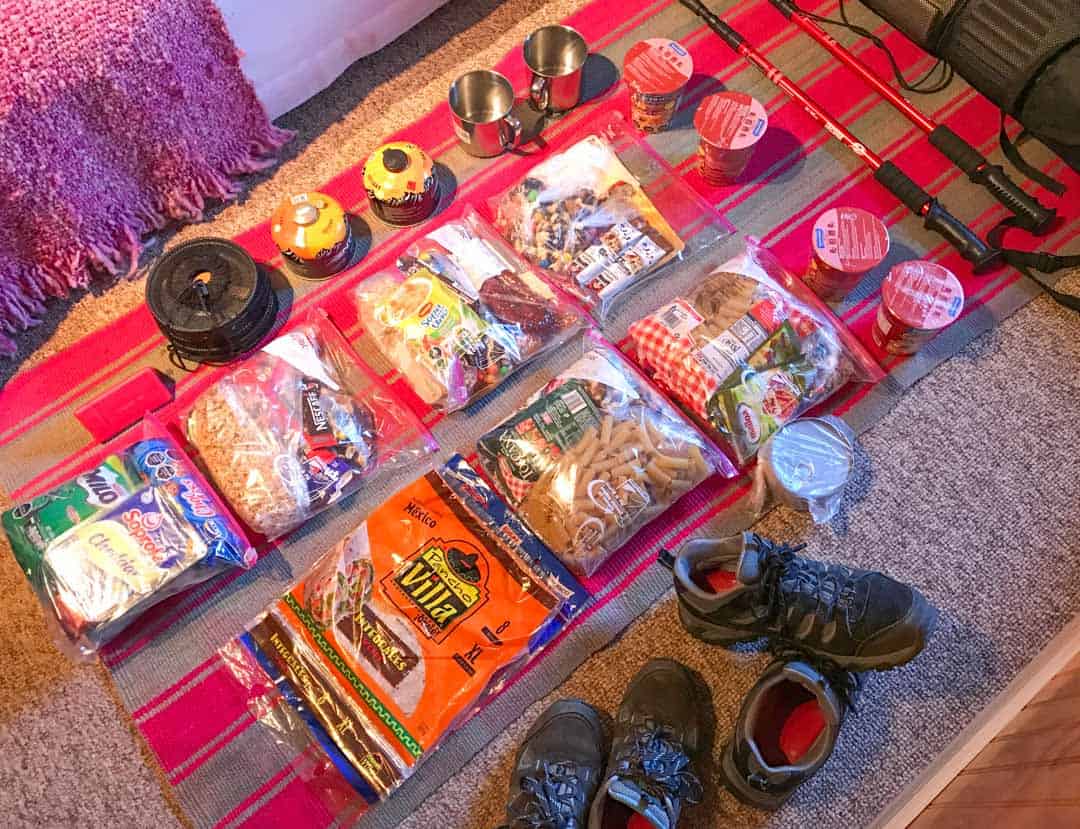
Our self-guided itinerary for hiking the W Trail
Day 1 – puerto natales to chileno via las torres, total distance: appx. 13.8 km (8.5 miles) total time: appx. 8 hours overnight: camping chileno.
Let’s get trekking! Hopefully you’ve secured your seat on one of the earliest buses out of Puerto Natales this morning (see above regarding buying your bus tickets in advance).
Buses making the run to Torres del Paine National Park generally depart from Terminal Rodoviario in town. Find your bus and load your pack, then kick back until it’s time to go. It’s around two hours to Laguna Amarga, the gateway to Torres del Paine National Park, so settle in, this is a perfect excuse to grab some extra sleep before starting the hike.
When you arrive at the Laguna Amarga Ranger Station, have your pre-purchased park entry ticket ready on your mobile phone or bring a printout. Here, you’ll check in and receive information about visiting the park, and its rules and regulations.
Don’t forget to buy your entrance ticket for Torres del Paine before you head to the park . Head to the CONAF website for more information .
At Laguna Amarga, hikers split into two groups: those starting their journey here at the eastern end of the park, and those heading to the western starting point at Paine Grande, which involves a further bus trip to Pudeto and a catamaran ride across Lake Pehoé (even if you’re hiking west to east, you’ll get off the bus here to check in before reboarding the bus for Pudeto).
If, like us, you’re hiking the W from east to west , your next step after check in is to jump aboard the Hotel Las Torres public shuttle bus from Laguna Amarga to the Welcome Centre and the eastern starting point of the trek. This costs around US$5 per person and is paid in cash as you board (we paid this in pesos).
Alternatively, you can start your hike here from Laguna Amarga. The shuttle will just spare you a dusty seven kilometre walk along the gravel road.
There’s a toilet at Laguna Amarga, and another at the Welcome Centre. This is a good chance to go before setting off into the mountains.
Trekking tip: We booked our first night’s accommodation at Camping Chileno, which is en route to today’s main destination – the towering granite peaks of Las Torres. We’ll be checking in at Chileno on the way and dropping off our packs ahead of the steep and challenging climb to the Las Torres mirador. If, however, you’ve booked your first night at Hotel Las Torres or Central Refuge and Camping, then we’d suggest dropping off your packs there first, and setting out on today’s hike to Las Torres with a lighter load.
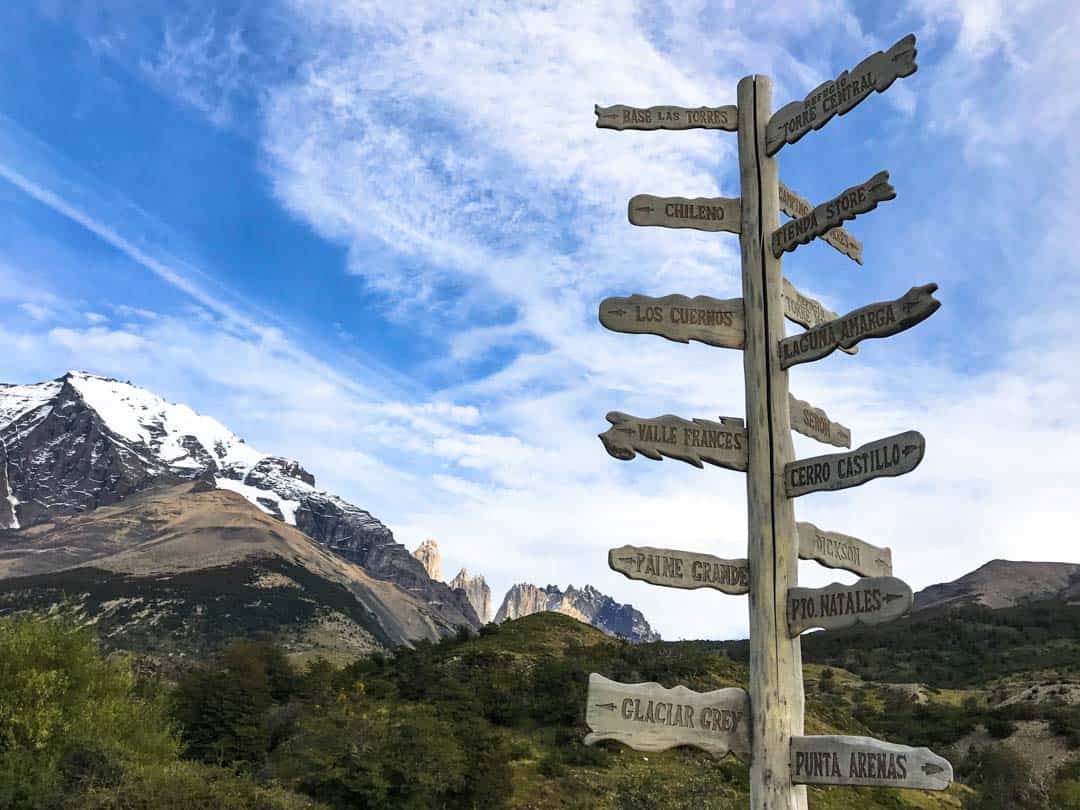
1st Leg: Hotel Las Torres to Chileno ( appx. 5 km / 3.1 miles, around 2 hours)
We’re officially underway on the W trail around 10.30am and from the word go, the views are eye-popping. After a flat kilometre or so, the path starts to climb: get used to it, it’s pretty much uphill from here.
The hike is moderately steep in some spots, until about a kilometre (0.6 miles) or so from Camping Chileno, where the trail flattens out a little before descending into the campground.
Despite feeling like our hearts might explode for much of this first stretch, we cover the distance in around two muscle-busting hours, with frequent stops to take in the views, rehydrate, and give our racing pulses a break.
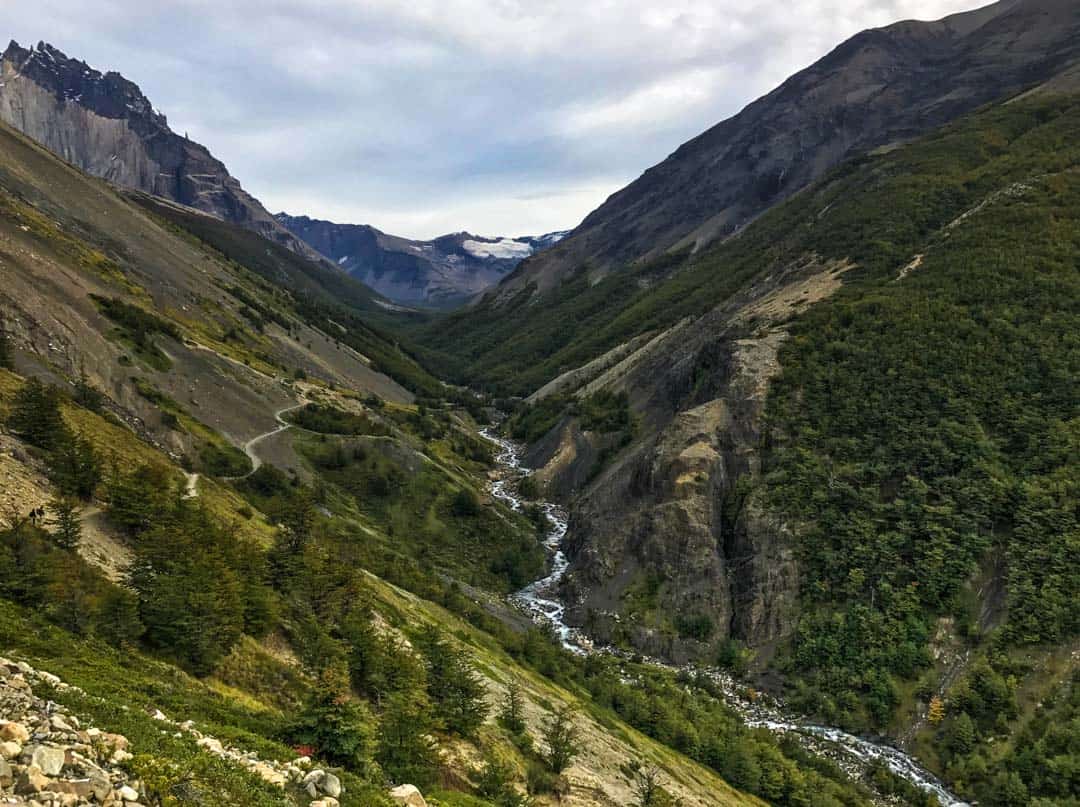
Drinking water There’s no need to lug extra water with you on the Torres del Paine circuit. You’ll pass pristine mountain streams regularly throughout your journey. Bring a water bottle, fill up at nature’s tap and enjoy some of the purest water you’ll ever drink. Just remember to top up well away from the camps and upstream of the trails.
We haul our packs into Chileno around 12.30pm . This campground is operated by Las Torres Patagonia (formerly Fantástico Sur), and is the closest camp you can stay at to the famous Las Torres hike and mirador (the CONAF-managed campground near the base of the Las Torres climb has been closed for some time).
The riverside setting at Chileno is truly stunning and the sheer peaks of the three granite towers – our ultimate goal today – rise tantalisingly above the forested mountains ahead.
The campground itself is a nice set-up of tiered camping platforms among the trees. There are shared bathrooms with hot showers, and a restaurant and bar with big windows, plus an outdoor terrace for soaking up the epic views.
Our tent is ready for us when we arrive at Chileno, so we check in, drop our bags in our tent, grab a smaller pack with snacks, water bottles and cameras, eat the lunch we prepared last night, and set out for Las Torres around 1.30pm . Timings here may vary depending on your check-in.
2nd Leg: Chileno to Las Torres (appx. 4.4 km / 2.7 miles, around 2 hours)
This is without doubt today’s toughest leg, so there’s a huge bonus in not having to tote your full pack up the mountain.
From Chileno, you’ll hike for around 3 kilometres (1.9 miles) or so along a meandering path through pretty woodland, across rushing rivers, and through a wonderfully moody stretch of fallen forest that we dub the ‘tree cemetery’. It’s a lovely, moderate walk, and we have no sense of what’s ahead when we reach the sign that tells us ’45 minutes to Mirador Las Torres’.
My notes from this point in our trek simply state: ‘hiking hell starteth here’. A touch dramatic maybe, but as irregular hikers, this was probably the hardest section of the entire W for us. Maybe you’ll breeze through it, just be ready for it.
Shortly after the sign, the climb to Las Torres begins in earnest. It’s a gritty, rocky terrain of steep, gravelly inclines and large boulders. The panoramas as you climb are absolutely breathtaking, but so is the hike itself. There are moments while we’re in the throes of it, looking up and spotting the tiny trekkers far above, that this stretch feels like it will never end.
It does end though, about an hour later, and the scene that awaits as we round a final boulder and face the towering granite pillars of Las Torres makes every single breath-wrenching step worth it.
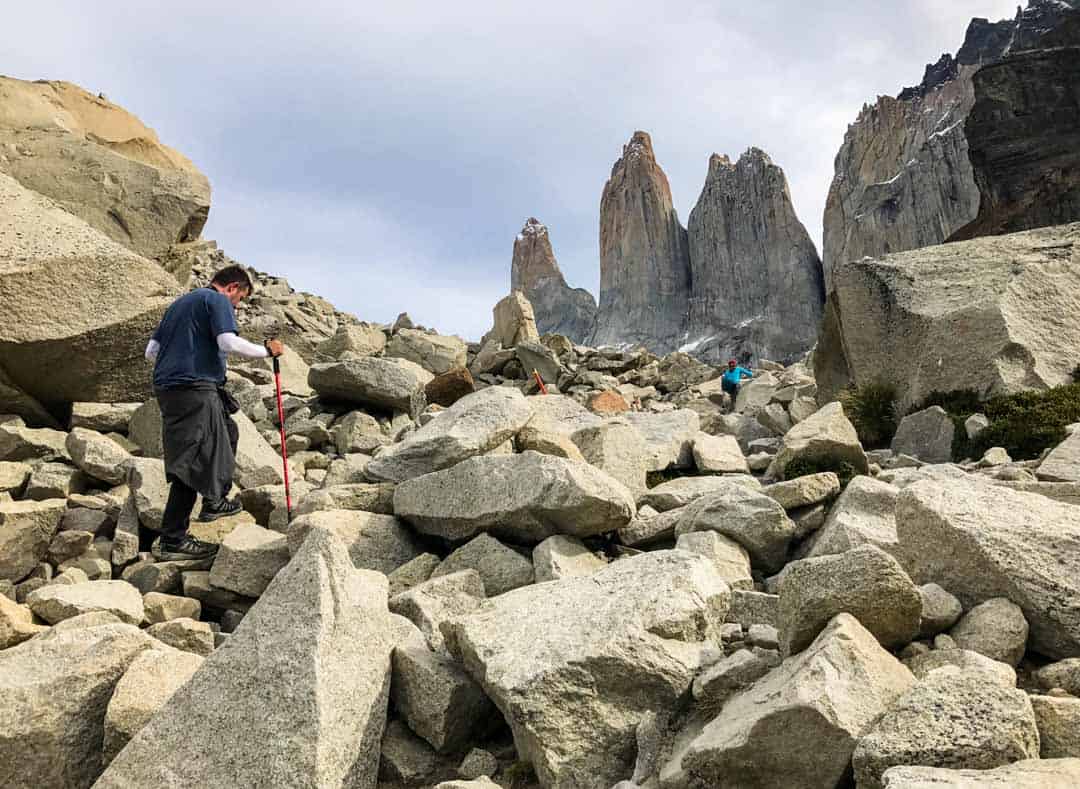
It’s buzzing at the top: hikers drape the rocks surrounding the glacier lake; a bushy-tailed Patagonian fox weaves its way between the boulders; there’s even a guy getting his hair cut at the water’s edge (one hairdresser’s quirky approach to memorialising his travels while promoting his business).
We spend some time taking pics before settling onto a boulder of our own to simply take in this awe-inspiring scene. Aim to spend around an hour at Las Torres .
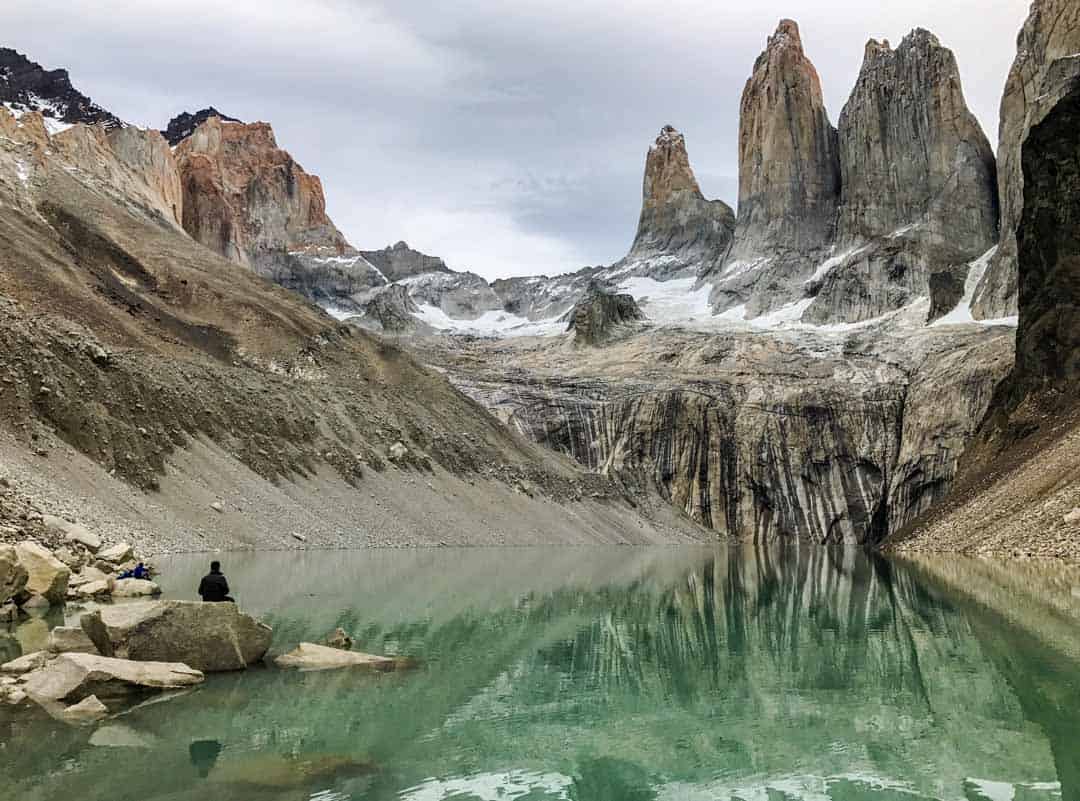
3rd Leg: Las Torres to Chileno (appx. 4.4 km /2.7 miles, around 2 hours)
The journey back down from Las Torres is in some respects even more challenging than the climb up. The constant down is tough on knees and the gravel makes the going slippery. We’re beyond grateful for our hiking poles, though we both still manage to pull off some memorable butt slides.
Trekking tip: Hiking poles made all the difference for us when we were trekking in Patagonia. We carried one each, which was ideal as it left us both with a hand free to grab branches and rocks, haul each other up and down, and catch our fall when we slipped. Which was often.
It takes us around two hours to get back to Chileno; we have time to shower, buy a couple of well-earned beers and watch the sunset burn the tips of Las Torres molten gold.
It was cloudy the entire time we were up at the base of the towers, so watching them all beautifully backlit now is a bit of a kicker, but if there’s one thing you’ll learn quickly hiking the W Patagonia, it’s that the weather doesn’t give a rats what you think.
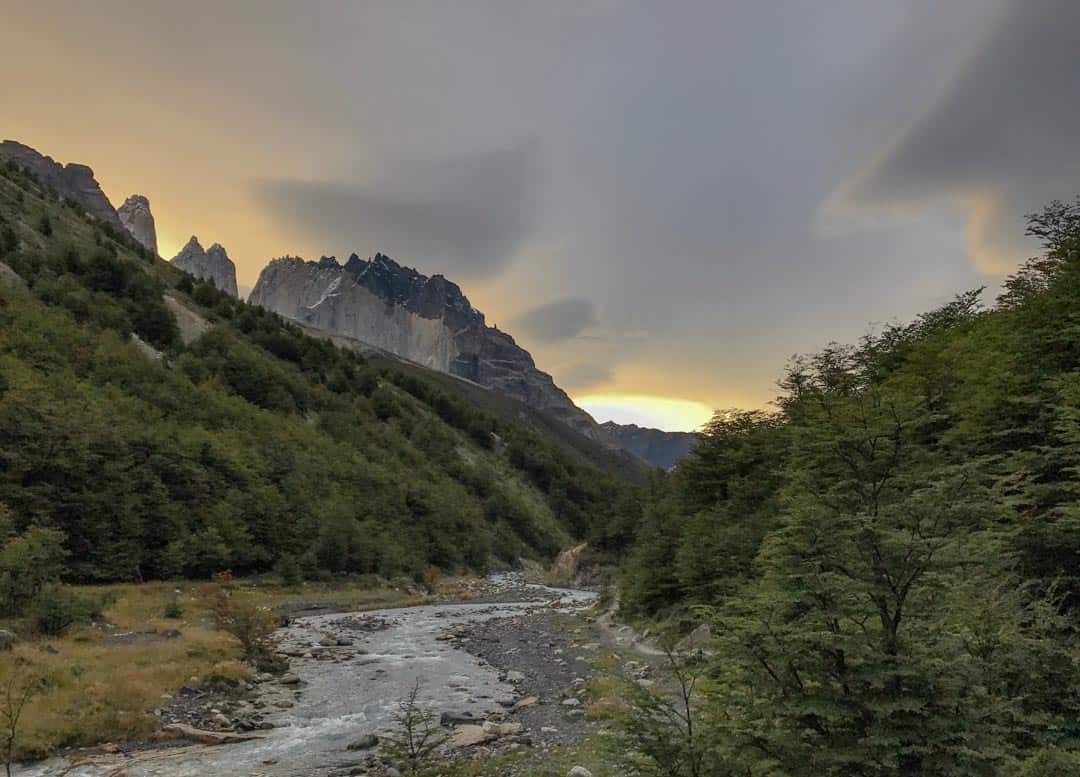
Preparing for Patagonian weather If there’s one constant about the weather in Patagonia, it’s that there’s nothing constant about it. We were particularly lucky on our five days in Torres del Paine, but you should be ready for four seasons in a day. Layer up, have a rain jacket handy, and wear quick-dry clothes. Skip a rain cover for your bag though. While we never experienced the legendary winds that tear through the park from time to time, we heard plenty of stories of pack covers being whipped off suddenly and disappearing into the wilds. Expect to get rained on, and pack your gear in bag liners or waterproof bags inside your backpack instead.
Cooking stoves are not allowed to be used in the Chileno zone, so we opted for the full board food package here, which includes dinner tonight, breakfast tomorrow and a packed lunch to take with us.
Later in the evening, we join a host of other hikers in the restaurant for a surprisingly tasty and filling three-course meal full of protein and carbs.
We’re absolutely wrecked by the end of dinner, and we’re tucked up in our sleeping bags by 9.30pm.
Sunrise at Las Torres When we originally planned our itinerary for hiking the W, we had every intention of doing a second trek to Las Torres for sunrise on Day 2. In late March, this would have entailed getting back on the track up the mountain by 5.30am . As we climbed into our sleeping bags that first night though, we decided to pull the pin: we were just too tired, and we were also a little wary of making the tricky climb in the low dawn light.* It was a tough call at the time, and it didn’t help when we poked our heads out of our tent the next morning to see the stone towers erupting with golden light above the silhouetted foreground. As we watched though, the clouds rolled in and soon enough the peaks were shrouded in mist. There’s no accounting for Patagonian weather, or how your body may feel after a long day of hiking. The best you can do is plan, and be flexible on the day. *PS. For safety reasons, hiking in the dark isn’t actually allowed in Torres del Paine. Trail sections have opening and closing times, check the park brochure for more info.
Day 2 – Chileno to Francés
Total distance: appx. 18 km / 11.2 miles total time: appx. 6 hours 45 minutes overnight: camping francés.
Sunrise is around 8am when we do the W trek in late March, and as we haven’t made the dawn hike to Las Torres, we enjoy a more leisurely start to the morning on Day 2.
If you do decide to do the dawn hike up to Las Torres for sunrise, factor in around five hours this morning and adjust the following timings for today’s next legs accordingly.
As breakfast is part of our full board package at Camping Chileno, we pack up our gear and head to the dining room at 8.30am for a hearty kickstart to the day.
1st Leg: Chileno to Los Cuernos (appx. 15 km / 9.3 miles, around 4.5 hours)
We’re on the trail by 9.15am , heading back towards Hotel Las Torres. We won’t be going all the way to the hotel though as there’s a shortcut off to the right around half-an-hour after leaving Chileno. The shortcut is signposted and takes you along a mostly downward sloping path surrounded by undulating hills and lake views.
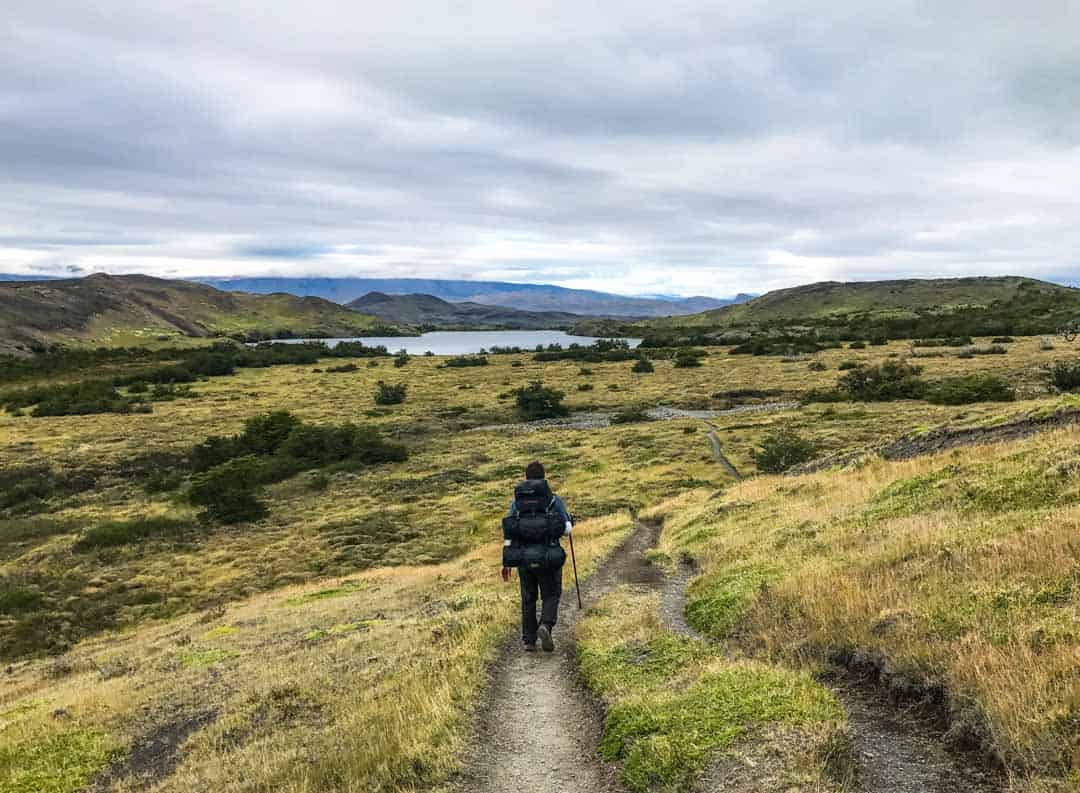
We reach the end of the shortcut and rejoin the main W route around 11am . At some point after this though, we suddenly find ourselves in what can only be described as the Patagonian Swamps of Mordor and we start to wonder whether we’ve veered off on to a secondary trail by mistake.
We can still glimpse the Nordernskjöld Lake off to left, and we know the official trail travels alongside it. To this day, we’re unsure if we did actually go off piste (though the number of bootprints in the mud suggests not).
Eventually, we seem to be back on track according to the map, just a little muddier for the experience (and even more grateful for our depth guage hiking poles).
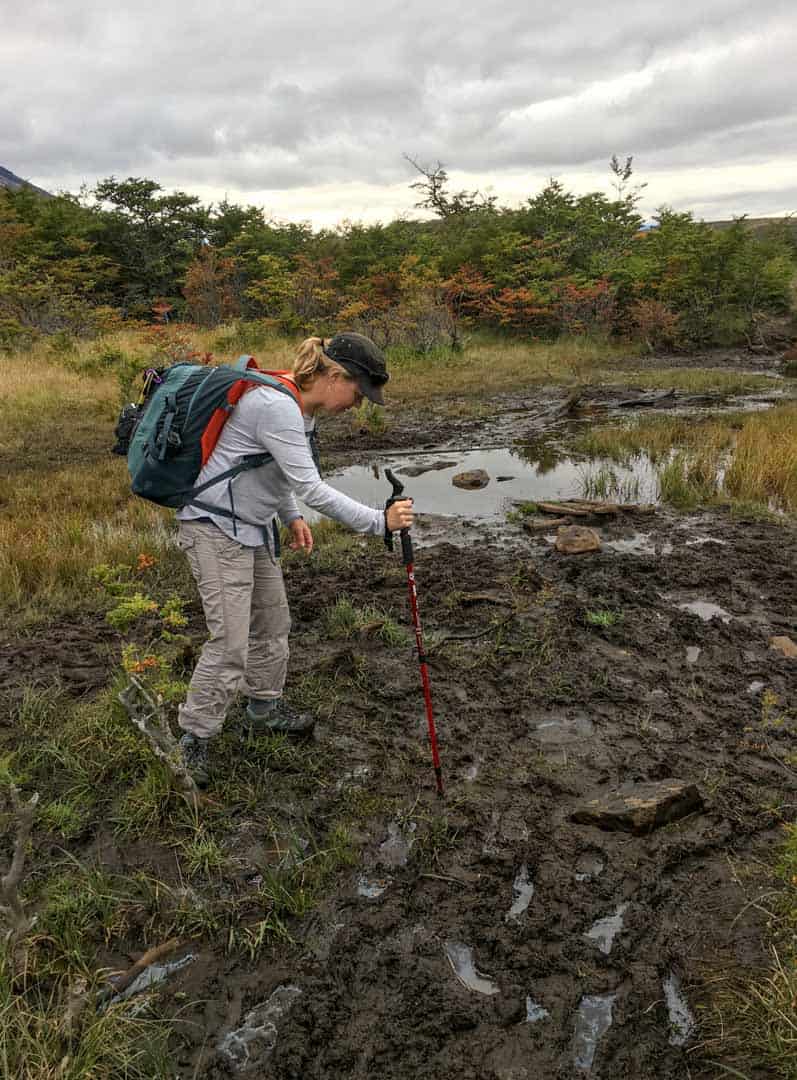
The next stretch travels up and down through very pretty lakeside country, with the occasional steep section, before passing down into the valley at Los Cuernos. We arrive at the Los Cuernos shelter and camping area around 1.45pm .
You could stop at any point along the stretch to Los Cuernos for a lunch break; we stop just past the shelter and find a nice rock with a view. We opted for the full board meal package with Camping Chileno so we’ve been provided with a packed lunch today as part of this.
We chill for around 45 minutes and then set off around 2.30pm for Camping Francés , where we’ll be staying tonight.
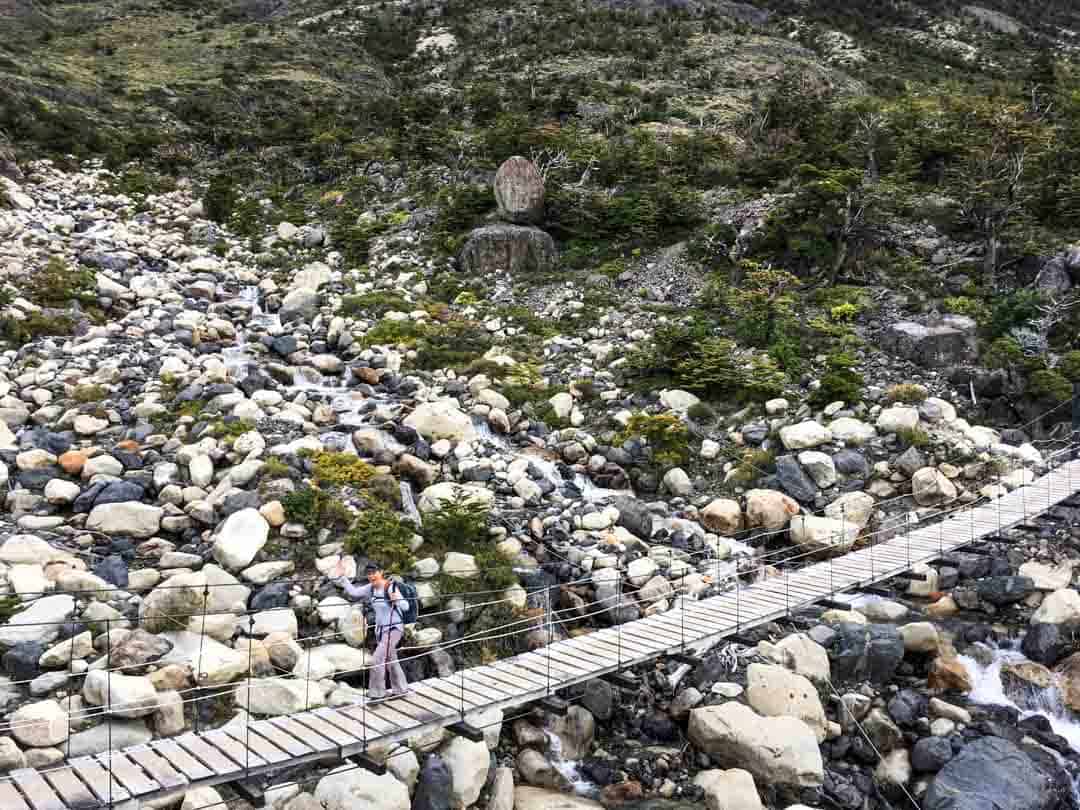
2nd Leg: Los Cuernos to Francés (appx. 3 km / 1.9 miles, around 1.5 hours)
The trail to the Francés campground is up and down and rubbly, with some steep sections, and a pretty pebbly beach crossing. Today’s walk has been positively sedate compared to yesterday’s heart-starter climbs, but never fear, a leg-burning rise awaits just before the descent into the camp.
We arrive at Camping Francés around 4.00pm . The campground here is run by Las Torres Patagonia (formerly Fantástico Sur).
The tent platforms are clustered between the trees and there’s a good shower and toilet block a short walk from the campsite. There’s also a small shop with basic amenities.
By 5.15pm we’re checked in and set up on our platform. We’ve arranged for a tent at Camping Frances but we’re cooking our own food tonight.
Sunset is close to 8pm in late March, and having made it through our second day on the W trail, we’re zipped up in our sleeping bags soon after.
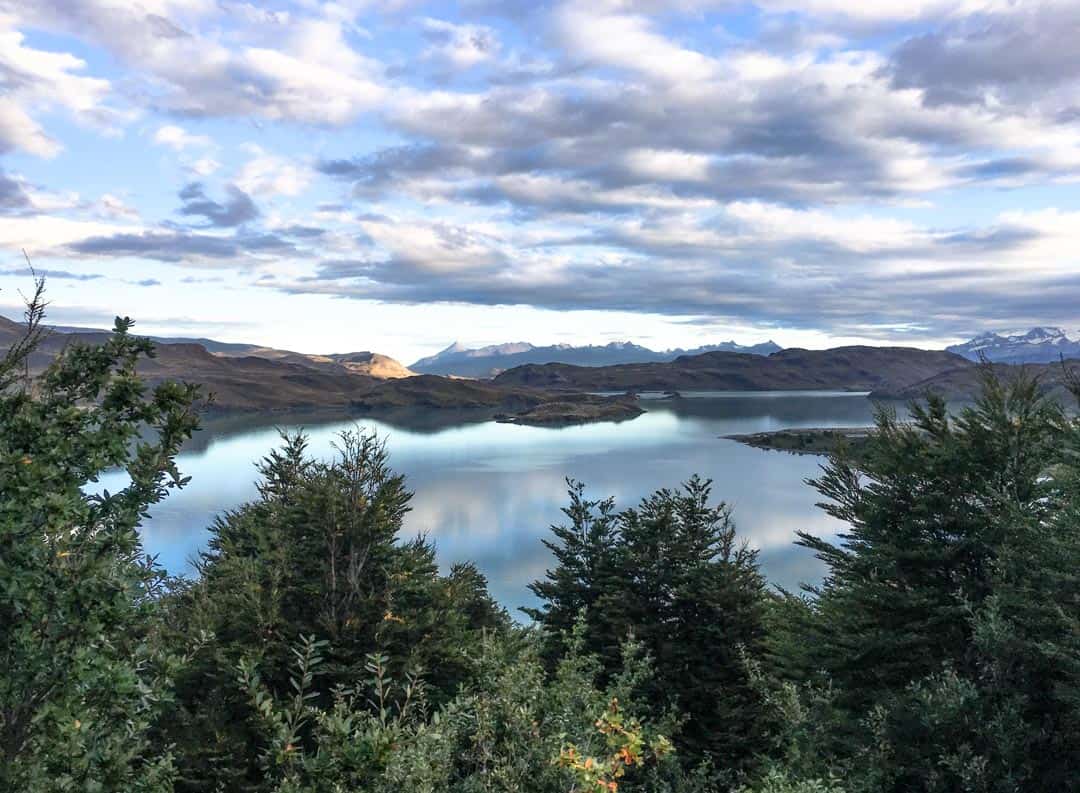
Day 3: Francés to Paine Grande via Francés Valley
Total distance: appx. 20.3 km / 12.6 miles t otal time: appx. 9 hours overnight: camping paine grande.
Despite our fatigue, neither of us sleeps particularly well on our second night and we’re both groggy when the alarm goes off at 7am.
Our restlessness is partly due to the strange soundtrack that has accompanied us throughout the night: sharp cracking sounds like distant shot gun blasts and deep, thunderous rumbles. It’s not until we set out on the trail through the Francés Valley today though, that the source of the unnerving noises becomes obvious.
On this itinerary, today is the longest day hiking the W, and based on our experience, we recommend getting on the trail by 8am at the latest to maximise your time in the Frances Valley. We departed later when we trekked, so we’ve adjusted the timings below to suit an earlier start.
1st Leg: Francés to Italiano Ranger Station (appx. 2 km / 1.2 miles, around 30 minutes)
The first leg this morning is a rejuvenating, 30-minute leg-stretcher to Italiano Ranger Station. Aim to pack up and set out from camp by 8am.
There’s a ranger at the Italiano Ranger Station when we arrive. He points to some racks opposite the office building; this is where we opt to leave our backpacks ahead of the challenging hike into Francés Valley.
We sort our valuables and lunch into a smaller daypack, lock up the big packs, and get going again. Look to be back on the trail by 8.45am .
2nd Leg: Italiano Ranger Station to Británico Lookout (appx. 5.4 km / 3.4 miles, around 3 hours)
The first kilometre (0.6 miles) out of Italiano is a flat trail through pleasant forest, after which the track starts to climb steeply through a rocky, rubbly stretch.
The scenery is seriously beautiful, serving up views of the ironically named Paine Grande Hill – 3,050 metres above sea level – and the Francés glacier that clings to it. This is the source of the crackshots and grumbles we’ve been hearing as the hanging ice shifts, melts and avalanches down the mountain.
Soon enough, you’ll reach the Francés mirador, a lookout offering spectacular panoramas over the ‘hill’ and its glacier; this is the perfect spot for a short break and a snack, as the next stretch is tough.
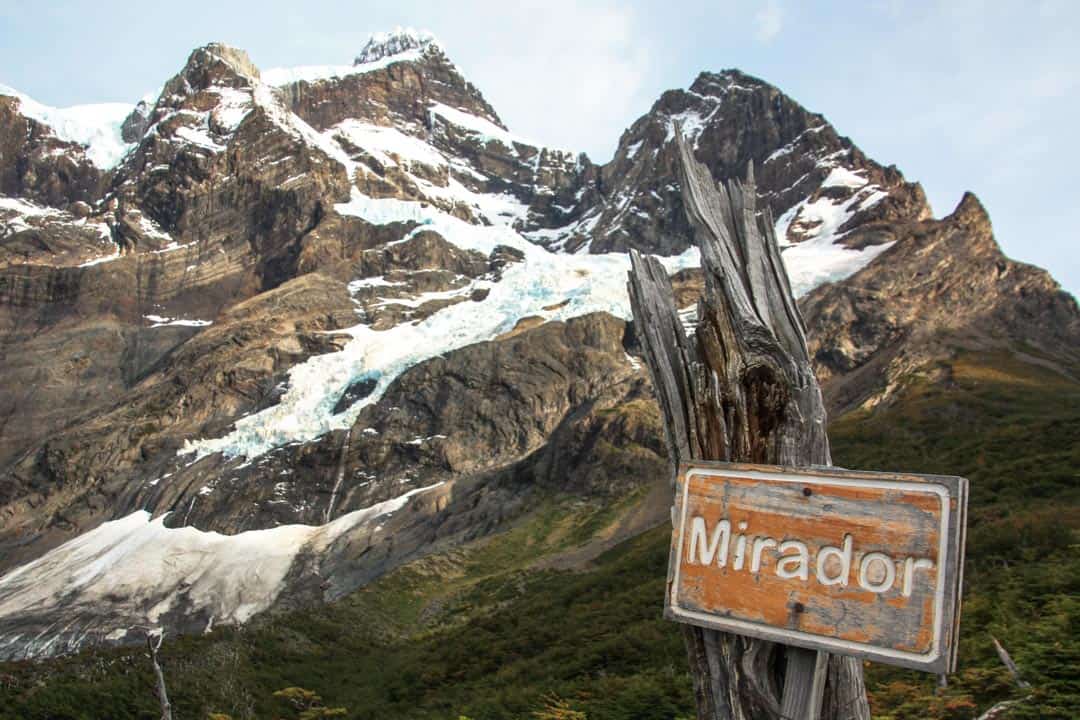
From here, the trail to Británico Lookout is a challenging, rubble-strewn boulder dash with lots of climbing.
A flat, rocky clearance scattered with the parched white trunks of dead trees and overshadowed by the jaw-dropping Cuernos massif, marks the final stretch before a steep, 10-minute climb to the mirador itself.
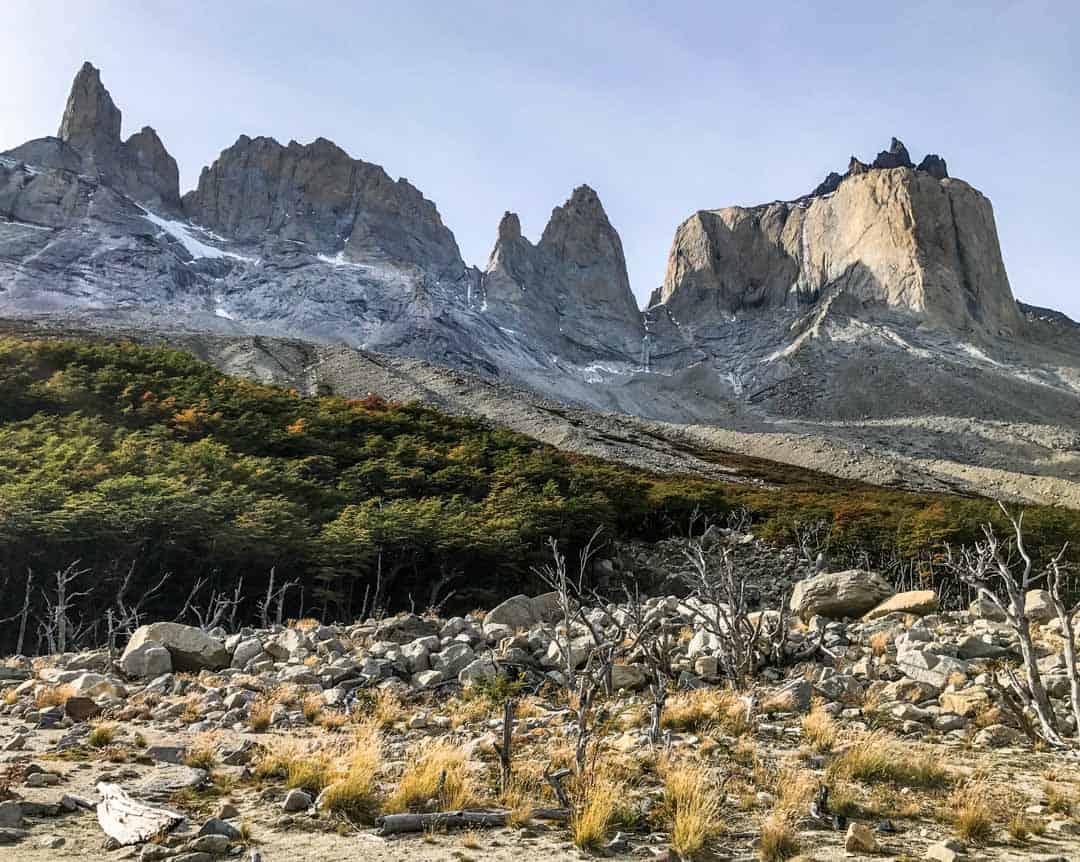
Summitting the boulders of the Británico Lookout around three hours after setting out , we cast our eyes over what will become our favourite panorama of this epic journey: the vast and spectacular Francés Valley. Find a rock to perch on and settle in for lunch with this glorious scene at your feet.
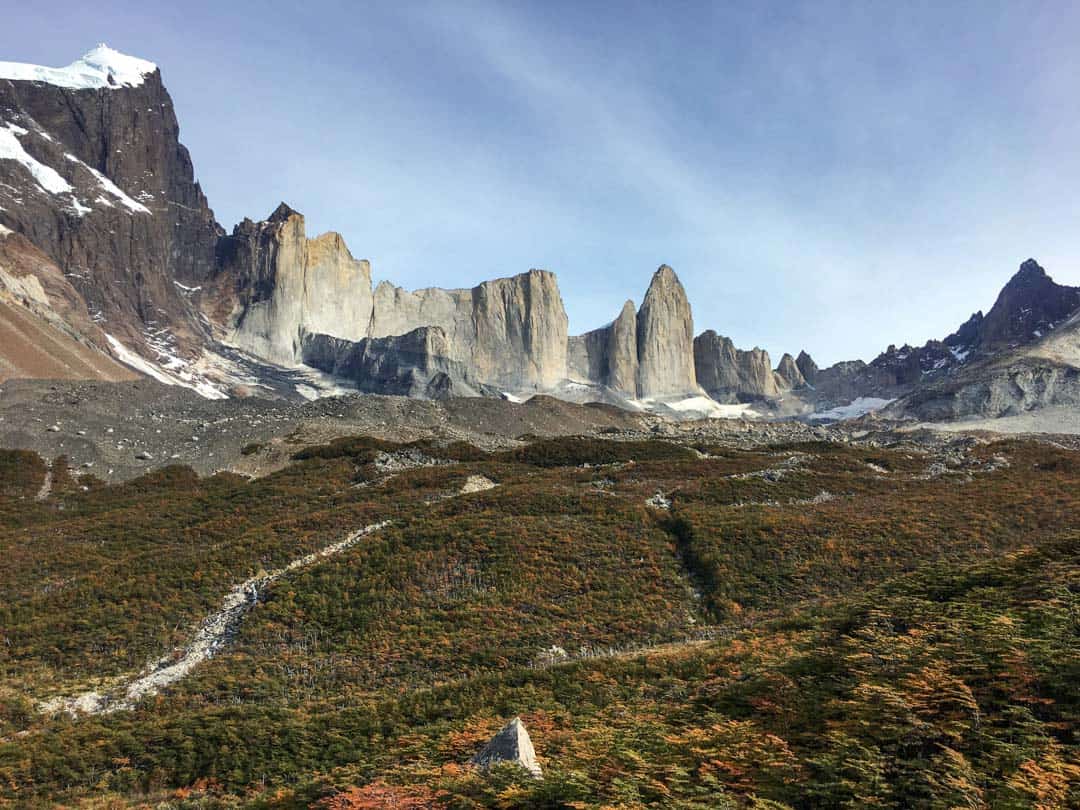
We’ve come a long way, but there’s still a huge day of hiking the W ahead. To our eternal regret, we were only able to linger here for half an hour as we left camp too late on this morning. That’s why we recommend getting on the trail no later than 8am today – trust us, you’ll want as much time at Britanico as possible and by arriving around 11.45am, you’ll have close to an hour here.
We’ve promised ourselves that next time, we’ll spend an extra day or two in this valley so we can take in this view at our leisure. For us, this remains one of the most magnificent vistas we’ve come across in all our world travels.
Trekking tip: Get on the trail by 8am at latest this morning so you can hang out for at least an hour at Britanico, or better yet, stay an extra day in the Francés Valley.
3rd Leg: Británico Lookout to Italiano Ranger Station (appx. 5.4 km / 3.4 miles, around 2 hours)
Aim to set off back down the trail to Italiano around 12.45pm . We find this a knee-buckling downward journey and our legs are screaming by the time we reach our packs back at the Italiano Ranger Station just over two hours later.
Once we’ve retrieved our packs (now four-deep in a giant bag pile), re-sorted them, and stopped for a quick breather, we set out for the Paine Grande refuge and camping area, starting with a bridge crossing out of Italiano. It’s around 3pm by this stage .
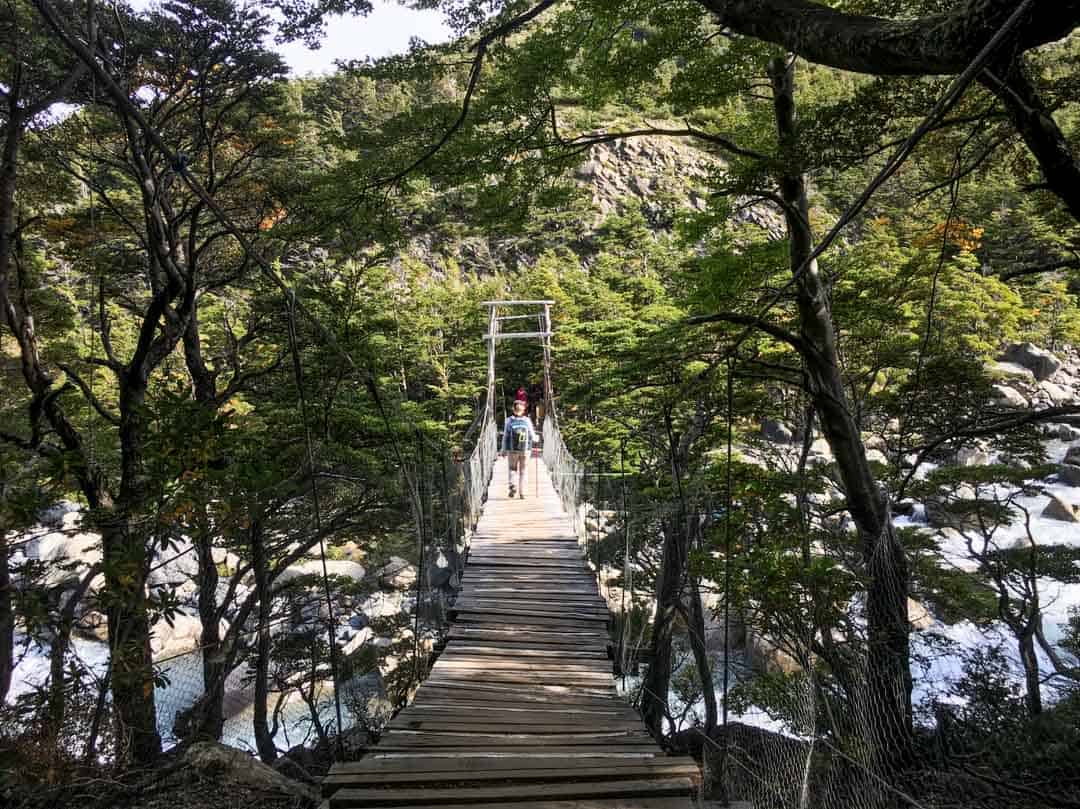
4th Leg: Italiano Ranger Station to Paine Grande (appx. 7.5 km / 4.6 miles, around 2.5 hours)
The final stretch of the W trail today is a journey of around 7.5 kilometres (4.6 miles) and it’s mostly flat with some sloping ups and downs.
Travelling out of the valley and along the raised walkway as you head towards Sköttsberg Lake, remember to turn around and take in the mountain scene back the other way: it is immense.
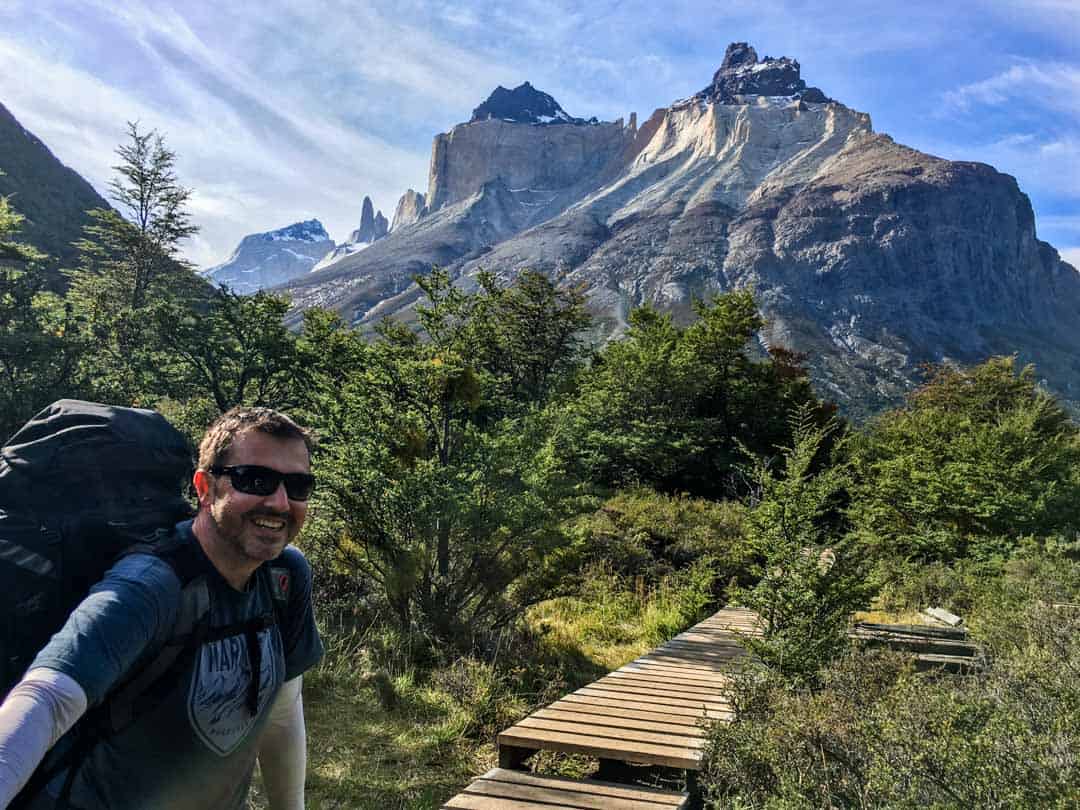
After some more steady rises, we make our final descent into Paine Grande Refuge and Camping around 5.30pm . By this stage, we’re seriously sore and tired and very ready for a beer from the lodge bar, which is the first thing we do once we’ve checked in and dropped our packs at our tent.
The campground at Paine Grande, which is managed by Vertice Travel, is large and separated into sections for campers carrying their own gear, and those like us who have booked a tent. A wooden walkway links the campgrounds with the lodge, the campers’ kitchen and bathrooms.
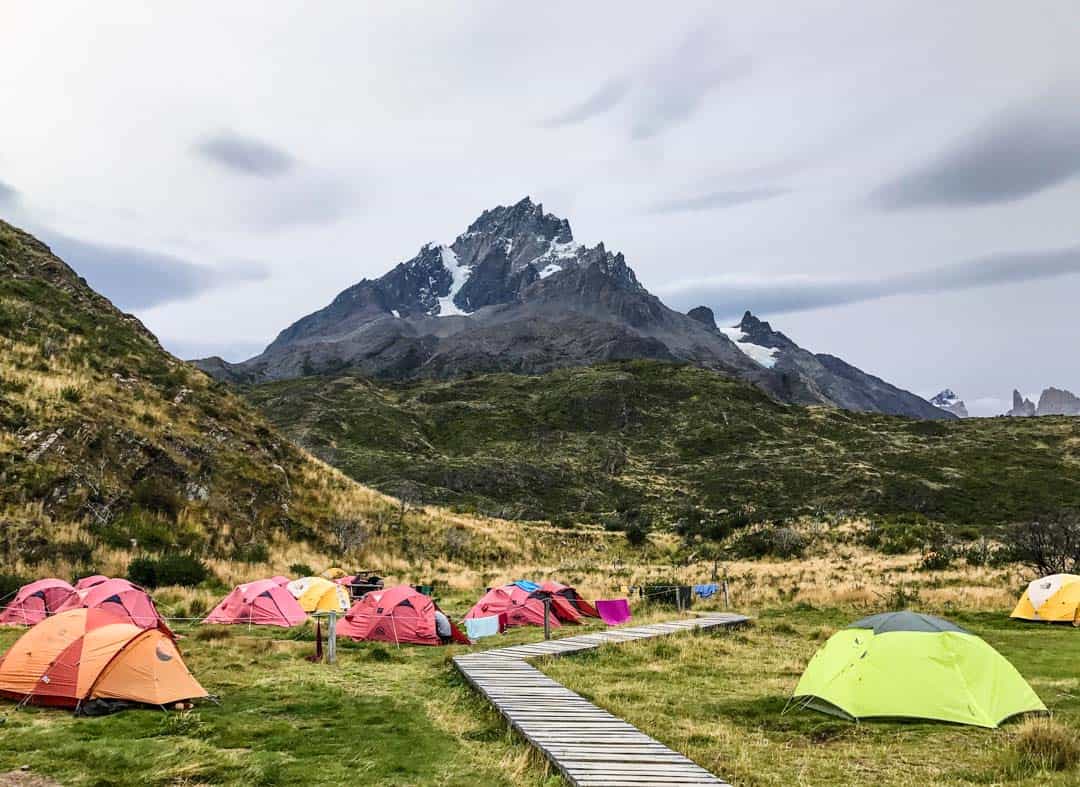
As Paine Grande is the western starting point for hiking the W and a transit point for O circuit trekkers, as well as for day trippers and short stay visitors, this is the largest and busiest lodge and campground in the park.
There’s a good-sized kitchen building, which is heaving with trekkers when we make our way in there to cook dinner around 7pm.
The camp shower and toilet facilities here are basic. We recommend getting your ablutions out of the way while everyone else is cooking dinner and before the post-meal rush. Paine Grande also has dorms, a restaurant and bar, and a mini-market.
We’re tucked up in our tent just as a light rain begins to fall around 8.30pm.
Day 4 – Paine Grande to Grey
Total distance: appx. 11 km / 6.8 miles total time: appx. 3 hours 45 minutes overnight: camping grey.
Today is our shortest day so far on the W trail, so we decide to set out a little later as we’re definitely starting to feel the past three days’ hiking, and a strange kind of exhilarated fatigue.
We’re up at 8am with plans to be on the trail by 9am. However the banshee-like screeches of a fox followed by the thrilling appearance of a large, tawny-coloured puma on the hill behind the camp has us – and everyone else – lingering for a while in hushed awe, until the sleek big cat disappears around a bend into the next valley. Which happens to be the same valley we’re about to trek into.
After checking in at the ranger station for advice on what to do if we see the puma again, we set off through the narrow, pretty dell at around 10am . We’re both relieved (and maybe a touch disappointed) to find no further sign of our feline friend.
The big cats of Patagonia Don’t let the thought of pumas roaming the forests of Torres del Paine put you off trekking there. The fact is, these magnificent creatures are extremely shy and actively avoid humans. Encountering a puma is incredibly rare. Spotting one near camp as we did is apparently almost unheard of. However, it’s important to be across what to do and how to act if you do come across a puma. You’ll find advice on this in the guide that you receive when you check in for your Torres del Paine trek. (If seeing a puma in the Patagonian wilds is on your bucket list though, check out this one-of-a-kind puma tracking day trip out of Puerto Natales.)
The valley walk is flat at first but soon begins to climb, and continues to serve up steady inclines followed by some steep descents into the Grey refuge and camping area.
The scenery on this leg is still epic, but maybe a touch more serene than the high drama mountainscapes of the last couple of days. Grey Lake is flat and still on the day we hike the trail, and dotted with blueish lumps of ice from the vast Grey Glacier at its head.
About halfway along the trail, a rocky lookout reveals the first glimpses of this immense glacier, a sea of ice six kilometres (3.7 miles) wide and 30 metres (98 feet) high in places.
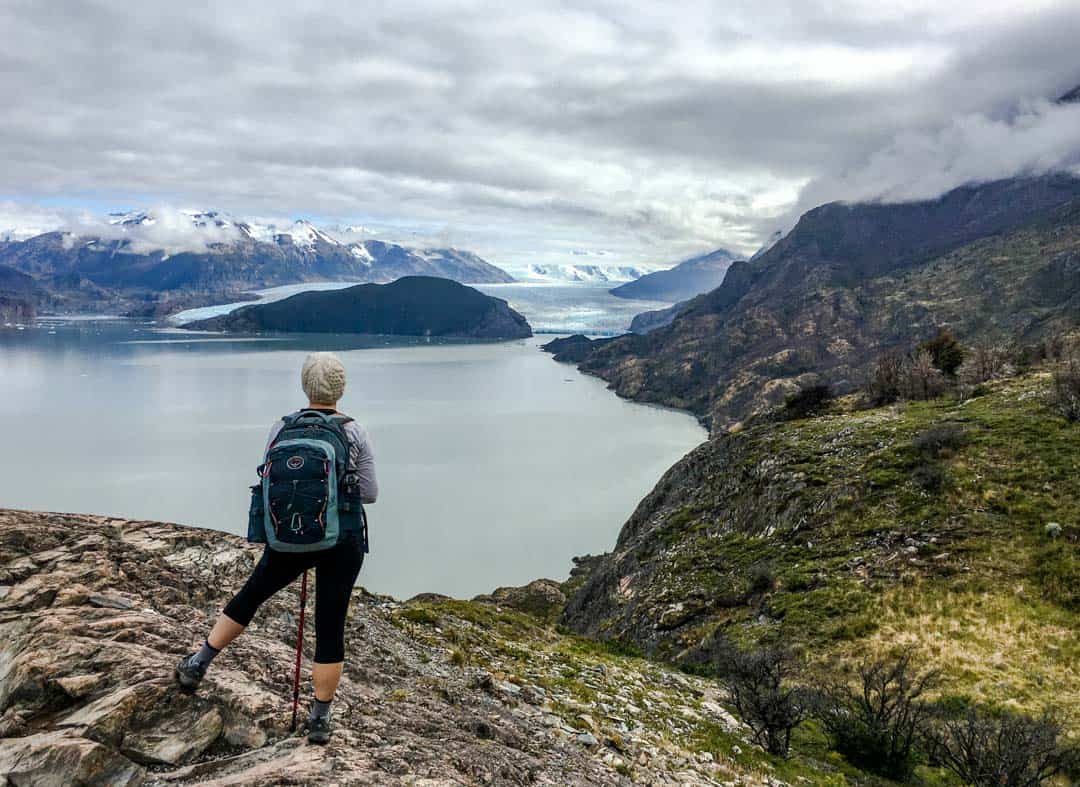
We arrive at the Grey Camping area around 1.45pm , a journey of 3 hours and 45 minutes, with plenty of photo and snack stops along the way.
Grey Refuge and Camping is also operated by Vertice Travel. The lodge has a lovely bar and lounge area in addition to its dorms, and the campground out front is overlooked by the stunning peaks of the Cordon Olguín. By the time we arrive, the clouds have cleared and the mountains burn golden as the sun drops.
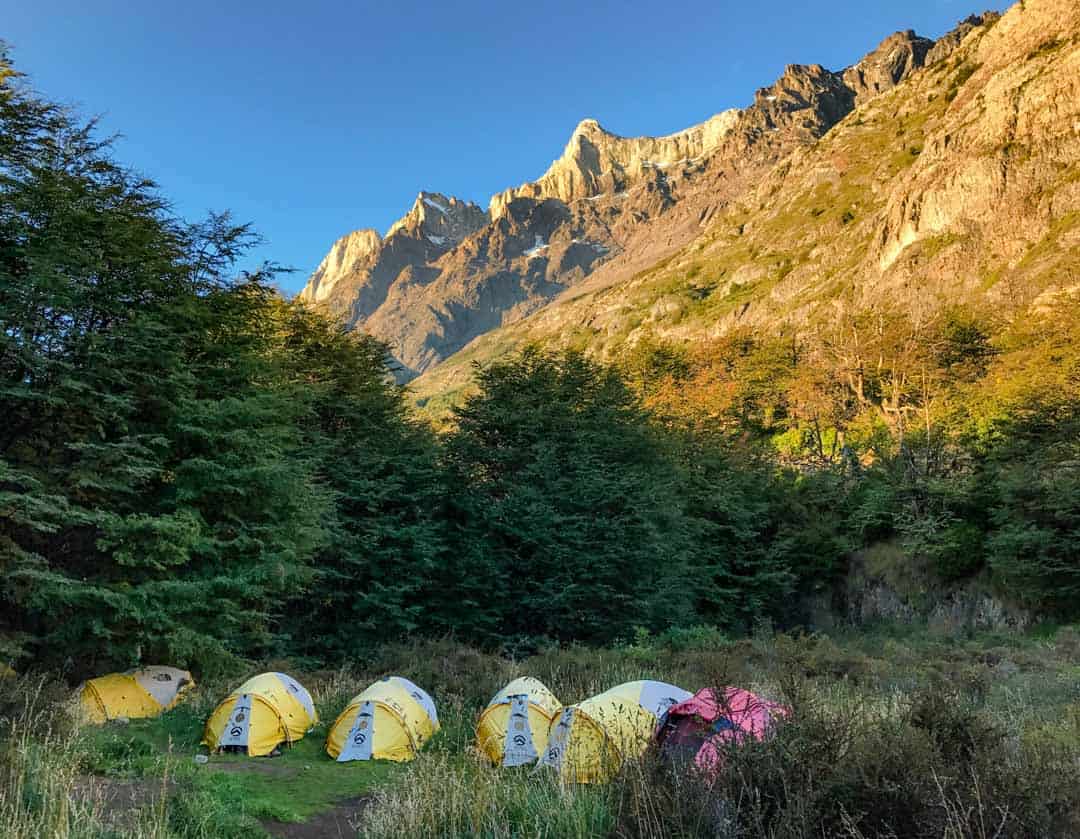
If you’ve got the energy, check in (or leave your pack with the office if check-in hasn’t opened yet), and then head back out to hike past the western tip of the W trail and on to the first leg of the O circuit towards Paso Ranger Station. This will bring you much closer to the glacier, but bear in mind, it’s a five hour, one-way hike to Paso itself.
Trekking tip: Leaving Paine Grande at 10am worked well for us, but if you do want to hike a stretch of the trail from Grey towards Paso and back to Grey today, consider starting out from Paine Grande earlier in the morning so you have more time to do this.
We opt to stop and enjoy our lunch with mountain views, then roll out our mats and nap in the sun until check-in opens.
After getting our tent sorted, we hike to a rocky outcrop on the lake just 15 minutes from camp. The views from here towards the glacier’s terminus are gorgeous and we spend time here just soaking up the scene.
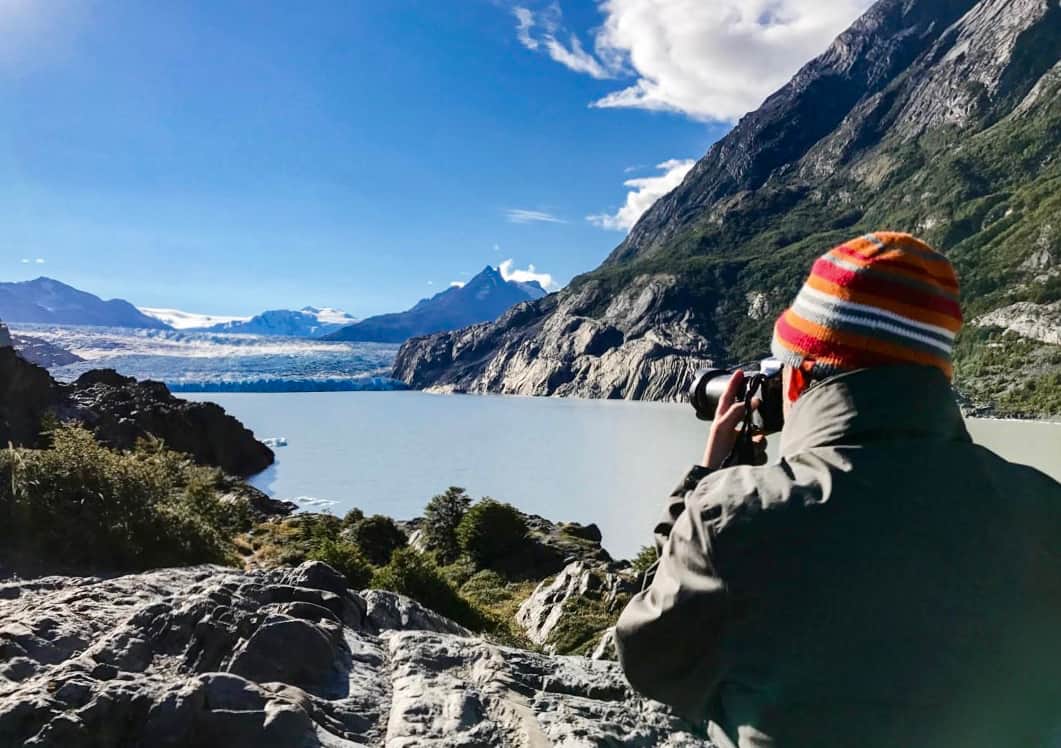
On our return to camp, we head to the lodge for a drink at the bar before making dinner on one of the picnic benches outside the buzzing campers’ cooking area.
In addition to the bar, there’s a restaurant at Grey, and a small shop selling grocery basics. There’s an equally small toilet and shower block for campers (the showers only have certain hours of operation but the water is hot).
We’re in bed by 9pm and prepped for a very early departure in the morning.
Day 5 – Grey to Paine Grande (and return to Puerto Natales)
Total distance: appx. 11 km / 6.8 miles total time: 3 hours 15 minutes.
It’s our last day on the W hike! We’re on the trail early so we can get back to Paine Grande in time for the late morning catamaran across Lake Pehoe to Pudeto, where we’ll pick up the bus back to Puerto Natales.
It shouldn’t take more than four hours to get back to Paine Grande from the Grey campground, but we’re feeling pretty exhausted by this stage and John has nurtured some nasty blisters, so we’re up and on the trail before sunrise .
It’s freezing when we set out at dawn but as the day lightens, we’re treated to a stunning peach-tinted sky reflecting off the lake, and we stop often to snap pics.
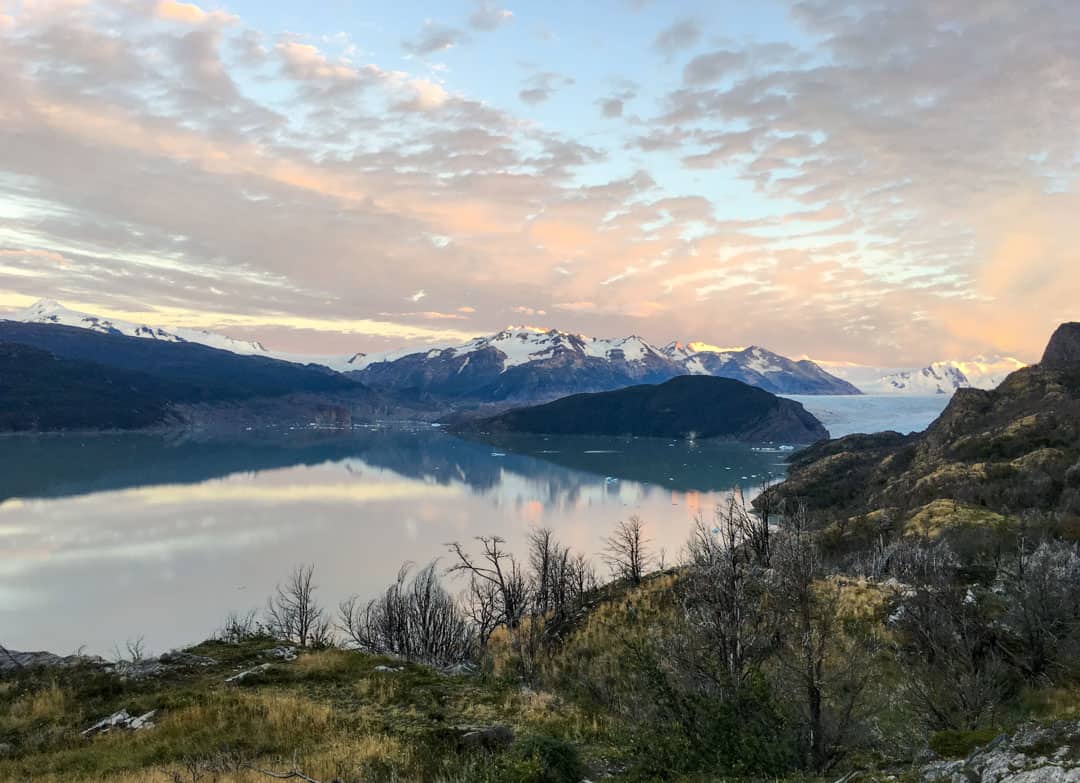
Despite John’s sore feet, we make good time on the return journey and while we’re climbing for much of the first half, it feels easier than the trek up from Paine Grande yesterday. Maybe it’s because we’re on the home run, even though the thought makes us sad.
Our journey back to Paine Grande takes us 3 hours and 15 minutes , 30 minutes less than yesterday’s hike in the opposite direction.
We haven’t eaten breakfast and we’re starving by the time we arrive. We were planning to grab something to eat at the restaurant at Paine Grande, but we discover it’s closed between breakfast and lunch.
We make do with our leftover trail mix instead, which is a bigger deal than you might think: we packed way too much of the bitty hiker’s snack and after five days we have a serious love/hate relationship with it.
Fortunately, there’s now a mini market at Paine Grande, which is apparently open from 7am. But if you’re setting out really early like us, perhaps have something you can eat on the go for this final morning.
Tickets and times for the Lake Pehoe ferry between Paine Grande and Pudeto The catamaran that crosses Lake Pehoe between Paine Grande and Pudeto operates from September to April. Departure times change from month to month so be s ure to check the boat schedule when you’re planning your W trek itinerary, and adjust your final day hiking start time to ensure you arrive back at Paine Grande at least 15 minutes before the boat departs. You can now book your ticket for the catamaran online ahead of time at the above website. We’re currently checking whether pre-purchase is a requirement or whether it’s still possible to turn up and buy a ticket onboard. The cost for the 2024-2025 season is 26,000 CLP or US$30 (each way) and the journey takes around 30 minutes.
We board the late morning catamaran for our return to the eastern side of the park. The boat trip across Lake Pehoé offers spectacular views of the entire mountainscape we’ve spent the last five days traversing. It’s an epic perspective of the W panorama and a mesmerising finale to our W trek itinerary.
If the weather is nice, we totally recommend taking a seat outside on the catamaran so you can properly admire the breathtaking scenery.
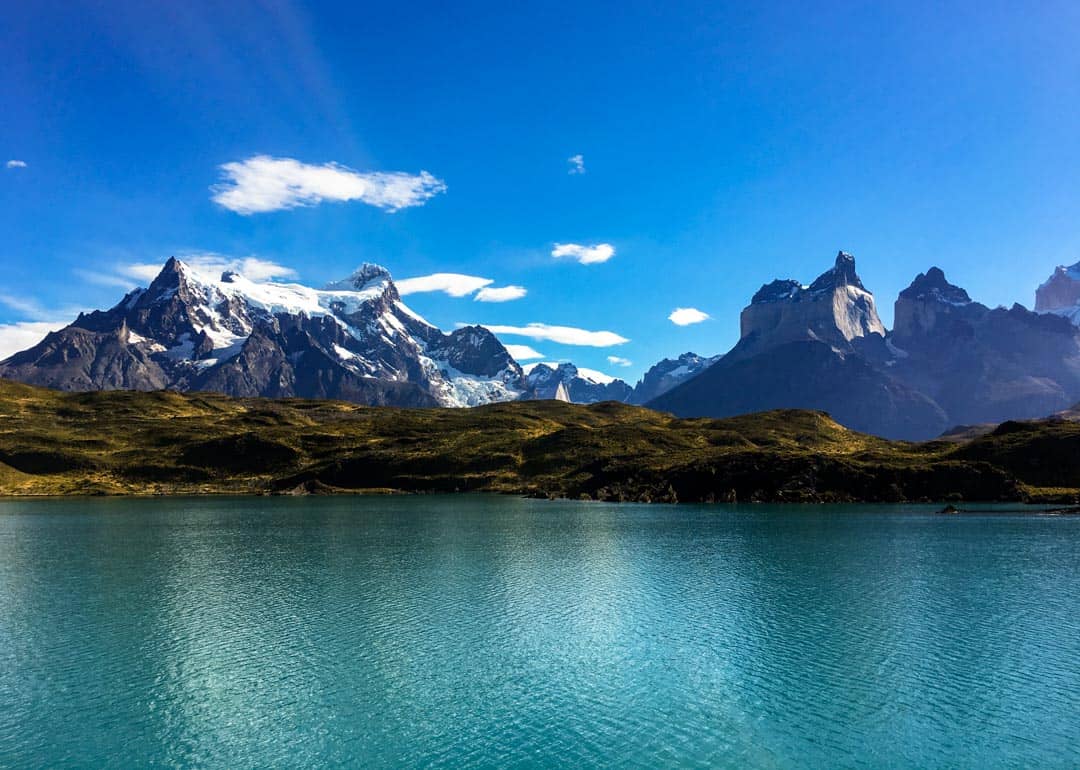
Disembarking the ferry at Pudeto, we grab a coffee from the lakeside café (open from October throughout the trekking season), take a seat in the sun, and enjoy our last moments in Torres del Paine while we wait for our bus.
Travel tip: In addition to checking ferry times for the catamaran between Paine Grande and Pudeto when you’re organising your trek, it’s also worth checking the bus connections to and from Pudeto, so you can work out the best approach for your final day on the trail.
From Pudeto, the bus makes its way back to the Laguna Amarga Ranger Station to collect hikers finishing their trek at the eastern end of the park. From there, we settle in for the return two hour bus journey to Puerto Natales .
Tonight, back in Puerto Natales, after a good hot shower and a lamentation on the ridiculous amount of trail mix we’ve got left over, we head out for a celebratory drink.
Our legs might be seizing, our knees protesting and we’re beyond exhausted, but we’re buzzing with the sheer thrill of having completed this epic trek. We’re already talking about when we might come back and hike the W trail again, or better yet, take on the longer O circuit.
However we do it, trekking in Torres del Paine is one nature experience we’re keeping firmly on our bucket list.
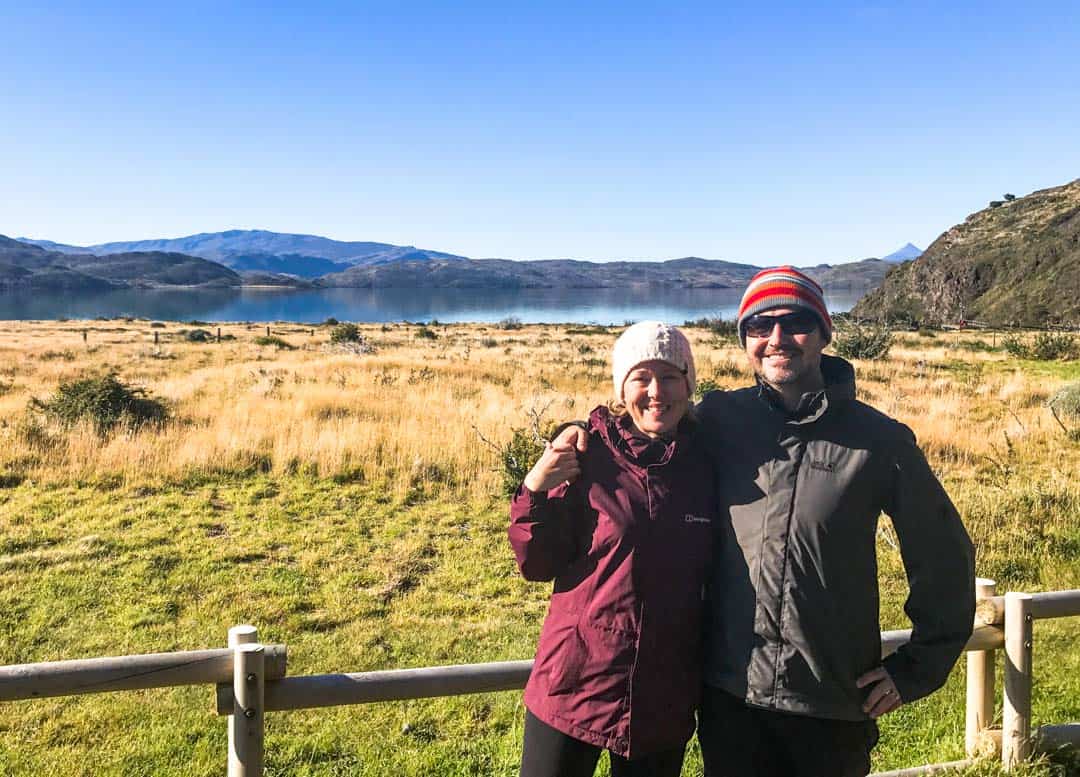
Got any questions? Have you trekked in Torres del Paine recently? We’d love to hear from you, drop us a message below.
For more exciting experiences and things to do in this incomparable part of the world, head to our Chile page or our South America section.
57 thoughts on “Hiking The W Trek In Patagonia: A Self-Guided Itinerary [2024-25]”
What a exciting blog to read with so many helpful insights! We are currently planning a “half a W-Trek’ focusing on the Western portion for 3 day/2night stay, one in Britanico and one in Refugio Los Cuernos before returning to Pehoe Lake.
Hi Reinier, thanks for your message and kind words! Your trip sounds great, we hope you have a magical time exploring the western half of the W! All the best, Danielle & John
Thank you so much for this rundown – working on booking for this winter now. Would love your opinion about 2 things: 1. On the day we’re hiking into Grey, I was thinking about trying to add the glacier kayak excursion on that afternoon – do you think that would all be doable in 1 day? Were you aware of folks who did it? 2. On the last day, I was thinking we’d hike out, take the catamaran, bus back to Puerto Natales, and catch the 5:00pm bus to Punta Arenas. Based on your experience, do you think that would be doable?
Hey Mark, Thanks for your message – great to hear you’re planning a W trip!
The kayaking sounds awesome. It certainly sounds possible to hike to Grey and do the kayak tour on the same day, assuming there are tours running later in the day? As an indication, it took us around 3 hours 45 mins to hike the 11km from Paine Grande to Grey at an average pace. You may do it quicker or slower depending on your own pace, but if you aim to set out from Paine Grande early morning, you should reach Grey campground/lodge by late morning/early afternoon, which would potentially give you time to check in to the campsite/lodge and then join a late afternoon kayak tour? I’d personally make sure there was a good amount of time between my estimated arrival and the tour departure just in case, that way you can enjoy the hike to Grey without rushing.
We usually err on the side of caution when it comes to transport as well, as while most of our bus travel in Chile/Argentina was issue-free, we did experience occasional bus delays and lastminute cancellations. Bearing in mind the bus from Pudeto to Puerto Natales takes a couple of hours, we’d be looking to put in a decent buffer between that and the Punta Arenas service, just in case you’re held up at any point along the way. Less stressful!
All the best with your planning and have a wonderful time in Torres del Paine! Let us know if you do end up hiking and kayaking on the same day!
I been to Asia a couple times but never to enjoy much of the nature. Your destinations and experiences have me wanting to explore more of the hiking trails abroad. Thanks for sharing!
Cheers Bryan, happy travels!
Thanks for your info, it helps a lot. I’m planning to do W trek in coming January. If I book the camp, can I also use the facilities in the shelter (like shower and toilet)?
Hi Karen, all of the campsites along the W have dedicated facilities for campers, including showers and toilets. Some have cooking areas for campers as well. Happy planning and have a wonderful trek in January! Cheers, Danielle
Great website! We’re hoping to do this February/March 2025, and are wondering how best to spend our time on either side of this hike. Did you travel to El Calafate and El Chalten while you were in the area? Or do you recommend other areas down there? Any advice greatly appreciated!
Hi Lisa, thanks for your message! Fantastic to hear you’re planning a trip to Patagonia! Besides the W Trek, there are various activities you can do in and around Puerto Natales and Torres del Paine, like boat trips on Grey Lake to Grey Glacier or horseback riding.
We most definitely did travel to El Calafate and El Chalten after our trek and absolutely recommend, especially if you’re keen to get out on some further hikes. We bussed from Puerto Natales to El Calafate and the next day did a day trip to the Perito Moreno Glacier, which is an absolute must. From El Calafate, we travelled by bus to El Chalten (the panoramas on the bus ride in are wow – try and get the front seats!) and spent a good couple of days exploring this gorgeous area and just hanging out. There are a range of hikes you can do out of El Chalten – the day hikes to Laguna de Los Tres and Cerro Torre are epic.
If you head south from Puerto Natales to Punta Arenas, you can do day trips to see King penguins, Magellan penguins, whales and dolphins, so that’s another option.
Have a wonderful time and happy trip planning! Cheers, Danielle
Thank you for sharing your Patagonia insights! I found it very thorough and incredibly helpful. I we are planning our trip for October 2024. I have a question. How did you book your meal plan? Thanks! Kim
Hi Kim, thanks for your feedback, we’re glad you’ve found our post helpful! When you go through the booking process for each accommodation (including camping) along the trail, you’ll have the opportunity to add meals as part of those bookings. Links to the accommodation providers are in the post. Good luck with your planning and happy trekking in October! Cheers, Danielle & John
Hi thank you so much for this detailed blog. It appears that one would have to stay at Frances camp if going east to west in order to shave hiking time on day 3. Is there a bus company through which we have to pre-book a bus ticket from Pudeto ferry to Las Amargo? Or is it a shuttle service? Do you have any idea if booking a guided tour via Las Torres means that they carry your heavy rucksacks?? Is the last day at Grey really worth it ? Or would you rather end the trek on day 4? Thank you!
Hi SK, thanks for your message. Until the CONAF Italiano camp reopens, Frances camp is the closest camp to the Frances Valley so yes, it is the best bet timing-wise for getting in and out of the Frances Valley and on to Paine Grande on Day 3 if travelling from east to west. You could also stay at Los Cuernos, but that would add around 1.5 hours to Day 3.
The buses running from Puerto Natales to Torres del Paine drop off and pick-up from Laguna Amarga and Pudeto. When you buy your bus ticket to Torres del Paine, you’ll note where you’ll be getting off and on again (it will depend on your itinerary, but for us, travelling from east to west, we got off at Laguna Amarga and boarded at Pudeto on our return. Check out the section in our post on bus tickets to and from the park for more info. There’s a shuttle that runs between the Laguna Amarga ranger station and Hotel Las Torres for a fee.
We would suggest contacting the tour company you’re interested in for advice about whether porter services are available on their guided tours. We left most of our luggage in one of our backpacks at our hotel in Puerto Natales and carried only what we needed for the trek to keep the weight down.
We personally feel that every leg of the W is absolutely worth it – the scenery is superb throughout. Five days gave us just the right amount of time to enjoy the whole trail without pushing too hard. To do the trek in four days, you’d likely need to compromise on either the full hike into Frances Valley or the Grey leg in order to reach camps before dark, and we wouldn’t want to skip either. But that’s us. If four days was all we had to trek, we would possibly leave Grey but we’d have to make sure we did a boat tour out to the glacier instead! 🙂
All the best with your planning! Cheers, Danielle & John
This is seriously one of the best breakdowns I’ve read. Patagonia is one of three “Someday” treks I have on my list to head off on once my son is a little bigger and can carry more of his own gear. We’re building up now with longer and longer trips around Central/Eastern Europe
Love this site!
Thanks for your message Brian, we really appreciate your feedback. So cool that you and your son are already hiking together, and what an awesome bucket list adventure to look forward to with him! Happy trekking and thanks again! Danielle & John
Do you have a map with the accommodations you booked or where you rented out tents/gears? Planning on doing this solo in June!
Hi Erika, thanks for your message! There’s a trail map available at the official Torres del Paine website: https://parquetorresdelpaine.cl/mapa-2023-2024/ – it shows all the accommodations/campsites along the trail. You can also find links in our post to the accommodation providers we booked our campsites and camping gear through.
As you’re considering a June trip, we’d also encourage you to check out the official Torres del Paine website for information about winter hiking regulations – https://parquetorresdelpaine.cl/permisos-especiales/ . Many of the accommodations and trails close over winter and while you can visit the park, we understand it’s mandatory to have a guide for the W Trek and the trek to the base of Las Torres between 1 May and 30 August (though the timeframes can change depending on weather). All the best with your planning! ~ Danielle
Hello Dan, What a great find this was. Thank you so much for writing it. I’m looking to mimic your trek with some modifications. I will very likely have a car rental when I arrive into Punta Arenas. My plan is to drive myself and 2 others into the park and leave the vehicle parked at the welcome center or hotel (unsure if this is allowed). At the end you mention that you ferry to Pudeto- then catch a bus that swings by Laguna Amarga into Puerto Natales. Is there a bus that goes directly back to the welcome center or hotel from Pudeto so we can get back in my rental? It looks like the Laguna Amarga ranger station is about 8.5 km from the welcome center. Or is it best to just shuttle from Puerto Natales for the whole thing and leave the rental somewhere in town?
Hi Bruce, thanks so much for your message and feedback! Very good question re. parking – based on our limited research into this, our understanding is that you can leave your car at Hotel Las Torres while you trek if you’re a guest there, otherwise, cars can be parked at the nearby Welcome Centre. We’ve also seen reference online to a small car parking area at Pudeto, so in theory you could arrange bus tickets from Pudeto to Laguna Amarga, and from there get the hotel shuttle to Hotel Las Torres/the Welcome Centre. I would suggest posting your question on Tripadvisor and hopefully someone has done something similar recently and can provide latest info. It might also be worth contacting Hotel Las Torres and asking their advice; no doubt they get questions like this frequently. All the very best for your trip planning and the trek itself – it’s an unforgettable experience! Cheers, Danielle & John
Thank you so much for the great information. I’m a long term planner and we’re looking to book for our family of four, Christmas 2024. I found this blog really really helpful in hiking cost effectively. Thanks Again!
Hi Melissa, thank you so much for your message, we’re really happy you’ve found our post helpful in your planning. Also very excited for you and your family – what a fantastic Christmas experience! We hope you have a really wonderful time hiking the W, it’s just such an incredible place! All the best and happy hiking! Danielle & John
Thanks for the article, I find it very useful. I have just booked the circuit trail for this April. About that: I looked into using Booking Patagonia for the reservations, and it works really well. Though, there is a downside: they charge an extra $90. You’ll notice this at the very and of the booking process, which I found quite frustrating. For me that was a reason to book directly at Vertice and Las Torres Patagonia, which works fine.
Hi Valentijn, thanks so much for this update, that’s really helpful to know! Thanks also for your feedback on our post, we’re pleased you’ve found it useful. All the best for your upcoming trip in April, have a sensational time and happy hiking! Cheers, Danielle & John
Thanks for the great write up. The details are useful and your descriptions are inspiring. I’m leaving for Chile in a couple days and your post just added to my excitement.
Hey Mike, thanks so much for your feedback, we hope you have a really fantastic trip. Chile is an incredible country, one of our faves!
Cheers, Danielle & John
Thank you for that informativ Blog! I have a question: are there any possibilities to heat up some water in the Refugiés without a stove?
All the best Sophie
Hi Sophie, thanks for your message!
As we had a cooking stove (and booked meals at Chileno where stoves can’t be used), we can’t personally say for sure whether hot water is currently available at all of the stops on the route. That said, we did find a trekker’s report online from late 2023 noting that they were able to access hot water (not boiling) through the coffee/tea dispensers at each of the refugios they stayed at, which they used for their dehydrated meals. Would suggest seeing if there are other trip reports from this season, or posting on a forum for latest updates. Or perhaps hire a stove in Puerto Natales and buy a gas canister just to be on the safe side! We’d love to know what you find out!
Have a magic time trekking the W!
Cheers, Dan & John
Hi guys. Thanks for all the detailed info. Just wondering if you could give an estimate of how much it cost for the W trek. I am being quoted $1180 per person for 4 nights and five days starting 12th February with this included:
• camping accommodation with all the equipment • all the meals • transportation from/to natales-park • park entrance • catamaran • welcome kit
Not sure if this price is really high or if it would work out as that much if I book everything myself separately anyway.
Many thanks
Thanks for your message and feedback – we’re really excited for your trek in Torres del Paine.
We were travelling long-term when we did the W Trek so we went out of our way to keep costs down by booking the campsites directly, carrying some of our own camping gear and bringing most of our own food. Travelling as a pair also helped as the single supplements can add quite a bit. We’d also note that, like everything, prices have hiked post-Covid.
We’ve included some costings in our post but not many as we’re conscious things can change quickly (plus there are so many potential cost combos for accommodation/food, it’s tricky to provide a general estimate). As the bulk of your costs will be in the camping, gear and food components, you might consider checking out the latest price lists for camping and food package options on the Vertice and Las Torres Patagonia websites; that would give you a sense of costs in the context of your quote. Given how quickly accomm/campsites book up for the season and the challenge of trying to coordinate an itinerary across multiple websites, having a third party making the arrangements, while costing more, would take the hassle out of that.
All the best with your planning and we hope you have a sensational time trekking!
Cheers Danielle & John
Your hikes sounded amazing. We are going in Feb and I wasn’t sure what to expect. Sounds like I should do some training! Do you recommend stiff hiking boots to navigate the big rocks or are light hikers enough support?
Thanks for sharing, Karen. Canada
Hi Karen, many thanks for your feedback! To be honest, if you’re a regular walker/hiker, you may find the W Trek a breeze – we met plenty of people who barely cracked a sweat, lol. As irregular hikers, we found some of the steeper sections a little more ‘breath-taking’ but still very do-able. We both wore regular lightweight hiking shoes and they were fine (apart from John developing blisters towards the end), but we also saw people in solid boots. I guess it depends on your preference. We did find having a hiking pole each was useful on some of the more uneven terrain like the rocky climb to Las Torres. We’d love to hear about your trek when you get back – have a fantastic time! Danielle
Going in February, cant wait. Did you know how anyone who did the kayak at Grey and talked about there experience?
Hi Efren, that’s so exciting! We don’t personally know anyone who has kayaked at Grey but we wish we’d had time for it – what an amazing experience! The lake is beautiful and the glacier is epic! If you do kayak, we’d love to hear about it! Have a fantastic time, Cheers, Danielle & John
Awesome Post!
I’m looking at doing this the same direction as you guys did around the same time in 2025.
You mentioned availibilty determined your campgrounds; that being said would you change any of your stays if you could in retrospect? Maybe saw some better campgrounds/lodges along the way that you wish you could have booked had there been availibilty?
Hi Chris, thanks for your message and good question! We were on a long travel stint when we did the W Trek so we opted for camping to keep our costs down, plus the campsites we ended up with proved to be very well located for a five-day itinerary. That said, all of the lodges and refuges looked quite nice so if we were to do it again (and we hope to!), we would consider adding some lodge/refuge stays, following the same itinerary. Location-wise, the Cuernos and French refuges would be good alternatives to camping (though these are beds in dorms, which is less appealing to us). We would definitely consider the Cuernos Cabins (2-3 people per cabin), especially if we were planning a longer stay in the French Valley! We’d also consider staying at the lodge at Grey next time as, of all the campgrounds, this was probably our least favourite (plus we were very ready for a bed by that stage!). Overall, the quality of the campgrounds/refuges throughout the park is very good and we were really happy with our camping experience and itinerary. Best of luck with your planning and we’d love to know how you go! Happy travels!
Wonderful description. We are going in Jan 2024! Looking forward to it.
Hi Kishore Joshi, thank you so much for your feedback, we hope you’ve found it helpful! Wishing you a fantastic W Trek, it really is the most incredible place! Happy travels!
Hi! How much cash would we need, knowing that the bus and entrance are paid for and also full board meal plan at the refugios is booked? So for snacks, water or other costs etc? Do they accept USD or should we have it exchanged? Thanks!
PS, did you also really use ‘poop bags’ for your used toilet paper along the way? 😅
Thanks for your message. We carried both USD and Chilean pesos with us just in case, and we were able to use credit cards at the refuges. We paid for the shuttle from Laguna Amarga and the catamaran from Paine Grande in pesos, though we have read that the catamaran operators may take USD in high season. It’s handy to have pesos for smaller purchases like snacks. We carried a refillable bottle and filled up in streams and at the refugios, so we didn’t purchase water.
We have packed degradable doggy bags for carrying out toilet paper on past hikes! 🙂 On the W Trek though, we carried a loo roll and some trusty Ziploc bags, but we mostly just made strategic use of the campground facilities!
Happy trekking!
Hi John and Dan Thanks for such good info. Is it safe doing it self guided ? Thanks
Hey Iris, thanks so much for your message, we hope you found the post helpful. We found going self-guided very easy – the trails are well trodden and during the peak season, there are plenty of other people hiking too (guides are mandatory in winter). Plus all trekkers have to stay in the designated camping and accomm areas so there are others around and you can stay in dorms if you’re not keen on camping. Conditions can vary dramatically though and it is the great outdoors, so having appropriate gear is essential and hiking with friends is good idea though we hear lots of people do it solo. Everyone we met en route were friendly, encouraging and helpful too. We absolutely loved the hiking the W and hope you get to experience it too! Happy travels! Dan & John
This is really helpful thank you so much. Did you have much hiking experience before you took this on? Would you recommend any training prior to going? What size backpack would you recommend taking?
Thank you so much
Hi Jo, thanks for your kind words, we’re glad you found the post useful! We’re casual hikers and while we’d done a bit of hiking before the W, it was certainly one of the ‘biggest’ hikes we’d done. We definitely tried to up our walking/hiking game before the W in preparation and glad we did as we personally found some of the steeper, sustained-climbing parts of the trek relatively tough – we just took our time and had lots of breaks; necessary anyway to take in the gorgeous views! I carried a 30L daypack and John carried a 50L backpack – between us we carried everything we needed for the five day hike, but I would note that we didn’t have to carry tents, sleeping bags or mats as we hired these. We hope you have the chance to hike the W trek, it remains at the very top of our hiking list! Happy travels!
Thank you all for this awesome breakdown and information! We followed it exactly to book our accommodations and plan to do the trek end of March. Thanks again!
Hi Kristen, thanks so much for your feedback! We’re stoked you found our post helpful and we’re very excited for your upcoming trip. Torres del Paine is sooooo spectacular, wishing you a fantastic trek – let us know how you go! ~ Danielle & John
Thanks Dan for the great details and info.
Hi Kristen. I am doing the trek around of march with a friend. We are travelling from Perth, Australia. Would be great to collaborate in planning.
Thanks Bikash
Hello! This page is fantastic, thank you so much. We are looking at November and can be flexible in terms of dates. Did you book your accommodation first? Are there any other considerations i.e. tickets or entry to the park? Or should we just arrange accommodation and go from there? Do you mind sharing how much you paid approximately for your camping accommodation? No worries if not. Thanks 🙂 Amie
Hi Amie, many thanks! We booked our accommodation first and a couple of months in advance. Site availability ended up driving our approach to the trek – so it’s good that you have flexibility! Would definitely get in as early as possible to book. Tickets for the park itself are arranged at the park entry office, but you will need to have the accomm bookings in place (and evidence of them) when you get to that point. So it’s important to book the accommodation and bus tickets to the park in advance. Bus tix you can buy when you get to Puerto Natales, but try and do that as soon as you arrive rather than on the day you intend to travel to the park. Prices for camping and cabins may have changed since we trekked, but if you head to the accomm links in our post, you’ll be able to find out the current prices as it’s all bookable online. Hope that helps and have a fantastic trek! Cheers, Dan & John
Thank you for the detailed information. We are trekking this exact route this March 2020!
Hi Jackie, thanks for your message, we’re really happy you’ve found it helpful for planning. Hope you have a sensational trek!
Thank you so much for the detailed guide! This is really helpful 🙂
Hi Katherine, thanks for getting in touch! We’re really pleased you found the guide useful – happy hiking!
How did you book the campsite ? I unable to locate the source to book just the campsite
Hey Rajesh, thanks for the message.
The Camping areas are run by three different operators in the park, and you can find links to all three operators in our post.
All three operators’ websites have information about their camp sites, and how to book.
Hope this helps.
John & Dan
Exactly what I’m looking for, thanks! Chileno and Los Torres always been there on my bucket list, now I know where and how to start.
Awesome, thanks Rika, we’re really pleased you’ve found it helpful. It is the most spectacular walk – even if you just did the one leg to Las Torres, you’d have photography opps galore! Happy travels!
Leave a comment Cancel reply
Save my name, email, and website in this browser for the next time I comment.

The Ultimate Guide to Hiking the W Trek in Patagonia: Full Itinerary, How to Self Book, Cost Breakdown & More!
March 28, 2023.
Hiking the W Trek in Torres Del Paine National Park is an incredible experience that will reward you with endless views and memories that will last a lifetime. You will see jagged mountain peaks, aqua blue lakes, waterfalls, glaciers and more as you take the journey. If you’re lucky, you’ll also see giant condor birds and make new friends as you stay at the inns along the way.
I found the W Trek to be incredibly rewarding and definitely worth the effort, planning and costs. The trek is also perfect for those who are newer to backpacking but are experienced day hikers. Trekking during the day with inns to stay overnight is the perfect combination!
This blog includes a W Trek itinerary and covers everything you need to know to book the W Trek self guided, pack for the W Trek and be prepared. This is based on my experience visiting over New Year’s in December 2022 and January 2023.
Table of Contents
Overview of the w trek, when to hike the w trek, hiking the w trek self guided vs with a guide, how to book the lodging for the w trek, booking an entry ticket to torres del paine national park, booking transportation between puerto natales and torres del paine national park, w trek planning checklist (for self booking), tips and important things to know before hiking the w trek, day one of the w trek, day two of the w trek, day three of the w trek, day four of the w trek, how should you end the w trek, ways to save money on the w trek, what to pack for the w trek, other ways to see torres del paine national park, faqs about the w trek, final thoughts.
- Located in Torres Del Paine National Park, Chile
- 50 miles/80 km
- Typically done in 4 Nights, 5 Days
- The highest elevation is at the Base of Towers, 2,788 feet above sea level
The W Trek refers to a multi-day hike that is shaped like the letter W. This area is unique because there are several inns along the trek where you can spend the night. You can choose between hostel-style lodging, have them provide you a tent at the campgrounds or bring your own tent. Each inn serves food, has restrooms and showers and even offers wifi for an additional fee.
The W Trek is about 50 miles and is typically done in 5 days and 4 nights. There are very few technically challenging sections of the trail, but there are long days with steep climbs. If you have experience hiking 10+ miles in a day in mountainous areas and feel that you can do that for a few days in a row, then you will be set up for success.
Because of the amenities offered, this is a great trip to do if you’re new to backpacking or if you just prefer to stay in a bed instead of a tent. If you stay in the refugios and purchase their full room and board package, you will not have to carry all of your food, water and sleeping equipment. The lighter you can pack for the trek, the more comfortable you’ll be.
While the hike itself is not overly difficult, dealing with the unpredictable weather is the toughest part. I experienced really high winds during my trek. Bad wind is common and it’s not uncommon to experience heavy rain, fog or even snow. You’ll want to make sure you’re prepared with the good layers and keep your expectations low in case it’s too foggy to see some of the best views along the trail.

For a shorter version of this blog, check out my top 30 tips for hiking the W trek!
You will most likely hike the W Trek in the summertime for the Southern Hemisphere (winter in the Northern Hemisphere). The W Trek is typically open to hiking self-guided from October to the end of April, and you’ll likely have the best weather from November to March. I hiked the trek over New Years (December and January), which was really special!
If you would like to hike in the park during the winter months, you can do so with a guide.
There are several companies that offer guides if you’re not comfortable hiking the W Trek on your own. This can be a great option for some!
However, I think a guide is unnecessary, as the trail is well marked and easy to follow. It all depends on your comfort level, abilities and budget.
If you are looking for a guide, some companies that offer services include Swoop Patagonia, Tangol Tours, Chile Nativo and many more.
How to Self Book the W Trek
Many people assume you have to go through a third party company to book the W Trek. A third party would certainly be a little bit easier, but if you prefer to do it all yourself, I’m going to tell you exactly how!
Two separate companies own the various lodges in Torres Del Paine National Park: Vertice Travel and Las Torres Patagonia (previously called Fantastico Sur).
For this itinerary, you will book with Las Torres Patagonia for the first two nights at Los Cuernos and El Chileno, and Vertice Travel for the second two nights at Paine Grande and Refugio Grey.
You can book directly with each company on their websites.

To book El Chileno and Los Cuernos, start on the Las Torres website . Choose to book the ‘shelters’ and then make reservations at the Central Refuge and the Chilean Refuge. Upon booking, you can select to add on full room and board (breakfast, packed lunch and dinner) or any combination of only dinners, only breakfast, etc.
To book Paine Grande and Refuio Gray, start on the Vertice Travel website. Under accommodations, make reservations at ‘Refuge & Camping Paine Grande’ and ‘Shelter & Camping Gray.’ When you book, you will select that you’re doing the W Circuit and be able to book both lodges at once, along with the full room and board.
If you have any dietary restrictions, be sure to request that when booking. If you don’t see the option, send an email to their customer service to confirm. I am a vegetarian and all of the inns were very accommodating!
I booked my trip for December/January in May and June. In 2022, the reservations for Las Torres went on sale well before the reservations for Vertice Travel. So, I booked half of the trek and then waited until the Vertice released their openings. Keep an eye on their social media platforms and/or send an email to their customer service to stay up to date.
After your lodging and transportation is squared away, it is very important to book an entry ticket into the national park. I did this a week or two ahead of time.
To buy your ticket, go to aspticket.cl and select ‘buy or reserve.’ You will then select the correct park, which is listed as ‘Parque Nacional Torres del Paine (Venta)’ in Spanish. From there, you will input your entry and exit dates in and out of the park.
You will then need to fill out a variety of information, such as your birthdate and passport number, where you are staying each night of the trek, if you are traveling with a guide and more.
When you complete the form, you will pay the fee ($49 USD per person at this writing) and receive an email with a QR code. Make sure you have this QR code saved offline (and/or printed) for when you arrive at the park! The rangers will scan it upon arrival and there is not reliable cell reception.
The cheapest and easiest way to get between Puerto Natales and Torres Del Paine National Park is by bus! There are a few different bus companies that run multiple daily trips between the city and the park.
I booked my tickets a week or two in advance with Bus-Sur, and I used busbud.com for easy booking. For the beginning of the trek, I recommend leaving Puerto Natales as early as you can (mine left at 6:45AM).
Keep in mind that you will be starting and ending at different places inside the national park.
For the beginning of the W Trek, book a ticket from Puerto Natales (Rodoviario) to Terminal Laguna Amarga . For the ending of the W Trek, book a ticket from Pudeto (Catamaran Paine Grande) to Puerto Natales (Rodoviario). I recommend an afternoon or evening time for the end of the trek, my bus left Pudeto at 2PM.
The bus rides will take about two hours and there are some great views along the way. Be sure to print out your bus tickets ahead of time and arrive a little early.
If you’re booking everything yourself, here is a quick checklist to make sure you have everything you need before setting out!
- Los Cuernos
- Paine Grande
- Refugio Grey
- National Park Entrance Ticket
- A morning ride from Puerto Natales to Laguna Amarga to start the trek
- An afternoon or evening ride from Pudeto to Puerto Natales to end the trek
- (Optional) A glacier trek or glacier kayaking from Refugio Grey (book with Bigfoot Patagonia)
- (Optional) The catamaran ride on Grey Lake

- Expect all kinds of weather, especially high winds. Wind is very common in the area and can be really intense. Also know that it’s possible fog will sock in some of the most epic views. Keep your expectations low just in case.
- You can drop off your heaviest gear at parts of the trail! Bring a day pack and drop your packs at El Chileno and Camp Italiano before ascending up the most difficult parts of the trail.
- The towers will be crowded but the rest of the trails won't be. But overall, the W trek is not the best for solitude and you will often see other people around. It’s a good social hike because you can meet people every night at the inns.
- The elevation of this region is relatively low (2,788 feet is the highest point on the W Trek), so you shouldn’t have an issue adjusting to the altitude.
- Each inn on the trek has drinking water, food and alcohol for sale, plus wifi for purchase and more. You will not exactly be roughing it on this journey! That being said, you should bring a water filter just in case you’re sensitive to the water or want to make sure you can fill up at streams on the way.
- Download the map of the trail on All Trails to follow along with your progress throughout the trail.
For a full list of tips for hiking the W Trek, check out my top 30 W Trek tips !
W Trek Itinerary: East to West
I hiked the W Trek from East to West. You can also hike it in the opposite direction, but hiking it east to west tends to be more common. I liked hiking it from east to west because I got the most difficult portions out of the way early. It was also fun to end the trek with a gorgeous catamaran ride across Lake Pehoe!
Below is my full itinerary for hiking the W Circuit! I hiked 50 miles over 4 nights and 5 days total.
- Take the bus from Puerto Natales, hike to the Base of the Towers, stay at El Chileno
- 9.9 miles, 3,000 feet of elevation gain
The best way to get to Torres Del Paine National Park is by taking a bus from Puerto Natales. The bus ride will take about 2 hours to reach the main entrance of the park (Laguna Amarga), which is where you’ll be exiting the bus for this itinerary.
When you arrive, you will need to exit the bus and have a ranger scan your entry ticket. You should have your ticket saved offline ahead of time and ready to show from your phone.
There was a bit of a language barrier for us here, as none of the instructions were given in English. How it worked was that everyone got off to get their ticket scanned here, whether you were getting off here or not. After they scanned our tickets, we went back to the bus to collect our backpacks.
From there, you will take a smaller shuttle bus to get to the start of the W Trek. This bus costs an extra fee of 4000 Chilean pesos per person in cash. It was a quick, 10 minute bus ride to reach the Torres Del Paine Welcome Center, where you will officially begin your trek! The welcome center has packed lunches, hiking poles and other items if you have forgotten something.
I calculated the day one milage to be 9.9 miles with just over 3000 feet of elevation gain. In terms of steepness, it was definitely the hardest day of the trek for me.

As you begin the trail, you’ll start with a short and flat walk back to Hotel Las Torres Patagonia. This is where most people stay to do a day hike up the Towers, and some people stay here for the first night of the W trek. It’s an option, but I definitely recommend staying in El Chileno instead if possible!
The trail is flat at first but you will quickly begin to gain elevation. A little under 2 miles from Hotel Las Torres, you’ll come to the first fork in the trail. Stay to the right as you continue up into the Windy Pass.
This portion of the trail gets a bit steep and there is a chance you’ll experience high winds. Luckily, there are some amazing views whenever you stop to take a break. Two miles from the hotel, you’ll reach a high point and then need to descend to reach El Chileno. El Chileno is located right next to the river and the perfect place to stop for lunch.
You can use the cubbies inside of El Chileno to drop off your heaviest gear before continuing up to the Towers. Depending on the time of day, I don’t recommend spending too long on a break at El Chileno. At some point in the afternoon, the park rangers will stop letting anyone hike up to the Towers, so be sure to stay on schedule.

Since you will be staying at El Chileno tonight, go ahead and check in when you pass through. Your room will probably not be ready, but you can let them know you're there and be assigned a time for dinner.
The hike to the Towers gets quite steep for the last 0.7 miles. There is a bit of rock scrambling and a lot of dusty areas if conditions are dry. Be sure to watch your step and take your time. This is also a popular day hike so you’ll likely encounter crowds and need to spend a lot of time stepping aside for other hikers.
But the crowds and steep scrambling are worth it. At the top, you’ll be rewarded with an incredible view face to face with Lago Torres and the three Towers. The towers; Torres d'Agostini, Torres Central and Torres Monzino, are the most iconic sight in Torres Del Paine National Park, and certainly could be considered among the best views in the world. On a clear day, the towers stand tall as a backdrop to the bright turquoise lake below.

After enjoying the towers, make your way down to El Chileno for your first dinner of the trek. While El Chileno had my least favorite food of the W trek inns, I loved the atmosphere. Before or after dinner, you can hang out outside where there are picnic tables overlooking the river. Dinner at El Chileno is served at long tables and offers a great chance to get to know fellow hikers.
The rooms inside El Chileno were pretty basic. My room slept 6 people over 3 bunk beds (but there were only 4 of us for this night). There were shared bathrooms divided by gender down the hall. Overall, El Chileno is nothing fancy but I had no complaints.
- Hike from El Chileno to Los Cuernos
- 8.2 miles, 1,174 feet of elevation gain
On day two of the W trek, you’ll hike from El Chileno to Los Cuernos. In this itinerary, this day is tied for the easiest. The day will begin uphill as you hike out of the valley where El Chileno sits, but then it will be mostly downhill the rest of the day.
This trail includes many fantastic views of Nordenskjöld Lake. The lake is a brilliant aqua green color and there are some beautiful viewpoints.

This is the day where I saw a large hoard of condor birds flying up above and sitting on nearby cliffs. Condor birds are the largest flying birds in the world and they’re fascinating to watch!
Los Cuernos is owned by the same company as El Chileno and has a similar vibe. I actually was here on New Year’s Eve, so we were served a special meal. They also threw a NYE party for the staff (that we were invited to as well). I’m not sure what it’s like on other nights, but the atmosphere was lively and celebratory. This meant it was loud and hard to sleep, so you may want to bring along ear plugs.
Los Cuernos also offers private cabins that sleep 2 people, so try to book one of these if you prefer things a bit quieter.
- Hike from Los Cuernos to Paine Grande and into the French Valley on the way
- 16.4 miles, 3,102 feet of elevation gain
Day three is the longest day of the W Trek. You will hike up into the French Valley, the center of the ‘W,’ to reach Mirador Britannica. Then you will continue onto the third inn of the trip, Paine Grande.
If you do the entire trail, it will be about 16.4 miles and 3,102 feet of elevation gain. I turned back early due to high winds and fog on this day, so I only went about 13 miles.
The trail starts out relatively flat and easy until you reach Camp Italiano. If you have a very windy day like I did, watch out for the beach areas. The beaches are very exposed and the wind almost knocked us over at one point.

When you reach Camp Italiano, there are some outdoor shelves where you can drop off your heaviest gear. There was also a whiteboard here that had information on what time the viewpoints would close for the day and a warning about the high winds.
The hike up into the French Valley is steep at times, but felt more gradual than the hike to the Towers. You will go in and out of forest areas and viewpoints. Even if you just go part of the way, there are some fantastic views where you can admire the surrounding mountains and look for waterfalls, avalanches and glaciers in the distance.
There are four main viewpoints along the way. When I reached the second one, Mirador Valle de Frances, the wind was extremely strong, so many people turned around here. We went a little bit further, but decided to turn around before making it to the third.

After returning to Camp Italiano to pick up your gear, it will be about 5 more miles to reach your inn for the night. It’s mostly downhill and relatively easy. However, the wind was very intense for me and made the miles feel quite long.
There was one suspension bridge crossing that felt particularly daunting, as the wind was shaking the bridge all over the place while we crossed over a river canyon.
You will also pass an area of wildfire damage. Unfortunately, there have been multiple cases of fires started from the mistake of tourists in the park, so please make sure to follow the rules. Open fires are strictly prohibited and camp stoves are only allowed to be used in designated areas.
After this long day, it’s a great feeling to reach Paine Grande. This inn feels nicer than the first two inns, as it’s newer and larger. However, what you gain in newness means that there is less of the great community feeling you get from the smaller inns.
The rooms here are equipped with two bunk beds and more comfortable bedding than Los Cuernos and El Chileno. They also have real lockers if you want to lock up any valuables. Dinner is served buffet style and there is a bar upstairs as well.
- Hike from Paine Grande to Refugio Grey. Optionally, hike up to the suspension bridges and a view of Grey Glacier.
- 6.9 miles, 1,319 feet of elevation gain
- Second hike is 5 miles with 1,014 feet of elevation gain
On day four, you’ll hike to the final inn of the trip, Refugio Grey. You also have the option to hike an additional few miles to see some suspension bridges and close up views of the Grey Glacier, which I highly recommend doing.
The first trail between the two inns is 6.9 miles with 1,319 feet of elevation gain. While it isn’t difficult, this was the windiest area of my trek. The wind made it difficult to move forward at times and definitely slowed us down.

However, the trail has some fantastic views of Grey Lake and about halfway through you’ll start to see the Grey Glacier in the distance. The trail has multiple ups and downs, so you’ll have a nice variety.
At one point about 2 miles from the inn, there is a short portion of the trail where you’ll have to climb down a rock scramble that can be slick. It’s very doable if you have some hiking experience, but I found this to be one of the most technical portions of the entire W Trek.

When you reach the Refugio Grey, there are a few excursions and additional trails you can choose from if you’re up to it. First, you have the option to kayak next to the glacier or go on a guided glacier trek. These activities cost extra and you should reserve them in advance if possible. We reserved the kayaking excursion, but unfortunately it was too windy for us to go out. It had been too windy to kayak for a couple weeks, so keep in mind that this cancellation is very common.
Additionally, you can take a hike up to see some incredible suspension bridges and a view of the Gray Glacier. This trail is about 5 miles with a little over 1,000 feet of elevation gain. It is part of the O Circuit, so you’ll likely see hikers on the O coming the other way.

There are three suspension bridges you can hike to, but I only went to the first two.
The second bridge is especially magnificent. It is quite long and dangles 100’s of feet in the air over a large valley. On one side, you get a fantastic view of the glacier. On the opposite side, you can see a tall waterfall coming down from the mountains. I don’t recommend this if you’re afraid of heights, but it’s a really neat experience if heights don’t bother you.
If you aren’t up for the longer trail, there is also a viewpoint very close to the Grey Inn (a half mile) where you can get a nice view of the glacier.
After an additional hike, an excursion or some rest, enjoy your final dinner of the W Trek. I thought that Refugio Gray had some of the best food for dinner on the trip!
Day Five of the W Trek
- Hike from Refugio Grey to Paine Grande, take the catamaran across Pehoe Lake, take a bus back to Puerto Natales.
- 6.9 miles, 1,208 feet of elevation gain
On your final day on the W Circuit, hike back to Paine Grande to catch the Grande Catamaran. This is the same trail that you did on day four in the opposite direction, but you’ll have about 100 less feet of elevation gain. When you reach Paine Grande, line up to take the catamaran to Peduto.
There are actually catamarans from both Refugio Grey and Paine Grande, and they go different places. I was confused about this, so I’m going to explain the difference and the pros and cons of each.

For the least amount of hiking, you can end your trek from Refugio Gray and take the catamaran across Lago Grey. This journey will take about an hour and costs $75 one way. It will take you to Hotel Lago Grey.
Pros of the Lago Grey Catamaran
- Less hiking! You get to leave from your final lodge via a beautiful boat ride.
Cons of the Lago Grey Catamaran
- It’s about 3 times the cost of the Lake Pehoe Catamaran.
- We were told that this boat is much more susceptible to delays and cancellations due to wind.
- It will bring you to the Lago Grey Hotel, which has fewer transportation options to get you back to Puerto Natales. You may need to stay at the hotel and arrange private transportation.
- This boat is not first come first serve like the Lake Pehoe Catamaran. You should make a reservation before your trek because it is likely to sell out.
For the reasons listed above, most hikers return from the trek via the Lake Pehoe Catamaran. The boat ride takes about 25 minutes and runs a few times a day. Check for the most up to date schedule at Paine Grande.

You cannot make a reservation for the Lake Pehoe boat. You’ll need to wait in line by the dock and board first come, first served. You also need to make sure you have cash - the boat requires $30 USD or $25 Chilean pesos per person, each way. During peak season, they take cash in US dollars or Euros as an alternative to Chilean Pesos.
The boat is quite large so you shouldn’t worry if there is a long line to board. Also note that even though there is a schedule, the boats do not always run on time.
The boat also has stunning views! If it’s a clear day, you’ll get a new perspective of the park and see incredible mountain peaks as you ride through turquoise colored water.
When you reach Pudeto, take a bus ride back to Puerto Natales to end your time in Torres Del Paine National park. There is a small cafe to wait in before your bus ride. You should make sure that you have reserved a bus ticket ahead of time.
I took the second ferry of the day back from Paine Grande (it was scheduled for 11 but ended up being closer to 12) and then waited about 2 hours in the cafe for my 2 PM bus ride. The cafe sold lunch items, coffee, beer and more. There is also a one mile waterfall trail you can enjoy if you have the energy!
When you reach Puerto Natales, celebrate your hard work with a delicious meal, a pisco sour and a nice hotel stay. I loved eating at Cafe Artimana, Cafe Kaiken and La Guanaca Pizza.
How Much Does it Cost to Hike the W Trek?
In December/January 2022/2023, we paid $872 per person to hike the W Trek. This included 4 nights of lodging, full room and board, the bus tickets to and from the park, the ferry at the end and the entry ticket into the national park. We had to pay about $37 extra for a special New Year’s Eve Dinner, so you can subtract that if you’re not going over Christmas or New Years!
Here is the cost breakdown:
Night 1: El Chileno - $125 per person for the bed with sheets, $88 per person for the food
Night 2: Los Cuernos - $125 per person for the bed with sheets, $124 per person for the food (This was New Years Eve so the food cost extra - they did something special!)
Night 3: Paine Grande - $92 per person for the bed with sheets, $61 per person for the food
Night 4: Gray - $92 per person for the bed with sheets, $61 per person for the food
Ferry to return from Paine Grande and end the trek: $30 per person (cash only)
Bus Tickets on Bus Sur between Puerto Natales and the national park: $10 per person each way. There is also a shuttle between the entry to the park to the actual start of the trek that cost $5 per person (chilean pesos only)
Entry ticket into Torres Del Paine National Park: $49 per person
You also have the option to pay extra for wifi, alcohol or extra food at all of the inns. They all take credit cards.
Prices are subject to change, these were the prices for the 2022 - 2023 season.
This does not include flights into Puerto Natales to start and end your trip. This can vary a lot based on where you’re flying from! Note that it is very likely to need to connect through Santiago first.
There are definitely ways to cut out some of the costs!
- You can camp instead of staying inside the inns. The inns all offer options to rent out tents so you don’t have to carry your own. Or you will pay the least if you carry your own.
- You can bring your own food instead of paying for full room and board. I would recommend bringing your own breakfast and lunch items and only paying for dinner if this is something you’re considering. I did not love the breakfast service because on some days, I wanted to leave earlier than breakfast was being offered.

- A backpack that will fit your needs for carrying your things for 5 days and 4 nights. I carried a 40L backpack and thought it was the perfect size.
- A small day pack to carry the essentials for the times you can leave your bigger pack behind.
- A water bladder or water bottle.
- A water filter (We only filled up on water from the inns, which have drinkable water. But it’s good to have a water filter just in case. It depends on your comfort level and sensitivity.)
- Snacks! I did not need any extra food than what was provided from the full room and board, but it’s always good to have some options if there are items in the packed lunches that you don’t like.
- Hiking essentials including a first aid kit , knife, emergency shelter, headlamp and sun protection.
- Your passport, printed out tickets and confirmations, cash and credit card.
- Rain gear. Rain is common on the trek, make sure you have a good rain coat and a rain cover for your backpack.
- Layers. It might get cold, so I recommend bringing a warm hat and gloves.
- Sturdy hiking boots .
- Hiking socks and the clothing you’ll need for 5 days and 4 nights. Avoid cotton and bring items that are moisture wicking.
- Small towel for showering .
- Toiletries such as soap, moisturizer, toothbrush and whatever else you need.
- A second, lightweight pair of shoes to wear around the inns.
- A phone charger and portable battery.
- A buff to help protect against the dust on windy days.
- Insect repellent . I did not encounter mosquitoes, but I’ve heard during certain times of year they can be bad.
- A kula cloth to use instead of toilet paper.
- Trekking poles .
- Ear plugs if noise would bother you in the inns.
For a more detailed packing list for the W Trek, check out my W Trek packing guide !

There are certainly many other things to do in Torres Del Paine National Park besides the W Trek!
If you’re up for a more challenging adventure, consider the O-Trek, which is approximately 68 miles and takes 6-10 days.
If hiking for 5 or more days isn’t your thing (or you have less time) but you want to see some of the park, consider some day hikes.
Day Hike Options Include:
- Mirador Las Torres, the most iconic view in the park, is often done as a day hike. Stay at the Hotel Las Torres and the trail will be about 12.5 miles.
- Take the catamaran from Hotel Grey and hike up to the suspension bridges for a view of Glacier Gray. The hike from Refugio Grey is about 5 miles.
- Hike to the Salto Grande from Pudeto, the trail is 0.9 miles.
- Hike to the Rio Pingo waterfall from Hotel Grey, the trail is 5.3 miles.
There are many more day hike options, these are just a few! You can also go horseback riding, fly fishing or biking or a variety of other activities.

How difficult is the W Trek?
The trail itself is not difficult on the W Trek. It is well marked and there are just a couple areas of rock scrambling. However, the difficult part is hiking a long distance every day and carrying heavy packs. You should be used to hiking 10+ miles on a day hike and carrying a heavy bag.
Can you hike the W Trek solo?
While I did not hike the W Trek solo, I would be very comfortable doing so. I thought that the trail was well marked and felt very safe. With the shared dorms and communal dinners, it’s really easy to meet other hikers and make friends along the way.
Would you recommend the W Trek or doing day hikes?
My experience on the W Trek was one I will never forget and I think it is very much worth doing! If you have the time, I highly recommend doing the entire W trek instead of just day hikes.
Is the water safe to drink in Torres Del Paine National Park?
The water tends to be safe to drink from the water sources at the inns. Some hikers also drink water directly from streams, but I’ve heard mixed reviews and that is not something I would recommend. I recommend bringing a water filter just in case, but it all depends on your comfort level and sensitivity.
Are there mosquitoes on the W Trek?
I did not encounter mosquitoes on the W trek, but I’ve heard that others have during certain months when it is rainy and warm. Bring insect repellent just in case.
What is the hardest part of the W Trek?
I thought the hike to the Base of the Towers was the hardest part of the trek. It’s a long day with a steep climb.
What kind of wildlife will you see on the W Trek?
I saw very little wildlife on the trek, but I did see several condor birds! There are gauchos (llamas) in Torres Del Paine National Park, but it’s rare to see them on this trail. You will likely see them along the roads driving in and out of the parks instead.
Other animals that live in the park but are rare to see are pumas, huemul deer and foxes. There are no bears in Torres Del Paine, so there is no need to carry bear spray.
If you have dreamed about a trip to Patagonia, I hope this guide will help you make it a reality! The W trek and a visit to Torres Del Paine National Park a bucket list experience that you’ll remember for years to come.
If you’re flying all the way to Patagonia, I recommend more adventures than just the W Trek. After the trek, I drove into Argentina to continue my trip. Check out my 2 week Patagonia itinerary and my guide to renting a car in Patagonia to continue planning!
For more Patagonia guides, check out these blogs:
- The Ultimate 2 Week Itinerary for a Patagonia Road Trip
- A Guide to Renting a Car and Driving in Patagonia
- 30 Tips for Hiking the W Trek
- A Detailed Packing List for the W Trek
Thanks for Reading!
Save to Pinterest!

The Best Things To Do in the White Mountains, NH in the Fall
How to Spend a Long Weekend in Savannah: 3 Day Itinerary
Let's stay in touch!
Join the Lost with Lydia email list to get monthly travel guides and tips!
You also may like

30 Tips for Hiking the W Trek in Patagonia (Self-Guided)

A Detailed W Trek Packing List: The Ultimate Patagonia Hike

Chile: +56982812481

Torres del Paine

W TREK CLASSIC
6 nights, 7 days
All-inclusive, w/ Garden Domes

W TREK ACTIVE
5 nights, 6 days

9 nights, 10 days

W TREK ALTERNATIVE
4 nights, 5 days

Day tours from Puerto Natales operated by our sister company, Paine Travel

WTREK EXPRESS
4 nights accomodation, 5 days (3 days of hiking, a ll-inclusive)
- Privacy Policy
- Puerto Rico
- Travel Guides
Hiking the W Trek in Patagonia Self-Guided: The Complete Details

When you think of Patagonia, it’s hard not to imagine the picture of its most famous pristine peaks. Many avid hikers and outdoor enthusiasts dream of one day visiting Chile and Argentina to explore the Patagonia region. One of the most famous hikes in Patagonia is the W Trek.
This is the smaller version of the O-trek, but even though it’s shorter, it still offers the adventure of a lifetime. These hikes are located in the Torres del Paine National Park in Chile.
My dream finally came true in December 2024 when I visited Patagonia for the first time. There were beautiful landscapes everywhere, and I couldn’t stop staring at them.
In this guide, I’ll go over everything you need to know (and there’s a lot) about hiking the W Trek in Patagonia self-guided.

Table of Contents
What is the W Trek in Patagonia and Why You Should Hike it
What makes this hike unique is how well the trails are maintained, the excellent refugios, the people, and, of course, the views.
When traveling throughout Patagonia, it’s funny and cool to notice the same people repeatedly. Most people stick to a very similar itinerary.
There are options for individuals who want to camp and have gear, don’t have gear, or want to go all out and sleep in beds.
Where is the W Trek in Patagonia?
The W Trek is a four- to five-day hike in Torres del Paine National Park. Patagonia is located in Chile and Argentina , offering something different.
Most people who plan to visit Torres del Paine National Park stay in Puerto Natales . This town is easily accessible by bus if you’re coming from Calafate, where the famous Minitrekking on Perito Moreno Glacier is done.
We stopped by here shortly on our way south, where we decided to see Penguins in Punta Arenas before returning for the trek!

How to Get to Torres del Paines National Park
Getting to Torres del Paines National Park is relatively easy. We were one group of the many individuals who got to this park to do the W Trek alone, self-guided.
What does this mean? It means there’s a lot of bus options. I liked using Busbud to find bus times while traveling in Chile and Argentina.
This website didn’t have all the buses possible for every town, but it gave me a good idea of the times.
Bus From Puerto Natales to Torres del Paine National Park
Depending on your path, either East to West or West to East, will determine which bus ticket you need to buy.
No matter what, you’ll stop and get off the bus at Laguna Amarga . This is the Entrance to the park and you’ll have to show your entrance ticket. More on that later.
After finding the bus ticket on Busbud, I always visit the bus company’s website. In this case, it’s Bus Sur .
If you’re starting from West to East like us, you’ll first need a bus ticket from Puerto Natales to Puedeto . When we got to the entrance, we showed our tickets, grabbed our bags, and switched buses.
Our bus driver took a break before taking us another 25 minutes up the road to the Pudeto dock. Keep asking the drivers as everyone seemed confused about what was happening.
If you’re going from East to West, the first ticket you’ll need is one to Laguna Amarga . To find these tickets, go to Bus Sur’s website and type in the destination of Torres del Paine.
In the description will be either Laguna Amarga or Pudeto. You’ll need one of each, but you will determine which you need first and last, depending on where you start.
A side note : YOU MUST PRINT OR SCREENSHOT YOUR TICKETS
Wi-fi is scarce or non-existent inside the park.
Bus Schedule
This might be confusing at first but it’ll all become clear soon. I suggest starting a notes page on your phone with your itinerary and all the needed documents in there.
Below is the bus schedule for Torres del Paine National Park in Patagonia.
Puerto Natales to Laguna Amarga & Pudeto
Current Prices (one-way): ~12,000 Chilean Pesos
Laguna Amarga to Puerto Natales
Pudeto to puerto natales.
I get it if you don’t want to take a bus and would rather drive yourself! I suggest renting a car outside of Puerto Natales as the prices will be more expensive there.
I’m unsure about driving inside the park and to which miradors are possible, but there’s a parking lot behind the Welcome Center. This is next to Refugio Torre Norte.

Things to Know When Planning the W Trek in Patagonia
The W Trek in Patagonia is a long hike and Torres del Paine doesn’t make the information easy to find.
Below will be a plethora of extra details you need to complete the self-guided hike of the W Trek!
Overview: My Itinerary (West to East)
- Take the bus from Puerto Natales to the Park Entrance (Laguna Amarga)
- Switch buses to go to Puedeto
- Take the ferry to Paine Grande ($25,000)
- Hike to Grey (11km) and hike back to Paine Grande (11km)
- Hike from Paine Grande to Mirador Britanico (13km)
- From Mirador Britanico, hike to Cuernos (10km)
- Hike from Cuernos to Chileno
- Wake up early hike from Chileno to Mirador Torres del Paine
- After spending time at the mirador, hike down to Torres Central and the Welcome Center
- Purchase a ticket back to the park entrance ($5,000)
- Take the bus back to Puerto Natales

Things to Bring
Patagonia is known for its huge mood swings of weather, and I wouldn’t change that for the world. It’s what makes this area unique. But it’s a good idea to come prepared.
During the peak season, between December and February, there will be warm, cold, and rainy weather. Here are some things I suggest bringing.
- Hiking Boots
- Grayl Water Filter
- Insect Rep ellent
- Patagonia Down Sweater
Do I have to Purchase a Camping Spot in Torres Del Paine?
Unfortunately, you can’t simply show up in Torres del Paine and expect to camp for free if you have your own gear. I’ve heard many stories of other travelers not doing their research and showing up with no purchased camping spot.
A few companies own these camping spots on the W Trek in Patagonia.
- For tents/camping spots/beds at Paine Grande, you must book a spot through Vertice Travel .
- If you’re looking to stay the night at Cuernos, Torres Central/Norte, or Chileno, you must book through Las Torres .
How Far in Advance to Book?
Hiking in Torres del Paine National Park is one of Chile’s most popular activities. This might seem obvious to some but what isn’t so obvious is how early you must book your reservation.
From experience, my girlfriend and I tried booking in early October for late November. There were spots, but many were limited, and not everything was available in three straight days.
We ended up booking our reservations for the park for the middle of December. I’d suggest booking your reservations for Torres del Paine at least two months in advance, if not further.
You don’t need to purchase the ferry ticket in advance as this can only be bought in person with cash.

Entrance Fee
Unlike when doing hikes like Laguna de los Tres in El Chalten , there is an entrance fee for Torres del Paine National Park.
You can purchase the entrance tickets here . They are currently $12,000 for a 3-day or more pass.
You must download the QR code before getting on the bus, as there will be no signal once you get to the park.
How Many Days Does it Take to Hike the W Trek in Patagonia?
The days it takes to hike the W Trek in Patagonia will depend on your fitness level and if you want to take your time.
We did this trek in 3 nights and 4 days. This is the shortest time I’d ever suggest, even if you’re a fantastic hiker.
My suggestion would be to do 4 nights and 5 days. This will give you ample time to relax at the beautiful refugios and take it all in without feeling rushed.

Camping vs. Refugios
The amazing thing about this trek is that you have multiple options for your sleeping arrangements, depending on your budget.
We rented a tent and slept in the Refugio. On night one, we rented a tent with a mat, and it was honestly more comfortable than I thought it’d be!
For night two, we slept in a dorm room at the Refugio. This wasn’t too bad, but the price was almost triple that of renting a tent the previous night.
We were exhausted and wanted a good night’s sleep. We got that.
For the third night, we slept in another tent but it was large and elevated. I loved these! These were at Chileno Refuge next to Mirador Torres.
The main pros & cons for renting a tent or sleeping in the Refugio are money and if you can’t sleep well in a tent.
I’ll go over the prices of everything next.

How Much Does the W Trek Cost?
Hiking the W Trek in Torres del Paine is expensive. Especially when compared to other places in Patagonia like Bariloche and El Chalten .
But there’s ways to make this experience cheaper like bringing our own food and camping gear.
Overview (per person) : Our Costs
- This price includes mats & sleeping pads for both nights we camped.
- This price is mainly from buying dinner on nights 2 & 3. We packed our food for every breakfast and lunch.
- Tickets (Bus + Ferry + Entrance) : 61,000 Chilean Pesos or $62 USD
- Total Cost Per Person : $537 USD
Food Costs :
- Breakfast = $25
- Lunch/Box Lunch = $25
- Dinner = $40
- Full Board = $80
- Breakfast = $28
- Box Lunch = $30
- Lunch = $50
- Dinner = $50
- Full Board (Breakfast/Box Lunch/Dinner) = $100
- Half Board (Breakfast & Dinner) = $70
- Same price as Cuernos because they are the same company.
Campsite/Refugio
- Campsite (with own equipment) = $13
- Simple Bed = $65
- Bed w/ Bedding = $100
- Premium Campsite w/ Everything = $190 single/$220 double
- Single Bed = $144
- Premium Tent = $200 single/$288 double

Which Direction is the Best for the W Trek?
This is one of the most asked questions about the W Trek in Patagonia. For me, it was quite simple.
I wanted to end this amazing adventure at the best view in the park, Mirador Torres.
Going from East to West might make more sense if you want to explore Lago Grey and do activities such as kayaking and ice trekking.
I personally loved going from West to East, and I’ll tell everyone to do this same route every time.
W Trek Patagonia Map

Credit goes to the Torres del Paine Website . There’s a lot of maps out there if you want something better.
How to Make Campsite/Refugio Bookings in Torres del Paine
I mentioned this earlier, but there are two separate websites you must book your accommodation through before arriving.
If you plan on taking the same route we did and going from West to East, you’ll stay at Paine Grande, Cuernos, and finally, Chileno.
Below are the websites to book each night’s stay.
- Paine Gr a nde
W Trek vs O-Trek in Patagonia
You will hear many people humbly bragging about completing the O-trek, and as they should. It’s definitely difficult, even compared to the W Trek!
The O-trek is much longer and less commercialized in the upper sections. You create a strong bond with everyone who completes it with you.
We did the W Trek because we were short on time and didn’t have our own gear. This meant the trip would be more expensive than we could budget.

Is the W Trek Difficult?
Some might not agree, but the W Trek is difficult. You should only attempt it if you’re in decent hiking shape.
If you’re flying into Santiago first before completing this, there’s a hike called Cerro Manquehue . It’s one of the best views in all of Santiago!
W Trek in Patagonia Hiking Details
- Distance: This hike is a 45.5-mile point-to-point.
- Duration: On average, it will take people 4 days to go up and back down. This depends on your fitness level and which route you take.
- Difficulty: I’d rank this hike as hard because of the amount of time it takes and the elevation gain.
- Incline : The elevation for this hike is around 9,917 feet or 3022 meters.
- Hiking Guide: A guide is not needed for this hike and is easily accessible by the public
Best Places to Stay in Puerto Natales
- Yogan House : This is the hostel we stayed at but it felt more like a really nice B&B. The rooms were amazing and it was by far the best breakfast I’ve ever had in South America.
- Vinnhaus : If you’re looking for a stunning, centrally located hotel, this is it. There’s nothing bad I can say about this place. It honestly should cost more.
- Hostal Boutique Factoria Patagonia : Looking for a cabin like experience in Puerto Natales? Then look no further than this spectacular Boutique hotel!

My Experience Hiking the W Trek in Patagonia
Hiking the W Trek was unlike anything I’ve ever experienced. I met new people and made new friends, all while taking in some of the most beautiful scenery in the world. It was priceless.
The first day was honestly one of the longest, if not the longest. We started by waking up at 6 a.m. and getting a ride to the bus station.
We took the earliest bus because we knew the day would be long. It was quite relaxing, actually, and most of the people on the bus slept.
Things started getting confusing when we arrived at the entrance two hours later. We were told to switch buses but different people kept telling us different buses.
Eventually, we found the right bus, and we were headed another 30 minutes to Pudeto.
We arrived at the dock, bought a cafe late, and waited for the ferry to arrive. You’ll pay the ferry in cash (25,000 CLP).
Once we arrived at Paine Grande, we unpacked, ate lunch and headed to see Lago Grey! We should have stayed the night here and then hiked in the morning because it was already late and we’ve been moving for quite some time now.
You can stop in different spots; you don’t have to go the entire way.
When we finally returned to Paine Grande, we cooked our dinner and immediately went to sleep.

The next day was another long one. All of these days were going to be quite long but the first two were the longest.
We woke up, ate breakfast and hit the trail. Our first goal was to reach Mirador Britanico and then end at Cuernos.
The hike up to this mirador is steep and adds on a lot of mileage. I don’t think going all the way to the top is worth it. Instead, you can go halfway where the views are better and go back down. It’s stunning.
There’s a refugio here, and you can leave your bags at the bottom to hike up since you’ll be coming back down.
From here, we headed to Cuernos, where we then enjoyed a nice salmon meal and a couple of beers and relaxed.
Along this trail to Cuernos, you’ll go along a beach with black and white pebbles. It was raining and the feeling was surreal.

This was the shorter day and I was excited for that. We woke up, ate breakfast, and once again got on the trail early.
The trail was relatively flat for the early section until you met back up with the trail to Chileno from Torres Central.
This part became very steep but once we reached the top, you could see the refugio. We arrived early enough to have a couple beers, take a nap, shower, all before dinner.
After dinner, we washed up and went to bed early because the next day was going to be the best of them all.

Day 4: The Final Day
This was it. This is what we’ve been waiting for. We woke up around 6am, ate a quick breakfast, and got on the trail.
We were actually late to the party as a lot of people who stay at Chileno end up going there for sunrise. I think there was more people there for sunrise then when we arrived around 9am.
The trail was easy at first but became steep and sometimes hard to follow. But once you make it, you’ll know.
I couldn’t stop staring at her. Torres was something from a storytale, and I didn’t want to leave.
We spent around an hour here taking photos and eating snacks before we headed down. As we started to descend, large groups were going up.
After resting at Chileno, we headed back towards Torres Central and the Welcome Center. We bought a shuttle ticket back to the entrance and that was it.
Just like that, it was over.

Final Thoughts
I’ll be back. I told myself I needed to complete the O-trek, and I will. This hike wasn’t only about reaching Torres but everything in between, from making new friends to exploring a totally different part of the world. Patagonia is magical, and everyone should be able to explore this area one day.
Previous post

Minitrekking on Perito Moreno Glacier Review: Complete Guide

How Many Days in El Chalten: My Complete Itinerary
Related posts.

Cerro Manquehue Hike: The Best Viewpoint in Santiago, Chile
Leave a reply cancel reply.
Save my name, email, and website in this browser for the next time I comment.

Recent Posts
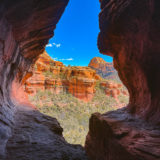
The Subway Cave Hike in Sedona: Everything You Need to Know
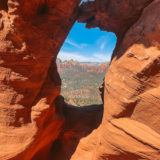
The Schnebly Hill Windows Hike in Sedona: The Complete Guide
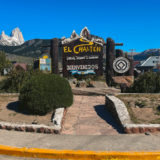
You are using an outdated browser. Please upgrade your browser or activate Google Chrome Frame to improve your experience.

- Trip Styles
- Destinations
- Patagonia Hiking Tours

- Global Hiking Vacations
PATAGONIA HIKING & TREKKING
Enjoy a once-in-a-lifetime trip to Patagonia, one of the most incredible hiking destinations in the world!
Patagonia is, simply put, a hikers’ paradise. The region of Patagonia encompasses the southern tip of South America in both Chile and Argentina, where the weather and climate mirror that of Northern Canada and Alaska in the Northern Hemisphere. This awe-inspiring landscape is home to a stunning sliver of the Andes Mountains, as well as deserts, steppes and grasslands. Wildland’s Guided Patagonia hikes are all-inclusive opportunities to discover Patagonia’s sheer granite spires, towering mountains, glaciers, lakes, rivers, wildlife, and more!
Our Patagonia hiking tours are focused on Torres del Paine National Park, an invaluable conservation and wilderness gem in Chile; and Parque Patagonia, a vast wilderness preserved through private conservation funding and donated as a national park to the Chilean Government. We have plenty of itinerary options for those that love to hike, for all abilities and levels of comfort. Come explore one of the world’s most premier adventure travel destinations on your next unforgettable hiking vacation!
Check out our list of Guided Patagonia hiking and trekking tour options below or give us a call at 1-800-715-HIKE (4453) to request more information or reserve a spot today!
World-Class Hiking Destinations

Patagonia National Park
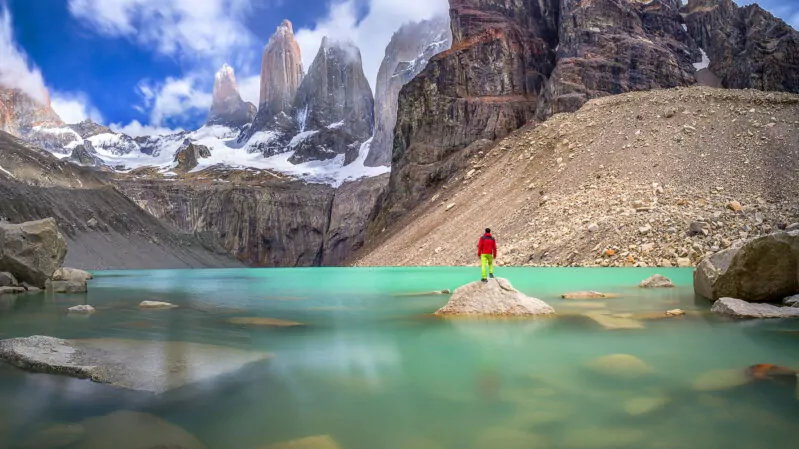
Torres del Paine Treks
All patagonia hiking tours trips ( 5 results), filter trips.
Trip Length
Wild Patagonia Explorer
Torres Del Paine W Trek
Torres Del Paine O Circuit
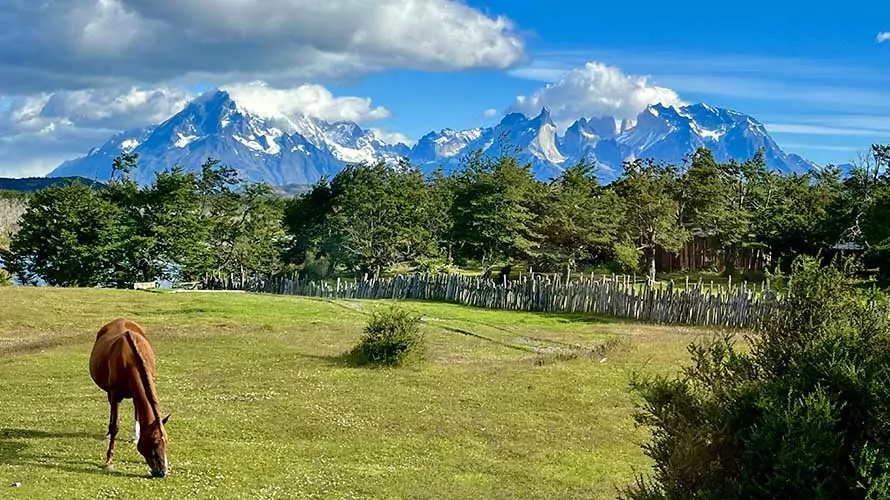
Patagonia Lodge Based Trek
Villa Serrano Add-On Package
WHY HIKE PATAGONIA WITH WILDLAND?

1. TOP RATED ADVENTURE TRAVEL COMPANY
For 15-plus years Wildland has been leading guests on hiking adventures around the USA and the world. In that time our trekking adventures have earned 4,000-plus online reviews, with more than 99% of those 5 stars. These reviews are also on third party review sites (Trip Advisor, Google, Trust Pilot, etc.) which has a much higher level of integrity than self-hosted reviews.
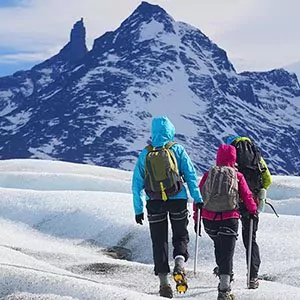
3. ALL-INCLUSIVE TRIPS
We designed our Patagonia hiking tours so you can focus all of your energy on enjoying the stunning landscapes and experiences this region offers. Our trips include local transportation (with pick-up and drop-off at the local airport), lodging for the duration of the tour, meals, top-of-the-line gear, permits and fees, and of course, expert local Wildland guides.
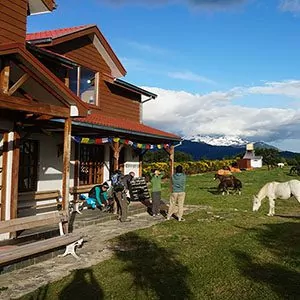
5. HAND PICKED ACCOMMODATIONS & GEAR
Our accommodations are carefully selected to provide a high quality pre-trek and post-trek lodging experience. On our treks, the lodging is in backcountry huts (“refugios”), or – on our Lodge-based Tour – at a wonderful, cozy lodge. And our gear is made by premier outdoor retail companies who specialize in outfitting hiking and camping enthusiasts.
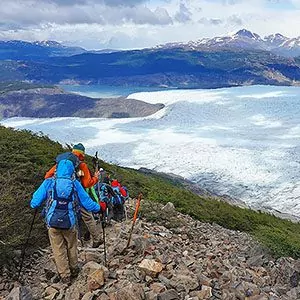
2. ALWAYS SMALL GROUP TRIPS
Our Patagonia trips, like all of our hiking and backpacking tours, are always small groups. Our Patagonia Treks specifically are capped at 12 guests with 1-3 guides. This intimate group size allows us to better customize the experience for each guest, and it also enables our guests to get a deeper and more authentic cultural experience with the local guides.
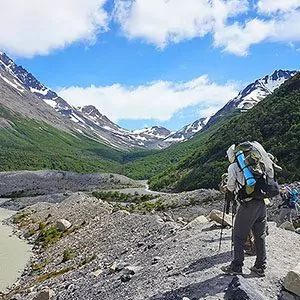
4. LOCAL, EXPERT WILDLAND GUIDES
Our Patagonia guides are some of the very best in the business. Local Chileans, they were carefully vetted, brought onto the Wildland team and trained to maintain our high standards. Our guests regularly rave about our Chilean guides, who are able to give you an immersive experience in the Patagonia culture as well as a world-class adventure travel experience.
Patagonia Introduction Video
Check out a video introduction to our Patagonia trekking program. See video footage and slideshows of our trips including the glacier hiking and sea kayaking portions. Torres del Paine is a national park everyone who loves to travel and hike should visit at least once!

MORE ABOUT PATAGONIA HIKING VACATIONS
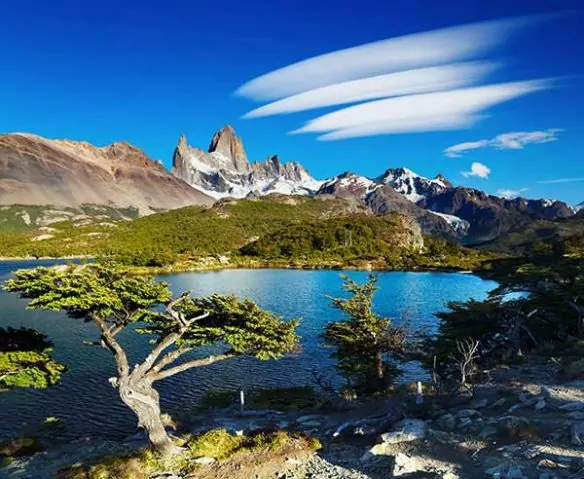
WHY A PATAGONIA HIKING TRIP?
Patagonia is in many ways the South American equivalent of Alaska – it’s a region characterized by vast wilderness; harsh winters; stunning, short summers; and breathtaking, extremely photogenic mountain scenery. Patagonia’s iconic landmarks are the soaring granite towers in Torres del Paine National Park in Chile and in Los Glaciares National Park in Argentina. Guided Patagonia hiking trips are wonderous adventures with glaciers, alpine lakes, waterfalls, unique wildlife, and cozy backcountry accommodations in the region’s “refugios.” Bottom line is if you like to hike and travel, Patagonia is a must-visit destination to add to your “Life List!”
THE WILDLAND HIKING EXPERIENCE
Our international trekking vacations are all-inclusive hiking packages that allow you to explore regions around the world without having to worry about many of the difficult logistics of international travel. We pick you up at the regional airport, provide lodging for the duration of the trek, and drop you back off at the airport on the final day. (If you’d like extra days in Patagonia before or after your trip, we’re happy to help you set that up as well.) We hand-pick unforgettable hiking routes and provide expert trekking guides with in-depth local knowledge and expertise. You can expect wonderful meals, fantastic accommodations that put you right in the action, and top-notch customer service!
TORRES DEL PAINE OR PARQUE PATAGONIA?
One question we receive relatively often from our Patagonia trekking guests is whether to hike Torres del Paine National Park or join us in Parque Patagonia . The answer is pretty straight forward – are you looking to have an iconic and relatively comfortable national park experience, or a pretty hardcore wilderness experience?
In Torres del Paine, we (for the most part) stay in Patagonia’s famous refugios, which are backcountry lodges with dorm-style sleeping, bathrooms, hot meals…etc. Trips in Torres del Paine National Park include the Torres del Paine W Trek , Torres del Paine O Circuit , Torres del Paine Basecamp Tour , and our Lodge-based Patagonia Hiking Tour (which stays in a cozy lodge outside the Park but in a perfect location).
Parque Patagonia, on the other hand, is a massive, recently-designated national park that is mostly deep wilderness and requires backpacking and camping. Not to worry though! The Wildland team has been operating guided backpacking trips since 2005 and are one of the world’s premier backpacking guide companies. We know how to make a trip comfortable, exciting and enriching. We offer one trip in Parque Patagonia right now, which is our Parque Patagonia Trek . Regardless which Patagonia trekking tour you choose, one thing’s for sure – it’s going to be an unforgettable adventure!
HIKE PATAGONIA WITH OR WITHOUT A GUIDE?
Patagonia hiking trips can be done with a guide company or on your own. Patagonia hiking companies like Wildland provide a variety of packages from very, very basic options to premier tours like Wildland’s which are all-inclusive. The value points of traveling with Wildland Trekking are many: the confidence and peace of mind that comes from traveling with a proven, premier trekking company; reservations, permits, and logistics are taken care of for you; worry-free adventure travel as you’re accompanied by expert, highly trained guides; exceptional meals and gear; in-depth knowledge of the local area, flora, fauna…etc. and more!
WHEN TO HIKE IN PATAGONIA
Being in the Southern Hemisphere, Chile has opposite seasons to North America and Europe. That makes their summer months December through February, and shoulder season months October-November and March-April. We heartily recommend trekking in Patagonia in the shoulder months if possible, as the crowds are much lighter than summertime, although the weather can certainly be a bit more spicy. Average temperatures and precipitation in Torres del Paine National Park during these months are detailed in this table:
wildland Wires
Sign up to receive our exclusive Wildland Wire emails and stay up to date with Wildland Trekking's promotions, discounts, contests, outdoor tips and tricks, trip reports and more!
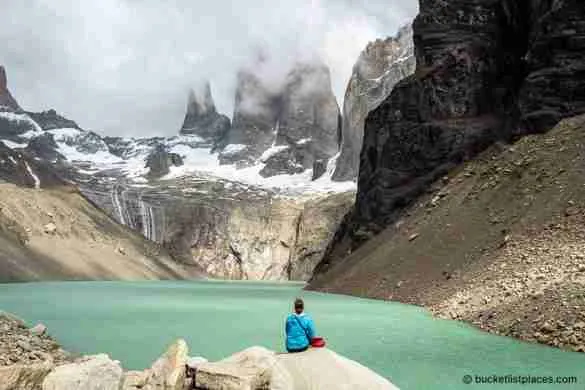
Ultimate Guide to Hiking the W Trek in Patagonia
Situated in the southern realms of South America , Patagonia is one of the world’s last untouched wildernesses. Chilean Patagonia is a land of towering peaks, crystal-clear rivers, blue-hazed glaciers and treeless steppe, it offers vistas like nowhere else on Earth.

Often at the top of hiker’s bucket list, the region’s most celebrated trekking route, the W Trek, takes a ‘W-shaped’ path through Chile’s Torres del Paine National Park in Patagonia. There’s perhaps no better way to explore the region’s dramatic landscapes than on foot, so we’ve created a comprehensive guide with everything you need to know about hiking Patagonia’s famed W Trek.
Travel Guide to Hiking the W Trek in Patagonia
Hiking the w trek basics.

While scenic, hiking the W Trek is no gentle stroll in the park. Demanding in places, it requires a good level of basic fitness to cover its 50-mile length successfully. This is not least because altitude is a significant factor on the route, topping out at more than 3,500 feet above sea level. After all, the W Trek lies deep within the southern reaches of the mighty Andes mountain range. Located within Chile’s Torres del Paine National Park , the W trek can usually be hiked in four or five days.
There are a number of options available for those looking to hike the W trek. Some choose to pre-plan the lodging, purchase a pass and do it on their own. While this is certainly an option, the lodges fill up months in advance. Another option for those that don’t want to hike the W trek alone or are booking closer to your hike date and the lodges are full, is to book a guided hike.
Guided hikes can be private or you can book a small group hike to go with a guide and some other people.
Accommodation on the W Trek
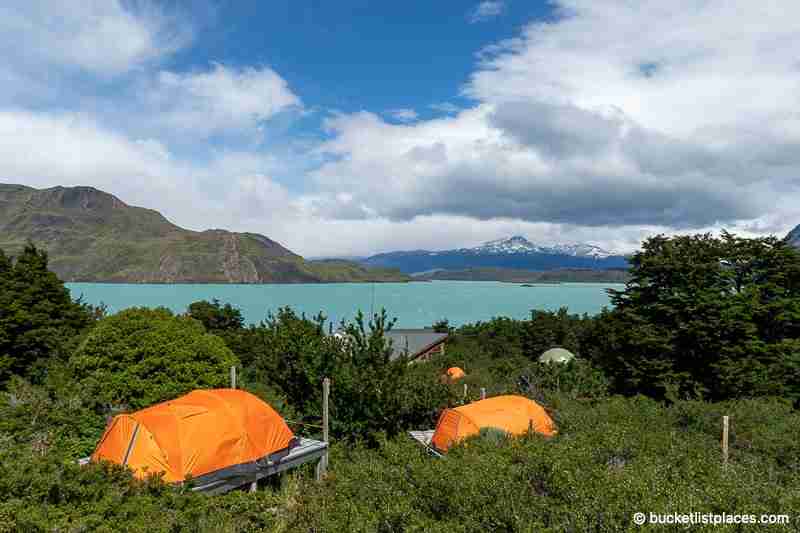
Most of this multi-day hike will require overnight camping in tents or at a designated lodge, with hostels and hotels accessible at the start and end of the trek. Camping is only permitted with designated refuges, or refugios at Torres del Paine National Park. Keep in mind that these often get booked up a year in advance so make sure to plan ahead to get the best spots at your favorite refugio.
Lodging at the refugios are either tent camping or a shared room inside the lodge. Tents provided at the refuge are meant for the colder weather, rain and wind so they are warmer than tents you may be used to. Still, if you require the comfort of your own bed inside a warm, cozy lodge then make sure to book even further out because those rooms book up the fastest.
The upside of this arrangement is that you’ll have access to shared bathroom facilities, which generally include hot showers ideal for soothing sore muscles after a day’s walk. Refuges also have heating and electric lighting, and a communal dining room for eating meals sheltered from the elements. Most contain a small shop selling basic items.
Many of the refugios even have wifi so you can catch up on communication with loved ones. Keep in mind that the cost is much higher because it is satellite internet. You will not have cell service while hiking the W trek so make sure your loved ones are aware.
HOT TIP : If you find that individual reservations are booked up in all of the refugios, there may still be availability through a guided tour . You can join a guided hiking tour that is organized by the companies that own the shelters and this comes with a guide for your hike as well as lodging at the shelters along the way. It will be slightly more expensive than hiking and booking everything solo and you will be restricted to one company of shelters versus being able to pick and choose but the upside is your dates will be more likely to be available when planning closer to your travel date.
When to Tackle the W Trek

Hiking the W Trek is open right throughout the year, but if you’re planning on heading along it independent of guides and tour groups you’re limited to the period between October and April. This coincides with the southern hemisphere’s summer months and is also great to combine with a visit to the beautiful Atacama desert .
Independent hiking is complicated by the fact that places at refugios need to be reserved ahead of time, and can be fully booked months in advance. This is particularly true for the high season, which lasts from December to February. The route is also at its busiest during these months, which some trekkers find takes away from the overall experience of solitude and isolation Patagonia is renowned for.
Getting Started : Where to Fly Into and How to Get There
The standard gateway to the W Trek is the town of Puerto Natales , Chile. It lies more than 1800 miles south of the Chilean capital, Santiago. Limited flights connect the airport at Puerto Natales with Santiago, and it’s often easier to fly to either Punta Arenas further south in Chile, or even to El Calafate, just across the border in Argentina.
From either of these latter airports, you’ll then have to head to Puerto Natales by road. Long distance buses cover the distance from Punta Arenas in around three hours, or around 7 hours from El Calafate including border formalities. There is also an opportunity to rent a car and drive yourself .
If coming from Argentinian Patagonia, you should arrange your visa for Chile ahead of time. However, most European, North American and Australian passport holders require nothing more than six months validity on their passport for tourist visits of less than 60 or 90 days (dependent on nationality).
Puerto Natales – The Gateway to Torres del Paine National Park

Puerto Natales has a good cluster of hostels and hotels that are well used to welcoming those starting or finishing hiking the W Trek. Perhaps even more helpfully, this once small fishing village has a number of stores where hikers can rent any equipment they may need. Most stay open until 8 or 9 pm, allowing you to organize any kit requirements even if you arrive later in the day.
It’s also possible to securely store gear you won’t need during the trek. Ideally, your backpack won’t weigh more than around 30 lbs.
Storage can be arranged with your guiding service if you hire a guide, with your hostel/hotel depending on where you are staying or you can rent storage at the bus station. Ask your hotel or hostel if it is possible to store some of your items while you do the W trek. If they don’t have storage available, you can store your items at the bus station. Be aware of the opening hours if you choose this option as you will only be able to drop off or pick up your items during specific hours.
Getting to the W Trek from Puerto Natales, Chile
It’s possible to walk the W Trek in either west to east or east to west directions. That said, the vast majority of trekkers start the trail at the end closest to the entry gates into Torres del Paine National Park, which means they tackle the route from west to east. In turn, starting the trek in this direction means you’re not thrown into the deep end on day one.
Several trustworthy companies run buses that drop off and pick-up hikers from the park entrances. The trip takes between two and four hours depending on which entrance is used. They all have departures in the morning from Puerto Natales, usually around 7 am. If you’re struggling to get a seat, less popular services also operate in the early afternoon, leaving Puerto Natales around 2.30 pm.
You should buy your ticket ahead of time at the company offices inside Terminal Rodoviario , where the buses depart from. You’ll find the terminus on Avenida Espana. Round trip tickets (around $20) permit a ride on any of that company’s returning buses.
Buses generally have stops at Laguna Amarga, Pudeto, and Administrativa. The stop at Laguna Amarga is primarily used by those heading along the W Trek from east to west as it connects with the minibus to Las Torres base camp.
If you’re following the majority of trekkers in starting the W Trek at its western end, you’re better off buying a ticket to either Pudeto or Administrativa. From Pudeto, a catamaran crosses Lake Pehoé in around half an hour. Its destination is Paine Grande. As it lies midway along the W Trek route, arriving via Pudeto means repeating your day one walk on day two.
A way of avoiding this is to head instead to Administrativa and then catch the three-hour ferry that travels the length of Lago (Lake) Grey towards the stunning Grey Glacier where there is a campsite.
Fees for entering the park are the equivalent of roughly $30, and can be paid in Chilean pesos, US dollars or euros. If you pay in dollars or euros try and have the exact amount and don’t rely on there being change available. There are numerous currency exchanges in Puerto Natales. Tickets last as long as you stay within the park, or for five consecutive days of entry.
W Trek Itinerary

For those crossing Lake Grey, day one of hiking the W Trek will be mostly taken up by arrival at Grey Campsite, situated between the lake and montane forest. However, there’s still a chance to give your hiking boots a little action, with a trail leading to a viewpoint of Grey Glacier. Approximately one mile in either direction, it has an ascent and descent of around 1,200 feet in total.
If you get lucky with the weather you will have incredible views of the glacier and the glacial lake with icebergs swimming in it. The day we went was cloudy, windy and rainy making it very difficult to complete the hike. While you can’t predict the weather, be aware that the glacier creates a micro climate so just because it is sunny in other parts of the park does not mean that it will be the same nice weather near the glacier. Pack a hat and a warm jacket as it can get very cold, windy and wet.

Day two is usually the first full day of hiking the W Trek, with the path following the eastern shore of Grey Lake for the first third of the day’s route before moving inland.
The path is relatively gentle, and the scenery simply extraordinary from early on. The campsite of choice is called Refugio Italiano, which sits at the southern end of French Valley. In all, hikers usually take around eight hours to reach this point, covering around 13 miles and a further 1,000 feet in altitude.

Day three is normally dedicated to hiking French Valley which is the favorite part of hiking the W trek for many.
Following streams and rivers much of the way north, the valley offers spectacular views of glaciers towards the lookout at Britanicos Camp, although it’s uphill all the way. After taking in the majestic scene, you then complete the central part of the ‘W’ by returning to your previous night’s camp, having covered around ten miles and another 1,000 feet in altitude.
The day’s trek usually lasts around seven hours. Just like with the previous treks, the glaciers here can create microclimates which means that the weather could be unpredictable. Parts of this trek can be especially windy so hold on to your hats!

Day four of the W Trek sees hikers take on the second ‘V’ of the W-shaped route, along the Sendero Paso Los Cuernos trail. Much of the day’s path follows the shores of Lago Nordenskjöld, which are typified by alpine grasslands crisscrossed by small streams. You’ll more than likely end the day at Chileno Camp, after seven hours and 12 miles of walking.
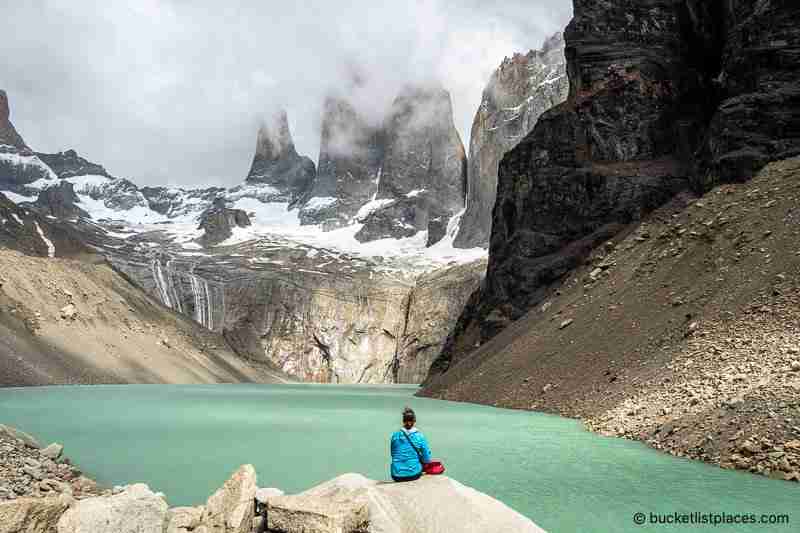
Day five is normally the last day of hiking the W Trek, although it’s possible to cover shorter distances each day thanks to a chain of intermediate campsites along the way.
For most though, day five means the journey to the base of Los Torres mountains, which rise to a height of 9,500 feet. Heading towards their granite towers you’ll follow the sound of the River Asencio. The trek ends with a scramble over loose moraine, so be sure to save some energy.
In all, you’ll cover around nine miles in six hours, allowing plenty of time to meet the bus back to Puerto Natales.
What to Pack when Hiking the W Trek
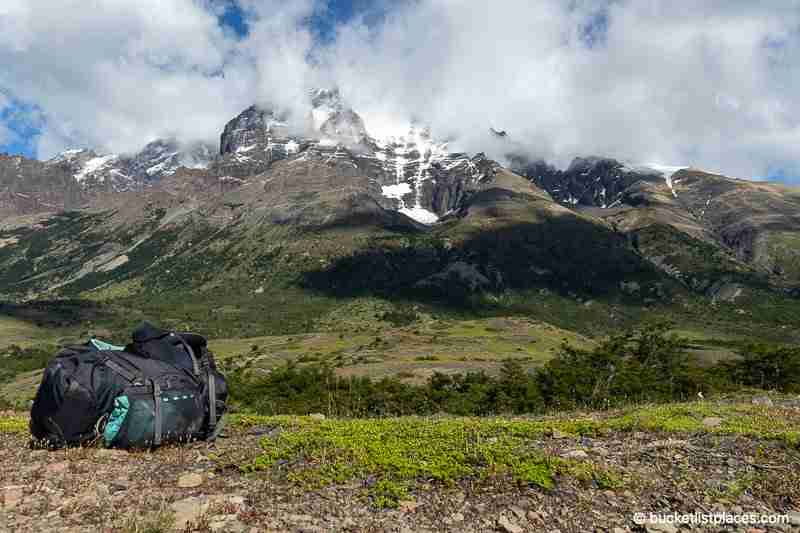
Camping equipment can be rented at refugios, but this will add to your costs. If you’re completing the W Trek as part of a tour , tents and meals will be prepared for you. Even so, you’ll still need some specialty equipment to finish hiking the W Trek. In addition to cold weather gear, you should take waterproof clothing, as well as a battery-operated head torch for nights in camp and early morning starts.
Weather can really vary in the summer so you will need both warm clothing on the cold days and nights and light clothing for hotter days.
Below is a brief checklist of the must have things to pack along with you so you are prepared for the elements when hiking the W trek.
While there are many tours and ways to visit Torres del Paine National park , The W Trek in Torres del Paine National Park is an ultimate bucket list experience for anyone visiting Patagonia in Chile. Taking in incredible mountain, lake and glacier views there’s really nothing else like it. Follow the recommendations in our guide to hiking the W Trek in Patagonia, and you’ll be well on your way to being able to tick off this bucket list.
Looking for more epic bucket list destinations in South America? Check out our content for Ecuador for some incredible places to explore.
Bucket List Places Contributors
Roatán travel guide: best things to do, where to stay, eat, drink, galapagos luxury cruise review: aboard quasar evolution 8 days/7 nights, you may also like, kenya safari travel guide: the best parks to..., san juan islands travel guide and ultimate 10-day..., a guide to thailand’s remarkable temples, 10 day alaska road trip itinerary: ultimate alaska..., atacama desert travel guide: things to do, where..., most beautiful places in ethiopia: ultimate travel guide, 10 most beautiful places in laos to visit, diving in galapagos: one of the best places..., galapagos luxury cruise review: aboard quasar evolution 8..., roatán travel guide: best things to do, where....
This website uses cookies to improve your experience. We'll assume you're ok with this, but you can opt-out if you wish. Accept Read More

The Best Patagonia Itinerary: 7 to 10 Days in Patagonia [Or More]
Patagonia is a fascinating place. With its wild weather, beautiful hiking trails, and picturesque glaciers, it’s an adventure playground.
I loved every minute of my trip to the region. But before I arrived, I had hundreds of questions (which you probably do too)!
“How many days in Patagonia?”
“Which is better: Chile or Argentina Patagonia”
“Can I visit Patagonia without a tour?”
Now that I’ve been there and spent over a month exploring the Chilean and Argentinian side, I’ve crafted this perfect 10 day itinerary for Patagonia.
It’s easily customizable to a 7 day itinerary but also includes other places to visit if you have 2 weeks in Patagonia.
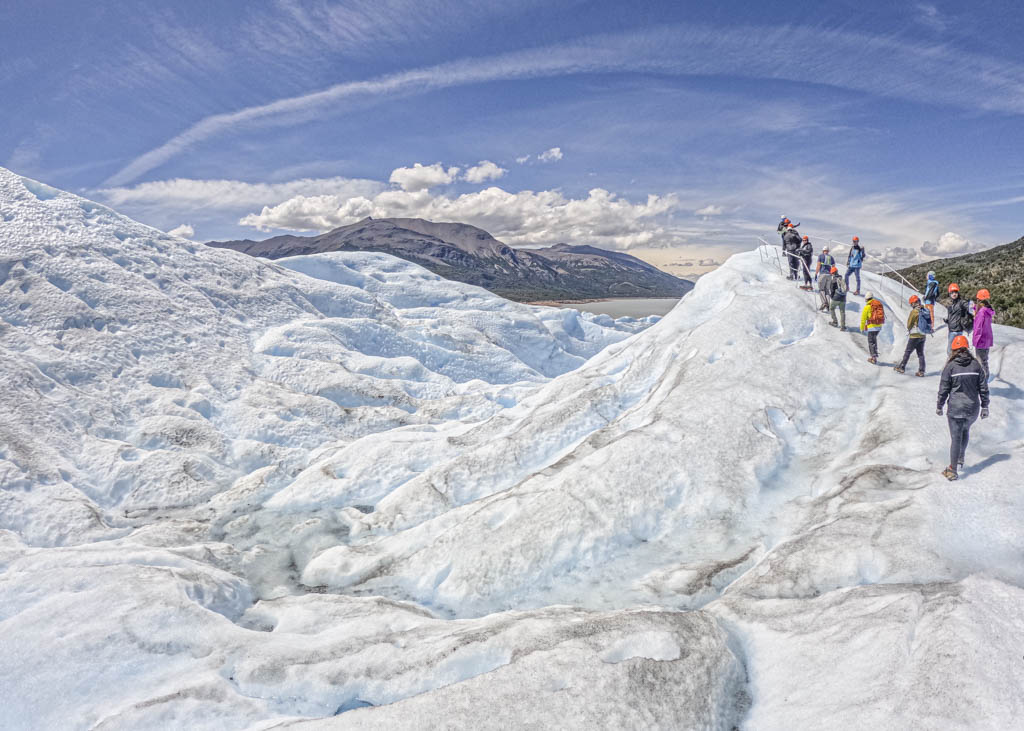
Torn Tackies contains affiliate links. If you make a purchase using one of these links, I may receive compensation at no extra cost to you. See my disclosure for more information.
Quick Navigation
10 Day Patagonia itinerary overview
- Day 1-3: El Chalten (2 nights)
- Day 4-5: El Calafate (2 nights)
- Day 6-10: Torres Del Paine (5 nights)
My Patagonia highlights
My overall favorite place in Patagonia: It’s an easy one! I loved the charming town of El Chalten in Argentinan Patagonia.
Most beautiful place: I still can’t get over how stunning Perito Moreno Glacier is! I did this Mini Trekking glacier tour from El Calafate, and it was one of my Patagonia highlights.
Best multi-day hike in Patagonia: The W Trek in Torres Del Paine, Chile. This hike allowed me to experience the real Patagonia. I had all four seasons in one day and saw landscapes I never knew existed.
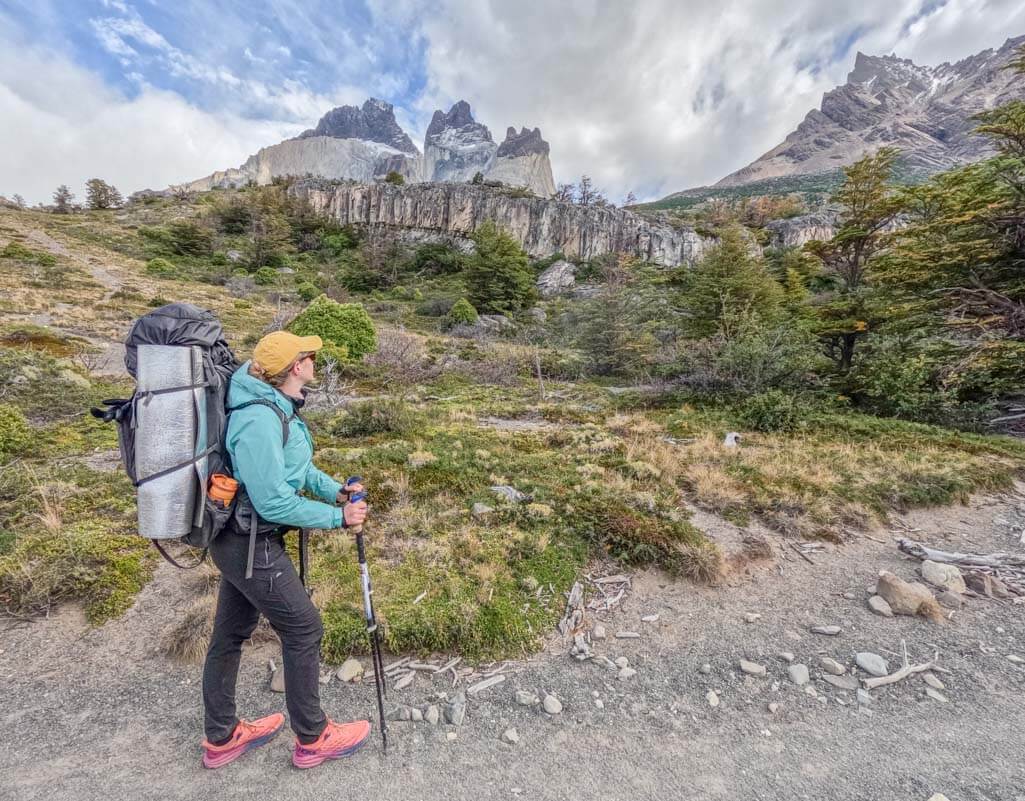
Day 1: Buenos Aires to El Chalten: Hike to Mirador Condores
Surrounded by snow-capped peaks, El Chalten is a small hiking town home to some of the best trails, which I’ve detailed in my El Chalten hiking guide.
It’s my favorite place in all of Patagonia. And if there’s one destination you cannot miss, it’s El Chalten.
If you’re coming from Buenos Aires, you’ll be traveling for most of the day. When you arrive in El Chalten, drop off your bags and put on your hiking shoes!
Mirador de los Condores is a quick and easy hike that’s perfect for day 1 of your Patagonia itinerary. It offers the best views of El Chalten and takes roughly 2 hours to complete.
Top tip: The sun sets after 9 pm in Patagonia during the summer, so you’ll have more than enough time for this hike, so long as you arrive before 6 pm.
How to get to El Chalten
There is no airport in El Chalten. The closest airport is in El Calafate, which services flights from Buenos Aires, Bariloche, and Mendoza in Argentina.
You’ll then need to take a 3.5-hour bus from El Calafate to El Chalten. I booked my bus through Bus Bud . You can check prices and availability here .
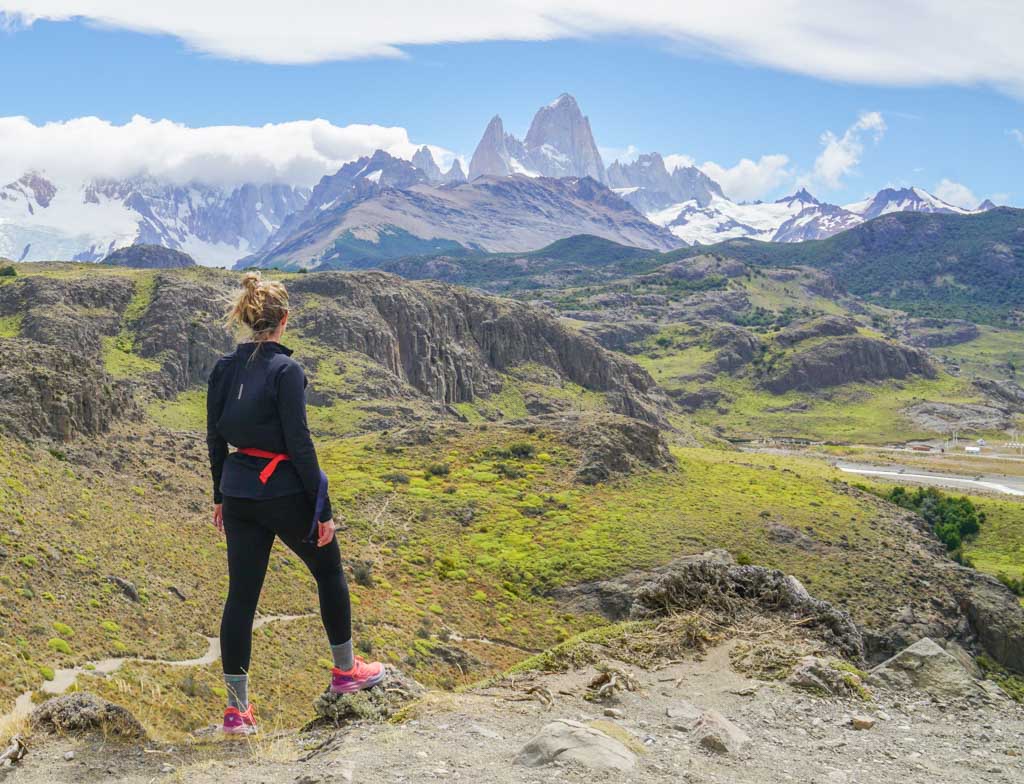
Where to stay in El Chalten
Patagonia is generally a lot more expensive than the other destinations in Argentina.
If you leave it too late, the more affordable options will be taken, and you’ll have to settle for something a bit further from town or out of your budget.
Apart Guillaumet is a basic accommodation option that ticks all the boxes, including an affordable price.
If you’re looking for something more luxurious, you can’t go wrong with Chalten Suites Hotel . There’s an onsite restaurant, and it’s just a stone’s throw away from the trails.
Day 2: Laguna de Los Tres hike (El Chalten)
Laguna De Los Tres is the crown jewel of El Chalten. It’s a turquoise blue lake at the base of the famous Fitz Roy mountain and offers picture-perfect views.
It’s a challenging 9-hour return hike to get from El Chalten to Laguna de los Tres. You’ll need to be prepared with food, water, and a lot of energy.
It was the hardest day hike I did in Patagonia (but so worth it).
You don’t need a guide for this hike or any others in El Chalten, as the routes are easy to follow and clearly marked. Read my guide on getting to Laguna de Los Tres for more details.
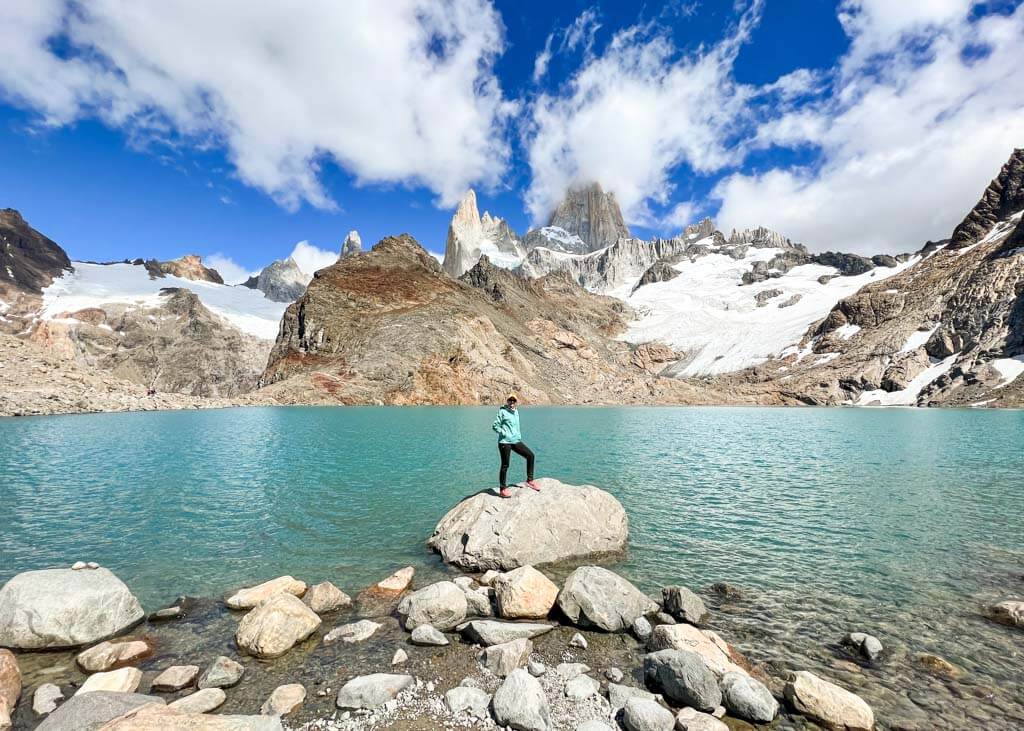
Day 3: Laguna Torre (El Chalten)
Laguna Torre is a vast glacier lake filled with small icebergs. The Cerro Torre Mountain range forms the backdrop and looks like something from a postcard.
The Laguna Torre hike is equally impressive as Laguna de los Tres. The difference? It’s a lot easier! It takes around 6 hours to complete, but most is a flat trail.
Try to start your hike before sunrise to beat the crowds. This will also ensure you’re back in El Chalten by lunchtime.
After the hike, hop on a bus back to El Calafate and spend the night here. It’s time to check out the most incredible glacier in the world!
Other things to do in El Chalten
If one hike in El Chalten is enough for you, or if you have more than 7 days in Patagonia, here are a few other amazing things to do around El Chalten.
White river rafting: I went river rafting in El Chalten and loved it. The rapids aren’t too intense, but they offer a nice break from all the hiking.
Rent a car and make a day trip to Lago del Desierto: Lago del Desierto is a beautiful lake surrounded by forests with picturesque mountain views. Check out Glacier Huemul on the way.
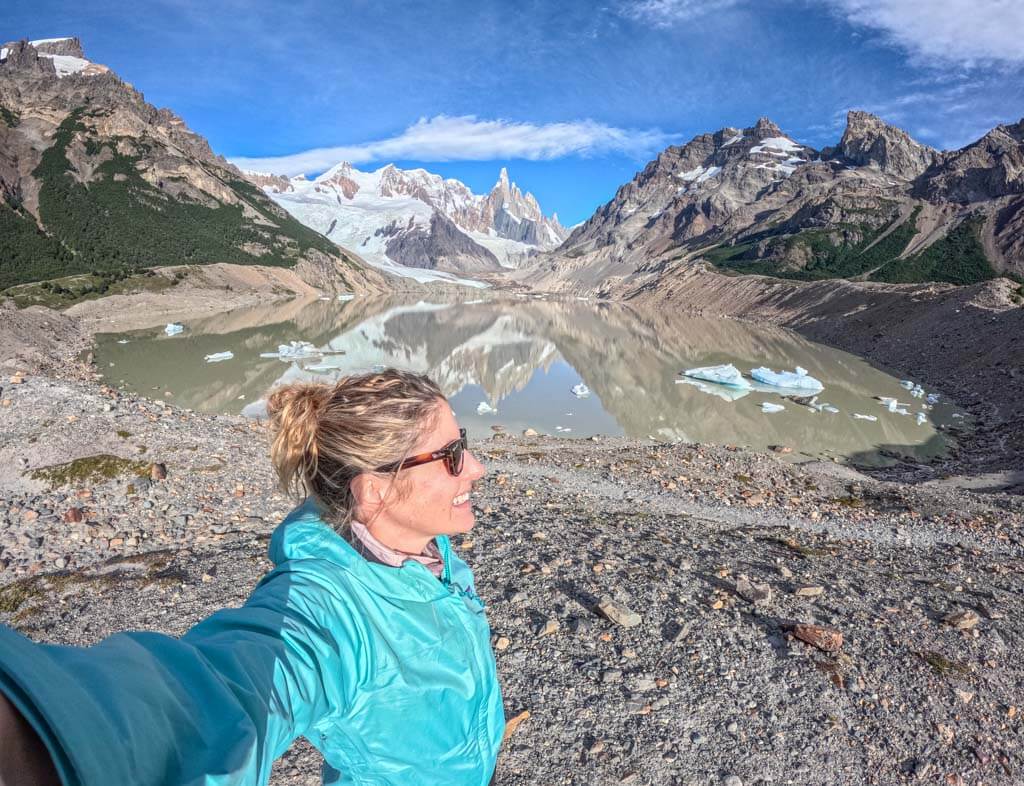
Day 4: Perito Moreno Glacier (El Calafate)
Today, you’ll wake up in El Calafate and make an exciting day trip to one of the most incredible sights I’ve ever seen, Perito Moreno Glacier.
It’s an iconic Patagonia attraction, and its beauty completely blew me away.
Perito Moreno Glacier is located in Los Glaciares National Park, about an hour’s drive west of El Calafate. There are a few ways to experience the glacier.
How to visit Perito Moreno Glacier
Perito Moreno walkways: If you’re on a budget, you can book a bus to the park and visit the walkways only. These comprise of 4 km of interconnected paths that offer panoramic views of the glacier.
Glacier trekking tour: I did this Minitrekking tour , which was well worth the money. Not only do you get to walk on the actual glacier, but it also includes a short boat trip. You’ll have some time to explore the walkways.
Ferry around Perito Moreno: The Minitrekking tour sells out fast, so a good backup option is this boat cruise , which allows you to get closer to the glacier.
Regardless of what tour you do, visiting Perito Moreno Glacier will be expensive! But it’s worth every cent.
Book your spot here , as there is limited availability.
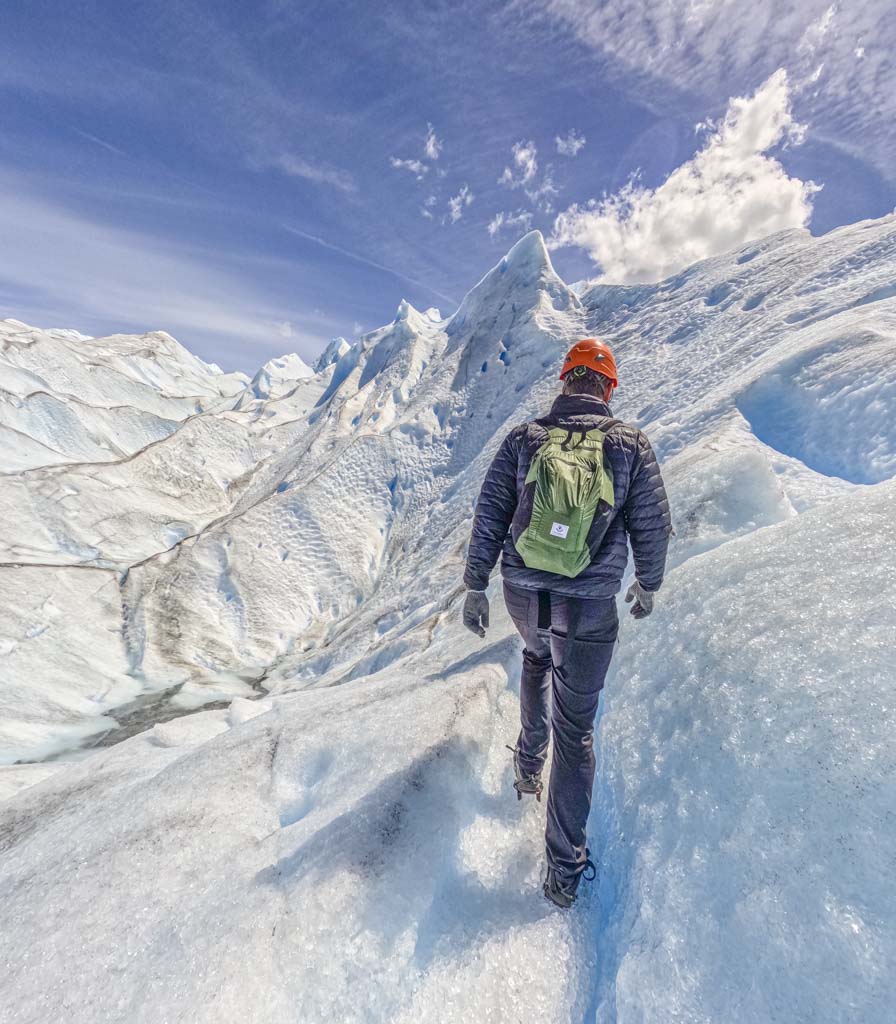
Where to stay in El Calafate
El Calafate is a bigger town than El Chalten, so your accommodation options are greater. It also means that some are closer to the main road than others.
I stayed at Folk Hostel , and it’s a great choice for backpackers. It’s close to the bus terminal, but you’re going to have to walk a bit further to get to the main town center.
Mirador del Lago Hotel has gorgeous large rooms with beautiful views. The breakfasts are exceptional, and it’s perfect for those looking for a more comfortable and luxurious stay.
Day 5 Patagonia itinerary: Puerto Natales
For the second half of your itinerary for Patagonia, there are a few places to visit.
I recommend crossing the border and checking out the Chilean side. You can then fly out of Santiago in Chile rather than crossing the border back into Argentina.
But depending on your time and interests, you may want to visit Bariloche or Ushuaia on the Argentinian side instead.
Where would I go? It’s an easy one! Torres Del Paine National Park in Chilean Patagonia. This park is home to the famous O and W Treks.
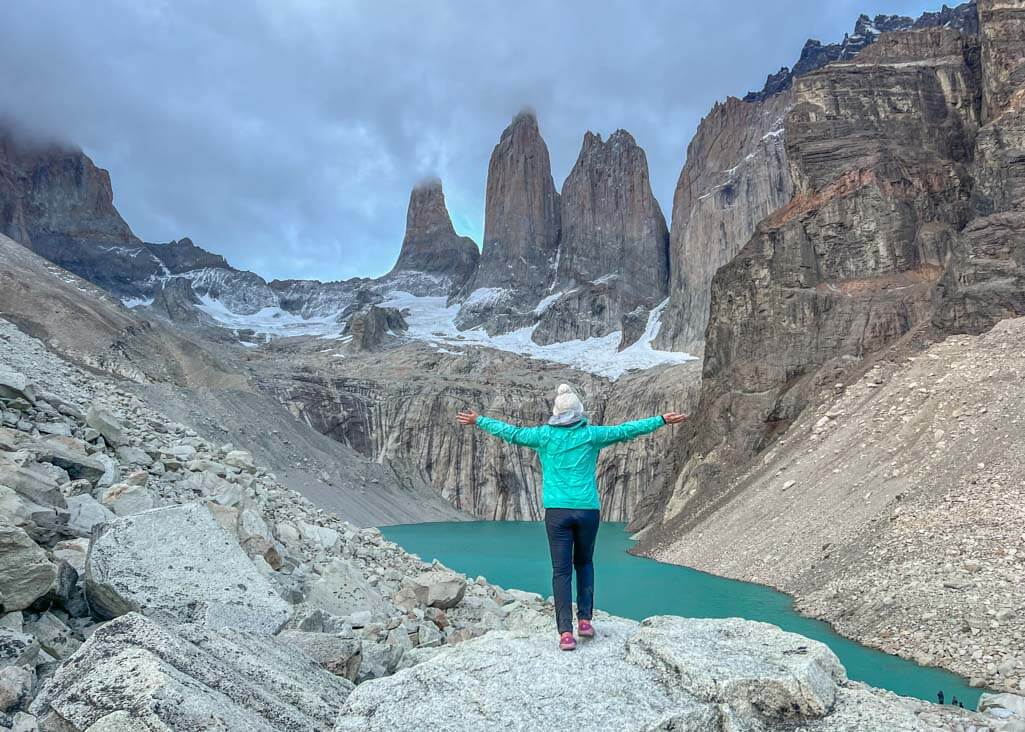
How to get from El Calafate (Argentina) to Puerto Natales (Chile)
Puerto Natales is the gateway to Chilean Patagonia.
Getting here involves an easy border crossing, which you’ll need to do via a bus from El Calafate in Argentina to Puerto Natales in Chile.
The bus drive takes 5 hours but allow for an extra hour at immigration. The buses are extremely comfortable, with large reclining seats. Check prices and availability here.
However, the town of Puerto Natales isn’t as charming as some other towns in Patagonia. So rather spend your first night in Puerto Natales and the rest in the national park.
Where to stay in Puerto Natales
I stayed at El Patagonico Hostel , a fantastic hostel in the heart of Puerto Natales. They offer private and dorm rooms and a big kitchen and lounge area. The price is hard to beat, and they’ll store your bags for free while you do the W Trek.
If you’re looking for a hotel with lake views, you can’t go wrong with The Singular Patagonia Hotel . The elegant rooms are some of the best you’ll find in Puerto Natales, and the staff are outstanding.
Day 6 – 10: W Trek (Torres Del Paine)
The W Trek is a 4-night/5-day trek through Torres Del Paine. It’s not as challenging as you think and can be done independently.
But the notorious Patagonia weather will affect your experience. During my W Trek (which you can read about here ), I experienced the most intense weather conditions.
Sunshine, rain, snow!
I was blown over numerous times while walking through French Valley and had to get down on my haunches to catch my breath. It rained heavily one day. The next, it was sunny and hot.
But despite not having perfect conditions and spectacular views throughout, braving this weather was one of my highlights. I got to experience Patagonia at its finest – the raw and harsh conditions were unlike anything I’d experienced before.
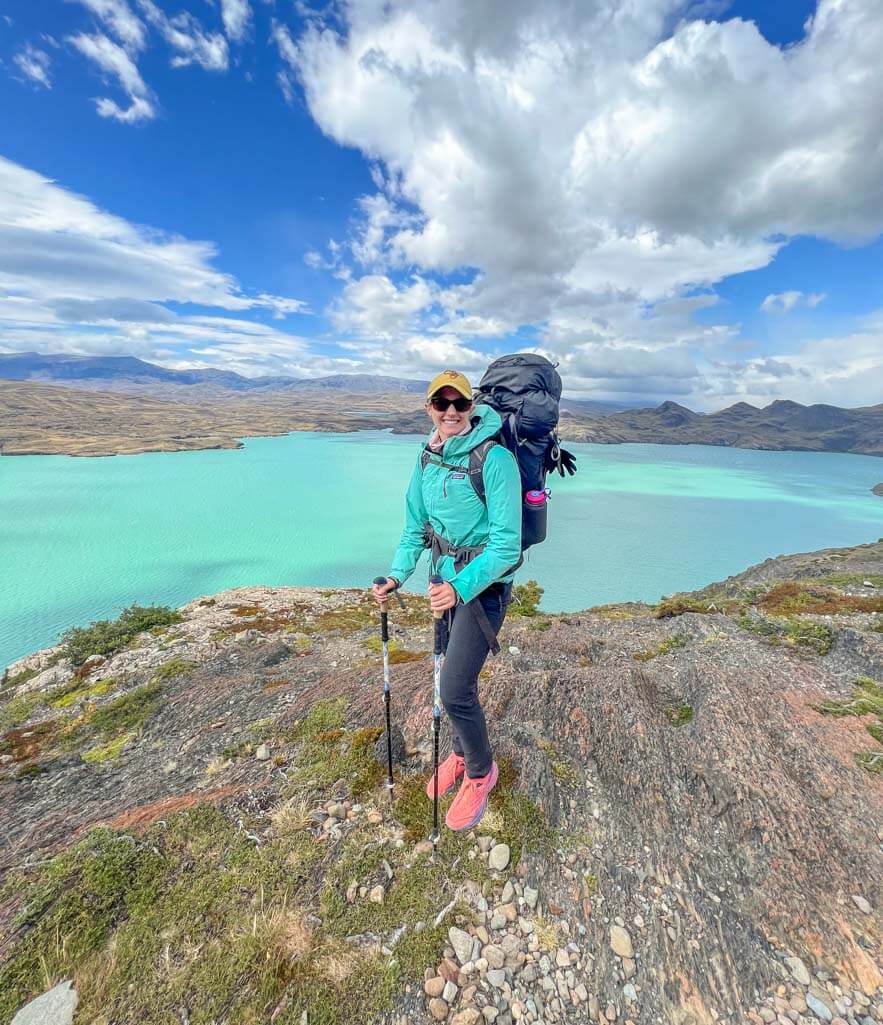
Accommodation on W Trek
If you’re doing the W Trek without a guide, you’ll need to organize your own accommodation. You can choose mountain huts or campsites, but the prices differ substantially.
Bookings open in July every year, and it’s a scramble to get a spot.
Two companies manage the accommodation along the W Trek: Vertice and Fantastico Sur (also known as Las Torres).
Booking your accommodation for the W Trek is a serious mission and highly time-consuming. But it’s the only downside of doing the W Trek independently.
Alternative option: Day trips to Torres Del Paine
Because of limited availability at campsites, your timing, or simply the fact that multi-day hikes are not everyone’s cup of tea, you can also visit Torres Del Paine on day trips from Puerto Natales.
If you’re choosing this option, it’s best to hire a car or take a day tour like this one .
Here are some day trip options:
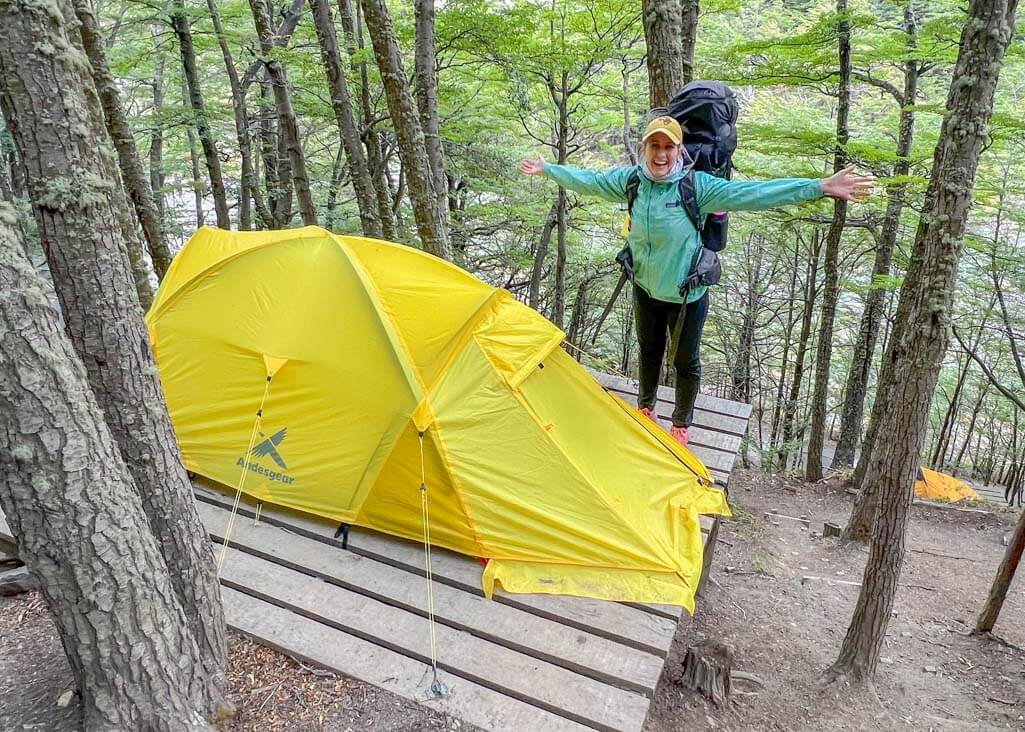
1. Mirador Las Torres (The Towers)
Mirador las Torres is an iconic site in Torres Del Paine. It’s the most popular section of the W Trek and gets busy with day trippers.
Getting to The Towers is a 9-hour return hike that starts challenging and does not get easier. The views are magnificent, though.
This is one of the best day tours from Puerto Natales to The Towers. Check price and availability here.
Top tip: If you’re following my Patagonia 10 day itinerary and struggled with the hike to Laguna de los Tres in El Chalten, skip Mirador Las Torres and opt for one of the below day hikes in Torres Del Paine instead.
2. French Valley
French Valley is the most picturesque day hike in Torres Del Paine National Park.
You’ll need to get on the first bus from Puerto Natales to the park and take the ferry to Refugio Paine Grande. From there, it’s a 2.5-hour hike to Refugio Italiano, which sits at the heart of French Valley.
3. Glacier Grey
Glacier Grey is the biggest glacier in Torres Del Paine and forms part of the western section of the W Trek.
You’ll need to catch the same catamaran as you would if you’re doing the French Valley day hike. But instead of following the trail that leads to French Valley on the right, you’ll go north to Refugio Grey.
Visiting Grey Glacier on a day trip is an ambitious yet achievable goal if you’re a fast hiker. It’s best to rather spend the night at Refugio Grey and head back to town the next day.
Top tip: If you’re planning a 7 day Patagonia itinerary and can only do 2 day hikes in Torres Del Paine, I suggest doing French Valley and Mirador Las Torres (The Towers).
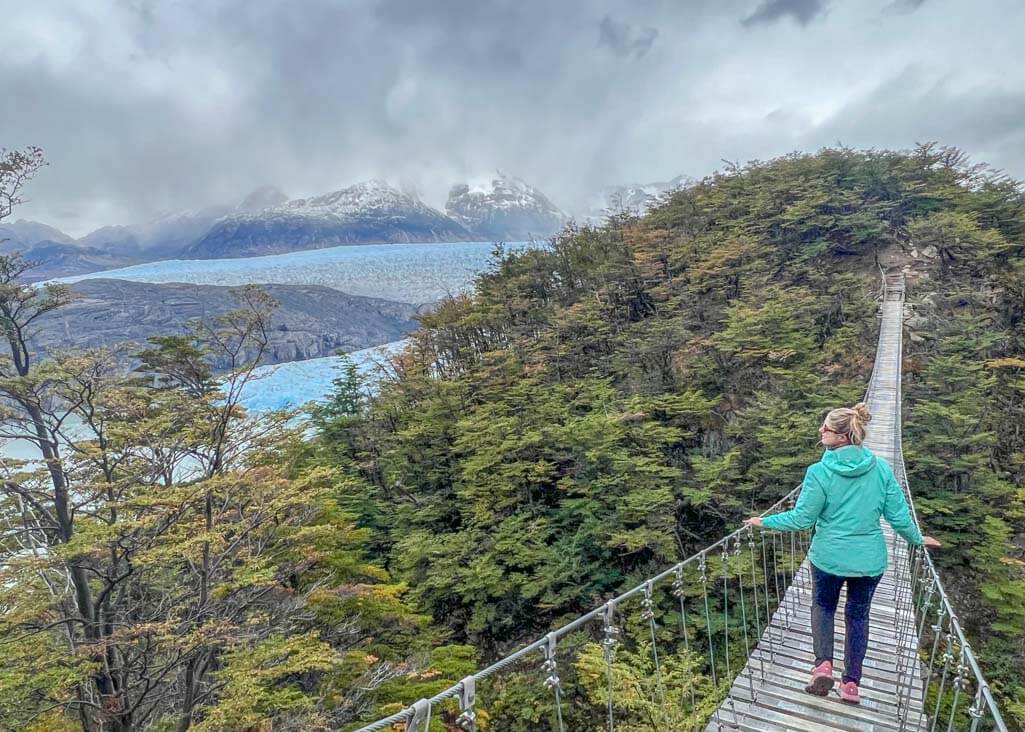
Other places to visit in Patagonia
Some travelers may want to avoid the border crossing from Argentina to Chile.
If this is the case for you, there’s the option to stay on the Argentinian side and explore more of Patagonia from there.
Bariloche is the lake district of Argentinian Patagonia. It’s strikingly different from all other places on this Patagonia trip itinerary.
Bariloche is ideal for travelers who want a break from hiking and prefer a mix of nature and comfort.
It’s best to spend 3 days in Bariloche and possibly even a night in San Martin de los Andes.
Day 1 in Bariloche
Try to arrive in Bariloche by lunchtime, so you have the afternoon to explore the town. The streets are lined with alpine-styled buildings, and the Centro Civico (the town square) is incredibly picturesque.
The Bariloche lakefront is a great place to hang out. It overlooks Nahuel Huapi Lake and is calming and serene.
A beautiful walking path leads from the Bariloche sign along the water’s edge. It passes a skate park and other sites, leading to an iconic Cathedral.
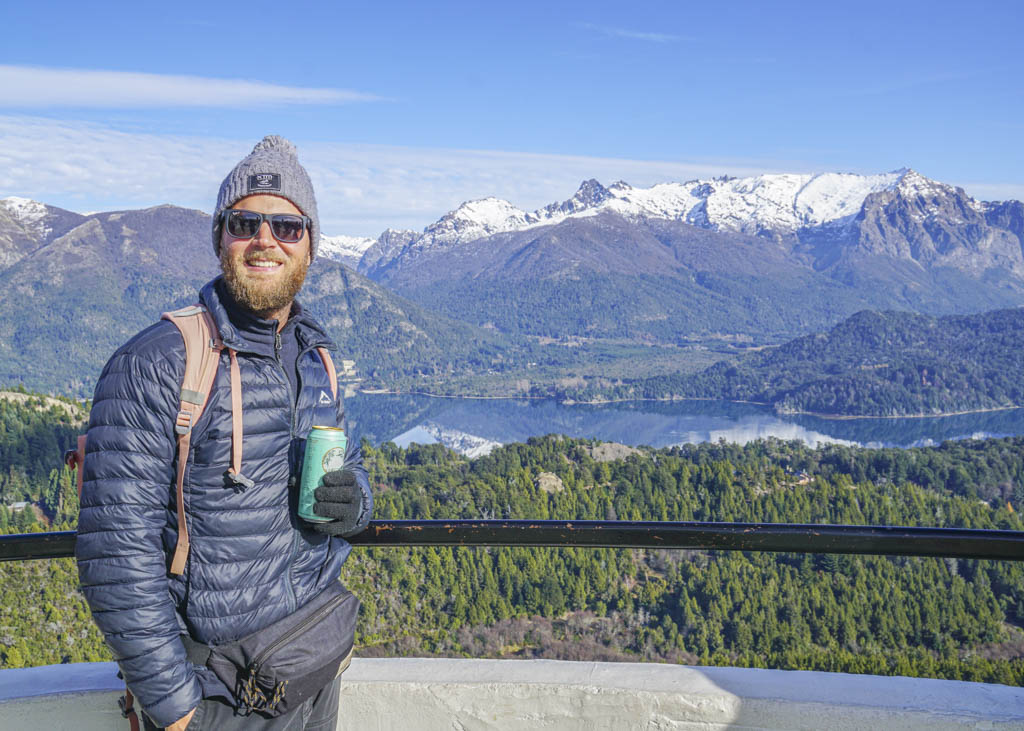
How to get to Bariloche
If you’re skipping the Chilean Patagonia side, or if you have more time in Patagonia and want to add Bariloche to your itinerary, you’ll need to get to Bariloche from El Calafate.
The easiest way is via a quick 2 hour flight between the towns.
Where to stay in Bariloche
Bariloche is a lot bigger than most Patagonia towns. There are many different areas to base yourself in. Unless you stay in the town center, you’ll need to use public buses or rent a car to get around.
I stayed at Trip Select Bariloche , just a short walk from the main road in Bariloche. The private rooms are simple yet comfortable and are great value for money.
Llao Llao Resort is one of the most luxurious places to stay in Bariloche. The location is everything, surrounded by mountain peaks with incredible views from every window. But you’ll need a car to get here.
Deciding where to stay can be overwhelming, so here’s my comprehensive guide to the best areas and accommodations in Bariloche.
Day 2 in Bariloche: Llao Llao National Park & Cerro Campanario
Llao llao national park.
An hour west of Bariloche lies Parque Municipal Llao Llao. It’s home to gorgeous hiking trails and spectacular views.
The most popular trail leads to Cerro Llao Llao, a panoramic viewpoint. You’ll walk up a steep zig-zag trail for 30 minutes to get here.
You can combine this with the Sendero de los Arrayanes trail. This loop track meanders through Parque Municipal Llao Llao, passing lush walkways and the picturesque Lake Moreno. It’s a flat trail and an excellent option for kids.
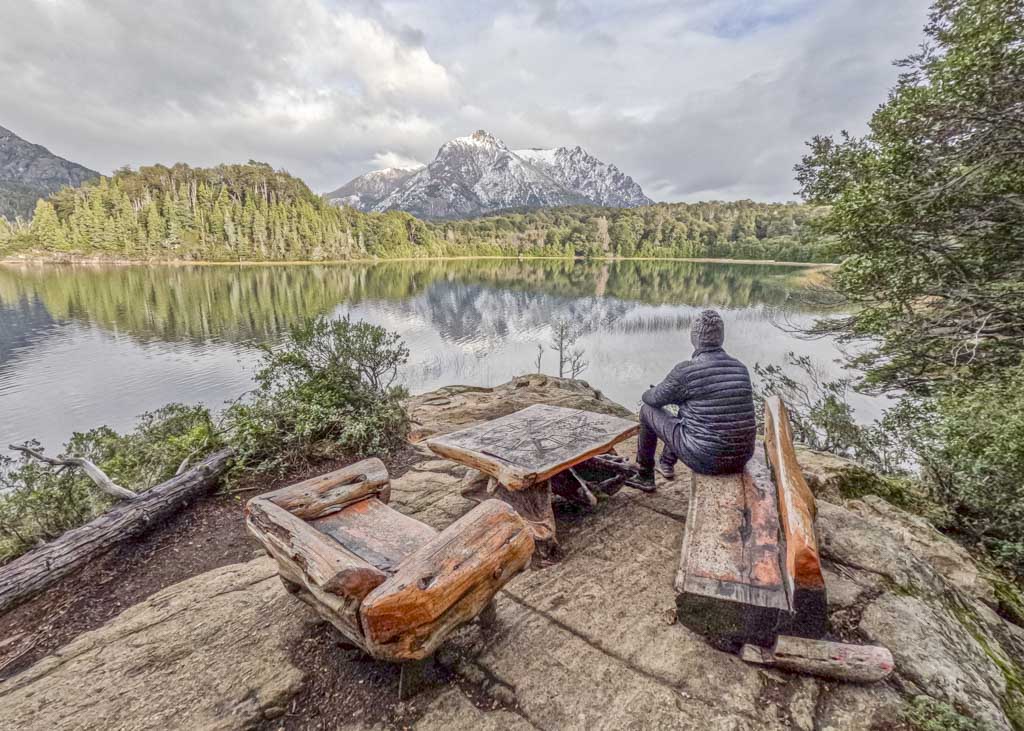
Cerro Campanario
After visiting Llao Llao National Park, make your way to Cerro Campanario. Here, you’ll find the most impressive viewpoint in Bariloche.
The best part? There’s no strenuous hike involved (unless you opt to walk instead of taking the chair lift to the top).
There are numerous viewpoints at the peak, and you’ll have 360-degree views overlooking the lake district. There’s also a small cafe and bar.
Day 8 in Bariloche: 7 Lakes drive or Refugio Frey hike
For the final day of your itinerary for Patagonia, you have two options. You can either explore the iconic 7 Lakes route or do the popular full-day hike to Refugio Frey.
7 Lakes Drive
The 7 Lakes route is one of the most scenic drives in all of Patagonia.
It starts in a lake-side town outside Bariloche called Villa la Angostura and goes north to San Martin de Los Andes.
Throughout the 7 Lakes Drive, you’ll pass seven stunning glacial lakes, dense forests, and picturesque mountain landscapes.
If you have the time, spend a night in San Martin de Los Andes. It will break up the long drive and is a quaint town to explore.
But if you only have a few days in Bariloche, you’ll need to squeeze this into one day, although two days are preferable.
This full-day tour from Bariloche stops at all the lakes. It’s an excellent option for solo travelers or those who would prefer not to rent a car.
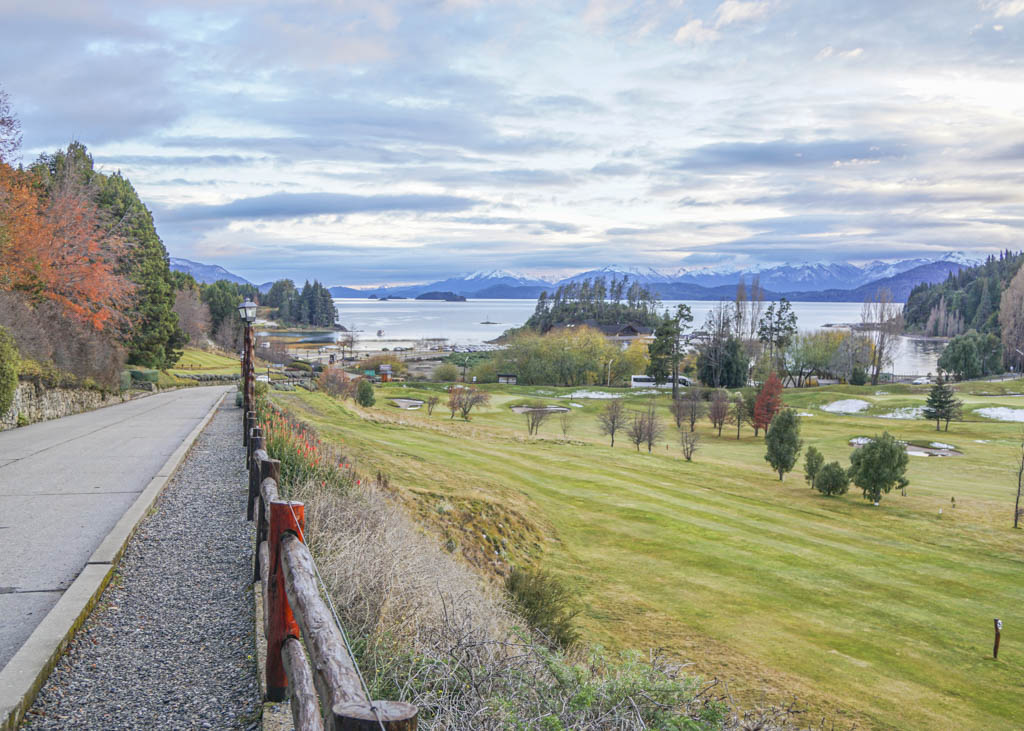
Hike to Refugio Frey
I highly recommend the Refugio Frey trek if you’d rather spend your day hiking around Bariloche as opposed to enjoying the views from a car.
It starts at Cerro Cathedral, which is Argentina’s largest ski resort. The trail ends at Refugio Frey, which sits in front of Laguna Toncek and is surrounded by craggy peaks.
The 22 km return hike takes 8 hours and is more challenging than the other hikes around Bariloche.
Best time to visit Patagonia
The best time to visit Patagonia is from October to April. The days are warmer and longer, providing ideal conditions for hiking and exploring.
Keep in mind that October and November will still be cold, and the glacier lakes may be iced up.
December through February are the best months to visit. But they’re also the busiest.
For less crowds and great weather, March is the ideal month to plan your Patagonia travel itinerary.
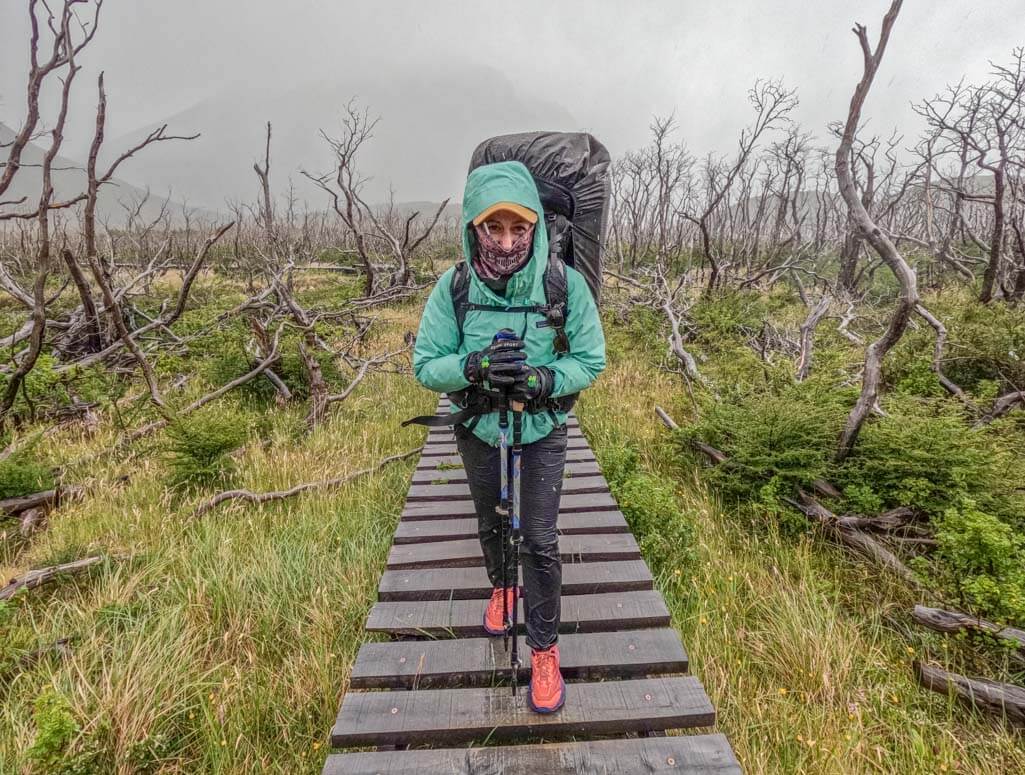
How many days should I spend in Patagonia?
You’ll need at least 7 days in Patagonia. But if you want to travel slower and visit all the attractions, you’ll need 2 weeks.
Which is better: Chilean or Argentina Patagonia
I loved Argentinian Patagonia! It’s home to my favorite places in Patagonia and has incredible hiking trails. It’s also a lot cheaper than the Chilean side.
Which is the best month to visit Patagonia?
If I could choose any month, it would be March. This is the end of high season, so the crowds are fewer. But the weather is still optimal, and you can expect long, sunny days.
Where do you fly into for Patagonia?
You can either fly into Buenos Aires in Argentina or Santiago in Chile. To get to the Patagonia region from there, you must fly to El Calafate or Bariloche in Argentina. Or Puerto Natales in Chile.
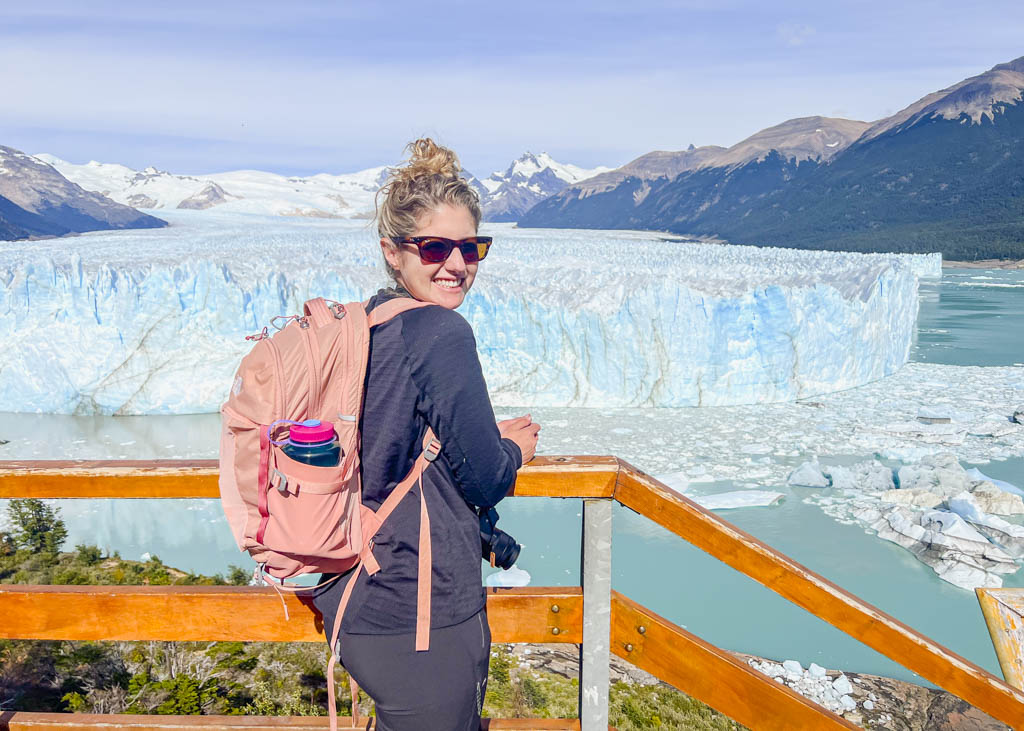
Final thoughts on my itinerary for Patagonia
I spent 7 months backpacking South America, and some of my best memories are from Patagonia.
But remember one thing about the region.
You can do all the planning and preparation for your trip, but unfortunately, you can’t prepare for the weather. It can be unforgiving, even during the summer months, which are said to be the best times to visit.
But no matter what Patagonia brings, embrace it. Enjoy the stunning scenery and take in the power of Mother Nature.
Like it? Pin it!
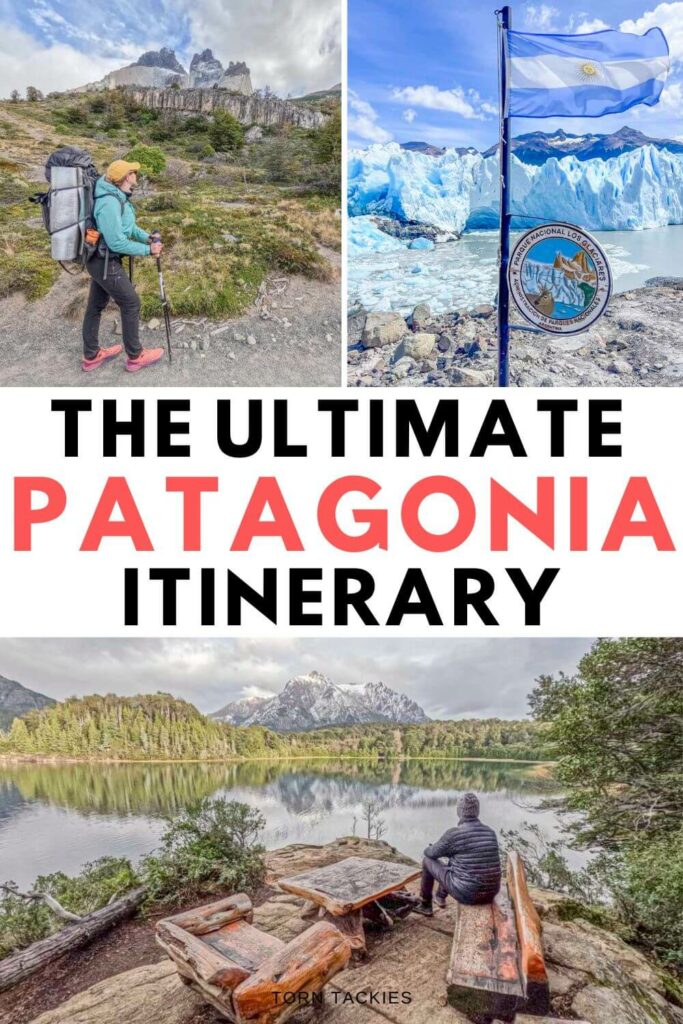
Planning your Patagonia itinerary and have any questions? Drop me a message in the comments section below.
Looking for more Patagonia travel inspiration? Check out my other posts!
- Hiking Mirador De Los Condores in El Chalten
- The Ultimate W Trek Packing List
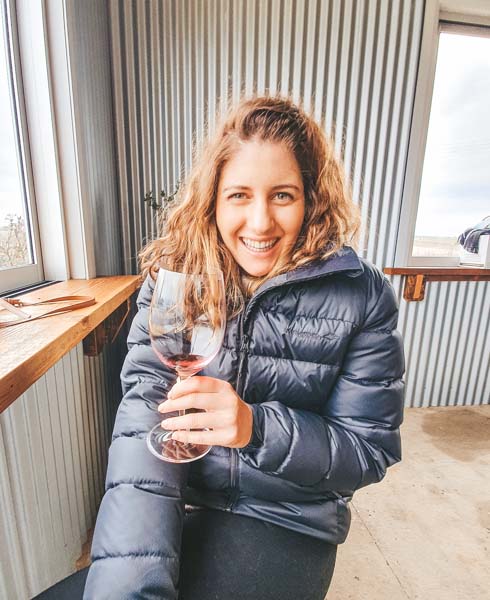
Hi, I'm Carryn. I’m an adventure travel blogger trying to figure out my way through life by traveling and exploring. Join me as I share my travel guides and tips for life abroad. Find out more about me here .
Where to stay in Cusco (before Inca trail): Best hotels and areas
The best argentina itinerary: how to spend 2 weeks in argentina, leave a comment cancel reply.
Lonely Plan-it: how to organize a hike on Chile’s famous W Trek in 2023

Jan 14, 2023 • 8 min read

Tackling the W Trek in Chile’s Parque Nacional Torres del Paine is a challenge and a thrill © sharptoyou / Shutterstock
In this series, we take you step by step through how we planned some of the most complicated travel adventures, so you can recreate them yourself with ease. Here, writer Sarah Reid takes you through how she planned her hike on Chile’s famous W Trek.
Tracing the foothills of the snow-capped Paine Massif in southern Chile ’s famous Parque Nacional Torres del Paine , the W Trek one of the world’s most epic multi-day tramps. Named for the shape sketched by the 80km (50-mile) trail, the W Trek immerses you in some of Patagonia’s most mesmerizing scenery, with turquoise lakes, oozing glaciers, gnarled subpolar forests and wildlife spotting opportunities aplenty (you might even spot a puma).
While it’s easy to follow the well-trodden if not always well-marked trail, planning the expedition is complicated by the numerous ways to access the route and the multiple reservations required before you set out. Having recently experienced the trail in two different ways, I’ve figured out all the tricks you’ll need to plan one of the most memorable hikes of your life. Here’s what I learned.
Step 1: Time it right
Find the best mix of good weather and accommodation availability.
Hiking the W Trek hinges on the availability of the half-dozen currently operational refugios (hostels with limited dorm beds, a restaurant, hot showers and campsites) dotted along the route, which can book out months in advance during the November-to-February peak season. This is the warmest time of the year comes with the added bonus of long daylight hours – but it can also be very windy. The less-busy shoulder seasons (March to April and September to October) offer increased camping availability and more agreeable weather (potentially; this is Patagonia, after all). A guide is required for a wintertime hike (May to August, when refugios are closed). Wildlife, including pumas, can be spotted year-round.
To get to Torres del Paine, you’ll need to travel to the small, beautifully situated gateway city of Puerto Natales . You can fly here (or to nearby Punta Arenas ) from Santiago , take a four-day ferry trip from Puerto Montt or travel overland from Argentina (a 5.5-hour bus ride from El Calafate to Puerto Natales). From Puerto Natales, expect a two-hour bus ride to the eastern end of the W Trek, and a three-hour bus ride followed by a 45-minute ferry to the western end.

Step 2: Decide which direction to hike in
You can start or finish your trek with one of the hike’s most epic views.
The W Trek can be hiked from east to west or vice versa, independently or guided, and you can take as many days as you like (pending refugio availability). Hikers with a good level of fitness will find it’s an achievable four-day independent hike. Factor in an extra day to add a glacier kayaking or ice-trekking excursion departing from Refugio Grey (arrange in advance; more on this below).
The benefits of hiking east to west include frequent daily bus services from Puerto Natales (from 7am) to the trailhead. You’ll also knock off the challenging hike to Mirador las Torres , at the base of the three granite towers that give the national park its name, on the first day. Hiking in this direction also means you don’t have to worry about securing a spot on the first ferry of the day across Lago Pehoé to access the western end of the W (critical for a four-day itinerary), as ferry tickets can’t be booked in advance. The early ferry (9am) only operates from November to March.
The beauty of hiking west to east is the opportunity to spend your last night at Refugio Chileno, making it easier to catch the sunrise at Mirador Las Torres on your final day and be back in Puerto Natales by dinnertime (finishing at Paine Grande gets you back to town closer to 10pm). With Patagonia known for its strong westerlies, hiking eastward also keeps the wind at your back for most of the journey.
Step 3: Consider your booking options
Reserve your accommodation, transit and park pass in advance to simplify your life.
This is where it gets tricky. The two refugios at the trail’s western end (Paine Grande and Grey) are operated by Vertice Patagonia , which also runs glacier trekking and kayaking tours. The other four refugios (Francés, Cuernos, Chileno and Central; there’s an additional bunkhouse near Central called Torre Norte) are operated by Las Torres Patagonia . You can book preferred campsites and dorm beds (some refugios also have rooms) separately through their websites, or make reservations at camps run by both operators in a single booking via Booking Patagonia .
Meals, pre-pitched tents, sleeping bags and mats can be prebooked for additional fees, pushing the cost of a four-day hike from as little as $62 (camping costs only; wild camping is forbidden) to around $400 if you book all the extras (and it’s worth doing so if you’re not keen on carrying all your supplies, including cooking equipment). Booking bus tickets to and from Puerto Natales in advance is also recommended; Bus Sur services both ends of the trail.
An easier if more expensive option is to book an all-inclusive package. These come in all shapes and sizes, ranging from classic unguided through-hikes, to hikes along sections of the trail each day with a guide then shuttling back to an off-trail camp or lodge each night. (Note that it’s difficult to complete all legs of the W Trek as day hikes given the volume of backtracking required to the two exit points.) Local operators offering good-value unguided through-hike packages with an east-west itinerary (about $1000) include Chile Nativo and ChileTour Patagonia . Las Torres Patagonia and Vertice Patagonia also offer packages with accommodation at their own properties (a through-hike is only possible with the former). International operators including G Adventures and World Expeditions also offer through-hike packages.
You’ll also need to book a multi-day national park pass via the CONAF website ($35), which will be checked at the entrance to the park.

Step 4: Prep for the adventure
Find the perfect gear for your adventure.
With the entire trail located between 100-900m (330-2600ft) above sea level, there’s no altitude to factor in on the W Trek. But it’s the ever-changing Patagonian weather, along with the uneven, often-exposed trail, that will likely test you. Layers are key, and a waterproof jacket, rain pants and pack cover are essential year-round.
Expect to have next-to-no cellular reception throughout the journey. Wi-fi coupons are available for sale at refugios (provided the router is working) but it’s more fun to stay disconnected and mingle with fellow hikers at the bar instead; every refugio has one. Be mindful when packing that everything you carry into the national park must come out with you – the only rubbish bins at refugios are designed for toilet paper. With a limited number of power points in refugios for charging devices, packing spare batteries is a good idea.
Step 5: Nail the trail
Be adaptable to conditions to get the most out of your journey.
Days on the trail can be long on a four-day hike; set out by 8am in autumn and spring to arrive in camp well before nightfall. If you’ve booked meals, most refugios have two sittings; book the first sitting when you arrive in camp each day to ensure an early night, and early start the next morning.
On foggy days, reconsider rising early to hike to Mirador las Torres for sunrise. You might also wish to reassess the mostly uphill return hike from Mirador Francés to Mirador Británico (the middle arm of the “W”) in poor weather, though I hiked the latter in average conditions and enjoyed it, particularly as I spotted a pair of endangered huemul deer right below Mirador Británico. Consider leaving non-essentials in a dry bag at Italiano (a CONAF-run camp not currently open for overnight stays) on your way up, as you’ll pass this camp again on your way back down.
If you’re making good time between Paine Grande and Valle Francés (French Valley), consider veering off the main path to hike the lesser-tramped alternative trail around the slightly more scenic eastern side of Lago Skottsberg, which adds about 30 minutes to the trip. Turn left at the first bridge after Italiano if you’re coming from the east, and head right at the fork after the first bridge you cross if you’re coming from Paine Grande.

If I could do it all again…
I booked a last-minute four-day through-hike package on my first W Trek experience. I hiked east to west in March 2022, and camped at Central, Cuernos and Paine Grande, and this itinerary was perfect for me. I’ve since hiked sections of the trail on a guided multi-day, multi-sport tour with Chile Nativo, with superb perspectives on Torres del Paine that complemented my first experience.
If I were to do the W Trek again, I’d aim to tackle the extended version of the trail called the O Circuit, ideally in late September, as I found the weather superb and the crowds thin when I visited then. I’d cut costs by making independent bookings, and I’d book my meals again (though extra comforts are not available at all refugios on the O Circuit).
Since my feet were soaking from the second day onward, I’d also wear waterproof boots; pack fewer snacks, as the boxed lunches were sufficient; and go easier on the Carménère (Chilean red wine) at the refugio bars. Did I mention you can order pisco sours, too?
Explore related stories

Jul 3, 2024 • 10 min read
From epic scenery to finding friends along the trail, here is our pick if the world's best treks.

Jun 24, 2024 • 10 min read

Feb 8, 2023 • 4 min read

Feb 7, 2023 • 5 min read
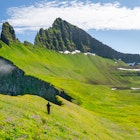
Dec 6, 2022 • 10 min read

Oct 5, 2022 • 6 min read

Jul 29, 2022 • 14 min read

Jan 25, 2022 • 8 min read

Jan 7, 2022 • 9 min read

Jan 5, 2022 • 6 min read

19 Things to Know Before Hiking the W Trek in Patagonia’s Torres del Paine in 2024
So you’re interested in hiking the W Trek in Patagonia – one of South America’s most famous trails. The W Trek zigzags through the heart of Chile’s iconic Torres del Paine National Park , a land where the summits form stunning granite monolith towers and the lakes glisten a breathtaking turquoise blue. The trek is named after the W-shape it forms on a map, running along the base of the iconic mountains before doubling back into the Valle Francés (“French Valley”) at the very heart of the reserve.
This detailed guide will run through all the ins and outs of hiking the W Trek. It will cover the best time of year for hikers to visit this wild part of Chilean Patagonia, some challenges you can expect to encounter, top trip highlights, what gear you will need, how long you may spend in the wilderness, and much more. Happy exploring!
My experience hiking the W Trek
I’ve trekked extensively throughout the Andes, from the dizzying heights of Machu Picchu to the impressive glaciers of Argentine Patagonia, and have learned powerful life lessons from my adventures . However, I still remember the W Trek as one of the most amazing mountain adventures I have taken. There’s a reason why it’s the most famous hiking trail in Patagonia. T he scenery you’ll enjoy along the way is second to none – imagine jagged mountains that resemble massive shards of ice, milky mountain lakes, and the rolling Patagonian Steppe in the distance.
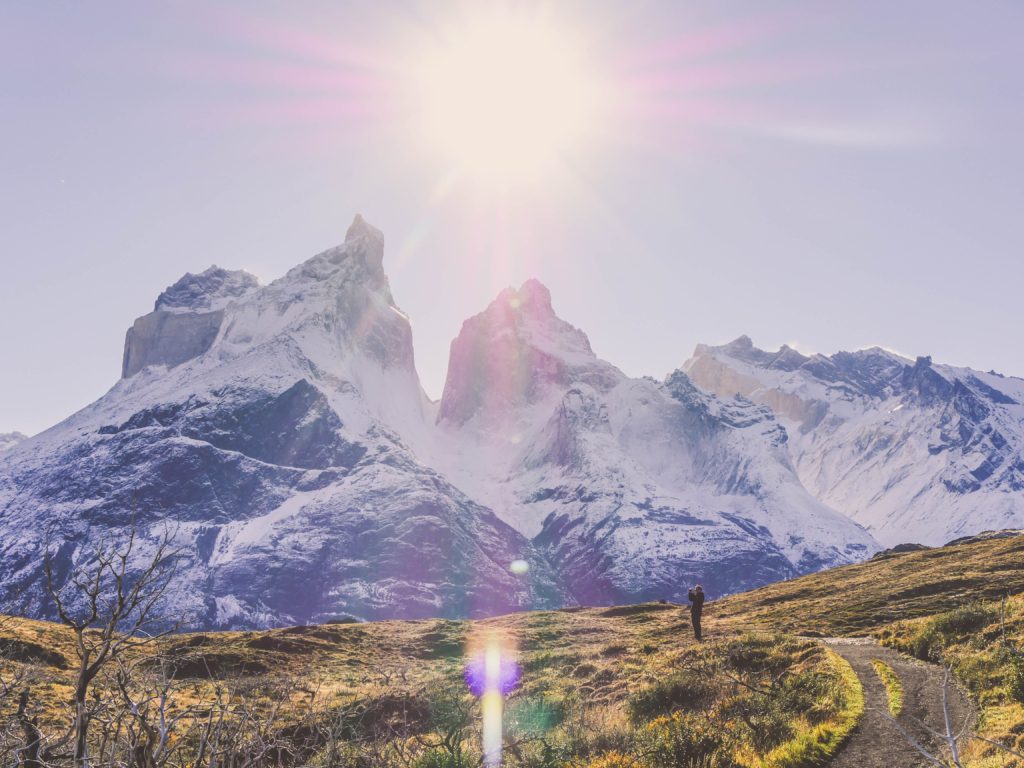
A personal highlight of the W Trek was the approach to Grey Glacier, which feels like one of the most untouched parts of Torres del Paine. The path to Grey Glacier along Grey Lake is stunningly beautiful and poses a nice challenge as you trek amongst chiseled sculpturesque mountains. Adding to the physical beauty of it all, the hiking route is fantastically well-organized with designated camp / hut sites that boast gorgeous views of the national park, the trekking season is long, and wonderful local guides are available. I highly recommend you experience hiking the W Trek for yourself .
What’s in this guide to the W Trek?
- An introduction to Chilean Patagonia
- Where is the W Trek?
- The history of the W Trek and the Torres del Paine National Park
- Highlights of the W Trek
- How long is the W Trek? How many days are needed?
- Elevation and terrain on the W Trek
- Is the W Trek difficult?
- Preparation for the W Trek
- When is the best time of year to go?
- What do I need to pack for the W Trek in Patagonia?
- Accommodations: Where to stay on the W Trek
- W Trek permits
- Getting to the start of the W Trek
- Sample W Trek itinerary
- The 5-Day W Trek Circuit
- W Trek Express
- Alternative routes to the W Trek (O Circuit vs Q Circuit)
- Where to go after the W Trek
- Visas for Chile
1. An introduction to Chilean Patagonia
Chilean Patagonia is one side of the greater region of Patagonia. Altogether, it encompasses a whopping 400,000 square miles (that’s over a million square kilometers!) of land at the southern end of South America. It’s a diverse place, rolling from seemingly endless steppes inhabited by unusual Welsh-speaking farming communities to the jagged tops of mountains like the Fitz Roy and the Torres del Paine.
Ever since the first Spanish conquistadors started coming here in the 1500s, Patagonia has been seen as a land of myth and majesty. Open and vast like nowhere in Europe, it wowed explorers with calving glaciers and penguin-spotted islands, mirror-like alpine lakes, and whale-filled oceans. Today, the awe-inspiring nature of the region is still very much intact and trekking here is seen as a bit of a rite of passage a la the Himalaya.
Chilean Patagonia begins roughly 500 miles (805 kilometers) south of Santiago, the capital, and then arcs around the whole of the edge of the continent before finishing at the icy channels of the Tierra del Fuego archipelago. It’s all pretty wonderful, but most agree that the zenith is the Torres del Paine National Park, which is where you’ll be doing the W Trek.
2. Where is the W Trek?
The W Trek leads you to the most famous part of Chilean Patagonia: The Torres del Paine. They’re a trio of incredible granite tower peaks that look like daggers shooting straight out of the earth. At their closest point, the three towers are just 12 miles (19 kilometers) from the Argentina border. The nearest main town is Puerto Natales, Chile. More generally speaking, the W Trek takes you down to the ice-capped, snow-dusted ends of the continent, less than 400 miles (645 kilometers) from Cape Horn . It’s truly a wild part of the planet you must see!
3. The history of the W Trek and the Torres del Paine National Park
Arguably the most famous corner of Chilean Patagonia, the serrated tops of the mighty Torres del Paine massif became the centrepiece of their own national park back in 1959. But you have to go back almost 80 years more to discover the moment when the region first entered the limelight.
Yep, Scottish travel-writing pioneer Lady Florence Dixie blazed a trail here during her South American travels in the late 1880s. Her prose recalls “three tall peaks of a reddish hue” stood before plains of ripe berry bushes and grazing guanacos.
Her descriptions piqued the interest of others. Finnish geologist Otto Nordenskjöld took a break from his polar explorations to visit the region in the 1900s. Then came the missionary-mountaineer Alberto María de Agostini en route to his epic crossing of the Southern Patagonian Ice Field.
It wasn’t until the end of the 1950s that the region was designated an official national park by the Chilean government. It was originally known as Grey Lake National Tourism Park but was subsequently given its modern name in the 1970s, the same decade it was dubbed a prestigious UNESCO World Biosphere Reserve.
It was also the 1970s that saw the formation of the famous trails. That was spearheaded by a team of local rangers in conjunction with British explorer John Garner (who now has a pass named after him in the range). They laid the foundations of the now-iconic circular route that encompasses the whole massif, including the W Trek section itself.
4. Highlights of the W Trek

If you’re looking to be wowed by the sheer majesty of hiking in Chilean Patagonia, then yes, the W Trek is most certainly worth it. This relatively low-altitude trek takes you through areas of the national park that are widely considered to be the most incredible places in Patagonia. In a region that’s beset by ice fields and soaring peaks, that’s really saying something!
The W Trek requires a commitment of about 4-5 days of hiking, on average. What’s great is that there is something special to see on every single day of the journey. Views abound from start to finish and there’s always another W Trek highlight to look forward to. The most impressive parts of the trek are:
- The French Valley & Cerro Paine Grande – See the spectacular summits of Cerro Paine Grande, the tallest peak of the Cordillera Paine mountain range in Torres del Paine National Park, up close as you trek into the French Valley. The French Valley is a hidden cleft in the Andes that’s topped by a hanging glacier and dashed with gnarled beech forests.
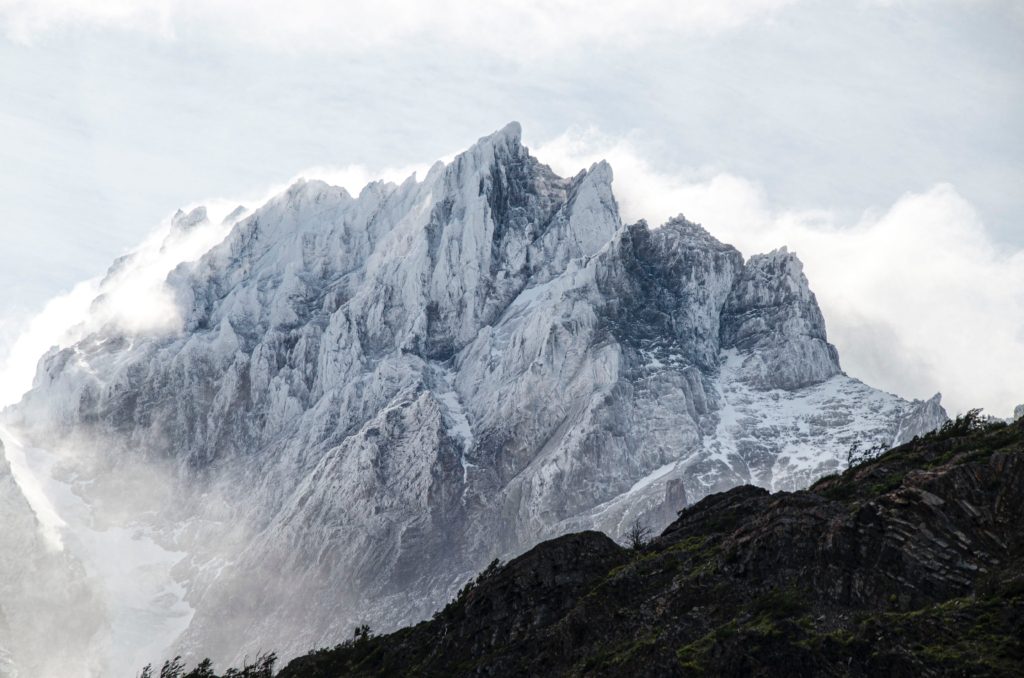
- The Base of the Towers – you will either finish or begin the trek at this stunning location with a turquoise lake set before the iconic Torres del Paine granite spires themselves. The lookout point encompasses three sheer mountains before a milky alpine lake. This is the scene that is the infamous image of the W Trek.

- Mirador Britanico – There are numerous lookout points within the French Valley, but we’d say the Mirador Britanico trumps the lot. Stand on this slab of rock to survey an amphitheater of cathedral-like mountains that descend into forests of Antarctic beech trees filled with finches and woodpeckers.
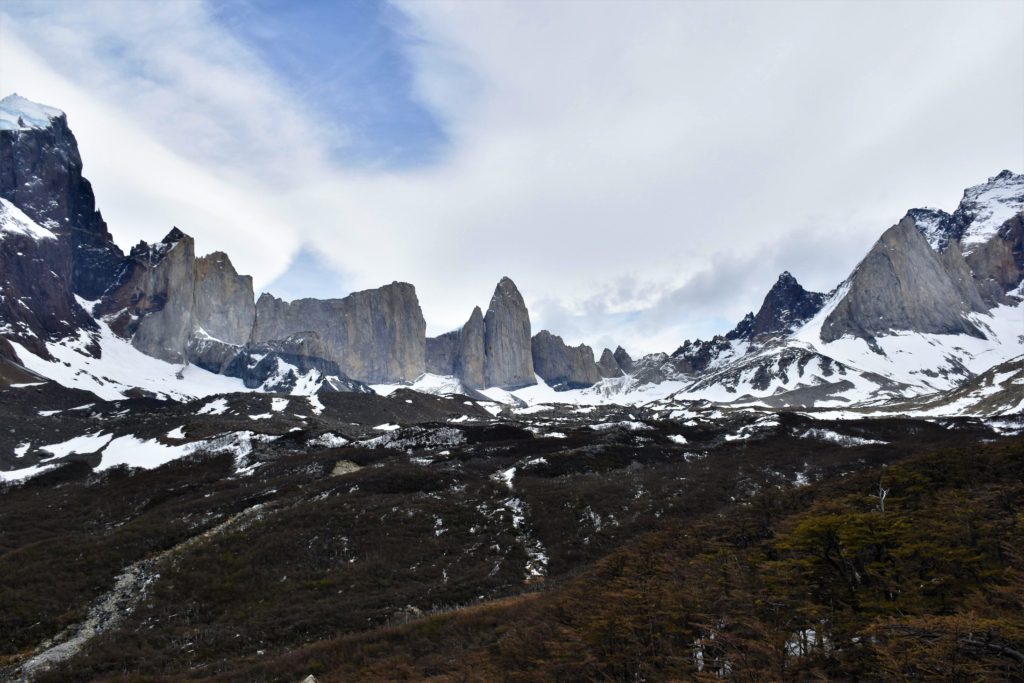
- Los Cuernos – A set of twisted mountains dominating the northern view for much of the hike. A colossal cirque of peaks all tangled together, the Los Cuernos form the very heart of the Torres del Paine massif. Look up to spy out summits named things like The Blade, The Sword, and the Shark’s Fin.
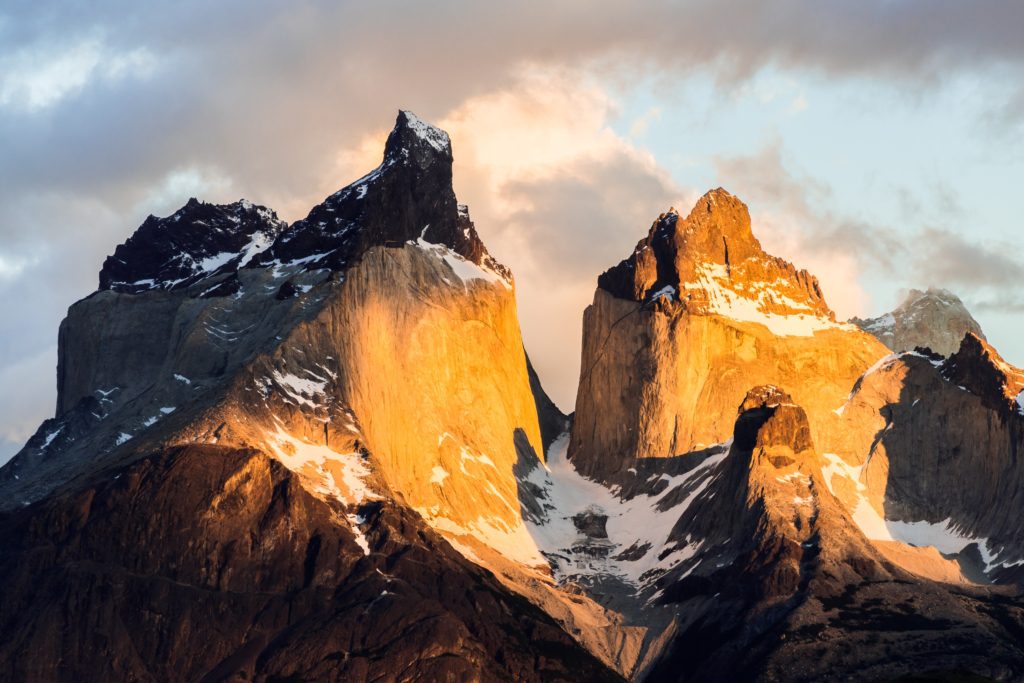
- Grey Glacier – This colossal ice field with calving sheets of frozen water could be one of the most awe-inspiring things you encounter on the W Trek. It is the largest glacier in the Torres del Paine National Park. Just one of the many tongues of frozen water that cascade down from the great Southern Patagonia Ice Field, Grey Glacier is either the grand finale or the starting point of the W Trek. It’s everything you imagine of a South American ice cap, sporting 98-foot high (30-meter) walls that rise suddenly from the turquoise waters of Lake Grey.
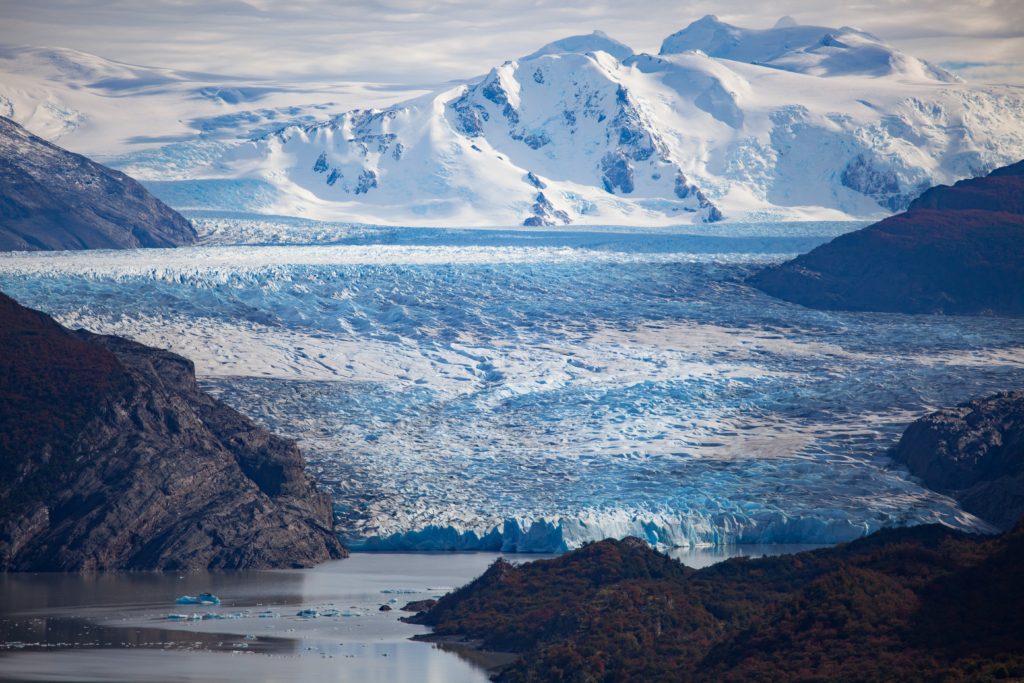
- Pehoé Lake – This many-armed body of water rolls out to the south of the W Trek path. You’ll see it on multiple days, but there’s one epic photo spot that frames the twisted Los Cuernos mountains above a mirror-like dash of water.
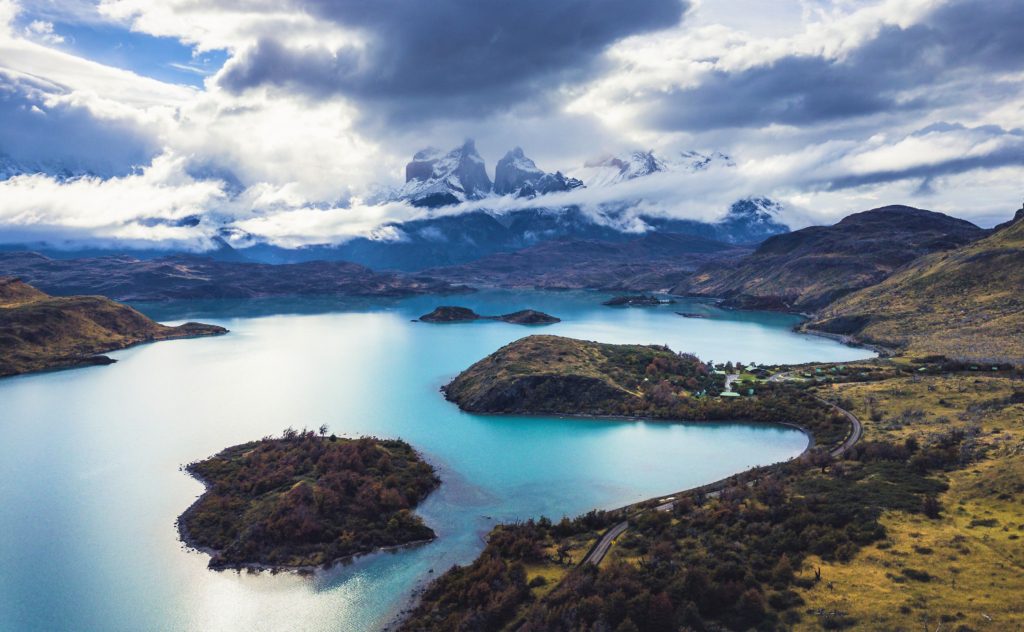
- The wildlife in Torres del Paine – Of course, you cannot forget the park’s incredible fauna! You will undoubtedly encounter a diverse range of wildlife on the W Trek. One of the most common mammals you will spot will be the ubiquitous guanacos, which are related to llamas and vicuñas. You may also see Magellanic woodpeckers, Patagonian gray foxes, Andean condors, or even caracaras (a unique-looking bird of prey). Even more elusive are the pumas and the endangered and rare Chilean Huemul, or South Andean deer.
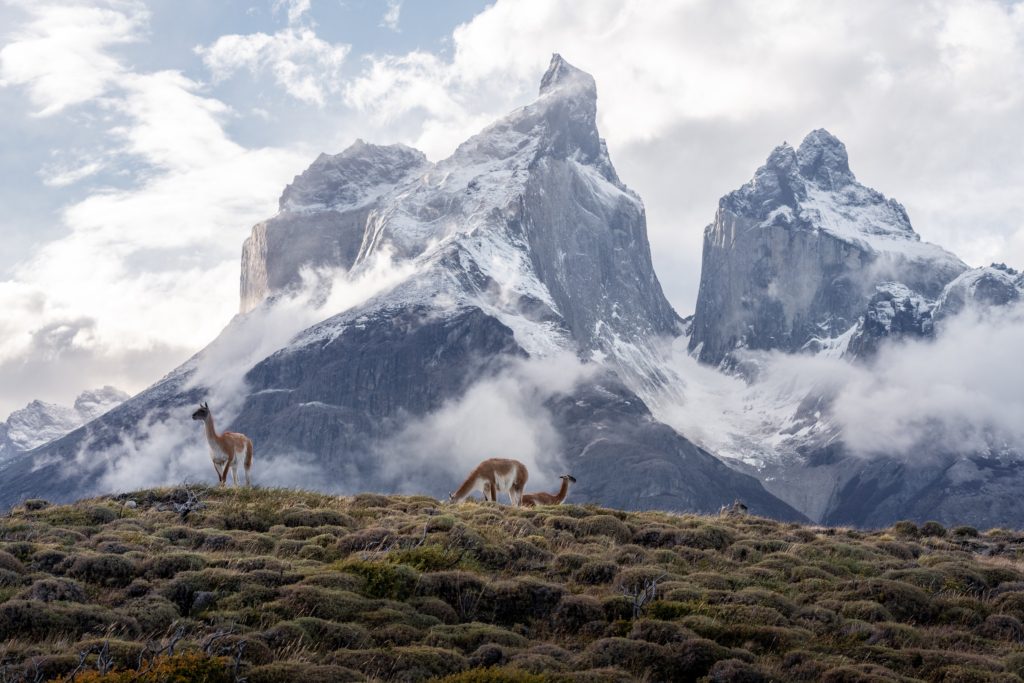
5. How long is the W Trek? How many days are needed?
The distance of the W Trek is approximately 55 miles (88.5 kilometers) long. One of the great things about this hiking route is just how versatile it can be. It’s easy to chop, change, and add to the W Trek itinerary so you’ll find everything from 4-day treks to 7-day ultimate treks on the menu.
There are many different distances reported by various sources for the W Trek. The below is what I have personally tracked via GPS while hiking the East to West route for 5 days.
Day 1 – Central Sector to Central Sector (Base Torres Hike)
- 13.5 miles / 22 kilometers
Day 2 – Central Sector to Francés Sector
- 11.5 miles / 18.5 kilometers
Day 3 – Francés Sector to Paine Grande (including Mirador Britannica Lookout)
- 15 miles / 24 kilometers
Day 4 – Paine Grande to Grey Mountain Refuge
- 7.5 miles / 12 kilometers
Day 5 – Grey Mountain Refuge to Paine Grande / Lake Pehoé
If you plan to do the W Trek in 4 days then your Day 4 (Paine Grande to Grey to Paine Grande) will be 15 miles (24 kilometers) in length.
You can do the trail in different directions. There are ways to skip one leg of the journey and add on extra excursions. So long as you follow the basic idea of a W-shaped route through the Torres del Paine park and include a trek into the stunning French Valley along the way, you can rest assured that you’ll see the Patagonian national park’s highlight attractions.
6. Elevation and terrain on the W Trek
The pinnacle of the W Trek reaches 2,788 feet (850 meters) above sea level. Now, that might sound positively low for veterans of Everest Base Camp, Mount Kilimanjaro, or the Inca Trail – and it is. However, where this trek gets tricky is in elevation gain and loss and the daily distances. Some sections of the W Trek see hikers clock up altitudes of over 2,000 feet (610 meters) in just a few hours, only to lose it all again that afternoon as they head to the rest site for the night. You’re likely to notice this most after the hike to the base of Las Torres, which is followed a few days later by the ascent into the French Valley.
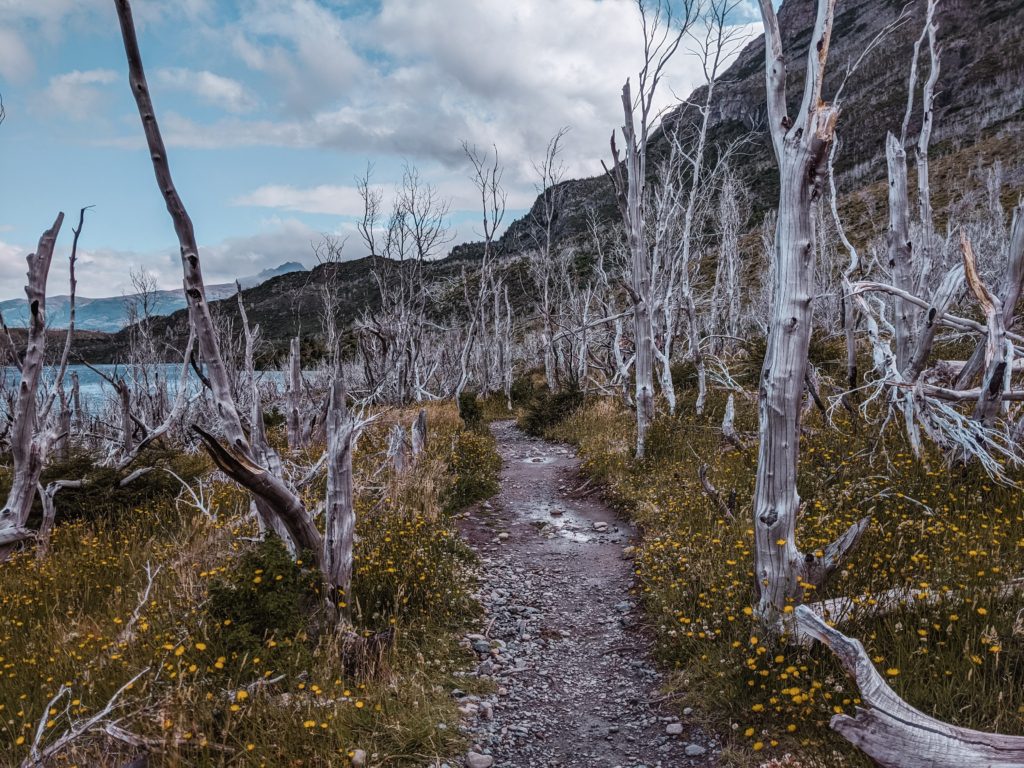
The good news is that there’s zero technical climbing on the W Trek. The trek is on a mix of well-maintained paths, packed mud, loose gravel, and stones. There are some parts where you may need to navigate wet rocks, low streams, and cable bridges, but there’s nothing overly challenging on the route itself in terms of terrain.
7. Is the W Trek difficult?
The W Trek multi-day hike isn’t a cinch, but it’s also not on the same level of difficulty as other world-famous hikes such as Mount Kilimanjaro or Everest Base Camp . So how hard is the W Trek in Patagonia’s Torres del Paine? Well, there’s no technical expertise needed and you don’t have to acclimatize. The trail is well-marked and maintained for a majority of the route. I’d say one of the the biggest challenges is the unpredictable weather, which can change from snow to heavy rain to blazing sun in just a matter of hours. In addition, Torres del Paine is known for its extreme winds which can reach speeds of up to 100 mph (161 kph).
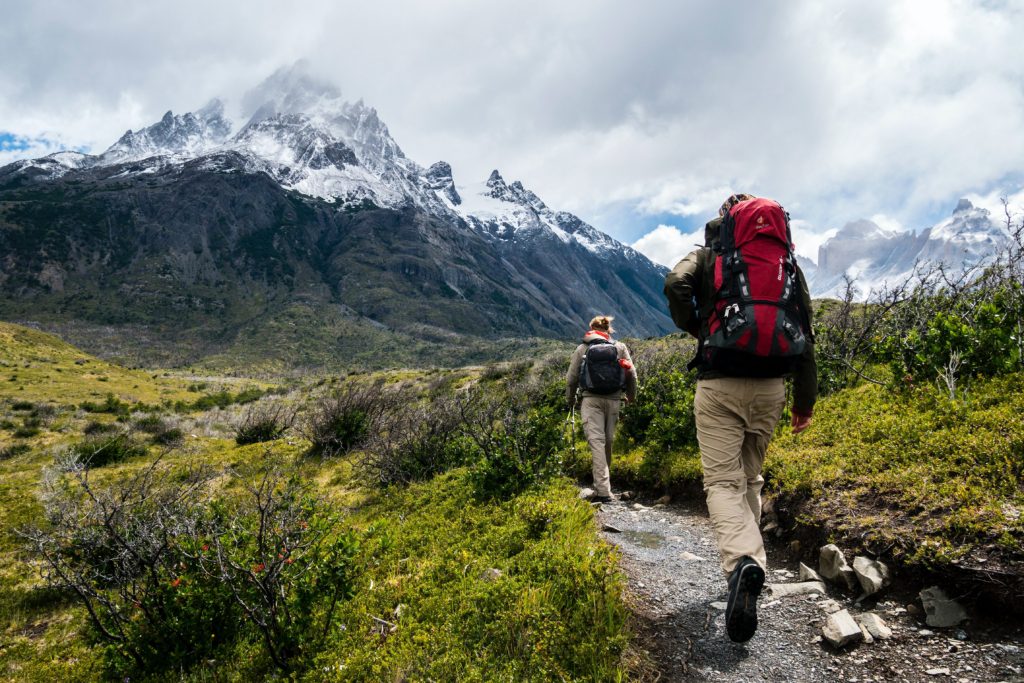
The W Trek also packs a lot of walking into single days. For comparison, you are asked to hike between 6-8 miles (9.7-12.9 kilometers) per day on average on an Inca Trail tour. However, on the W Trek, you can expect to hike between 7.5 miles (12 kilometers) and 15 miles (24 kilometers) per day depending on how your adventure is structured. I highly recommend a training plan that builds in long distances (over 10 miles / 16 kilometers per day) and consecutive day hikes.
8. Preparation for the W Trek
We’ve already mentioned how the W Trek isn’t up there with Kilimanjaro and other high-altitude expeditions. Most trekkers of decent fitness level should be able to complete it with a solid training schedule beforehand. That said, the days are long on this one – some pack in up to 10 hours of hiking across tough terrain that can get tougher when the weather changes.
For that reason, we’d say a good program of regular exercise starting around 12 weeks prior to the start of your hike is always a good idea. Begin with local walks of 2-3 hours and short runs of just a few miles each. By six weeks out, you should be able to up your runs to three miles and complete a hike of 7-9 continuous hours. With three weeks to go, try to double your number of runs and do weekly hikes of at least 7-9 hours each. I also recommend that you begin doing consecutive day hikes at this time and ensure you are wearing a pack with the same weight you will bring with you on the trek. Resistance training can also work wonders for muscle fatigue and recovery, something that’s often an issue with such long days on the W Trek.
9. When is the best time of year to do the W Trek?
The seasons can be very unpredictable this far south in Patagonia. As a general rule, summer (November to March) is better for trekking, making it the peak season for hiking the W Trek in Torres del Paine. That’s because it’s warmer, with midsummer temperatures typically between 43-63°F (6-17°C), and there’s less rain (average of just 4 millimeters each month).
However, it’s not totally clear cut that the summer season is the best time to hike the W Trek. It all depends on your preference and the type of experience you’re looking for. There are way more people hiking the trail so the W Trek lookout points are busier and the mountain huts more expensive. Additionally, high summer winds can spoil a hike in Patagonia so you’ll have to be ready to change plans if the gusts get up to over 80 mph (130 kph) or so.

Autumn (April is a good alternative to the main summer trekking season. The upsides include fewer hikers and beautiful colors on the Patagonian Steppe – think pale yellows, deep oranges, and muted browns rolling out from the base of the mountains. However, there is usually more rainfall and the temperatures at night get low. Keep in mind that the main W Trek route closes on April 30th each year.
Spring (September to November) is another popular time to hike the W Trek but this season can bring the risk of snowfall. This means you’ll need to pack extra thermals. The W Trek route typically opens in mid-September each year. However, a few of the huts are closed until October 1. So, if you want to do the Trek in September you will need to do an amended version.
Winter (May to August) a majority of the huts and campsites along the standard W Trek route are mainly closed due weather conditions and snowfall. However, it is possible to do three of the four segments of the W Trek as out and back hikes by staying in two of the refugios that are open during the Winter months. Also, please note that there are fixed group dates for these excursions and the treks are guided by a professional mountain guide which is required by the National Park for safety reasons.
We offer trips all year long on the W Trek. Click HERE to learn more.
10. What do I need to pack for the W Trek in Patagonia?
What you pack for your W Trek trip will depend on when you decide to visit Torres del Paine to hike the trail, but try packing as light as possible. Travelers in the high season (summer and autumn) won’t need as much thermal gear as those visiting in the low season (spring and winter), when there’s a bigger risk of snow and sub-zero temperatures. That said, every hiker on the W Trek should have a good thermal under-layer, a fleece, and waterproof outer layers for the upper and lower parts of your body . The weather can be pretty wild and unpredictable, even in the height of summer, so it’s a good idea to bring multiple layers to wear .
When it comes to trekking equipment, there are some must-haves: sturdy walking boots, a good set of trekking poles, a high-volume and lightweight water bottle and/or reservoir, sunscreen, and a reliable waterproof trekking backpack . Depending on how you choose to do the trek, you may also need camping equipment and a sleeping bag. Note: when booking with us, sleeping bags will be ready for you in both the mountain hut and/or tent at each sector. And depending on the trip package that you book, you may receive a ‘welcome kit’ containing a sleeping bag liner, microfiber towel, water bottle, and map.
Also, drinking water is not treated at huts/campsites along the trail. Many hikers feel comfortable drinking the water along the route (including from rivers or streams). But, if you prefer additional protection and peace of mind, you can certainly bring your own portable water filter (e.g. Katadyn BeFree, LifeStraw, Grayl, Sawyer Squeeze, etc.). Some of these systems only weigh a few ounces!
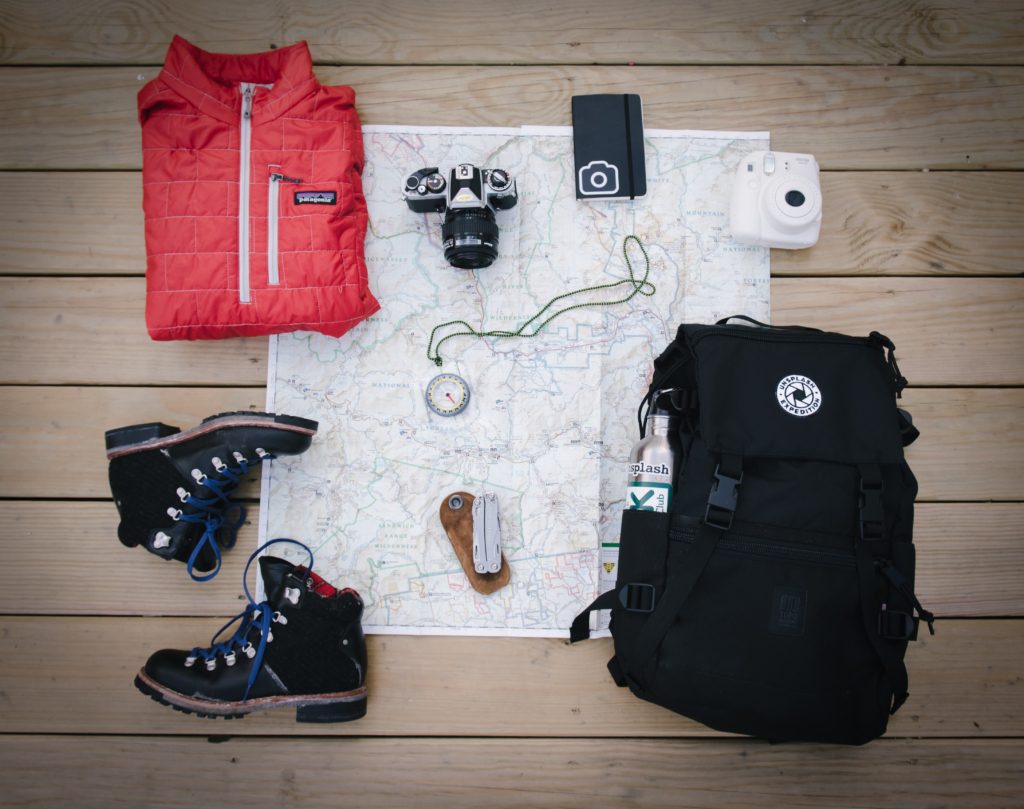
Some hikers will go for a porter service on their W Trek trip to help carry baggage and equipment. That’s an optional extra with most providers. A porter on the W Trek will typically carry 33 pounds (15 kilograms) of your clothing and gear. Keep in mind that if you do decide to get a porter, you won’t need one on the Base Towers hike as this day is an out and back trek. In addition, if you are doing the 4-day trek from East to West you also won’t need a porter for the last day as you can pay a small fee to leave your baggage at Paine Grande while you trek to Grey.
My team at The Explorer’s Passage makes it easy for trekkers who plan their travels with us. Because the requirements for the W Trek change with the seasons and the sort of trek you go for, we can provide our guests with a full packing list so they’re fully prepared – just ask us !
11. Accommodations: where to stay on the W Trek
There are a number of options when it comes to accommodations on the W Trek. Depending on the sector you are staying in, the options include standard camping, premium camping, cabanas, refugios / mountain huts, and hotels. I’m going to describe each of these options in greater detail below:
Standard Campsites
For the most part, the campsites on the W Trek are of very high quality, at least for true backcountry camps. They’re well equipped with all the things that trekkers might need, and even have extras that you could only dream of in the far-flung basecamps of other major trails. Take the site at Paine Grande, for instance: it has hot showers during designated times each day, bathrooms, access to the restaurant and bar at Refugio Paine Grande, and even pay-as-you-go Wi-Fi. At the various campsites, some of the tents are set up on the ground and others are set up on wooden platforms.
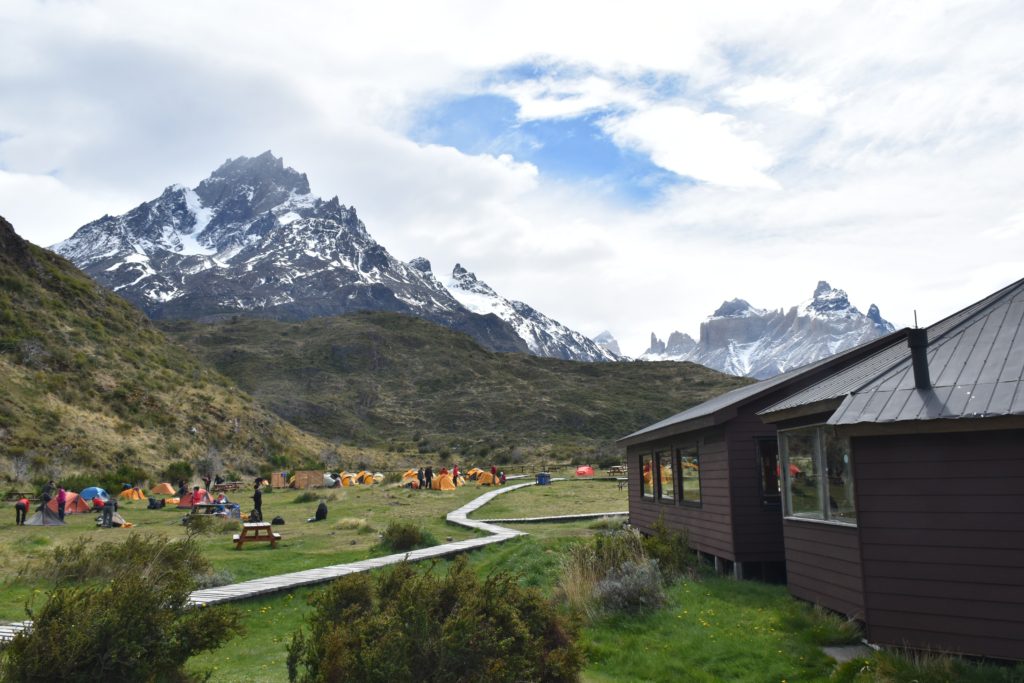
Premium Camping
A few of the campsites on the W Trek circuit have a newer concept known as premium camping, which consists of a raised tent approximately 6 feet (1.8 meters) off the ground and has a ladder for access. The tents in premium camping are larger and sturdier than in standard camping, and there is no need for mattress pads as the entire base floor of the tent consists of a ~3-inch (7.6-millimeter) comfortable pad. Currently, premium camping is currently available at Chileno and Francés Sectors but there are plans to bring this concept to more sectors (such as Central Sector) on the W Trek in the coming years.

Cabanas (cabins)
At Cuernos Sector there is a wonderful accommodation option known as cabanas (cabins). They are mini villas that dot the landscape around the main refugio building and are private accommodations that can fit 1-3 people. There are bathrooms and showers that are shared by all guests who are staying in the cabanas.
Most of our guests doing the East to West W Trek hike directly from Central Sector to Francés Sector on Day 2 of their hike, which is ~11.5 miles (18.5 kilometers). Chileno is located ~9.5 miles (15.3 kilometers) from Central Sector and is 2 miles (3.2 kilometers) short of Francés Sector. So, if you would like private indoor accommodations, then you can sleep in a cabana (cabin) at Cuernos for the evening. Just note that if you do choose to sleep at Cuernos on Day 2 of your trek then it will tack on ~2 miles (3.2 kilometers) to your trip on Day 3 of your hike.
Refugios / Mountain Huts
Refugio is the local name for a refuge or shelter that’s essentially a mountain hut or lodge that offers dorm-style (bunk beds) accommodations along the W Trek. Refugios are rustic but comfy, and typically have warm communal areas with dining halls where you can meet and mingle with other trekkers. The bathrooms and showers at the refugios are communal.
Some of the refugios have bar areas, like Central and Paine Grande sectors. Many of the refugios have small shops where you can purchase an assortment of goods such as water, soda, energy bars, eggs, noodles, toothpaste, toothbrush, and clothing. All of the main refugios on the W Circuit have Wi-Fi for an additional fee as well. Depending on which sector you are in, the number of people per room will differ. The room size on the W Circuit ranges from 4-8 people.
Hotels
On the standard W Trek route there is only one hotel option, Hotel Las Torres, which is located in the Central Sector. Hotel Las Torres is a very nice 4-star hotel located approximately 100 yards (nearly a meter) from the refugio and camping area at Central sector.
If you are doing the East to West Route, then you will most likely be spending two nights in the Central Sector as your first day of hiking is an out and back trek. We have many guests who stay at Hotel Las Torres for the first two nights of their journey, then do either camping or huts for the remainder of the trip.
Please note that EcoCamp is located in the Central Sector. While not a traditional hotel, EcoCamp consists of luxury domes of different sizes and amenities. We have many guests that stay in EcoCamp for a few nights as part of their W Trek journey.

If you would prefer to stay in a hotel every night while in Torres del Paine, there are six wonderful hotels that offer all-inclusive programs for their guests. Please note: If you stay in one of these hotels you won’t be able to do the full W Trek. However, you will be able to do some of the W Trek segment hikes as guided day trips with vehicle / boat support to the trail heads. At the all-inclusive hotels in Torres del Paine, you get to choose between a range of guided hikes and adventure activities, many of which are included as part of your package.
Below is a list of the main all-inclusive hotel properties in Torres del Paine:
Hotel Las Torres 4-Star Hotel Located in the Central Sector, 100 yards (~1 meter) from the Central refugio and camping
Hotel Lago Grey 4-Star Hotel Located in between the south shore of Grey Lake and Lake Pehoé
Explora Lodge 5-Star Hotel Located near the southern shores of Lake Pehoé
EcoCamp Patagonia 5-Star Domes Located on a hilltop overlooking the Central Sector
Tierra Patagonia Hotel & Spa 5-Star Hotel Located in on the Eastern shore of Lake Sarmiento de Gamboa
Awasi Patagonia 5+ Star Hotel with 14 private villas Located East of the Central Sector in a private reserve
The W Trek is punctuated with a host of rest areas and the conventional plan of the hike makes use of seven of these Sectors along the way. Let’s take a closer look at each rest site:
- Central Sector – The Central Sector is the base of operations on the eastern side of the W Trek. It’s often used as the starting point or ending point of the entire W Trek journey and is one of the most developed sites in Torres del Paine.
Accommodations at Central Sector include camping, two mountain huts/refugios (Central Refugio & Torre), EcoCamp Dome, and Hotel Las Torres. In the camping area, there is standard camping, which has hot showers, bathrooms, and designated picnic tables. It is expected that premium camping will be added in the near future in the Central Sector. The refugio in the Central Sector has a large common area that has a very fun and social atmosphere so you can meet people from all across the globe. It has 6-person hut rooms, communal bathrooms and showers, and a restaurant and bar area.
Hotel Las Torres is situated 100 yards (~1 meter) from the camping and refugio in the direction of the Las Torres Base Hike. The EcoCamp domes are situated on a hilltop overlooking the entire Central Sector.
- Chileno – Chileno is wedged into the narrow valley that runs north to the base of Las Torres themselves. It-s a pit stop before or after seeing arguably the greatest vista on the W Trek and the location is one to match – scenes of snow-capped peaks and cascading pine woods dominate on both sides. The site is much like the Central Sector, with standard camping and a refugio. The refugio has 6-person hut rooms. Chileno has premium camping as well. There are communal bathrooms, showers, and a small restaurant. It’s a quality lodge with a fantastic outdoor area by a roaring river.
- Los Cuernos – You’ll be greeted with sweeping 180-degree views of glimmering Lake Nordenskjöld when you enter Cuernos sector. It is set on a soft slope right under the twisted tops of Los Cuernos massif itself. In true Patagonia style, it’s well appointed with standard camping, a refugio, and a series of 20 private cabanas (cabins) that are situated in the beautiful terrain throughout the sector. The refugio has 6-person hut rooms. Cuernos has an onsite bar, restaurant, and a snack kiosk, as well as communal bathrooms and showers, and Wi-Fi.
- Francés – Remember when we said that the French Valley was one of our top highlights on the whole W Trek? Well…the Francés Sector is the gateway to it all. Just 2 miles (3.2 kilometers) to the west of Los Cuernos, it’s an alternative midway option for hikers wanting to enter that secret Shangri-La of the Andes. The site has standard camping, premium camping, and 8-person dome huts. It’s also just as comfy as the other sites listed here, complete with hot showers, bathrooms, a restaurant, shop, and wifi.
- Italiano – This campground on the main course of the W Trek is a free-to-camp alternative at the base of the French Valley. Because it’s free, don’t expect the same amenities and frills as in the sites on the W Circuit. The basics are all taken care of: Running water, toilets, and a cooking shelter. We rarely have guests stay at this site as it is very basic, but our trekkers primarily use it as a location to drop their bags off for the up-and-back excursion into the French Valley.
- Paine Grande – There’s a pretty slick lodge at the Paine Grande sector on the edge of Lake Pehoé that some trekkers use as the first point of call on the W Trek if doing the West to East Route. The site has a large standard camping site with space for over 200 campers and 4- or 6-person hut rooms. There are communal bathrooms, showers, a shop with an extensive assortment of items, and a large restaurant area. Don’t miss the onsite Paine Grande Bar here – it’s a chance for a pre- or post-trek drink overlooking the serrated Paine Grande Massif.
- Grey – Grey sector marks the western end of the W Trek and, as such, is an important starting point, not to mention connecting point for those looking to join with the larger O Trek. The lodge here is one of the best on the trail. It’s got 60 beds in 4- and 6-person rooms, and a cozy restaurant and bar area to enjoy after dark. The campground has room for 120 people in standard camping and offers a covered cooking space and shared toilets. There’s paid Wi-Fi if you need it as well.
One important item to note is that if your group size is below the minimum room s ize in the refugios, then other travelers will fill the empty spots on the rooms. Guests are not permitted to purchase the extra room spaces to create a private room.
Since the sectors are run by three different companies and itineraries often require a separate reservation, booking accommodations for the W Trek can be a chore. It doesn’t have to be, though! The Explorer’s Passage makes visiting Torres del Paine easy. Book your trip to Patagonia with us and let us take the stress out of planning so you can focus on hiking the W Trek. Also, with us, all meals are included from the start of the hike to the finish.
12. W Trek permits
In planning this journey, you may ask yourself “Do I need a permit for the W Trek?” Although you’ll need an entrance ticket to enter Torres del Paine National Park, there’s no official permit system for the W Trek as there is for the classic Inca Trail route to Machu Picchu. There are, however, capacity limitations on the number of trekkers that are permitted to stay in the park’s campsites, huts, cabanas (cabins), and hotels. That acts as a sort of de facto limit on the number of people who can do the trek, governed mainly by who was quick enough to book their accommodations.
My advice? Start planning early to avoid disappointment. The huts, campsites, and cabanas (cabins) go on sale in May and June each year for the upcoming trekking season which typically goes from September 8 to April 30. Spaces in Central, Chileno, Cuernos, and Francés Sectors are typically released in early to mid May. Spaces for Paine Grande and Grey sectors are typically released in early to mid June. I typically recommend that our guests try to get their bookings in before the first release dates to ensure they get their desired spots.
If you would like help with this process, you can plan to travel with us and our experienced team will take care of all the important details for you, including campsite, hut, cabana (cabin), and hotel bookings, meals, National Park permits, transfers, gear rentals, and much more.
13. Getting to the start of the W Trek
Most people start the W Trek hike with an organized bus transfer from the city of Puerto Natales to Torres del Paine National Park.
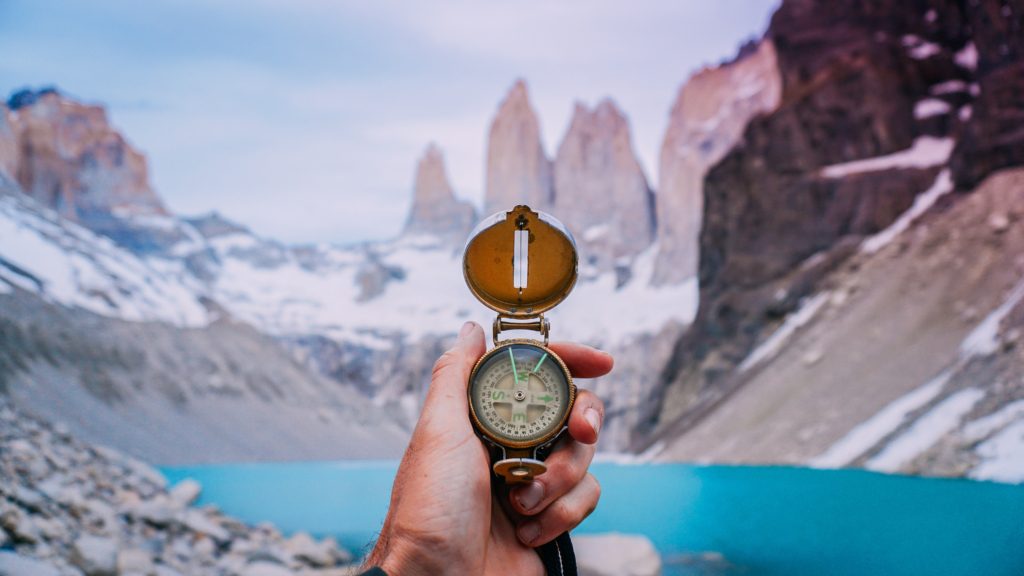
Your journey to the trailhead of the W Trek will depend on which direction you will be hiking it: either from East-to-West, or vice versa. At The Explorer’s Passage, we recommend East-to-West, primarily because you get the hardest day of hiking (to and from Las Torres Lookout Point) out of the way on the first full day, when your legs are still fresh. However, some prefer to save the view of these granite towers as a reward for the final day, so they start the journey in the West and head East. As with all adventures, there are pros and cons to each option!
- To hike the W Trek from East to West, you will get off the bus at the National Park office at Laguna Amarga, then take a connecting bus to the Welcome Center at Central Sector.
- To hike the W Trek from West to East, you can get off at the Pudeto stop and catch the catamaran across Lake Pehoé to the refugio at Paine Grande. There are boat departures throughout the day, but be sure to check the schedule before you depart because they can change at short notice.
All of the above trips can be done from Punta Arenas , but expect transfer times to the trailhead to be in the region of five to six hours, instead of a 2-3 hour bus ride from Puerto Natales.
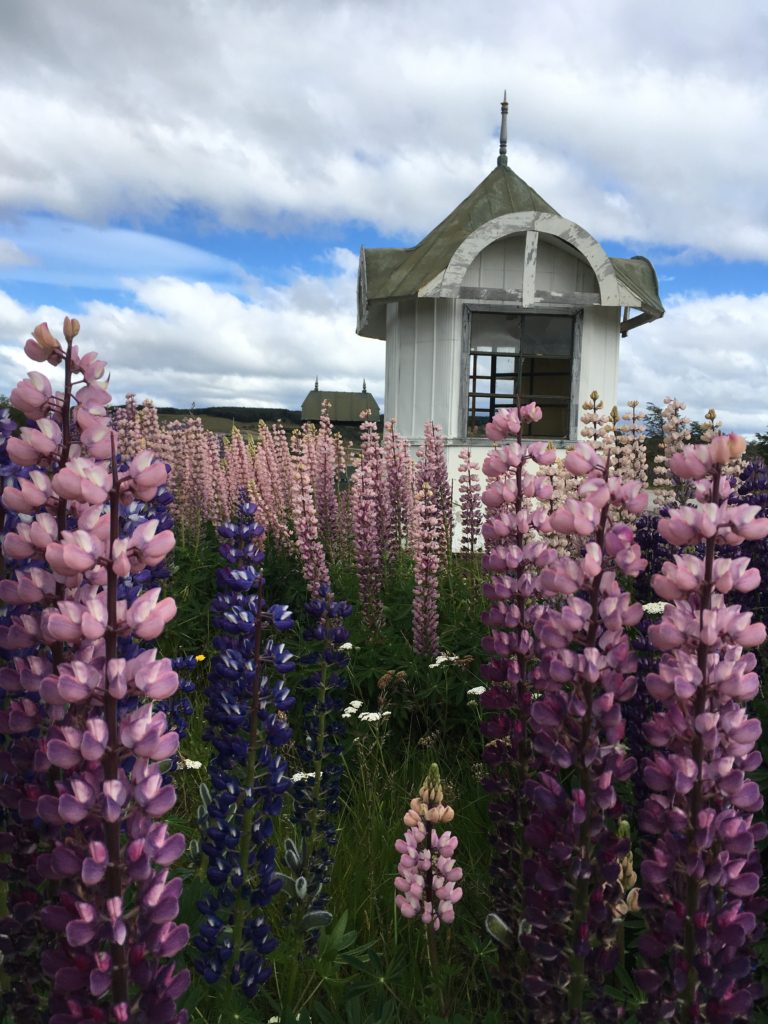
14. Sample W Trek 4-Day Hike itinerary
As noted in the prior section, at The Explorer’s Passage we recommend hiking the W Trek from East to West. Below you will find a sample itinerary for this option (visit our W Trek trip page to download a full detailed itinerary):
- Day 1: Puerto Natales to Torres del Paine National Park – After breakfast at your hotel in Puerto Natales, you will have the morning to explore the town a bit more. Later, you will travel by bus to Torres del Paine National Park. Enjoy dinner in the Central Sector as the excitement builds for the days ahead, where you will have the rare privilege of exploring one of the planet’s most striking national parks!
- Day 2: First Day of W Trek (Las Torres Lookout) – Today, you will start early and begin your hike of the W Trek – one of South America’s most famous trails. Today’s destination is the iconic Las Torres Lookout Point! During the first stretch, you will walk through the pampa, cross the Ascencio River, and then hike up to Los Vientos Mountain Pass, where you will enjoy amazing views of the valley and lakes. You will continue your journey to the Chileno Mountain Refuge, and then go deep into a lenga beech forest up to La Morrena, where the hardest part of the day’s hike begins. From there, you will follow a rock trail to the spectacular Las Torres Base Lookout Point. Later, you will return to the Central Sector to have dinner and rest.
- Day 3: Second Day of W Trek (Nordenskjöld Lake & Francés Sector) – Today is your 2nd full day of hiking the W Trek. You will walk along the shores of Nordenskjöld Lake, below the peaks of Almirante Nieto and the striking Cuernos del Paine. During the hike, you will enjoy magnificent views of Los Cuernos, hanging glaciers, lakes, and the abundant vegetation and wildlife. You will have dinner and sleep in the Francés Sector.
- Day 4: Third Day of W Trek (French Valley) – This day features one of the most memorable portions of the W Trek: the Valle Francés. You will start early with a light hike to the Italiano Campsite. From there, you will progress through the woods up the Francés River Valley. You will continue to the Francés Lookout Point, where you will enjoy one of the most breathtaking views of the trek: the view of the valley framed by the Paine Grande, Catedral, Hoja, Máscara, Espada, Aleta de Tiburón, and Cuerno del Norte mountains. The landscape will undoubtedly leave you speechless! Later, you will begin the descent to the Paine Grande Sector for the evening.
- Note: we can arrange optional add-on excursions in the Grey Glacier area if you are interested: kayaking (~3 hour activity) and/or ice hiking (~5 hour activity). These activities will require an additional day to your itinerary, as you would need to sleep in Grey Sector for the evening.
If you prefer to hike the W Trek from West to East, culminating with an up-close encounter with the iconic towers themselves, here is a sample itinerary:
- Day 1: Puerto Natales to Torres del Paine National Park – You wake up early in Puerto Natales for an early transfer to Torres del Paine National Park and then take a boat boat navigation across Lake Pehoe to the Paine Grande Sector. From there, you begin hiking North to Grey Sector. This is your first chance to catch a glimpse of the famous Torres massif, with a broadside of the twisted tops of the Cerro Paine Grande. Once you reach Grey Sector, you break for lunch and turnaround to hike back to Paine Grande Sector. The W Trek hike starts by skirting the milky waters of Grey Lake going southwards. This is right beneath the Cerro Paine Grande and the Paine Horns, which are some of the most famous mountain summits in South America. I’d recommend taking some time to visit the Mirador Glaciar Grey on both the walk to Grey Sector and again back to Paine Grande. This location has some of the best views of the entire W Trek. If you have time for 5 days of hiking in Torres del Paine, you can lengthen your itinerary and stay in Grey Sector (huts or camping) for one evening. This would also give you the ability to either participate in either or both the kayaking or ice trek activities.
- Day 2: Second Day of W Trek (Paine Grande to French Valley) – For many, this day is the highlight of the whole W Trek. The path bends eastwards and north from your second campsite, taking you deep into the heart of the Torres del Paine National Park. The first step is the trek along the south side of the massif to the Italiano campsite. You can leave your main bags there for the expedition into the French Valley. Then, take the north spur into that famous cleft in the Andes, which soon becomes a lush land of twisted pine trees and meadows beneath the hanging French Glacier. If the group is walking well, the aim will be the jaw-dropping Mirador Británico at the end of the valley, all before a return to the Frances Sector hut and campsite complex.
- Day 3: Third Day of W Trek (Nordenskjöld Lake and Francés Sector) – You’re now back to skirting the southern edge of the Torres del Paine. Head east from Frances Sector and join the path that circles Nordenskjöld Lake (Lago Nordenskjöld). It will take much of the day to link up to your next W Trek overnight spot (the Central Sector), but there are some fantastic lookouts along the way. They’ll put the high peaks of the Torres just behind and the rolling tundra of Chilean Patagonia in front, not to mention the placid waters of numerous alpine waters in the foreground.
- Day 4: Fourth Day of W Trek (Las Torres Lookout) – After an early morning start, you will begin a tough uphill ascent through the craggy easternmost valley of the Torres massif. It’s steep but opens the way to the Mirador Las Torres, which is surely one of the most unforgettable viewpoints on the planet! There, you’ll see the three jagged peaks that give this region its name and reputation, jutting straight up from pearly blue waters. You should finish with photos around mid-morning, because you’ll be descending back down to the Central Sector and then to Laguna Amarga (National Park Station) to board a bus back south to Puerto Natales.
These sample itineraries are just a start and the opportunities are endless. Regardless of whether you’re traveling solo or in a group of any size, our expert Adventure Consultants will craft extraordinary itineraries for your private travel needs. See how to get the ball rolling on your private travel dreams here .
15. The 5-Day W Trek Circuit
The W Trek circuit is often completed in four full days of trekking. However, approximately 50% of our travelers elect to do it in five days and spend a night at the Grey Mountain Refuge by Grey Glacier, staying in either camping or in huts.
With this 5-day hike option, the typical fourth day of the standard 4-Day route’s 15-mile (24-kilometer) hike is essentially split in half and shared between Days 4 and 5: from Paine Grande Sector to Grey Sector on the fourth day and then back to Paine Grande Sector the next day to catch the catamaran across Lake Pehoé.
Trekkers who select the 5-day option and spend a night in Grey Sector also have the opportunity to take an ice trekking excursion on Grey Glacier (with crampons and ice axes) or go kayaking in Grey Lake, with amazing views of the massive glacier. Both of these adventure activities are offered multiple times per day, and are a great way to complement a trek in Torres del Paine. In addition, if you stay at Grey Sector for one evening then you have an opportunity to explore the famous “Three Bridges” which are massive suspension bridges that begin approximately 1 mile north of Grey Sector.
16. W Trek Express
Most experts agree that the W Trek is the single most incredible trek in the whole of Patagonia, both on the Argentinian and Chilean sides of the border. However, not all travelers have the time to complete the entire adventure, which is why a more condensed version of the W Trek is offered.
Cue the W Trek Express route. This cuts down your travel time by one day but still ensures you get to see all the legendary parts. Your travel from Puerto Natales to Torres del Paine will take place in the morning on the same day that you begin trekking. It runs East to West, starting with the dramatic outlook over the Torres del Paine on an up-and-back route. Day two skirts the top end of Nordenskjöld Lake beneath the amazing Los Cuernos peaks. Day three is another there-and-back hike into the heart of the French Valley before a final day that whisks you across Lake Pehoé to be collected.
The whole Express W Trek can be self-guided or guided and done with hut accommodation or camping.
17. Alternative routes to the W Trek (O Circuit and Q Circuit)
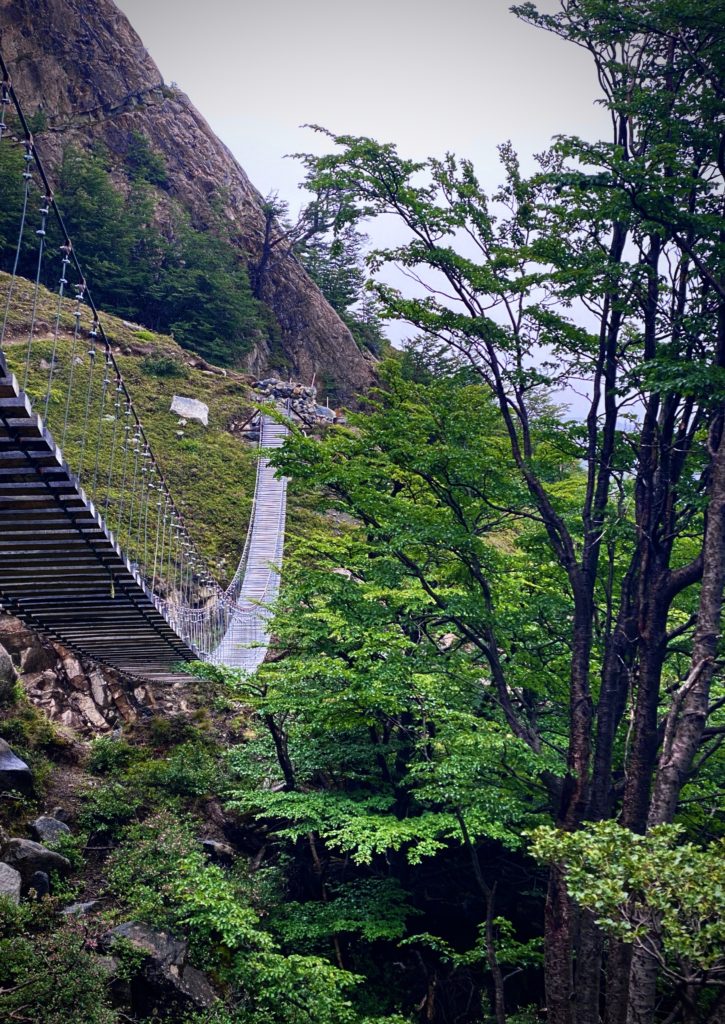
The W Trek may be the most popular trail in Torres del Paine but it certainly isn’t the only walking route that will let you experience this awesome corner of Chilean Patagonia. Usually open from November to April, there are also two route extensions that take you counterclockwise on the trail but promise to whisk you even higher into the clouds as you explore the mountains and glaciers. They are:
- The O Circuit (8-10 days) – Also known as the Paine Circuit, the O trek is the full circuit around the Cordillera del Paine mountains within the national park and includes the W route. It’s definitely a tougher and longer route, but its lesser traveled 74 miles (119 kilometers) of pure Patagonian wilderness will take you to the heights of the John Gardner Pass at about 4,000 feet (1,219 meters) above sea level. The O Circuit trail highlights you’ll see include the reflective Lago Paine, a mesmerizingly turquoise lake, and the mountains from the northern section of the park.
- The Q Circuit (9-11 days) – The Q Circuit is the longer version of the O Circuit. The Q route includes one extra day of trekking past Lake Pehoé. This one’s for the most dedicated of trekkers who have the most time (and money) to spare.
If you have more time to spare and are up for an extended trek, definitely try out one of the treks above.
18. Where to go after the W Trek
You’ve got a few options for onward travel once you’ve finished the W Trek. The most obvious and popular place that hikers return to is Puerto Natales. Many trek packages even include a drop-off back in that town, which has become a bit of a buzzy outdoors hub in recent years, touting craft beer emporiums and wine tasting establishments. Puerto Natales also happens to be the best base for launching boat trips through the stunning fjords of Chilean Patagonia, including to the far-flung Tierra del Fuego for penguin watching and the Serrano Glacier a little closer by.
You might also want to use this opportunity to cross over into Argentinian Patagonia. The W Trek takes you very close to the border and there are regular buses that make the trip up to El Calafate (6 hours) or you could do a private transfer to El Chaltén (6 hours) from Puerto Natales. Both locations are top options for continuing your adventures through the Andes, opening up hikes under the Fitz Roy (arguably the most famous mountain in Argentina) and visits to the Perito Moreno Glacier (a UNESCO site that showcases huge chunks of ice peeling off a glacier tongue).

19. Visas for Chile
There’s a long list of 90 countries that get visa-free access to Chile, including virtually all of the European Union, the United Kingdom, and the United States. That means administrative work at the border or prior to departure shouldn’t be too much of an issue if you’ve got your heart set on the W Trek. Notable exceptions include Australian citizens, who are no longer charged a hefty reciprocity fee when they enter but do need to go through the process of pre-applying for a single- or multiple-entry visa. All travelers should have at least six months’ validity left on their passport before traveling.
So there you have it, a comprehensive guide to 19 things you should know before hiking the W Trek in Chilean Patagonia! I hope this post has provided you with the necessary information to help you begin planning a truly memorable adventure tour to Chile. If you feel inspired, here are the other best places to visit in Chile .

This guide has covered a lot, but you may have more questions on hiking the W Trek in Torres del Paine. If so, my experienced team here at The Explorer’s Passage would love to hear from you so please contact us and let’s chat .
We have been running trips and treks to Chile for 10 years. We pride ourselves on delivering extraordinary tours based on travelers’ needs and are humbled by our guests’ testimonials . In fact, our dedication has earned us a 5-star rating on Tripadvisor , and awards by Travel+Leisure Magazine and Newsweek. Check us out and discover why so many travelers worldwide choose us . My team and I would love for you to join us on the W Trek or any of our other adventures !
I hope to go exploring with you soon!
Jeff Bonaldi Founder & CEO The Explorer’s Passage
About Jeff Bonaldi
Jeff Bonaldi is the Founder and CEO of The Explorer’s Passage, a premier adventure travel company. His mission is to provide travelers with the opportunity to transform their lives and the planet through the power of adventure.
Learn more about Jeff’s story and his company HERE .
Share This Amazing Location!
Related posts.
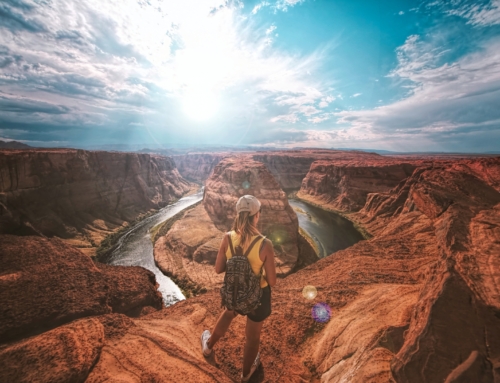
Expert Guide to Solo Travel & Top Destinations in 2024

Everest Base Camp Trek – 13 Things to Know for Your Trip in 2024
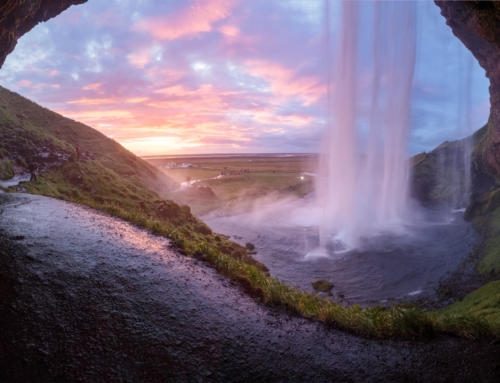
14 Best Places to Visit in Iceland in 2024

14 Things to Know Before You Climb Mount Kilimanjaro in 2024

The Ultimate Guide to Inca Trail Permits for 2024
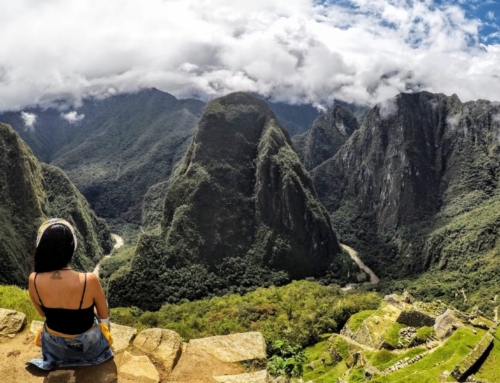
The Classic Inca Trail Route: A Day by Day Guide
Patagonia: Torres del Paine Classic W Trek
6 days | challenge yourself with the w trek in chilean patagonia – one of the best hiking spots in the world.

Immerse yourself in the Patagonian wilderness, on this 6-day hiking trip in the Torres del Pain National Park of Chile. Coined one of the most beautiful and popular treks in the world, the W Trek traverses through rolling grasslands and mountainous peaks, alongside the breathtaking blues of lakes, rivers and streams. You’ll stay in Refugios by night (backcountry huts or lodges with all the comforts of home) and walk the ever-changing landscape by day. Along the way, witness jagged icebergs on Lake Grey, diverse flora and fauna (look out for Andean condors and grazing guanacos) and the famous Los Cuernos del Paine (The Horns of Blue) and Torres del Paine (Towers of Blue) distinctive to Patagonia. If you’re looking for a challenge, this multi-day hiking trek is perfect for you.
Trip overview
- Immerse yourself in the sheer majesty of Chilean Patagonia – one of the most beautiful landscapes on earth with its vast mountain ranges, glacial lakes, grasslands and beech forests.
- Explore French Valley, Lake Grey and the famous Towers of Blue (Torres del Paine) on an actioned-packed multi-day hiking trip. This part of the world is widely considered one of the best for hiking.
- Witness this raw, untamed landscape on a low-altitude trek that takes you through a designated UNESCO World Biosphere Reserve. Keep your eye out for Andean condors, flamingos and guanacos.
- Stay in Refugios with fully serviced kitchens and bathrooms, comfortable beds and all meals taken care of – so you don’t need to worry about anything other than the experience.
- Hike the W Trek in Torres del Paine National Park West to East, saving the crown jewel (the three peaks of Torres del Paine) for last. What a way to cap off the perfect hiking trip!
- This is a hiking trip, so it does require a good level of fitness, but no previous experience is needed. The longest day will see you hiking for 24 km with 1100 m of elevation gain.
- Please read the packing list carefully and come prepared, as you may not have a chance to buy any missing parts of equipment or trekking clothing.
- You will need to carry your backpack on the trek as porter services are not included. Your fully packed trekking backpack should not exceed 12kg total weight. Alternatively, a porter service can be pre booked (subject to availability) at an extra cost, contact your booking agent for more details.
View the itinerary for departures between 01 January 2024 - 31 December 2024
Bienvenidos! Welcome to Puerto Natales, in Chilean Patagonia. This port city is famously the gateway to Torres del Paine National Park – the centre of your 6-day hiking trip. Depending on when you arrive, you may want to acquaint yourself with the city on foot, taking in the snow-capped mountainous horizon, or maybe you’ll pop into the Municipal Historical Museum in the city centre to brush up on some local history. You’re free until 6 pm when there is a welcome meeting with your group. After, you may want to head to a restaurant or bar to get to know your fellow trekkers a little better and taste some classic Patagonian flavours.
- Hotel (1 night)
There are no meals included on this day.
- Full W Trek guided hike West to East
It’s very important that you attend the welcome meeting as we will be collecting insurance and emergency contact details at this time. If you are going to be late, please let your travel agent or hotel reception know. Ask reception or look for a note in the lobby for more information on where the meeting will take place. Please note your Tour Leader will not stay in the same accommodation as the group for tonight, and will re-join you in the morning of Day 2.
After breakfast at the hotel this morning, you’ll take a transfer from the hotel to the Grey Sector of the W Circuit in wild Patagonia. This is the most famous and well-travelled hiking trail in the park because although it can be challenging, the trail can be completed by anyone of any fitness level (as long as you are reasonably active and able to walk long distances). First, take a boat ride from Hotel Grey to the trailhead and explore a landscape, which you will soon trek, from a different perspective. Then, from your starting point, the path is quite flat for the first hour, passing through beech-lined woods and crossing over some small streams. Along the way, you’ll have multiple opportunities to see the beautiful Lake Grey, with its electric-blue icebergs that jut from the water like small, otherworldly mountains. As you start to ascend, you’ll see a marvellous view of the Grey Glacier in the distance. Along the way, you’ll stop for a packed lunch, where you can keep your eye out for the Patagonian fox and the Andean condor. Eventually, make your way downhill once more and reach your accommodation for the night – Refugio Paine Grande. Refugios are backcountry huts or lodges that are along the trail, with full-service kitchens, beds and bathrooms. After a nice warm shower, cap off your first hiking day with a group dinner.
- Refugio Paine Grande (1 night)
- Paine Grande refuge overnight stay (fully equipped)
- Lake Grey boat ride
- Grey Trek guided trek
The trekking time for today will be about 4 hours or 11 km. There is no experience required for this trip, however, you do need to be reasonably fit and accustomed to long walks.
After breakfast at your Refugio, you’ll embark on a full-day trek through the French Valley. From here, the well-trodden path leads towards the Cuernos of Paine – look! You can see the jagged peaks in the far distance. Passing through woods and over small streams, you’ll have a beautiful view of Lake Nordenskjold, and later, the amazing sight of ancient sedimentary rock among the rolling hills. You’ll arrive at a rickety-looking hanging bridge, like something out of an Indiana Jones movie (don’t worry, it’s completely safe). Head on into the French Valley, which if you opt for the full round-trip, will take about 5 hours. Your path is a steady, uphill trail that reaches an altitude of around 900 m. If the weather is clear, the views are spectacular. After traversing rivers and forests of beech trees (or lenga trees), the skyline is dwarfed by towering granite spires and the famed Paine Grande – the highest mountain peak in the park, sitting at 3,050 m above sea level. The return trek (along the breathtaking Lake Nordenskjold) will eventually lead you to your accommodation and dinner spot for the night – Refugio Domos Frances.
- Refugio Domos Frances (1 night)
- French Valley guided trek
- Frances refuge overnight stay (fully equipped)
The trekking time for today will be about 10 hours or 24 km (although you will have the option to cut your hike short).
Fuel up on brekkie this morning and pack up your gear ready for another beautiful day of hiking. Today’s trek passes through beech tree woodlands and continues along the northern shore of Lake Nordenskjold, with its amazing dark-blue hues. On your left, the incredibly tall granite spires of Los Cuernos del Paine (The Horns of Blue) impose upon your track. The Horns are one of the distinctive features of the park and part of the overall Paine massif – which is nestled within the heart of the southern Andes. Along today’s trail, look out for grazing guanacos, swooping eagles, Magellanic ducks and the diverse flora of the area. On the lake, you may even see black-necked swans and pink flamingos! Today’s hike will come with a fair few rolling hills and potentially steep climbs, but after every incline, you’ll be met with stunning scenery that reminds you why you’re there. Tonight, you’ll arrive at Refugio Torre Central where you’ll enjoy a group dinner and a restful night’s sleep under the stars.
- Refugio Torre Central (1 night)
- Central Valley guided trek
- Central refuge overnight stay (fully equipped)
The trekking time for today will be about 5 hours or 13.5 km.
Arise nice and early and fuel up on brekkie, ready for your last full day of trekking this spectacular trail. As this is your last day in the park, it’s a good idea to remind yourself to be present, taking in all the majestic beauty of the area and the friendly faces who have been by your side along the way. Once you turn the final bend of today’s hike, you’ll witness the spectacle of the giant towers of Torres del Paine (Towers of Blue) – the gem of the park. This trail follows the W Circuit backwards, meaning you’ll finish your trip off with the highlight of this incredible view. Take a moment to appreciate the massive vertical structures with the reflective milky-blue lake at the base. You’ll have about half an hour to relax and take photos, have some lunch and enjoy the view. This scene is at a high altitude, however, meaning it will be windy and cold. When the time is right (when everyone’s noses start to turn pink) turn around and head back the way you came. You’ll have the option of stopping off at Refugio Chileno to stretch and refuel. Once past Refugio Chileno, head back to the French Valley and then downhill towards the buildings of Hotel las Torres. It’s time to say your goodbyes to the national park! Eventually, you’ll reach the ECO Camp, where you’ll meet your private transfer back to Puerto Natales.
- Base Las Torres guided hike
The trekking time for today will be about 8-9 hours or 19 km. Tour leader’s service will finish tonight in the evening after group is checked in the hotel in Puerto Natales.
This morning after breakfast your trip will come to an end. If you would like to extend your stay, just speak to your booking agent.
5 breakfasts, 4 lunches, 3 dinners
Private vehicle, boat
Hotel (2 nights), Refugios (3 nights)
Dates and availability
Important notes.
1. Full passport details are required at the time of booking in order to purchase entrance fees to Torres del Paine National Parks. 2. This trip starts with a welcome meeting at 6 pm on Day 1. 3. Tour leader is also a qualified Trekking Guide and will join the group for Welcome Meting and then on the morning of Day 2 for the start of the trek. 4. A single supplement is available to add on, this will be included on Days 1 and 5 (Hotel) only and is subject to availability. Please speak to your booking agent for further information. 5. All overnight stays in Torres del Paine are booked in authentic refuges, with shared facilities and mixed gender dorm style rooms. Occasionally we are not able to reserve one or more nights in the Refugios, in which case accommodations will be in tents that are provided and set up by the Refugios. In these cases, we will still have access to the Refugios for meals, relaxation and showers. The price of the trip remains the same and all camping equipment is provided. 6. You will need to carry your luggage on the trek (porter services is not included), so please read a packing list and our recommendations carefully. Your fully packed trekking backpack should not exceed 12kg total weight. Excess luggage can be stored in our hotel in Puerto Natales for the duration of the trip. 7. A porter service can be pre booked (subject to availability) at an extra cost to carry up to 15kg weight, contact your booking agent for more details.
Want an in-depth insight into this trip? Essential Trip Information provides a detailed itinerary, visa info, how to get to your hotel, what's included - pretty much everything you need to know about this adventure and more.
Check back later or explore reviews for similar trips.
Connection denied by Geolocation Setting.
Reason: Blocked country: Russia
The connection was denied because this country is blocked in the Geolocation settings.
Please contact your administrator for assistance.

- Standard Domes
- Superior Domes
- Suite Domes
- Suite Dome Loft
- Yoga & Wellness
- 7 Day W Trek
- 7 Day W Trek - Brush Variant
- 5 Day W Trek
- Wildlife Safari
- Epic Patagonia
- Puma Tracking
- 9 Day Paine Circuit
- Patagonia Wonders
- Green Ethos
- Social Commitment
- Cultural Preservation
- Torres del Paine
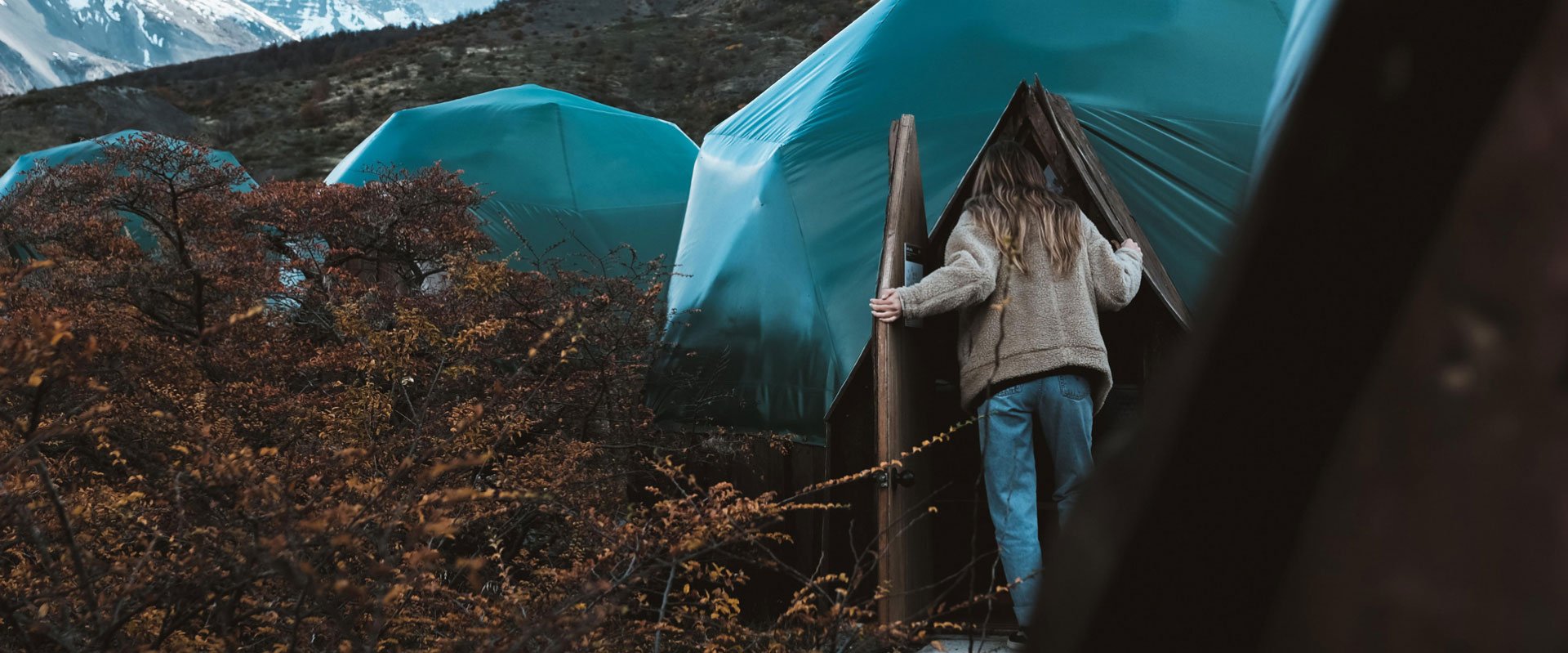
Patagonia Torres del Paine
7 Day W Trek
Patagonia Torres del Paine 7 Day W Trek
Tackle the incomparable w trek, ecocamp style.
- 7 Day W Trek Itinerary
Explore Torres del Paine in all its glory with our exceptional Torres del Paine tours. The visually stunning W Trek highlights the best of Torres del Paine including the Grey Glacier, French Valley and the Tower base - a once-in-a-lifetime experience. Team up with our highly experienced and knowledgeable guides and head off on one of the most famous treks in the world, ending each day with spectacular sights, delicious meals and comfortable nighttime accommodations.
This program includes 2 nights of accommodation away from EcoCamp at campsites along the trail.
Did you run out of availability? Check this alternative.
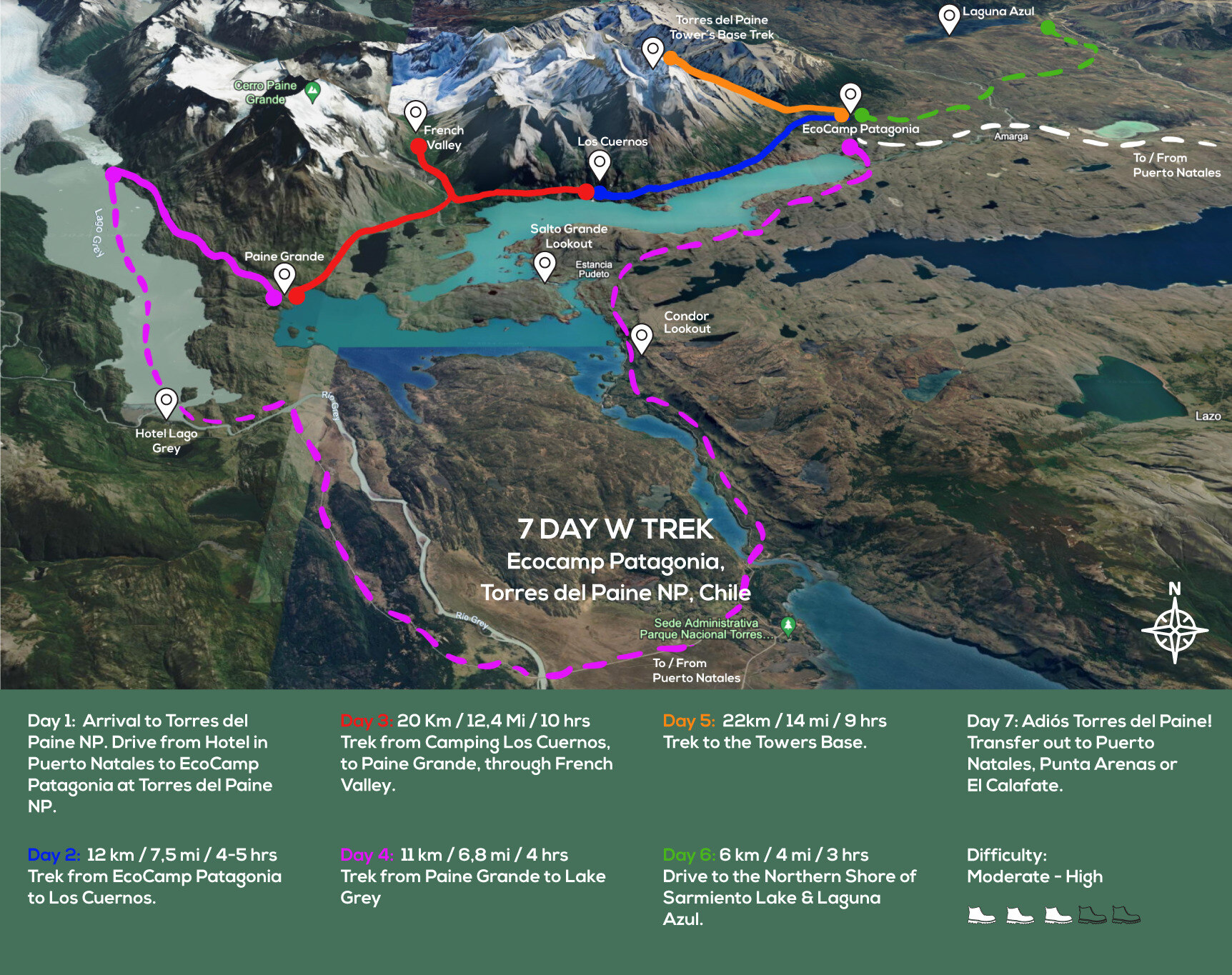
Day 1: The Patagonian Adventure Starts
_resultado.webp?width=1067&height=800&name=EcoCamp%20with%20a%20Drone%20(5%20de%201)_resultado.webp)
Let’s begin the trip of a lifetime! You can travel to Patgonia from Santiago and land either in Puerto Natales or Punta Arenas. We’ll start with a morning pick-up from your hotel or the airport and drive to EcoCamp Patagonia, located in the world-famous Torres del Paine National Park, one of the most beautiful places in South America. On the way to EcoCamp, we’ll make a stop in Puerto Natales, a small, lively town on the shores of Last Hope Sound (Ultima Esperanza) where we can enjoy a hearty lunch of local food. This scenic journey ends with our arrival at EcoCamp Patagonia, nestled in the heart of Torres del Paine National Park with a prime view of the majestic Paine Towers.
Overnight at EcoCamp Patagonia.
Meals: Lunch or Box Lunch, Dinner.

Day 2: Los Cuernos Trek

We’ll dive into our Patagonian adventure with a pleasant walk along the Cuernos Trail which leads to the beautiful Lake Nordenskjold. During this warm-up walk - a day hike of medium difficulty -, we will have the opportunity to admire the park’s exquisite flora and fauna and take in the views of the horn-like peaks of slate that sit atop the gray granite of the Paine Massif. The trek may end at Refugio Los Cuernos, a small and cozy mountain guesthouse located on the shores of Lake Nordenskjold. Or it will end at Domo el Francés, located between Cuernos and Italiano camping sites, with an amazing view of Nordenskjöld Lake. The evening is at your leisure.
Hiking Distance: 12 km./7.5 mi.
Hiking Time: 4-5 hrs.
Max. Altitude: 244 m./800 ft.
Elevation gain: 300 m. / 1148 ft.
Overnight at Camping Cuernos or Camping El Francés (depending on availability)*.
Meals: Breakfast, Box Lunch, Dinner.
*Please ask your Travel Experience Designer about upgrades to shared dormitories.
Day 3: The Paine Massif's Heart: Valle Frances
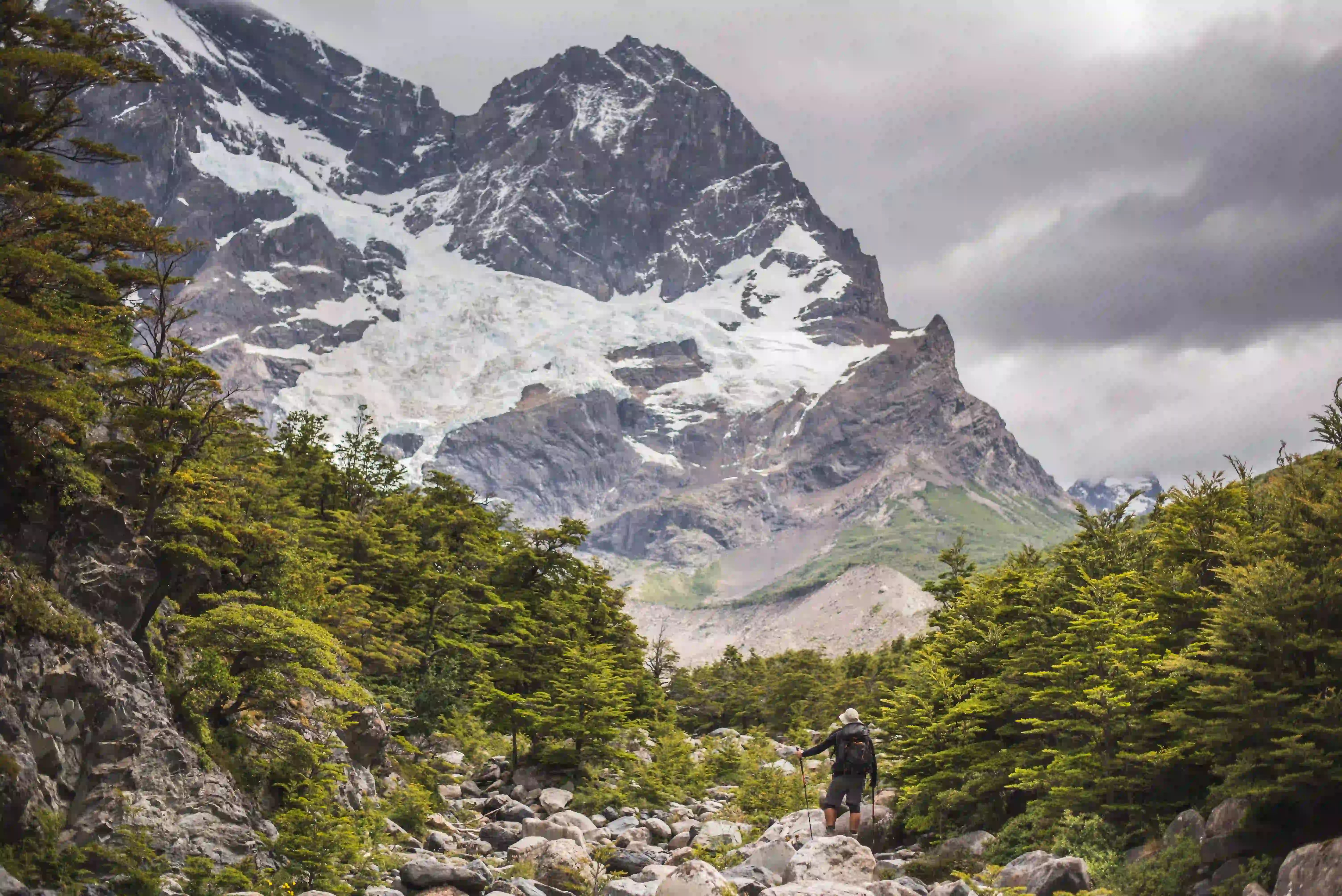
Get your boots ready for today’s challenging, yet rewarding, trek. After breakfast at Refugio Los Cuernos, we'll begin hiking along a steep trail leading into the very heart of the Paine Massif - the famed French Valley. How far we’ll go depends on our group's trekking rhythm. A swifter walk will lead us to the French River’s hanging bridge, located at the foot of the south-eastern face of the Massif. We will then continue to ascend towards the upper section of the valley to marvel at spectacular views of the extensive mass of the valley's geological formations: Hoja (Blade), Máscara (Mask), Espada (Sword), Catedral (Cathedral), Aleta de Tiburón (Shark’s Fin) and the magnificent Fortaleza (Fortress). After our upward trek, we will pause for a tasty picnic and relax for a while. The day's trek will end with a descent through an undulating terrain of mixed grassland and light forest to Refugio Paine Grande. Please note: An optional trek to Mirador Britanico is also available.
Hiking Distance: 20 Km. / 12.4 Mi. (If you are hiking until Mirador Británico, that's an additional 4 Km. / 2.4 Mi.).
Hiking Time: 10 hrs.
Max. Altitude: 686 m./2250 ft.
Elevation gain: 820 m. / 2690 ft.
Overnight at Camping Paine Grande*
Day 4: Grey Glacier

Today we will hike from the Paine Grande Refugio along the shores of Lake Pehoe to the northern side of Lake Grey ("Lago Grey"). We will feast on a picnic lunch before boarding the boat that sails to the huge, crystalline facade of Glacier Grey. From the southern end of Glacier Grey, we will transfer to EcoCamp. Due to the temperamental weather of the region, boat trips across the lake may occasionally be canceled or if the required minimum of 15 passengers is not reached. If this is the case, we will trek up to the sightseeing point to enjoy wonderful, panoramic stunning views of Grey Glacier instead. Afterward, it is time to return on foot to Paine Grande and take a catamaran to the dock, where we will be picked up and driven to EcoCamp.
Hiking Distance: 11 km./6.8 mi.
Hiking Time: 4 hrs.
Elevation gain: 271 m. / 889 ft.
Day 5: The Big Challenge: Trek to the Towers Base
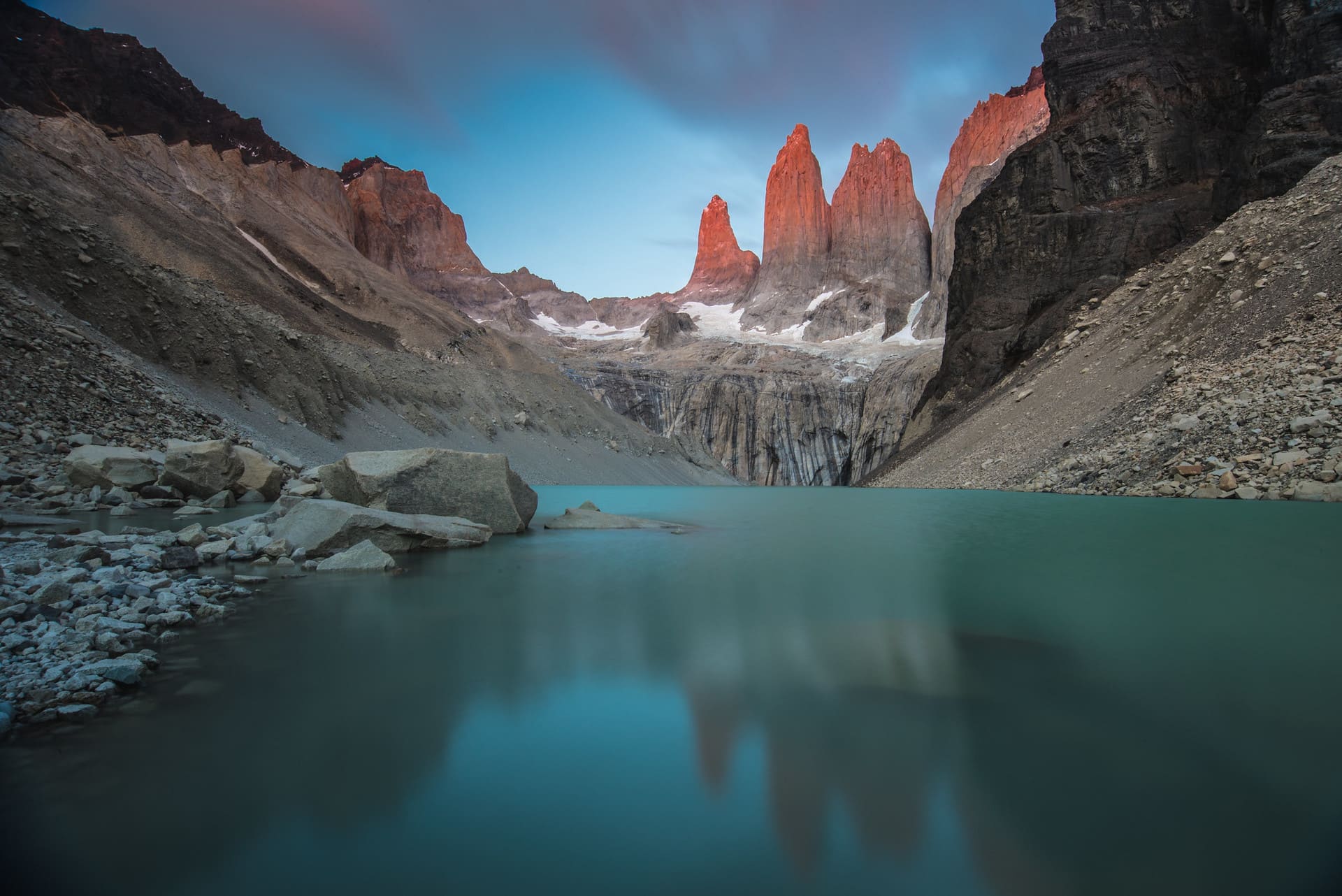
Today is the big day -- the walk to the base of the famous Paine Towers. We will walk from the campsite towards Hostería Las Torres before ascending to Ascencio Valley on the Tower’s eastern face. Mountain ridges, beech forests, and small rivers line the scenic walk towards the valley. Our big challenge is the steep moraine, a huge mass of boulders that lead to that iconic base of the Towers, the three gigantic granite monoliths that are the remains of a great cirque sheared away by glacial ice. After a tough uphill climb, the Towers eventually come into full view, rising majestically before us with the glacial lake visible below. Is there any better place in the world to have lunch? After feasting on the view,we backtrack along the same trail through Ascencio Valley and return to EcoCamp for a well-deserved dinner and some tasty Chilean wine.
Hiking Distance: 22 km./14 mi.
Hiking Time: 9 hrs.
Max. Altitude: 914 m./3000 ft.
Elevation gain: 1148 m. / 3766 ft.
Day 6: Eastern Lakes
_resultado.webp?width=1080&height=720&name=Laguna%20Azul%20al%20Amanecer%20(25%20de%201)_resultado.webp)
On the sixth day, we'll opt for a less strenuous trail in order to counter our exhausting efforts of the previous day. After breakfast, we will make a leisurely car journey towards Laguna Azul, home to many wild guanacos and ñandús. We will pause occasionally to admire the views of the Patagonian steppe and the Towers from its many perspectives. At Laguna Azul, we will hike to the lookout point where we will be treated to a gorgeous view of both the lagoon and the granite towers. After lunch, we will drive to the northern shore of Sarmiento Lake where the Fauna Trail begins. As we hike northbound, we will spot an impressive range of Patagonian fauna on the vast plains, and maybe even the occasional puma print! We will pass the charming Goic lagoon and, after approximately 5 km of relaxed walking, we will reach the Laguna Amarga ranger station where we will be picked up and driven back to Ecocamp to celebrate with a farewell dinner. How epic was it to explore the region on a W Trek?
*Please note: if there are more than 6 travelers in the group, there is an option to split into two groups, with one group (or the whole group if everybody's in the mood!) cycling to Laguna Azul!
Hiking Distance: 6 km./4 mi.
Hiking Time: 3 hrs.
Max. Altitude: 300 m./984 ft.
Elevation gain: 267 m. / 876 ft.
Day 7: Adiós Torres del Paine!
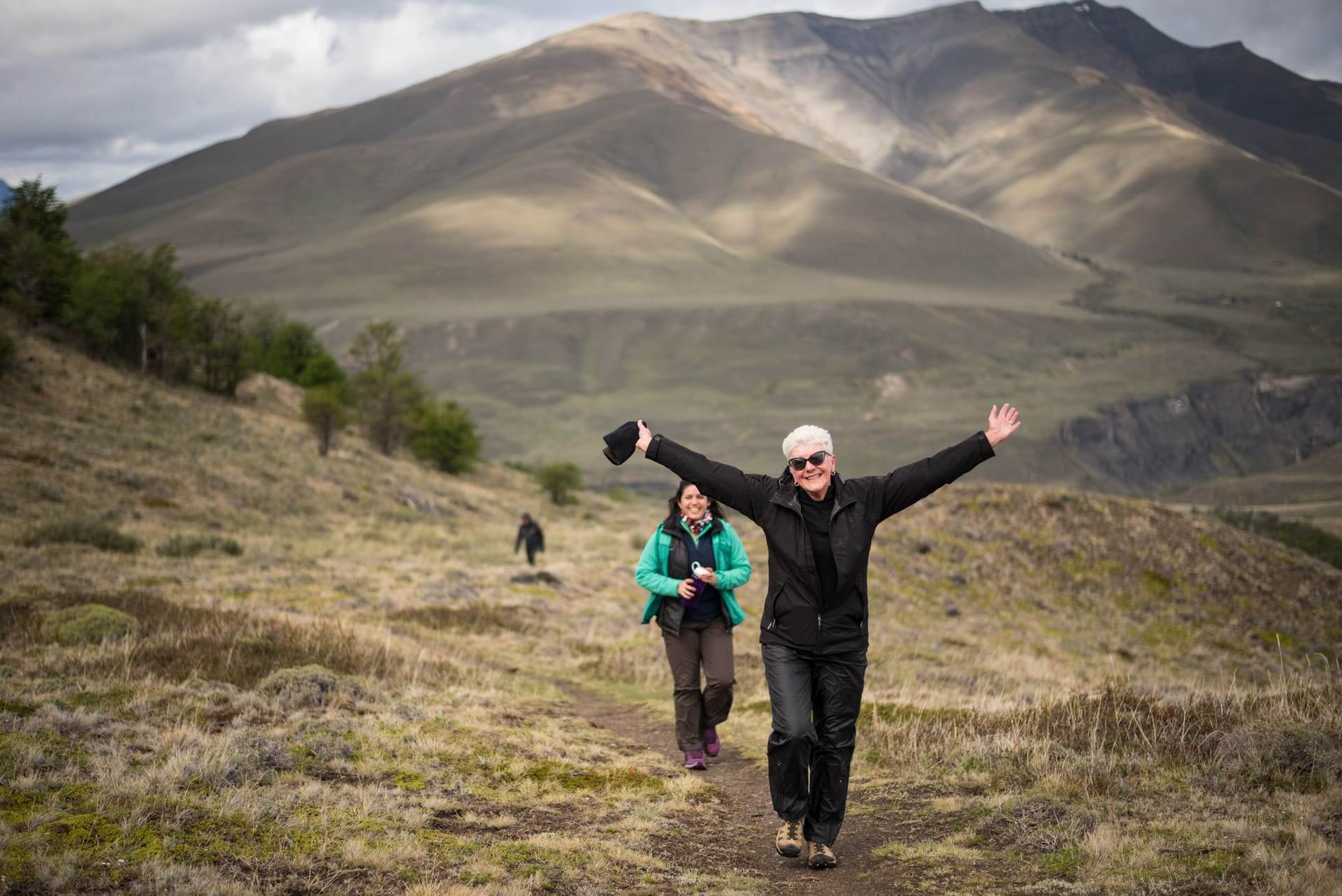
Onto the next adventure! Today we will board an early morning vehicle, sit back, relax, and enjoy a scenic ride back to Puerto Natales or Punta Arenas in time to catch an evening flight onwards. Alternatively, transportation to El Calafate can also be organised.
Meals: Breakfast, Box Lunch.
Can't find availability for this program?
If you can't find availability or are looking for something that better fits your preferences and itinerary, we have the perfect solution for you!
Discover our exciting W Trek - Brush Variant program, sailing from the fjords to the heart of the Paine Massif, with stunning views of three magnificent glaciers and virgin forests.
Departures are every Friday from November to March. Don't hesitate to explore this incredible experience by clicking here .
<< Back
Accommodation
Some nights at ecocamp patagonia.
Ecocamp Patagonia is located in the heart of Torres del Paine National Park in Chile with views of the majestic granite Paine Towers. It was the first geodesic dome hotel in the world, offering an upscale camp at the domes inspired by the region’s ancient nomadic inhabitants.
EcoCamp Patagonia Suite Dome (Heating & Private bathroom, 28m²/300ft²)
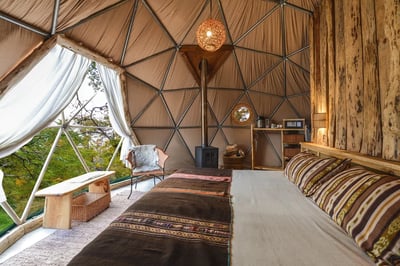
EcoCamp Patagonia Suite Dome Loft (2 floors, Heating & Private bathroom, 37m²/398ft²)
.webp?width=400&name=Suite%20Loft%20%20(4).webp)
Suite dome lofts are two-storey domes which fit up to four people and have comfortable double or twin beds both up and downstairs. These domes, ideal for families or groups of friends, come with a wood stove, a private terrace and a private bathroom with a state-of-the-art composting toilet.
EcoCamp Patagonia Superior Dome (Heating & Private bathroom, 23m²/250ft²)
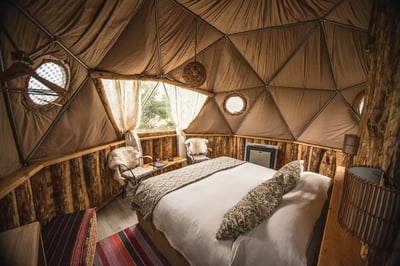
Spacious, comfortable and equipped with private bathrooms, Superior Domes are the optimum choice for trekkers wanting that bit more space and comfort at the end of a long day’s walk. Each Superior Dome has comfortable queen-size or twin beds, a propane heater, skylight windows and a private bathroom with a sophisticated composting toilet.
EcoCamp Patagonia Standard Dome (Shared bathroom, 10m²/108ft²)
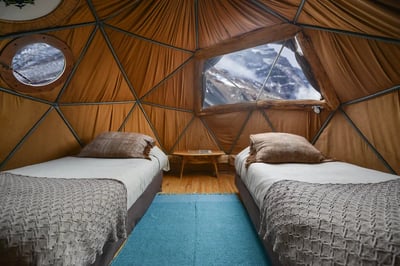
EcoCamp Standard domes were the world's first lodge accommodation in geodesic shape. They are resistant to the strong Patagonian winds, and come equipped with two single beds (doubles on request), cozy fleece blankets and feather quilts. There are windows in the ceiling for stargazing. Standard domes include shared bathrooms which are large, comfortable and gender divided.
Campsite at Los Cuernos or El Francés (Night 2)
Depending on the itinerary, guests will have the opportunity to camp at either the picturesque El Francés or Los Cuernos Sector during their stay. Both locations offer stunning views of the surrounding landscapes and are perfect for immersing yourself in the natural beauty of Torres del Paine National Park.
Optional upgrade to the shared dormitories inside Refugios are available upon request, please ask to your Travel Experience Designer for more information.
Los Cuernos Campsite & Refugio
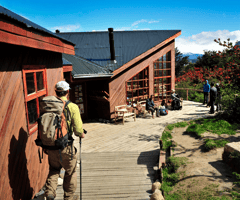
Shared dormitories in Refugio Los Cuernos
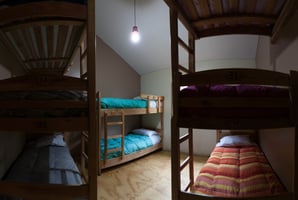
Francés Campsite & Refugio
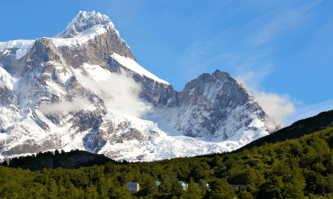
Shared dormitories at Domes in Refugio Francés
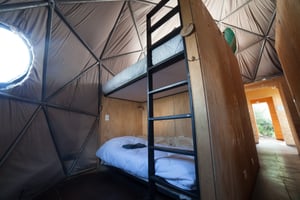
Campsite at Paine Grande (Night 3)
Accommodation in tents for 2 people will be provided in the corresponding shelter facilities. The shelters are heated and have a very comfortable feeding area where abundant meals are served. Alternatively, guest houses or lodges have rooms for 4 to 6 people. The beds are single bunk beds (sleeping bags and fleece blankets are provided) while the bathrooms are also shared and have hot water.
Paine Grande Campsite & Refugio
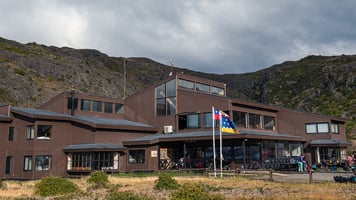
Paine Grande's Shared Dormitories
An optional upgrade to the shared dormitories inside Refugio Paine Grande can be requested. Please review availability and prices with your Travel Experience Designer.
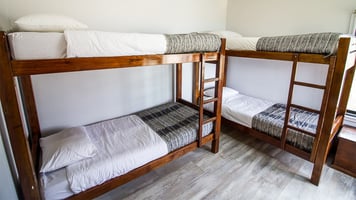
- All ground transport - private and domestic - as indicated in the itinerary.
- Boat crossing on Grey Lake.
- 4 nights accommodation in EcoCamp.
- 1 night accommodation at Camping Paine Grande.
- 1 night in Camping at Los Cuernos or El Francés.
- Park fees for Torres del Paine National Park.
- One expert English speaking trekking guide.
- Sleeping bag for refugios if needed.
- Transportation for your luggage within the park (while trekking you will carry just your day pack).
- Meals: 6 Breakfasts, 7 Lunches/Box Lunches, 6 Dinners.
- Transportation to/from El Calafate (This includes bus tickets and a van from your hotel to the bus terminal).
Not included
- Flight tickets.
- Insurance (appropriate insurance is mandatory).
- Voluntary tipping to guides and staff.
- Soft drinks or snacks not served with the meals included at the EcoCamp. Bring cash to buy extra drinks, snacks or souvenirs in Torres del Paine National Park.
- Personal items.
Every Monday from October to April.
Departures require a minimum of 2 participants. If a given departure isn't available, you will be put on a waiting list.
Starting / finishing point
This trip starts on Monday and finishes on Sunday with pickups and drop-offs in Punta Arenas or Puerto Natales. Please visit our Weekly Transfer Board for details of EcoCamp pick up and drop off times.
Important notes
During Low and Shoulder Season (October and April), the boat trip to Glacier Grey may be canceled, if this is the case, the itinerary will be modified sou depart from Paine Grande through the Pehoé Lake navigation or Las Carretas trail.
If refugios are unavailable, alternative accommodation will be provided in tents or domes with prior notice.
If you choose a Standard Dome and you are traveling alone, you can share the dome with another person of the same gender and pay the double base price. If you want the dome to yourself, you need to pay a Single Supplement.
Accommodation in the refugio will be provided in comfortable tents or domes, including mat, sleeping bag and a polar fleece liner; our team will set up and dismantle all this. The campsite provides satisfactory bathroom facilities. Meals will be served inside the refugio.
Please note: During Shoulder and Low Season (October and April) the Towers Base Trek excursion might be canceled due to weather conditions and safety concerns.
Physical demands
This is the right trip for energetic people who like to be active and have a spirit of adventure and a positive attitude. During this trek y ou will walk a total of 77 kms /48,5mi. On the map, in the itinerary section, click on the walking person icon for daily information.
To enjoy this trek it is essential to be in shape before you arrive. It is not wise to regard this trek as a means of getting into shape or losing excess weight. Start a program of conditioning well before departure.
Group size guiding staff
- 9 travelers is the most typical group size, plus guiding staff.
- Maximum 12 clients.
- Guide to passenger ratio: 1:6
Children policy
Those aged 13 years or older are welcome and are considered adults.
Children between 10 and 12 might be accepted in this program if their legal guardian sends a formal letter stating that the child is prepared for such an intense trekking trip and authorizes us to hire a private guide in case the child cannot perform well during the trek.
Children under 10 years of age cannot participate in this trip. This trip doesn’t offer a special discount for children.
In Torres del Paine and throughout Patagonia transport is in minivans that normally seat from 8 to 14 people. Pick up/ off times will be confirmed locally by our operations team. An exclusive toll-free emergency number will be available for anyone needing additional support while they are in Chile.
The vast unbroken stretch of ocean to the west and south of the South American continent leaves the Patagonian Andes very exposed to the winds that circle the Antarctic landmass, making the weather hard to predict. Fine weather may deteriorate almost without warning; even in summer (December to March), you should come prepared to find strong cold winds (up to 130 km/hr) and rainfall. Summer’s average temperature is 11ºC (52ºF), ranging between 2 to 24ºC (35 to 75ºF).
What you need to bring
Passengers need to be prepared for summer and winter all at once. We recommend the following:
- A day backpack (30 liters - to carry a camera, glasses, raincoat, etc)
- Trekking or hiking boots
- Extra shoes for evenings or in case others get wet
- Waterproof jacket
- 2 pairs of wool socks
- Fleece jacket or sweater
- Shorts or comfortable loose pants
- Sun protection (glasses, hat, lip balm, and screen) and
- Optional Capilene underwear for the upper and lower body
- Cash to buy extra drinks, snacks or souvenirs in Torres del Paine National Park.
Porter service and luggage handling
Who are the porters.
The porters are people who will help us with the logistics of transporting luggage during our trip. They will be in charge of carrying items such as: tents, sleeping bags, mats/insulators and dry bags*. They will transport these items from Ecocamp or the camps occupied during the trek, to our next stops, making sure to arrive on time so that we can find these items at our disposal once we arrive at the camps/refugios.
*Dry bags: Dry bags, as their name indicates, are waterproof bags in which we can store the items that we will not need during the walks and keep them dry and insulated while the porters transport them. The dry bag limit (regulated based on the weight that is healthy for porters to carry) is 15 Lt. and 5 Kg/11 Lb. each (in case there is more than one dry bag on your trip).
These bags will be labeled with your name so that they are not confused with those of other members of your group.
Dry bag logistics for the 7 Days W Trek
Upon arrival at EcoCamp, the guides will give a briefing to explain in detail the logistics of the dry baga and the next day's activity.
On the 7 Day W trek you will be given 1 dry bag, which you must fill with your belongings on day 1 of the itinerary upon arriving at Ecocamp. This bag will have the following organization/logistics.
Day 2: On day 2 of the itinerary, this bag will be transported from EcoCamp to Camping Cuernos or Francés (depending on availability), where it will wait for you with your belongings for that evening.
Day 3: On day 3 of the itinerary, this bag will be transported from EcoCamp to Camping Paine Grande, where it will wait for you with your belongings for that evening.
Day 4: The dry bag leaves from Paine Grande to EcoCamp, where you can have it when you arrive in the afternoon.
Tips for assembling dry bags
Taking into account that you will only have access to 1 of the 2 dry bags during your trip (when your trip includes 2), we recommend the following to have optimal access to your items:
- In dry bags, store items that you will only need during the nights in refugios , for example: Change of clothes (underwear, pants, t-shirts, first layers, socks).
- Sleeping bags and insulators/mats are NOT stored in the dry bags , these will be transported separately by the porters.
- Do not store items that you will need every night such as personal hygiene items or medications; we recommend that you carry these items in your daily backpack.
- Do not store items that are too large or heavy, remember that these must be transported by the porters and have a limit of 5Kg/11Lb.
- Do not store flammable or too delicate items that could cause accidents for those transporting the dry bags.
- Avoid storing food in dry bags as it can ruin the bag and also spoil the food.
Itinerary modifications
The weather in Patagonia can be difficult to plan around at times. We reserve the right to change the order of the days in any itinerary at the discretion of the trip guide and based on operational considerations. The trip guide can modify, change or eliminate part of the itinerary based upon these safety/weather considerations.
<<
- Trek the beautiful French Valley
- Take on the challenging Tower Base trek
- Take in the views of Los Cuernos
- Boat ride to Grey Glacier
- Stay 4 nights at EcoCamp Patagonia
- Stay 2 nights at campsites along the trail
- Recommended trek for active hikers
- Photo Gallery
Itinerary

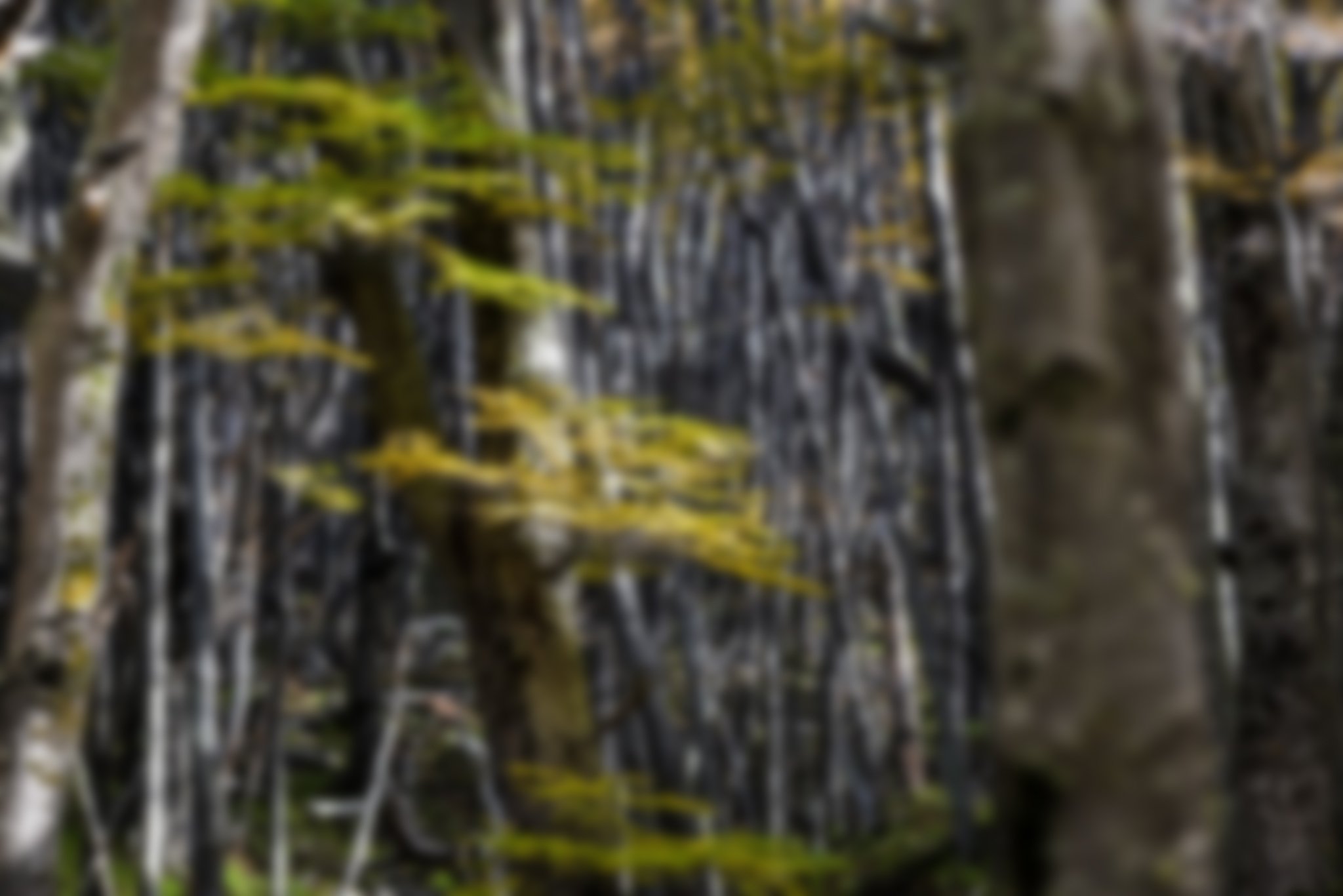
“We did the 7 day W trek - amazing experience. We started and ended our week at the Ecocamp and stayed 2 nights in refugios. The Ecocamp is very special. The dome was very comfortable, the staff extremely helpful and friendly. The guides were fantastic. The common rooms allowed a sense of shared community. From the Ecocamp, you are in the heart of Torres. I'm so glad we stayed here and highly recommend it.”

Subscribe to our newsletter
Domes that Connect
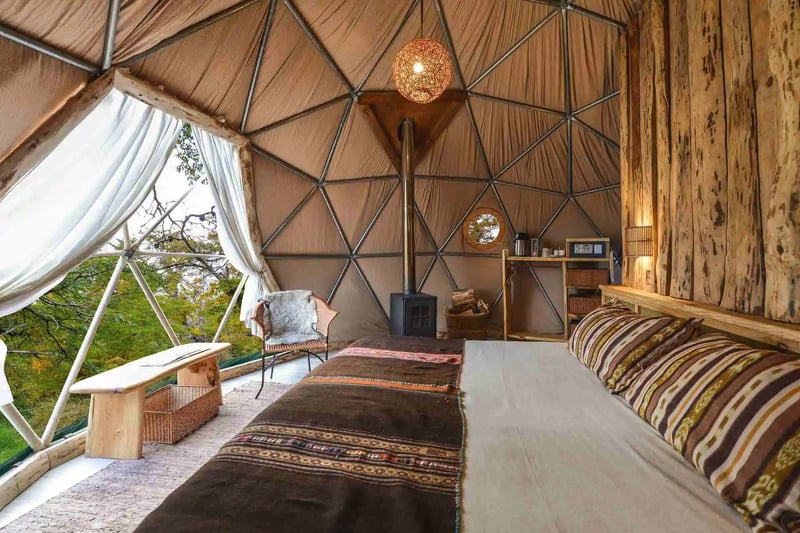
Spend your nights in our comfortable Standard, Superior or Suite Domes. Our high-quality accommodation is cozy, eco-friendly and has an authentic Patagonian feel.
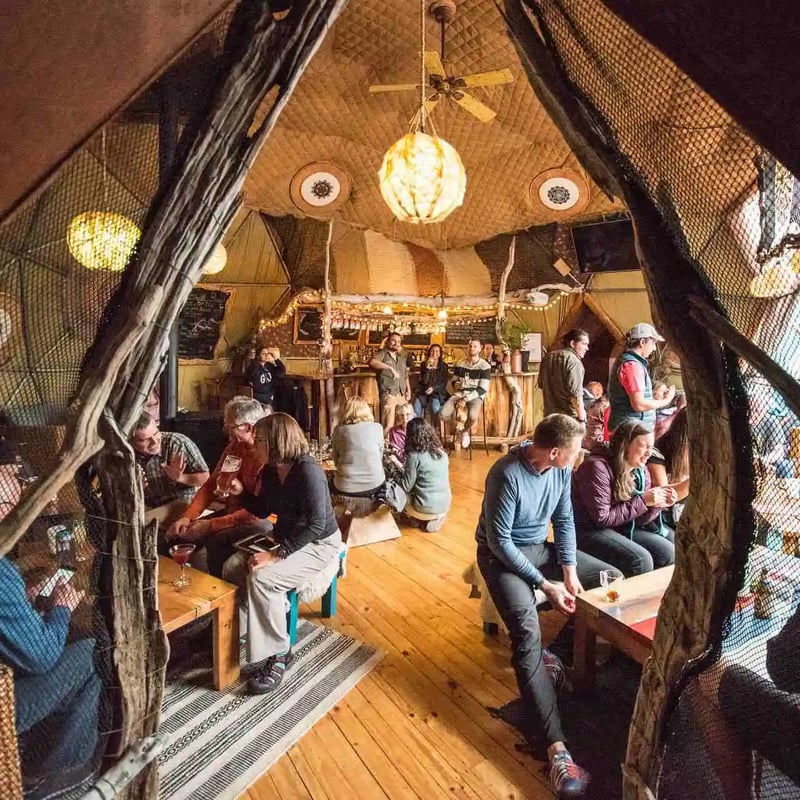
Community Domes
Meet and connect with people from all over the world! Our Community Domes are a great place to grab a drink, enjoy a delicious meal and strike a new conversation.
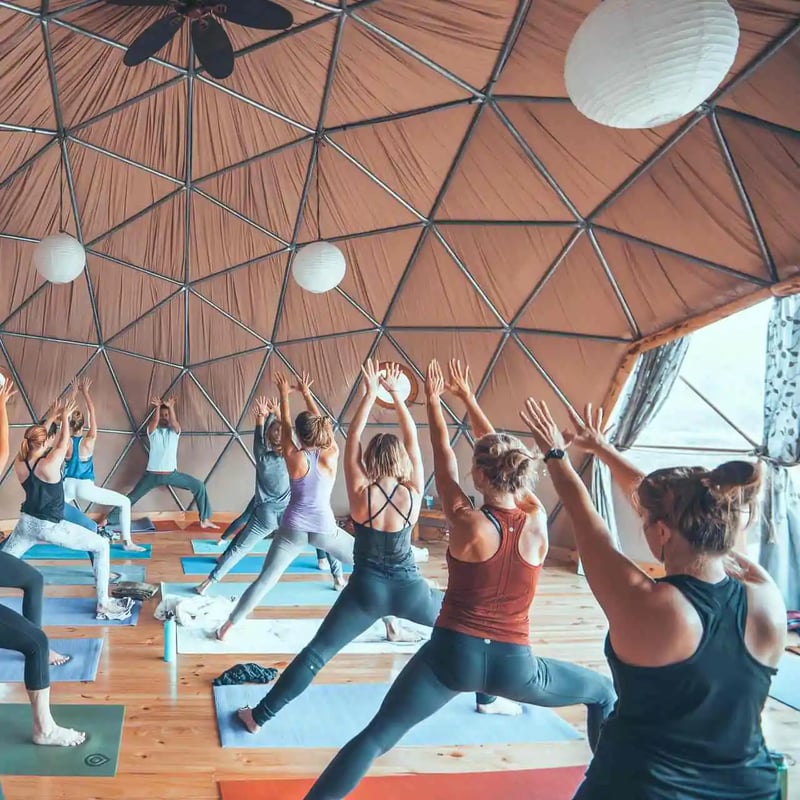
Yoga & Wellness Domes
Start your day with some stretches and poses in our Yoga Dome. We offer daily classes with an expert instructor.

The Patagonia Way
Insider's guide: When to visit Patagonia

- Sustainability
- Privacy Policy
- Work with us
Searching Availability...
- Search Please fill out this field.
- Manage Your Subscription
- Give a Gift Subscription
- Newsletters
- Sweepstakes
- Nature Travel
Everything You Need to Know to Trek Patagonia's Torres del Paine
Considering how beautiful this corner of the world is, planning a backpacking adventure here is worth the effort.
:max_bytes(150000):strip_icc():format(webp)/Cassidy-Randall-2000-be9d24d06d274f75a1bb91d34e256a10.jpg)
As I crested the rise of John Gardner Pass, my breath was taken away — and not just from Patagonia's famous fierce wind. Below me lay the miles-long expanse of Grey Glacier spread out like an icy sea. Its big toe trailed icebergs into Grey Lake, its head disappeared up the valley in a wash of light, and a rainbow graced its far side. I was, quite literally, struck with wonder.
It was day three of an eight-day trek on the O Circuit in Torres del Paine, the Chilean national park famous for its iconic skyline. It's also quickly becoming known for its multi-day O Circuit (and the shorter front side of the circuit called the W Trek) as a way for more adventurous tourists to see the park.
The W Trek may get all the glory for being the shorter version of the full circuit and thus easier to plan and access — but with campsites set in storybook-beautiful locations, cozy refugios where you can buy a bottle of wine and a three-course meal, and a double dose of drool-worthy scenery, hiking the full O Circuit is far and away worth the extra effort to plan.
To make your trip planning easy, here's everything you need to know. The biggest tip: Start planning now for a trip from December to March to ensure you get the reservations you want. Alternatively, aim for the quieter shoulder months of November or April, when the weather is still good and the park is relatively empty.
5 Things to do in Patagonia
How to book camping and lodging reservations online.
At first glance, it may be intimidating for the average traveler to plan a trek around the circuit. In response to the increasing popularity of the area, the park now requires advance reservations for all campsites and refugios, the backcountry lodges along the trail, and limits the number of people in each. Two separate companies, Vertice and Las Torres Patagonia , as well as CONAF (the Chilean version of a national park service), run the various campsites, and each has its own booking system.
You can also go through a service like Booking Patagonia or Torres Hike to book campsites. These third-party booking platforms will charge you a small fee to make your reservations for you, but you won't have to navigate three different websites (and deal with translating them from Spanish with assistance from Google).
How to Get There
Fly into Punta Arenas and take a bus to Puerto Natales, the gateway to Torres del Paine. There's a tiny airport in Puerto Natales that's worth the extra cost to fly into if your flights line up. This charming port village has several small hotels to choose from.
Potential Itinerary for an O Circuit Trek
The O Circuit is completed counterclockwise, beginning at the Laguna Amarga entrance on the east side of the park. From Puerto Natales, you can take a bus to Laguna Amarga, and once you've paid your entrance fee, take another bus to the Central sector, where there's a campsite , refugio , and nearby Hotel Las Torres .
Estimates of how long the trail is range from 68 to 85 miles. In any case, it takes the average hiker eight days.
Day 1: Central/Hotel Las Torres to Seron
Distance: About eight miles
While this is probably the least scenic stretch of the circuit, the easy walking is a great way to ease into this multi-day trek, especially if you're getting a later start due to traveling from Puerto Natales. The Seron campsite is surrounded by the rolling hills and wildflower fields that border the Paine River. There's a small restaurant, Wi-Fi, and bathrooms with hot showers.
Book Seron campsites through Las Torres .
Day 2: Seron to Dickson
Distance: About 11 miles
Hike up a small pass where you get the first glimpse of the glacial lakes and impressive peaks Patagonia is known for. Even the back side of the famous towers make an appearance from behind the jagged ridgeline at one point.
Refugio Dickson is one of the smallest refugios on the circuit. It and the campsite are stunningly situated on Dickson Lake, which is bounded by a spired glacier at the far end of the water that lights up pink with the sunrise.
Book Dickson accommodations through Vertice .
Day 3: Dickson to Los Perros
Distance: About seven miles
If it's cold, windy, or rainy, it's a good idea to spend a mellow morning at Dickson before setting out for Los Perros ("The Dogs"). The Perros Glacier is unique and worth spending some time taking in from the lookout around the corner from the moraine if the weather's good. The campsite is well-protected in the trees, with a large cooking shelter and a small store for snacks and beer.
Book Los Perros accommodations through Vertice .
Day 4: Los Perros to Paso and Grey
Distance: About five miles to Paso, plus another four miles to Grey
This section of trail takes hikers over John Gardner Pass, ducking in and out of the trees before leaving the trees behind altogether for the dramatic alpine. Cresting the pass offers the first view of Glacier Grey, one of the most amazing sights on the entire circuit.
The downhill section of this stretch is a leg-burner, descending into the forest to the campsite at Paso. This site is lackluster, but a good option for those who might need to break up a long day. Otherwise, it's worth pushing on to Grey for ridgetop walking with views of icebergs and a series of long swing bridges over gorges. Refugio Grey and the campsite have gorgeous views of the snow-covered ridgeline.
This is the last stop on the back side of the circuit. There's an option to take a boat across Grey Lake to Hotel Lago Grey, near the southern park entrance, making Grey a good starting or stopping point.
Book Paso accommodations through CONAF for Paso and Vertice for Grey.
Day 5: Grey to Paine Grande
This is the start of the W Trek, as well as the first stretch of the circuit accessible to day hikers, so be prepared for a busier trail. Most of the path winds along a ridge above Grey Lake with intermittent views back to the glacier.
Paine Refugio is the biggest on the circuit, boasting a full cafeteria, bar, and warming rooms with wood-fired stoves. Its picture windows look out at the massif of the Cuernos (Horns) del Paine, making it the perfect place to post up for a well-deserved hot drink. The campsite is a vast grassy field with the same killer view. There's also a boat option here across Pehoe Lake to exit the circuit, or for hikers to start the W Trek.
Book Paine Grande accommodations through Vertice .
Day 6: Paine Grande to Camp Italiano, Plus Britanico Lookout
Distance: About five miles to Camp Italiano, plus another three miles one way to the Britanico lookout
It's a quick and easy hike to Camp Italiano. From here, drop heavy packs and then day-hike up the French Valley for some of the most incredible scenery of the entire trek along the base of the Cuernos, the French Glacier, the Shark Fin, and other dramatic alpine features.
There's no refugio at Camp Italiano, which is a basic site nestled into the trees. The French campsite a half hour further down the trail is also a good option, or hike another three miles to Los Cuernos.
Book Camp Italiano accommodations through CONAF , or book a French campsite or refugio through Las Torres. Accommodations at Los Cuernos are also booked through the Las Torres website and include cabins , a refugio , and campsites .
Day 7: Camp Italiano to Chileno
Distance: About 10 miles
This mellow-but-long section runs along the base of the massif, making for some incredible views above. The Central campsite and refugio are nestled against a hillside with a view of the massif. The Chileno campsite and refugio are further up the trail, allowing for a shorter hike the next day to the base of the Torres — called Mirador ("lookout") Las Torres. However, Chileno is passed through by everyone hiking around the base of the Torres, so it may not be the quietest option.
Book Central or Chileno accommodations through Las Torres.
Day 8: Chileno to the Base of the Torres and Welcome Center
Distance: About 13 miles
This is the jewel in the crown of the park: the famous towers that Torres del Paine is named for, rising from a deep blue glacial lake. That also makes it the most popular section of the trek, so be prepared for streams of people or wake up early to catch the view with a bit of solitude — although local guides will tell you that the towers usually emerge from the clouds in the early to late afternoon.
Treat Yourself
For the tail end of your trip, consider treating yourself to a night or two at EcoCamp Patagonia . This sustainable hotel composed of geodesic domes is located in the heart of Torres del Paine right off the circuit, making it feel like you're still in the heart of the wild — especially in its serene courtyard where you can relax and watch the sunset over the Torres. With yoga, massage, three-course meals, and a lively bar, EcoCamp is a glorious way to end your hike. EcoCamp also offers guided day trips to most of the popular sections along the W Trek, so this is a great option if you want to experience the hikes in Torres del Paine but don't want to backpack.
Consider a Tour Company
If you want to trek in Torres del Paine but would rather not juggle reservations and planning, consider booking through Cascada Expediciones . Many tour companies are popping up as the O Circuit and the W Trek gain in popularity, but not all are created equal in terms of delivery and professionalism. Cascada has been on the scene since 1991 and helps tourists book multi-day and day hikes in Torres del Paine, as well as other adventures around Patagonia, complete with reputable guides.
Related Articles

O Circuit in Torres del Paine, Patagonia [2024-25 Guide]

Where : Torres del Paine National Park Distance : 76 miles | 123 km Days to Complete : 6-11 Difficulty : Strenuous Best Time to Hike : December-March Typical Weather : High wind, rain
Permit : Proof of reservations required Park Fee: 21,000 CLP/$31 US Hiker Traffic : Moderate-Heavy Resupply Options : Only on W side Huts/Cabins/Hotels : Yes Cell Service : Spotty
I’d heard rave reviews about the stunning beauty of Torres del Paine’s O Circuit, but I wasn’t prepared for it to take me to a transcendent new world.
Towering granite spires, sprawling glaciers, breathtaking mountain passes, intense and ever-changing weather — I experienced it all on every step of my six-day journey.
Within Torres del Paine exist the captivating O and W Circuits, two multi-day hiking trails that bring trekkers face to face with some of the most jaw-dropping landscapes our world has to offer.
You can complete the O Circuit safely and affordably during the 2023-2024 season.
Let me tell you exactly how.
Torres del Paine O Circuit
What is the O Circuit?
Booking reservations.
- Recommended Itineraries
Pre and Post Trek Accommodation
Essential gear.
- Getting to Torres del Paine N.P.
- Preparing for the O Circuit
- Pehoé Terminal to Camp Italiano
- Camp Italiano to Camp Las Torres
- Camp Las Torres to Camp Serón
- Camp Serón to Camp Dickson
- Camp Dickson to Camp Paso
- Camp Paso to Pehoé Boat Terminal
- Final Thoughts

In short, the O Circuit is a 126-kilometer loop around the scenic Cordillera del Paine mountains within Patagonia’s Torres del Paine National Park.
The trail includes the famous W Circuit (67 km), and wraps around the backside of the spectacular mountain range, eventually connecting to make a loop.
I’ve included a map below to show you the routes for both treks.
The trail is full of challenges: steep inclines, long intervals, and notoriously erratic weather.
To solo hike the this trail, Most people choose to complete the trek in 7 to 10 days.
Some hike it quicker, some take longer.
I decided to hike the loop in 6 days, which is the fastest itinerary I would recommend.
There are three trailheads to choose from to begin the O Trek: Grey (accessible by boat), Paine Grande (accessible by boat), and Las Torres (accessible by car or bus).
You MUST hike backside of the circuit (the O portion) counter-clockwise.
The hiker traffic on the backside of the mountain is drastically less than the front side, which is why it was my favorite stretch of the trek.
The W and O Circuits are Patagonia’s most famous treks but only allow for limited traffic.
Don’t risk getting turned away — make all your reservations months in advance.
Procrastination might result in a booked up calendar.
BOOK YOUR RESERVATIONS BEFORE ANYTHING ELSE!

How to Make Camping/Lodging Reservations
There are three different websites from which you can book campsites and refugios (cabins with beds) online.
Study the trail map, distances, and elevation changes carefully to plan your itinerary.
You’ll need to visit two or three websites to book your entire trip.
Most campsites will turn you away if you show up without a reservation, and rangers won’t even let you onto the O side of the trek without proof of camping/lodging bookings.
Get creative with your itinerary if specific sites are full and entertain all options as you plan your trip.
All reservations can be made on the following websites:
Italiano Closed for 2024 season.
Paso Closed for 2024 season.
Torres Closed for 2024 season.
Dickson Price : Campsites starting at $11 US per night. Dorm bed starting at $43 US per night . Amenities : Water, bathrooms, showers, electricity, gear rental, re-supply shop, restaurant.
Los Perros Price : Campsites starting at $11 US per night. Amenities : Water, bathrooms, showers, electricity, gear rental, resupply shop, restaurant.
Grey Price : Campsites starting at $11 US per night. Dorm beds starting at $43 US per night . Amenities : Water, bathrooms, showers, electricity, gear rental, resupply shop, restaurant.
Paine Grande Price : Campsites starting at $11 US per night. Dorm beds starting at $65 US per night . Amenities : Water, bathrooms, showers, electricity, gear rental, resupply shop, restaurant.
Las Torres Central and Norte Price : Campsites starting at $40 US per night. Refugios starting at $180 US per night . Amenities : Water, bathrooms, showers, electricity, gear rental, re-supply shop, restaurant.
Chileno Price : Campsites starting at $40 US per night. Refugios starting at $125 US per night . Amenities : Water, bathrooms, showers, electricity, gear rental, resupply shop, restaurant.
Serón Price : Campsites starting at $35 US per night. Amenities : Water, bathrooms, showers, electricity, gear rental, resupply shop, restaurant.
Los Cuernos Price : Campsites starting at $40 US per night. Refugios starting at $180 US per night . Amenities : Water, bathrooms, showers, electricity, gear rental, resupply shop, restaurant.
Frances Price : Campsites starting at $40 US per night. Refugios starting at $180 US per night . Amenities : Water, bathrooms, showers, gear rental, restaurant. Not available : Electricity, resupply shop.
Note: Above prices are for High Season (November-March.) Mid Season (September, October, April) is slightly cheaper. All reservations can be upgraded to ‘Half board and lodging’ (about $50 US extra) or ‘Full board and lodging’ (about $70 US additional.)
There are plentiful options to take guided tours where reservations, food, and gear are all provided.
While I prefer to trek solo, join a private tour if reservations are full, you’re an inexperienced trekker, or don’t want to bother with carrying gear.
Recommended O Circuit Itineraries

I completed the O Circuit – plus 17 additional kilometers (10.6 miles) – over six days and five nights.
Based on my experience, I’ve written a detailed six-day guide.
Keep in mind, however, that most trekkers choose to spend 8-10 days hiking this trail.
Because of this, I’ve provided a list of recommended itineraries for six, seven, eight, nine, and ten-day trips of the O Circuit.
Pick an itinerary that suits you and start planning accordingly.
Six-Day Itinerary
- Day One : Camp Las Torres to Serón (Hike Mirador Las Torres) – 32 km/19.9 miles
- Day Two : Serón to Dickson – 18 km/11.2 miles
- Day Three : Dickson to Paso – 19.8 km/12.3 miles
- Day Four : Paso to Paine Grande – 18 km/11.1 miles
- Day Five : Paine Grande to Frances (Hike Mirador Britanico) – 20.3 km/ 12.7 miles
- Day Six : Frances to Camp Las Torres – 14.6 km/9.1 miles
Distance Per Day : 20.4 km/12.7 miles
Seven-Day Itinerary
- Day One : Camp Las Torres to Serón – 13 km/8.1 miles
- Day Five : Paine Grande to Frances (Hike Mirador Britanico) – 20.3 km/ 12.7 miles
- Day Seven : Stay at Camp Las Torres (Hike Mirador Las Torres) – 19 km/11.8 miles
Distance Per Day : 17.5 km/10.9 miles
Eight-Day Itinerary
- Day Three : Dickson to Los Perros – 11.8 km/7.3 miles
- Day Four : Los Perros to Grey – 15 km/9.3 miles
- Day Five : Grey to Frances – 20.5 km/12.7 miles
- Day Six : Camp at Frances (Hike Mirador Britanico) 14.8 km/9.2 miles
- Day Seven : Frances to Camp Las Torres – 14.6 km/9.1 miles
- Day Eight : Stay at Camp Las Torres (Hike Mirador Las Torres) – 19 km/11.8 miles
Distance Per Day : 15.3 km/9.5 miles
Nine-Day Itinerary
- Day Five : Grey to Paine Grande – 11 km/6.8 miles
- Day Six : Paine Grande to Frances – 9 .5 km/5.9 miles
- Day Seven : Frances to Los Cuernos (Hike Mirador Britanico) – 17.8 km/11.1 miles
- Day Eight : Los Cuernos to Chileno – 16.6 km/10.3 miles
- Day Nine : Chileno to Camp Las Torres (Hike Mirador Las Torres) – 14 km/8.7 miles
Distance Per Day : 13.7 km/8.5 miles
If you choose to attempt the trek in six days as I did, know that your average day will include a considerable average distance (20.5 km/12.7 miles) and elevation gain (823 meters/2700 feet).
If your body isn’t ready for these distances and elevation gains, do not attempt to complete the trek in six days.

After you have your reservations squared away, don’t forget to book accommodations for the days leading up to (and after) the trek.
The best hotels and hostels fill up quickly in the high season, so book early to get your top choices for lodging.
I highly recommend staying in Puerto Natales, Chile during the days leading up to your trek.
I made the mistake of starting in El Calafate, Argentina, and my ensuing bus trip to Torres del Paine took nearly six hours.
It is possible to make the trip from El Calafate, however, so book your lodging there if it makes sense logistically.
Here are a few highly-rated hotels and hostels in Puerto Natales and El Calafate:
Puerto Natales Accommodation
Maromava patagonia, hotel vendaval, hotel simple patagonia, el calafate accommodation, folk hostel, america del sur hostel, cabañas de nené.
Accommodation is available for every budget in Puerto Natales and El Calafate .
Don’t procrastinate when you are booking your lodging, however, or you may miss out on the hotel or hostel that best suits you.
Torres del Paine, like most of Patagonia, is known for its notoriously windy and rainy weather patterns.
Conditions in Patagonia can get downright intense, so you’d better show up prepared.
While every piece of backpacking gear you bring along is important, some pieces of gear are simply more important than others.
These are those pieces of gear:
Lightweight & Comfortable Backpack
Trekking 76 miles of harsh terrain would be a brutal experience with an uncomfortable backpack, so make sure to bring along a pack that fits well and doesn’t hold you back.
Don’t risk cheapening your once-in-a-lifetime trip with an uncomfortable bag weighing you down.
Sturdy Four-Season Tent
As I mentioned earlier, the weather in Torres del Paine can become nasty in the blink of an eye.
Wind gusts nearing 100 mph (160 kph) are common, so bring along a backpacking tent that can stand up to them.
A failing tent means a wrecked trek.
I know from experience .
Burly Waterproof Hiking Boots
Rain, mud, scree, steep ascents/descents, loose rocks, stream crossings – you’ll see it all.
Bring a pair of rugged, waterproof boots that will hold their own against unpredictable conditions along the trail.
The last thing you need is waterlogged feet or, worse, a rolled ankle.
Head-to-Toe Rain Protection
Did I mention that it rains a lot in Torres del Paine?
Be prepared to cover your body from head to toe in rain gear at a moment’s notice.
Bring a rain cover for your backpack, also, to keep the rest of your gear dry.
Windy rain will probably come at you from every direction at some point or another.
Trusty Pair of Trekking Poles
I met a backpacker who was having knee issues along the O, and the pain eventually derailed her trip.
Trekking poles give you four points of contact on the trail and take considerable pressure off your knees.
Seventy-six miles in Patagonia is a long haul, so give your knees some support.
Keep your backpack as light as possible.
Resist the temptation to pack excessively and only carry what you need.
The less weight on your back, the better.
Dial in Your Backpacking Gear

Check out my do-it-all 8.2-pound ultralight backpacking gear list for 2024. I’ve hiked countless miles with this setup and stand behind every recommendation .
My 2024 Ultralight Backpacking Gear
Gear Rental Options in El Calafate and Puerto Natales
Puerto Natales and El Calafate have several mountaineering and trekking stores that will rent out the gear you need for your hike.
Backpacks, tents, sleeping bags – it should all be easy to find at these shops.
Here’s a helpful post for renting gear in Puerto Natales .
And here’s one for renting gear in El Calafate .
Of course, gear rental is expensive, so I always economize by bringing my own equipment.
Researching and buying a lightweight setup ahead of time is an excellent investment in budget travel.
Getting to Torres del Paine National Park
Torres del Paine National Park hugs Chile-Argentina border in the Patagonia region of South America
The O Circuit is tucked away deep in Patagonia, far from any major cities or hubs.
Luckily, getting there is relatively easy and affordable.
Direct flights from Santiago and Buenos Aires will get you to Puerto Natales or El Calafate – backpacking towns that are within a few hour’s drive of Torres del Paine.
From Puerto Natales, Chile

Puerto Natales is the most convenient launching point for those preparing to visit Torres del Paine.
Affordable three-hour direct flights are available from Santiago.
From Puerto Natales, Torres del Paine is just a three-hour bus ride.
Two daily buses depart from the main terminal – one at 7:15 a.m. and one at 11:30 a.m.
I recommend using BusBud.com to buy tickets in advance.
From El Calafate, Argentina
If you are trying to reach Torres del Paine via Buenos Aires, flying into El Calafate is the fastest and most affordable option.
Direct, three-hour flights depart daily from Jorge Newberry Airport.
Bus tickets from El Calafate aren’t available through commercial companies like BusBud.com or BusSur.com, because the trip requires a border crossing.
You can, however, purchase tickets through certain hotels and hostels, but they are rather expensive due to the border crossing.
I paid $90 US (62,700 CLP) for mine through America del Sur Hostel .
Book your ticket a few days in advance to ensure you get the bus you want.
The trip to Torres del Paine takes at least five and a half hours from El Calafate – four hours of driving time and about an hour and a half at the border for passport control/customs.
It took me almost seven hours to get from my hostel to the trailhead.
Plan to stay in Puerto Natales before your trek, if at all possible.
You’ll save yourself money, time, and border-crossing headaches.
Hitchhiking
Many trekkers choose to hitchhike into Torres del Paine National Park from Puerto Natales or El Calafate — I saw dozens lining the road along the way.
Hitching a ride in Patagonia is extremely popular, so be prepared to compete with other travelers for potential rides.
Find a suitable spot to post up, stick out your thumb, and cross your fingers.
Preparing for Patagonia’s O Circuit

Preparation requires more than merely booking campsites and finding your way to Torres del Paine; this trek took much more time and effort than any other backpacking trip I’d ever experienced.
It’s worth it, of course, so prepare early and often.
My Total Cost of Trekking the O Circuit
A common misconception is that hiking the O or W Circuit is an expensive endeavor.
While it certainly can be (some tours cost upwards of $4,000 US!), it is possible to pull it off affordably if you plan correctly.
Here are my approximate expenses (minus airfare) for the whole trek.
I always try to be a frugal traveler and found it easy to complete this trek at a reasonable cost.
- Hostel in El Calafate : $22 US
- Tour bus to Torres del Paine : $90 US
- Park Fee : $31 US
- Campsite reservations : $48 US
- Catamaran : $26 US
- Packed food for six days : $78 US
- Restaurants/re-supply : N/A
- Hitchhiking to Punta Arenas : Free
My total expenses : $295 US
There are no ATMs in Torres del Paine National Park .
Bring enough cash to pay the park entrance fee and buy any food, lodging, supplies, or transportation (catamaran, bus) within the park.
Some shops accept credit cards, but the majority of businesses only accept cash.

Weather in Torres del Paine
A calm day in Torres del Paine is a rare occurrence.
I found out quickly that weather from all four seasons is fair game during peak season, much like the majority of Patagonia.
Be prepared for intense rainfall, brisk temperatures (0-13°C/32-55°F), and powerful winds that can reach up to 110 mph (180 kph).
Keep an eye on the conditions as your trek draws closer and prepare accordingly.
WindGuru has, by far, the most detailed and accurate forecasts available for Torres del Paine, I highly recommend saving the upcoming week’s weather information before starting your trek.
Free Offline Trail Maps with Maps.me

Maps.me is a handy offline navigation app that has trail maps from hikes all over the world.
I highly recommend downloading this app ahead of your trek.
Sure, the trail is very popular and well-marked, but downloading offline maps provides an extra layer of security on top of a physical map.
The entire O Circuit trail is available on the app and easy to follow, so download it ahead of time.
Drop a few waypoints before you start the trek, so you know where specific destinations and landmarks will be.
You won’t need cell service to use the maps.
Water Along the O Circuit

This trail boasts plenty of clean drinking water along, almost all of which can be consumed safely without any pre-treatment.
I brought my water filter along in case I needed it, but never ended up using it.
The water along the O Circuit is glacier-cold, clean, and fresh – a testament to the purity of Patagonia.
Food: To Pack or Not to Pack?
There are plenty of grocery and backpacking stores to purchase food in Puerto Natales and El Calafate.
I chose to fly all my favorite backpacking food out from the US so that I could plan out every meal ahead of time.
On a given day on the trail, I’ll consume some combination of the following hiking snacks :
- Instant Espresso
- Energy bars
- Dehydrated fruit
- Prepackaged dehydrated meal
I packed all six days’ worth of food, but doing so isn’t necessary, as there are many restaurants and resupply stations along the trail.
The food inside Torres del Paine is not cheap, so saving weight will end up costing you more money.
I typically ration myself around 3,000 calories a day.
Plus, I always bring an extra day’s worth of food in case of an emergency.
There are few things worse than running out of food in the middle of the wilderness.
Here’s a post I’ve written on how to meal plan and pack food for backpacking trips .
IMPORTANT : If you are crossing into Chile from Argentina, you’ll have to go through customs and border control, and they won’t allow you to bring any meat products, eggs, cheese, fresh fruit, or vegetables into Chile.
A customs officer confiscated a block of cheese and a stick of sausage from my bag at the border.
Physical and Mental Preparation

Hiking 123 brutal kilometers (76 miles) in the harsh Torres del Paine wilderness is a formidable test of both body and mind.
To prepare myself, I hiked, camped, and exercised regularly during the months leading up to the trek.
By the end of the trek, I was absolutely beat, but still intact. I’m glad I prepared my body.
If you’re concerned that you may not be ready for the harsh terrain and distances ahead, start training now.
Knees can act up, backs can give out, and gear can fail you if you’re not adequately trained — both physically and mentally — for the rough conditions of Torres del Paine.
Just a week before embarking on the O Circuit, I trekked the Huemul Circuit in Argentina to get my body prepared.
I highly recommend this trek.
I’ve gone on challenging treks with minimal preparation, and they don’t always end up going so well .
Here are the hiking distances between each stop along the way:

Leave No Trace
Always pack out everything you pack in!
The O Circuit is an extremely clean and beautiful trail.
Let’s all work together to keep it that way for the rest of the world to enjoy. There are no excuses for leaving waste behind.
If you feel like going the extra mile, fill a small adventure bag to help keep the trails clean.
Visit LNT.org for more information on keeping nature clean and unpolluted.
Now that I’ve covered all the preparation logistics you need, let’s switch over to my six-day trekking experience.
This is where the fun begins.
Day One: Pehoé Boat Terminal to Camp Italiano
Distance : 18.5 km/11.5 miles Elevation gain : 869 meters/2850 feet Highlights : Lake Pehoé catamaran ride, Mirador Britanico

Ah, day one.
The day the boots finally hit the trail.
Months of preparation and anticipation are about to pay off.
Reservations, weather forecasts, gear, food, training – it’s all in play now. It’s time to take the first step.
Much of Day One will be spent tangled up in getting to the trailhead.
It’s a bit tedious jumping through all the hoops, but also completely worth it in the end.
The views and scenery are magnificent right off the bat, setting the tone for the rest of the trail.
Take a Bus to Torres del Paine
I made the mistake of starting my adventure in El Calafate, Argentina.
As I mentioned earlier, beginning in Puerto Natales, Chile is the smart way to go.
You’ll save yourself a significant amount of money and time and won’t have to deal with a border crossing on the first day of your hike.
Because I started the trek in El Calafate, I arrived at the trailhead much later than anticipated and had to adjust my itinerary.
My bus (which ended up being a tour bus) didn’t end up leaving town until nearly two hours past its scheduled time.
And since it was a tour bus, it made regular stops along the way to Torres del Paine.
I was at my wit’s end by the time I got off the bus.
Such is travel.
Argentina/Chile Border Crossing
Part of the reason the ride into Torres del Paine took so long, was a very long stop at the customs and border control office on the way into the park.
In all, it took nearly an hour and a half for our bus full of chatty tourists to get cleared through customs.
Checking in at the Administration Office
Whether you are arriving in Torres del Paine from Puerto Natales or El Calafate, it’s required to stop at the administration office on the way into the park.
The mandatory fee of $31 US (21,000 CLP) must be paid in cash!
Don’t forget to bring enough money — I nearly screwed this one up.
If you’re hiking the O or the W Circuit, you must register at the park ranger station within the administration office before you start.
The park rangers will need to see your reservations for every single night you plan on staying in the park.
Be sure to have them at the ready, either on your phone or printed out.
They’ll give you a map and a detailed list of the rules of the park .

Catamaran Across Lake Pehoé
If you want to start the O Circuit at Paine Grande as I did, you’ll need to take a boat across Lake Pehoé.
There are affordable shuttles for $4 US (3000 CLP) that will run from the administration office to the catamaran dock.
Luckily, my tour bus dropped me off at the pier, so I didn’t have to worry about transferring to a shuttle.
The catamaran only departs five times a day, so be sure to check the schedule to find a time that works for you.
There’s no need to book tickets in advance. The tickets are cash only.
Lake Pehoé Catamaran Information
To start the trek at Paine Grande, you must take a catamaran across Lake Pehoé to reach the campground/refugio area.
There are no buses that drop off at Paine Grande.
Note: The information below is for December 1st through February 28th.
Boats will run less frequently outside of these dates.
Departure Times (Pehoé → Paine Grande) : 9:00, 11:00, 14:00, 16:15, 18:00 Return Times (Paine Grande → Pehoé) : 9:35, 11:35, 14:35, 17:00, 18:35 Duration : 25 minutes Price : 18,000 CLP ($26 US) one way/28,000 CLP ($40 US) round trip (cash only)
The boat ride across Lake Pehoé offers stunning views of Patagonia’s famous ‘Blue Towers.’
I was blessed with a sunny and clear boat ride, so the mountains were unobstructed by clouds.
Have your camera ready, as the photos ops are endless.
Setting Up at Camp Italiano
Once you arrive at the Paine Grande campgrounds, it’s (finally) time to start hiking.
Because the backside of the O Circuit must be traversed counter-clockwise, your only option will be to begin hiking east along the trail, which will be easy to find.
Camp Italiano is a comfortable 7.5-kilometer (4.7-mile) hike from Paine Grande.
Once you arrive, check in with the park ranger and set up camp. Italiano is a free CONAF site with basic amenities, so don’t expect to find anything beyond a tent site, a bathroom, and water.
Put together a daypack with some water and snacks and get ready to see the first of two miradores (lookouts) of the Torres del Paine.

Mirador Britanico
Mirador Britanico is the first of two magnificent lookouts on the front side of the trek.
Getting to the lookout point requires a steep 5.4-kilometer (3.4-mile) ascent up the Frances Valley.
On the way up the valley, you’ll pass the stunning Frances Glacier, where it’s possible to hear the booming and crackling of slabs of ice breaking free and sliding down the face of the mountain.
The entire hike up the valley is stunning, and the breathtaking lookouts to the massive peaks are appropriate rewards for the tiring uphill march it takes to arrive.
You’ll descend on the same trail, which will serve as an early test for your knees.
Take your time and use trekking poles if you brought them.
Note : Because of my late start, I was forced to hike to Mirador Britanico at the beginning of Day Two. This made for two long and brutal days in a row. Try to avoid doing the same.
Day Two: Camp Italiano to Camp Las Torres
Distance : 16.6 km/10.3 miles Elevation gain : 396 meters/1300 feet Highlights : Frances Glacier, Lake Nordenskjöld

In terms of distance and elevation gain, Day Two will be one of the quicker days of the trek.
For much of the day, gorgeous Lake Nordenskjöld will be on your right and the imposing Mount Almirante Nieto on your left.
Because of its sheer beauty, Day Two was one of my favorite stretches of the trail.
All the logistics — hostels, buses, boats, reservations, border crossings, and packing — are finally behind you.
Now you can spend the rest of the trek focusing on the stunning beauty, physical challenges, and the erratic weather of Torres del Paine.

Hiking Along Lake Nordenskjöld
It’s a joy to hike along Lake Nordenskjöld.
There aren’t any more severe inclines, so it’s a comfortable, non-technical experience.
Plus, the trail stays close to the shoreline of this pristine body of water.
The weather for most of Day Two was close to perfect.
I experienced zero rain and only light winds on the path to Camp Las Torres.
That’s when it hit me: the O Circuit was a once-in-a-lifetime trek that was already exceeding my incredibly high expectations.

Setting Up at Camp Las Torres
As I passed Lake Nordenskjöld and made my way to Camp Las Torres, the wind started to pick up.
The notorious Patagonian gusts flexed their muscles and pushed me around, so I put my head down and forged onward to find a place to pitch my tent.
Camp Las Torres is divided into two sections: Central and Norte.
Check in at the ranger’s station to see which side to find a site on.
Las Torres is luxurious with its hot showers, resupply stations, a restaurant, electricity, and gear rentals, especially when compared to Camp Italiano.
It’s a great place to freshen up and recharge your morale.
Trekking Tip: Camping in High Winds
Even if the weather is calm when you arrive at camp, do your best to find a site that’s protected from the wind.
Look for spots that are protected by bushes, rocks, buildings, etc. Don’t camp underneath trees, where you and your tent are susceptible to falling branches.
Ask the park rangers about the forecast and plan accordingly.
Torres del Paine’s winds are known for wrecking tents and ruining trips.
When I searched for a suitable site to set up camp, the wind kept howling.
After a lot of head-scratching, I finally found a campsite that was shielded from the wind on three of four sides.
It was a tight squeeze to fit my tent in, but I was happy to have found the spot.
Wind gusts that night reached nearly 100 km/h (60 mph).
I put in my earplugs, snuggled into my sleeping bag, and went to sleep early that night.
I was about to face the most brutal day of the circuit in the morning.
Day Three: Camp Las Torres to Camp Serón
Distance : 32 km/19.9 miles Elevation gain/loss : 1356 meters/4450 feet Highlights : Mirador Las Torres, Paine River

If you want to squeeze the O Circuit into six days as I did, count on some very long and tiring stretches.
Today will be the longest and most exhausting of the bunch.
Day Three is an extreme challenge both mentally and physically, but the rewards along the trail are plentiful.
You’ll soak in the most famous view of the trek, Mirador Las Torres, an unbelievable vista of the jagged granite peaks that photos just don’t do justice.
Note : If you want to make Day Three less daunting, spend the second night at Camp Chileno – this will cut 5 kilometers (3.1 miles) and considerable elevation gain off the start of your sharp incline.
A Brutal Morning
The rigors of Day Three will require an early start – preferably three or more hours before the sun comes up.
The goal of most trekkers is to witness the sunrise cast light onto the sheer towers of rock.
Apparently, this is quite the sight to behold, but I wouldn’t know. I slept through my alarm.
I chose to leave my tent wholly set up for my hike to the towers to save weight on the trail.
Doing so was risky, but ultimately everything was intact when I got back.
The hike up to the towers is 9.4 kilometers (5.8 miles) of calf-burning ascent, which challenged me more than any other section of the trek.
The further I climbed, the windier it got.
By the time I reached the towers, the wind was whipping small gravel into the air and stopping me dead in my tracks.
It was a real test of mental endurance but proved worthwhile in the end.

Mirador Las Torres
Here’s the O Circuit’s vivid Torres del Paine postcard moment.
Towers of granite shoot straight into the sky, cutting into the clouds.
An ice-cold lake below collects the runoff from Glacier Las Torres.
It’s a truly majestic view that makes you forgive the cold, windy, and draining ascent that brought you there.
All too briefly, I soaked up the view of the mirador until the wild weather (and my depleted snack supply) forced me back down the trail to Las Torres Camp.
I was thankful for my trekking poles – they took the pressure off my knees for the duration of the long descent.

Torres del Paine’s Backside: Where the W becomes the O
The crowds thin out considerably between Las Torres and Serón.
You no longer have to share the way with W Circuit hikers, so the trail opens up, and a sense of solitude sinks in.
I encountered more horses than humans along my walk to Serón.
The scenery quickly changes once you start the backside of the trek.
The trail is calm, flat, dry, and winding – a welcome break from the first half of the day.
The broad River Paine snakes its way through the open valley, guiding the path towards the next patch of earth to set up camp and recharge.
Setting up at Camp Serón
By the time I got to Serón, the wind had picked up yet again.
The forecast called for more powerful wind gusts of 100+ km/h (60 mph) throughout the night.
Because of my late start, I arrived to find a packed campground.
I set up shop in one of the last spots available, secured my tent, and braced for another intense and windy evening.
After a hot shower, I dozed off quickly and slept like a baby through a night of fiercely buffeting winds.
Day Four: Camp Serón to Camp Dickson
Distance : 18 km/11.2 miles Elevation gain/loss : 472 meters/1550 feet Highlights : Backside views of the towers, Camp Dickson

The hike from Serón to Dickson is far less challenging in terms of distance and elevation gain than the day before, but the weather will ultimately dictate the pace on this leg of the trip.
I didn’t get so lucky with the rain and wind on this stretch.
Preparing for Harsh Weather
After I packed up camp, I asked the staff at Serón about the forecast.
They told me to expect steady rain and wind throughout the day.
I moved my rain pants and jacket to the exterior of my pack for easy access and started towards Dickson.
The staff’s forecast would prove all too accurate.
Check the forecast whenever you have the chance .
I’m glad I did.

A Harsh Slog Over the Pass
Fairly quickly after Serón, you will encounter a short but exposed pass that is notorious for its high winds.
The elevation gain is mild compared to other portions of the O, but the infamous Torres del Paine weather can make this section quite formidable.
Heavy rain coupled with furious wind made for brutal conditions as I trudged through the most challenging weather of my entire trek.
Beads of water stung my face like needles as the powerful Patagonian gales whipped and cut in every direction.
Then, in an instant, the wind and rain stopped, and a vivid double rainbow opened up over the trail.
My frustration turned to amazement — a common occurrence on this trail.
After the pass, the trail flattens out on the descent to Dickson.
You’ll need to check in at the Coirón ranger station and present your passport and camping reservations.
There you will find covered picnic tables, making it a great place to stop for lunch.

Setting Up Camp at Dickson
The wind settled down after the pass, but the heavy rain persisted until I reached Dickson.
I arrived at camp depleted and soaking wet, itching to set up my tent and retreat to my dry zone.
There’s a large, open shelter at Dickson to hang out clothes and, in general, escape the elements.
I was among dozens of campers taking advantage of this dry oasis.
The refugios are also great places to dry out and recharge.
I thoroughly enjoyed flipping through the guestbook and reading the vivid memories left behind from Torres del Paine trekkers of years past.
The sites at Dickson are fairly spread out, with some very scenic spots available for the taking.
Once you set up camp, walk to Lake Dickson and soak up the magnificent views before night settles in.
Day Five: Camp Dickson to Camp Paso
Distance : 19.8 km/12.3 miles Elevation gain/loss : 1204 meters/3950 feet Highlights : Los Perros Glacier, John Gardner Pass

The eternal Patagonian beauty of Torres del Paine continues on Day Five as you reach the high elevation point of the trek, John Gardner Pass.
At 1200 meters (3900 feet) in elevation, this pass is (surprise, surprise) known for its heavy winds.
Try to reach the top anytime before noon, which is typically the calmest period.
Be sure to catch the sunrise over the mountains behind Camp Dickson before moving on towards Paso.
It was one of the highlights of my trip.
From Dickson to Paso, I had a perfect mix of stunning scenery, solitude, and superb weather.
It was my favorite leg of the trek.

Get an Early Start
Most trekkers are slow to leave Dickson.
The most common plan of attack is to make the manageable 11.8-kilometer (7.3-mile) hike to Los Perros campground and stop for the day, saving John Gardner Pass for the next morning.
Because of this, the early birds often have a quiet and uncrowded trail ahead of them.
I got such an early start and didn’t see another human for the first three hours.
Rise with the sun, and have Torres del Paine all to yourself.
Checking in at Los Perros
It’s mandatory to check in at the Los Perros ranger station, even if you don’t plan on spending the night.
Park rangers need to take down your information and give you the green light before you can proceed.
On dangerously windy days, rangers will not allow trekkers to attempt the daunting mountain pass.

John Gardner Pass
Luckily, I experienced none of the awful wind that I had read so much about.
The weather was perfect, and I was treated to spectacular views of the valley below as I slowly climbed in elevation.
Glacial streams and cascading mini-waterfalls were everywhere as I approached the pass.
Once you reach the top, you’ll get your first view of Glacier Grey.
A glimpse of this sprawling glacier is a sign of good things to come.
In my notes, I wrote that hiking John Gardner Pass “was like living in a dream.”
This stretch of trail will always be one of my favorite lifetime hiking memories.
I’m so grateful the weather cooperated that day.
The descent from John Gardner Pass is just as steep as the walk up, so prepare your knees for another tough test.
Descend slowly, use trekking poles if you have them, and do not rush this stretch of trail.
Setting up Camp at Paso
The facilities at Paso reminded me a lot of Camp Italiano.
Both campgrounds are free (thank you, CONAF) and offer bare-bones amenities.
Tent sites, toilets, and water — that’s pretty much the extent of it at Camp Paso.
Paso sits at a higher elevation than any other campground on the O Circuit.
Be prepared for significantly colder weather and a higher probability of wind and rain.
For me, night five was chilly and restless; sleep was hard to come by.
Day Six: Camp Paso to Pehoé Boat Terminal
Distance : 18 km/11.1 miles Optional hike back to ranger station : 17 km (additional)/10.6 miles (additional) Elevation gain/loss : 640 meters/2100 feet Highlights : Grey Glacier, Lake Grey

It’s time to put a bow on your Torres del Paine trek.
This final day on the trail offers tremendous views of the massive Grey Glacier and the impressive length of Lake Grey.
This last stretch of trail is breathtaking and relatively mild in terms of elevation gain — a perfect end to a most memorable trek.
It’s also possible to hike an additional 17 kilometers (10.6 miles) to turn your experience into the ‘Q’ Circuit.
This very flat stretch of trail runs from Paine Grande back to the administration office, cutting out the need to take the catamaran back across Lake Pehoé.
Exhaustion, sadness, excitement, joy, frustration — I ran through the gamut of emotions on Day Six.
What an utterly bittersweet day.

Grey Glacier
Day Six brings spectacular views of the imposing Grey Glacier, which is but a slice of the vast South Patagonian Ice Field that spans more than 4,700 square miles (12,200 square kilometers).
I recommend stopping at every possible lookout to soak up the enormous and humbling vistas.
Along the way, you’ll cross three suspension bridges that dip with each step and sway with every gust of wind.
Trust the bridge engineers and enjoy the ride.
You’ll soon reach Camp Grey, a great place to drop your pack, grab a quick lunch, and give your body a break.
There’s a short trail to a lookout above the shoreline, a great spot to snap a few more photos.
Completing the O Circuit in Torres del Paine
As you leave Camp Grey, you’ll climb one last incline, a modest 400 meter (1300 foot) gain in elevation.
This stretch of trail is part of the W Circuit, so it will be a bit more crowded than the backside of your trek.
Once you top out in elevation, you’ll slowly descend back near sea level as you return to Paine Grande and the Pehoé catamaran dock.
Once there, you’ll have completed the O Circuit!
It’s time to take off your pack and grab a beer at the nearby restaurant.
You’ve earned it.
Check the schedule and hop on the next Pehoé catamaran back to the administration office.
From there, find a bus or hitchhike towards your next destination.
Check the catamaran departures schedule in the Day One section of this post.

The ‘Q’ Trek: The Long Way Back
Not quite ready to say goodbye to Torres del Paine and the unrelenting beauty of Torres del Paine?
Extend your adventure by skipping the catamaran and walking your way back, as I chose to do.
By doing this, you’re turning the O Circuit trek into the ‘Q’ Circuit, and soaking in more of Patagonia’s splendor.
The trail back to the administration office was nearly empty for the entire 17-kilometer (10.6-mile) haul — I only saw three other people the whole time.
It was also very flat and straight, a huge relief since I was walking my longest day yet on the circuit.
The return hike along Lake Pehoé is spectacular. I turned around regularly to soak in the last precious views of Torres del Paine.
Few people choose to hike this extension, but I highly recommend it to anyone who still has fuel left in their tank.
It’s the cherry on top of a life-changing trek.

Hitchhiking to Puerto Natales
The bonus ‘Q’ Trek will eventually take you to a paved road that leads back to the administration office.
From there, catch a bus or post up at an intersection and hitchhike like I did.
I stuck my thumb out and had a ride within 10 minutes.
A Chilean man in his late 50s picked me up, and we chatted the entire way back to Puerto Natales while the Patagonian sun crept lower.
I couldn’t believe it — I’d completed the famous O Circuit in six exhausting and awe-inspiring days!
When I got dropped off on the edge of town, I limped to my hotel, sprawled onto a real bed, smiled exhaustedly at the ceiling, and drifted off to a night of deep sleep.
Torres del Paine’s O Circuit: Final Thoughts
For weeks after the O Circuit trek, I struggled to find a way to express what I’d just experienced.
Words may fail me, but travel doesn’t.
In Torres del Paine, I’d traversed alongside towering granite spires, immense glaciers, peaceful waterfalls, serene mountain lakes, and endured a torrent of unpredictable weather.
All the anticipation and preparation I put into that trek was repaid with a flood of profoundly vivid lifetime memories.
This incredible trek left me uplifted, humbled and hungry for more.
It will do the same for you.
Last Updated: August 19, 2024

Noel Krasomil
Affiliate Disclosure : Some of the links in this post may be affiliate links. If you click an affiliate link and make a purchase, we may receive a small commission at no extra cost to you. Affiliate links help support this website and keep it 100% ad-free.

- The trip of your dreams: W Trek in Torres del Paine and Navigation through the Patagonian Fjords
Imagine a journey that combines the best of land and sea in Chilean Patagonia, one of the most breathtaking landscapes in the world. This fusion is brought to life by the W Trek in Torres del Paine and navigation through the Patagonian fjords.

Patagonia is a destination that seems to have been sculpted by gods wielding a brush and a wild soul. Its beauty is so striking that one trip is not enough to absorb all its magnificence. But what if you could combine two of the most iconic experiences of this corner of the world into one journey? The Torres del Paine and Fiordos Australes Expedition does just that: an eight-day adventure that blends the best of land and sea into an unforgettable voyage .
Part One: The W Trek in Torres del Paine (4 Days / 3 Nights)
The journey begins in Puerto Natales , where a bus will take you to the heart of Torres del Paine National Park , a place of majestic beauty and breathtaking landscapes. Over the next four days, you will traverse the renowned W Trek , one of the most impressive hikes in the world.
On your first day, you will head to the Base of the Towers Viewpoint , a challenge that rewards you with an unparalleled view of the three granite towers that give the park its name. After ascending through the Ascencio Valley , you will witness a panorama etched in your memory: the granite towers reflecting in the glacial lagoon under a clear sky.
The second day offers a more tranquil walk along Lake Nordenskjöld , where the silence of the mountains blends with the whisper of the wind and the song of the birds. Here, the pace of the journey shifts; the calm invites you to pause and enjoy the view of Mount Almirante Nieto and its hanging glaciers , while the turquoise lake at your feet creates an unforgettable postcard.
On the third day, you will immerse yourself in the tranquility of the French Valley . Surrounded by mountains and lush vegetation, this trek offers a deep connection with nature. The waterfall you encounter along the way, the purity of the air, and the view of the French Glacier from the lookout are just a few of the moments that make this day one of the most special of the trip.
On the final day of the trek, the trail will lead you to the Grey Viewpoint , where floating pieces of glacier in Grey Lake create a natural spectacle that impresses all travelers. After the hike, a navigation on Lake Pehoé and the return to Puerto Natales mark the end of this first part of the expedition.
Part Two: Navigation through the Patagonian Fjords (4 Days / 4 Nights)
Upon arriving in Puerto Natales , your adventure shifts gears. A maritime journey aboard the Navimag Ferry Esperanza awaits, taking you to explore the mysterious and enchanting fjords of Patagonia. For four days, you will sail through landscapes of wild and untamed beauty, where nature reigns in all its glory.
On the first day aboard the ferry, you will navigate through Seno Unión towards Angostura White , a narrow passage just 80 meters wide, before continuing through Canal Santa María . The majestic Patagonian landscapes surround you as you delve deeper into this vast and remote territory.
The second day, the navigation takes you to Puerto Edén , a place that preserves the culture of the Kaweskar indigenous people. Here, history and nature intertwine, offering a glimpse into a nearly extinct way of life on one of Chile’s largest islands.
On the third day, the Ferry Esperanza ventures into the waters of the Gulf of Penas , where you might be lucky enough to encounter humpback, minke, and blue whales. This is a day to witness the vastness of the ocean and feel the raw power of nature at its purest.
On the final day, your journey concludes in Puerto Montt , sailing through the Gulf of Corcovado and Seno de Reloncaví . The sunrise over these landscapes marks the end of a trip that combines the best of Patagonia into a unique experience.
The Torres del Paine and Fiordos Australes Expedition is more than a trip; it’s an immersion into the very essence of Patagonia. From the legendary trails of the W Trek to the mysterious fjords only reachable by sea, this experience will deeply connect you with one of the world’s most remote and beautiful places. Are you ready for the trip of your dreams? Discover what this travel program includes at this link and book through the reservation button or contact [email protected] for more information. Patagonia awaits you!
You may also be interested in: Chile Cruise Season: The Best Options in Patagonia
Live the experience

The best of Torres del Paine and Patagonia - Full 7 Days
In this program you will travel the best landscapes of the Chilean Patagonia. You will know Punta Arenas, Magdalena island, Magellanic…
- From CLP $ 885.125 per person
- From US$ 1.156 per person

O circuit in Torres del Paine 8 Days
For 8 days you can tour the longest and most beautiful circuit of Torres del Paine National Park. Lakes, glaciers, hanging bridges,…
- From CLP $ 1.430.000 per person
- From US$ 2.420 per person

Expedition Torres del Paine and Southern Fjords 8 Days
Discover the magic of Patagonia with a unique journey that takes you from majestic mountains to imposing fjords. With the “W Express…
- From CLP $ 2.414.060 per person
- From US$ 3.428 per person

Travel package Torres del Paine and Perito Moreno 6 Days
In this program you will visit the best of Chilean and Argentinean Patagonia. We will visit Torres del Paine National Park, we'll navigate…
- From CLP $ 773.875 per person
- From US$ 1.014 per person
Need an RMI account? Create an account
Register With Us
Already have an account? Sign in
- First Name *
- Last Name *
- Confirm Password *
The password must meet the following criteria:
- At least 8 characters
- At least 1 lowercase letter
- At least 1 uppercase letter
- At least 1 number
- At least 1 symbol (allowed symbols: !?@#$%^&/*()[]{}><,.+-=;)
Keep up to date with information about our latest climbs by joining our mailing list. Sign up and we'll keep you informed about new adventures, special offers, competitions, and news. Privacy Policy
Torres del Paine Trek
Type in the number of people in your climbing party and the list of available trips will update.
Show Trip Info
Check availability.
- Number of Climbers

- International
- Mount Rainier
- North Cascades
- Skills Clinic
- Ice Climbing
- Ski Programs
- Women's Expeditions

- Seven Summits
- Kilimanjaro
- Climb & Safari
- Vinson Massif
- Latin / South America
- Chile Ski Mountaineering
- Volcanoes - Winter
- Volcanoes - Summer
- Ecuador Seminar
- Cotopaxi Express
- Illimani and Huayna Potosi
- Orizaba & Ixtaccihuatl
- Machu Picchu
- Peru Seminar
- Everest Base Camp Trek
- Everest Base Camp & Lobuche
- Everest Custom
- Summit Climb Programs
- Four Day Climb
- Five Day Climb
- Mount Rainier Weather Information
- Mountaineering Seminars
- Emmons Seminar
- Kautz Seminar
- Muir Seminar
- Paradise Seminar
- Mountaineering Skills
- Crevasse Rescue Skills
- Denali Expeditions
- West Buttress
- Custom Expedition with Dave Hahn
- Alpine Climbing
- Little Switzerland
- Alaska Seminars
- Kahiltna Glacier Seminar
- Ruth Glacier Seminar
- Mount Baker
- North Ridge
- Easton Glacier
- Summit & Ski Descent
- Easton Seminar
- Coleman-Deming Seminar
- Backcountry Ski & Ride
- Leave No Trace Instructor Course
- LNT Level 2 Instructor Course
- Mount Shuksan
- Sulphide Glacier
- Fisher Chimneys
- Shuksan Seminar
- Glacier Peak
- Glacier Peak Climb
- Forbidden Peak
- Private & Custom Climbs
- Custom Climbs
- INTERNATIONAL
- MOUNT RAINIER
- NORTH CASCADES
- Baker Seminar
- LNT Level 2 Instructor & Baker Climb
- LNT Level 2 Course & Baker Climb
- Hyalite Intro to Ice
- Hyalite Intermediate Ice
- Ski Mountaineering
- Mount Baker Summit & Ski Descent
- Kilimanjaro Climb & Safari
- Machu Picchu Trek
- Explore something new with our Adventure Finder
- Mt Rainier Weather Information
- Mt Rainier Cultural Landscape
- Denali Cultural Landscape
- Summit Registry
- Find Your Adventure
- Fitness & Training
- Technical Skills
- Leave No Trace Videos
Sign Up for Our Newsletter
- Why Climb with RMI?
- Responsible Climbing
- Employment Opportunities
- Diversity Equity Inclusion

Price / Deposit
$7,200 / $ 1,500
The "O Circuit" of Torres del Paine park is an 80 mile circuit around the park that gives trekkers the chance to experience the stunning and stark landscapes and biodiversity of southern Patagonia.
Qualifications
The O Circuit of Chile's Torres del Paine National Park is a stunning glimpse into the incredible biodiversity of southern Patagonia.

TREK HIGHLIGHTS
- Circumnavigate the Paine Massif, with stunning views of surrounding peaks and the impressive triad of vertical granite towers which give the park their name.
- View the incredible biodiversity that make this a UNESCO designated World Biodiversity Reserve.
- Witness the Magellanic penguins on the shores of Magdalena Island, the greatest colony of penguins in South America.
- Discover the ever-changing landscape of southern Patagonia, from rolling grasslands to imposing peaks and massive glaciers.
- Travel by boat and foot to Grey Glacier to experience the massive expanse of glacial ice spanning 270 km. Explore the cracks, rivers, lagoons and tunnels in their striking blue hues.
- Benefit from the leadership of an RMI Guide throughout the trip, gaining from their experience, communication, and care as you venture to the Patagonian backcountry and see why RMI continues to set the standard in guiding excellence.

The Full Circuit Trek around Chile's Torres del Paine National Park, near the southern tip of Patagonia, takes us through some of the most idyllic landscapes on the planet. Popularly known as the "O", this 10-day loop encompasses the shorter "W" route, but also ventures out into the more remote stretches of grassland, old-growth forest, and glacial moraine on the northern side of the park.
Each day brings trekkers new visual delights as we explore the exotic flora and fauna that inspired the studies of Charles Darwin.
We circumnavigate the Paine Massif, taking a side trip up the Valle Francés to gain excellent views of dramatic peaks such as La Aleta del Tiburón ("The Shark Fin"), Cerro Catedral, and Los Cuernos, or "horns". Our journey culminates with the eagerly awaited visit to the base of the three vertical granite towers that give the park it's name, Torres del Paine. The blustery Patagonian winds and cool, wet climate, as well as some interesting maneuvers through John Gardner Pass, pose the primary challenges during this hilly, but non-technical 80-mile trek.
RMI's Torres del Paine Trek is a fascinating adventure into the heart of Patagonia. We have designed our trip to offer an experience that is the best visit to one of the world's great places: we trek through the idyllic landscape, view the spectacular biodiversity of the park, traveling through grasslands that give way to forests, that give way to glaciers and mountains, all within an approachable time frame that gives you the full experience of the famous O Circuit Trek. The trek is open to individuals in good physical condition.

THE RMI DIFFERENCE
Rainier Mountaineering, Inc. was established in 1969 and is one of America's oldest and most-trusted guide services. We are the largest guide service on Mt. Rainier and Denali and leaders in guiding climbs and treks around the globe. Our years of leading mountain adventures give us the experience and knowledge to lead the best possible trips. We work hard to live up to our reputation as a leader. Our trip preparation before departure takes care of the details for you, from lodging to airport transfers schedules, so that you can focus on preparing for the adventure instead of the distraction that comes with coordinating logistics.
Our Torres del Paine treks are led by RMI's foremost U.S. guides, who bring years of climbing experience in South America and on mountains all over the world, from the Andes to the Alaska Range to the Himalayas. As you reach higher elevations and test the limits of your experience, the value of an accomplished, highly trained RMI Guide, held to our standards, and who can effectively communicate with you and the local people, cannot be understated. Our professional guides make possible the experience of safely completing the adventure. We have a close relationship with our local outfitter in Chile, whose years of organizing Torres del Paine treks is evident in the outstanding local staff who help us. Our relationships there are the key to our trip's success.

Safety has always been RMI's top priority and we strive to create the safest mountain experience possible. RMI's experienced team of guides focus on leading a fun and successful climb without compromising safety. We apply the same standards of safety we bring to Alaska and the Himalayas to our Torres del Paine Treks. While the trek is a non-technical journey, we are deep in the Patagonian backcountry. Our guides are trained, experienced, and certified by rigorous American standards in wilderness and high altitude medicine, avalanche training, and Leave No Trace techniques. We have spent considerable time in the mountains and know how to do so safely and comfortably; we don't rush to the end of the trail, but instead focus on using techniques that allow us to adjust and even excel. Comprehensive medical kits, rescue equipment, and radio and satellite communication equipment are carried with the team throughout the trek.
As you prepare for your upcoming adventure please feel free to contact our office and speak directly to one of our experienced guides regarding equipment, conditioning, the route, or any other questions you may have about our programs. We are available Monday thru Friday 8:30 a.m. to 4:00 p.m. at (888) 89-CLIMB or [email protected] .
Climber Reviews
Depart U.S. Travel to Punta Arenas, Chile (PUQ) typically takes 18 - 27 hours from the U.S. depending on your departure city, availabile connections, and flight times.
PUNTA ARENAS
Arrive in Punta Arenas, Chile. Upon arrival in Punta Arenas take a taxi from the airport to our hotel. Night spent in Punta Arenas.
PUERTO NATALES
After breakfast, we depart Punta Arenas and travel to the coastline to view the penguins that nest in this area. Traveling by boat, we navigate the legendary Strait of Magellan and land at Magdalena Island. We will walk through thousands of Magellanic penguins as we explore the greatest colony of penguins in South America. After a boat ride, back to the mainland we continue to Puerto Natales, located on the shores of Ultima Esperanza Sound. This quaint town with impressive mountain views and cool, misty skies, served as a port for the thriving sheep industry in the first half of the twentieth century and is now the gateway to Torres del Paine National Park. Overnight in Puerto Natales. (B)
We will conduct a detailed equipment discussion and gear check making sure we have everything needed while on the trail. The afternoon is free to explore, relax and recover from our long flights before starting our trek. Overnight in Puerto Natales (B)
SERON CAMP • 562' | 171M
We make an early morning departure from our hotel and head for the starting point of our trek in Torres del Paine National Park. After a brief orientation at the Laguna Amarga Gate, we pause for our first opportunity to photograph Patagonian wildlife, such as the Chilean flamingo, camel-like guanaco, and a flightless bird called the ñandú, or lesser rhea. Our first day of hiking takes us along a comfortable trail through meadows of wildflowers infiltrated by numerous streams and rivers. After making our way through the Valle Encantado, we reach our campsite aside the Paine River. Overnight in tents at Seron Camp. Hiking time is approximately 4 – 5 hours. (B, L, D)
LAGO DICKSON • 687' | 209M
Today we walk through relatively easy, rolling terrain where wild horses graze freely and pumas are known to roam the hills high above our trail. The mountains lie in front of us as we head towards the less traveled back side of the park. We spend the night in a hut near the serene Lake Dickson, whose pebbly beach is just a short jaunt away. Overnight in tents at Refugio Dickson. Hiking time is approximately 7 – 8 hours. (B, L, D)
LOS PERROS • 1,859' | 567M
This section of trail presents more hilly terrain than the first two days of the trek. We pass through an old lenga forest, then enjoy views of the Los Perros Glacier and Lake on route to our campsite in the woods. Overnight in tents at Perros Camp. Hiking time is approximately 5 hours. (B, L, D)
GREY GLACIER • 249' | 76M
We reach our highest point on the itinerary today as we climb up and over Paso John Gardner at 4,000'. We are likely to encounter strong winds and perhaps some snow as we approach the top of the pass. We continue along a forested trail with plenty of opportunities to gaze down at the rugged Grey Glacier. Our hard work is rewarded with the thrill of crossing airy suspension bridges overlooking the stunning Grey Glacier. Overnight in tents or Refugio Grey. Hiking time is approximately 11 hours. (B, L, D)
PAINE GRANDE • 141' | 43M
We start the day with a short speedboat ride across Lago Grey and make our way to the base of the Grey Glacier, a massive expanse of glacial ice spanning 270 km. After a short hike to the base of the glacier, we don helmets and crampons and begin to explore the glacial terrain and ice caverns. After lunch, we hit the trail to Paine Grande. After a gentle climb up to the Grey lookout we take our final pictures of the Grey Glacier and head down to Lake Pehoe. We encounter much easier terrain than the previous two days, and quickly reach our camp on the shores of Lago Pehoe, in a grassy valley surrounded by mountains. With any luck, we will be able to capture the fascinating images of curious-looking birds or the majestic reflection of the Cuernos del Paine in the lake's turquoise water. Overnight in tents or hut at Refugio Paine Grande. Hiking time is approximately 4 – 5 hours. (B, L, D)
FRANCES DOMES • 648' | 198M
We work our way through the middle of the classic "W" trek, opposite the direction most hikers take if not completing the full "O". A relatively flat section awaits us along Laguna Scottsberg, followed by the crossing of Rio Frances. Leaving our packs at Campo Italiano we take a side hike up the center of the “W”; the Valle Frances. The lookout at the end of the trail offers the best vantage point to soak in 360° views of the Paine Massif. We return to collect our cached gear, then continue along to Frances Domes, where our accommodations are a collection of geodesic domes yielding incredible views of Paine Grande. Overnight in tents or huts at Frances Domes. Hiking time is approximately 6 – 8 hours. (B, L, D)
TORRES HUT • 458' | 140M
We head up a wide, dusty path into the Valley Ascencio to make our approach towards the final attraction: the imposing Paine Towers. Along the way, we will likely share the trail with baqueanos, the Chilean version of the Argentinian gaucho, or cowboy, many of whom still don their traditional garb as they transport supplies for the lodges and campsites higher up the trail. This day completes our circumnavigation around the Paine Massive. We relax with the beautiful views of the towers outside our hut’s windows. Overnight in tents or hut. Hiking time is approximately 7 hours. (B, L, D)
Our last day on the trail brings us to the base of the massive rock towers that attract scores of visitors every year. Some come by horseback, many on foot, a few with climbing gear in hand, and perhaps all of them eagerly anticipating the chance to capture with a "click" the feeling of awe that beholds them as they stand in the presence of these incredible natural sculptures. When we deem that we have had our fill of vistas, we descend to Hostería Las Torres, where our shuttle meets us for our return to Puerto Natales. Overnight in Puerto Natales. Hiking time is approximately 7 hours. (B, L)
After breakfast at our hotel, we load the shuttle one last time and transfer to the Punta Arenas airport for our outbound flights. Flights must be booked to depart after 3 PM. (B)
Arrive home.
Key: B, L, D = Breakfast, Lunch, Dinner included.
Travel Consultant
RMI has partnered with Erin Rountree to provide comprehensive travel support. We have been working with Erin for many years. As an independent agent of the Travel Society, she has booked countless miles for adventure travelers across the globe and is extremely knowledgeable about the travel needs of our programs. Please call (208) 788-2870 or send email to [email protected] .
Travel Insurance
Travel insurance is required for this trip. Your travel insurance policy should include trip cancellation, trip interruption, trip delay, baggage loss or delay, medical expenses, and evacuation.
Navigating through the different options for travel insurance can be challenging. When purchasing Travel Insurance, here are a few items to consider:
- Read the fine print. Travel Insurance will reimburse you when canceling for a covered reason for prepaid, non-refundable trip costs that you insure. However, there are exclusions, so make sure you understand the "covered reasons."
- Confirm that your activity is a covered “activity.” Not all travel insurance policies will offer coverage for activities such as mountaineering, climbing, skiing, or trekking adventures. Policies can also exclude coverage for activities due to the gear used (crampons, ice axe), activities that go above specific elevations or activities in a particular region of the world. If there are exclusions, you may need to add an "Adventure" or "Sports" package to cover your activity.
- Verify that your state of residence is allowed with the policy that you are purchasing. Not all insurance companies offer policies in all 50 states.
- Contact your travel protection company directly for any questions you have regarding benefits or coverage.
We have partnered with Travelex Insurance and Ripcord Insurance because they offer certain policies specifically designed for adventure travel with coverages for remote areas and activities like mountaineering, climbing, skiing, and trekking, without any altitude restrictions.

For your convenience, we offer Travelex Insurance Services, Inc.(CA Agency License #0D10209) travel protection plans to help protect you and your travel investment against the unexpected.
For more information on the available plans visit Travelex Insurance Services or contact Travelex Insurance (800) 228-9792 and reference location number 47-0370.
The product descriptions provided here are only brief summaries. The full coverage terms and details, including limitations and exclusions, are contained in the insurance policy. Travel Insurance is underwritten by Berkshire Hathaway Specialty Insurance Company; NAIC #22276.

Ripcord Rescue Travel Insurance is travel insurance designed for adventurers, including the best evacuation and rescue services available.
Benefits are tailored for adventurers and include:
- Rescue and evacuation from the point of illness or emergency to your home hospital of choice.
- Trip cancellation/interruption, primary medical expense coverage, sporting goods, baggage loss, emergency dental, Accidental Death & Dismemberment (AD&D), and more.
- Completely integrated one-stop program with a single contact for emergency services to travel assistance and insurance claims.
- 24/7 access to paramedics, nurses, and military veterans.
- Security extraction in case of unexpected dangerous and chaotic events.
- Cancel For Any Reason (CFAR) options and pre-existing condition waiver within 14 days of your initial trip deposit.
Ripcord Rescue Travel Insurance is powered by Redpoint Resolutions, a medical and travel security risk company. Their team is comprised of special operations veterans, paramedics, Stanford Medicine affiliated physicians, former intelligence officers, insurance actuaries, and global security experts with dozens of years of experience in theaters around the world. The Redpoint network covers the globe, making them uniquely equipped to provide elite rescue travel insurance – in every sense of the word. Whether it’s reimbursing you for a canceled trip, paying your travel medical bills, or evacuating you home in an emergency, Ripcord takes the worry out of your travel.
Travel Advisories / Warnings
Please confirm any current travel advisories / warnings as well as entry requirements with the U.S. Department of State .
Getting There
Travel to Punta Arenas, Chile (PUQ) typically takes 18 - 27 hours from the U.S. depending on your departure city, available connections, and flight times. Flights generally arrive in the afternoon on Day 2 of the itinerary.
Departing flights must be booked for 3 pm or later on day 13 of the itinerary.
Entry Information
A valid passport is required when traveling to Chile. Your passport must be valid for 6 months beyond the expected return date. U.S. passport holders may stay up to 90 days without a visa.
We suggest making a copy of the first two pages of your passport and keeping them in a separate bag as a backup. A copy should also be left with your emergency contact.
Airport Arrival
Santiago: For most flight itineraries, travelers pass through immigrations and customs at the Santiago airport. This requires passing through immigrations, collecting your bags, and passing through customs. Once you exit customs, take the elevator to the third floor and recheck your bags onto your domestic flight to Punta Arenas.
Punta Arenas: Punta Arenas is a small airport. Upon collecting your bags, a taxi will take you to our hotel.
In-Country Transportation
The provided ground transportation in Chile as stated in the itinerary is via private vehicle.
Immunizations & Travel Medicine
For the most current information on inoculation requirements and recommendations, please refer to the Centers for Diseases Control and Prevention .
Traveler's Health
Travelers may suffer from upset stomachs when in foreign countries. There are some basic rules, however, that can help keep you healthy.
- Hygiene - It is important that you wash your hands thoroughly before meals and after using the restroom. If water is not available for washing, we recommend using a hand sanitizer.
- Water - The number one rule is: don't drink the water, and that includes shower water and ice! Brush your teeth with purified water rather than tap water. You should check bottled water for a good seal and use a napkin to wipe excess moisture from drinking glasses. Take care with fruit juice, particularly if it has been diluted with water. Carefully clean the tops of bottled beverages before opening.
- Food - If it is cooked, boiled, or can be peeled, you can usually eat it. Salads and fruits should be washed with purified water or peeled where possible. Be wary of ice cream and shellfish. Always avoid any undercooked meat.
Medical Emergencies
Excellent care for minor illnesses and injuries is readily available. In the event of more serious illnesses or injuries, we recommend transport to any of the Level 1 care centers in Santiago.
Chile Country Facts
Chile is a country of immense beauty, stretching for 2,700 miles along the southwestern coast of South America. Chile's fascinating geography (a thin ribbon of territory that stretches from the northern Atacama Desert to the Torres del Paine at the southern tip) and geology (the country contains hundreds of volcanoes, more than fifty of which are active) combine to make it one of the interesting destinations on earth. "Chile," wrote Chilean Nobel Prize winner Pablo Neruda, "was invented by a poet."
The country's high-income economy has helped produce a stable and prosperous nation, leading Latin American nations in competitiveness, income per capita, globalization, economic freedom, and low percentage of corruption.
Chile is a multi-ethnic, multicultural country whose people, subsequently, identify their nationality by citizenship rather than ethnicity.
Santiago, the country's capital since colonial times, was founded in 1541. The city's downtown has 19th century neo-classical architecture and winding side-streets, but the growing city also sports a growing entertainment scene, a rising skyline, and sprawling suburban growth. For those with some extra time, Spanish language courses for travelers are readily available.
For current weather conditions, check YR.NO .
The primary trekking season for Torres del Paine National Park in Chile is during the months of December through February. This equates to the height of the southern summer, and offers the best weather and very long daylight hours due to the extreme southern latitude.
Summer temperatures are relatively cool, due to the latitude, with an average summer temperature of 16°C or 61°F.
Cultural Etiquette
The people of Chile are generally very warm and friendly to tourists. Although it is not expected that we dress formally, we should dress modestly. Casual and comfortable clothing is suggested along with comfortable shoes. Showing expensive cameras, watches, jewelry, etc. is considered unseemly and may attract unwanted attention.
A handshake and nod show respect when greeting someone. When entering a shop or home, politely use a greeting such as buenos días (good day), buenas tardes (good afternoon), buenas noches (good night). Similarly, upon leaving, even if you've had only minimal contact, say adios (goodbye) or hasta luego (see you later).
Chileans are typically proud of their country and culture. They are well-educated and tend to be cosmopolitan and progressive. Because a majority of Chile's population originated from Europe, Russia, and the Middle East, travelers typically have little trouble fitting in.
Electricity
Electricity in Chile is different than in the United States. Chile has standardized type C sockets and plugs. Type L plugs and power points are still commonly found in older buildings.
Both are used for 220-240 volt, 50 hertz appliances. U.S. appliances will require plug adaptors, converters or transformers. Please visit www.worldstandards.eu/electricity for more detailed information.
The current currency of Chile is the Peso. Check a financial newspaper or www.xe.com for the current exchange rate prior to departure.
We suggest bringing $700 - $1,000 total for personal spending money including restaurant meals, drinks, pocket money, and the Support Staff Tip Pool.
Cash machines are readily available in Punta Arenas, but become increasingly difficult to find outside of the main urban areas. Credit cards are accepted in most, but not all, areas.
Everyone has a preferred way to carry money. Some use money belts, others have hidden pockets. Whatever you do, be aware of pickpockets and thieves in any area which caters to tourists.
Everyone approaches tipping a little differently. Whether or not a person tips, and how much, is completely dependent upon the individual; here are some suggested tipping guidelines for your trip.
Local waiters, drivers, and other service personnel expect to be tipped. Ten to fifteen percent is standard. Some restaurants and hotels add a 10% service fee to bills in which case, no further tip is required.
Support Staff Tip Pool: We recommend that each climber contribute $200 to the Tip Pool. This is collected at the beginning of the trip and will cover group tips for all our support and mountain staff throughout the program.
Our guides work hard to ensure your well-being and success on the mountain. If you have a positive experience, gratuities are an excellent way to show your appreciation. Amounts are at your discretion and should be based on your level of enjoyment. Tips for excellent service normally average 10 – 15% of the cost of the program. If you would rather not bring the guide gratuity with you on the trip, you can send a check or call the RMI office to pay with a credit card upon your return.
This trip is open to all individuals in excellent physical condition. There are no technical climbing prerequisites to join this program.

Get In The Best Shape Of Your Life And Then Go Climb A Mountain
Create a fitness and training program, physical fitness training.
Mountaineering requires a high degree of physical stamina and mental toughness. Even for the healthiest and fittest individuals, climbing mountains qualifies as an extremely challenging endeavor.
- Start immediately. Start a rigorous fitness and training program now with the goal of arriving in top physical condition and confident in your skills.
- Be intentional. Focus on gaining the necessary strength, stamina and skills to meet the physical and technical demands of the climb.
- Be sport-specific. The best fitness and training program mimics the physical and technical demands of your climbing objective. The closer you get to your program date, the more your training should resemble the climbing.
For the Torres del Paine trek, you are preparing for:
- Hiking/trekking with a 30-35 lb load
- A 6+ hour days
- Using core strength and flexibility to navigate uneven terrain
Nothing ensures a personally successful adventure like your level of fitness and training. Bottom line: Plan on being in the best shape of your life and ready for a very challenging adventure!
Please refer to our Resources for Mountaineering Fitness and Training for detailed fitness and training information.
Finally, physical performance and acclimatization are also related to how well you have taken care of yourself throughout the hours, days and weeks prior. Arriving healthy and well-rested, maintaining proper hydration and caloric intake, and protecting against unnecessary heat loss (staying warm) are all key factors in an individual's success on an adventure such as this.
What You’ll Need
A list of required personal equipment accompanies every RMI program, and the thought process behind each item is much greater than simply “preparing for the worst and hoping for the best.” The list for your program takes into account factors such as: seasonality, route conditions, weather, elevation and more. As such, this list is framed within the broadest of contexts and is dynamic by its very nature. Therefore, certain variables (additions and/or subtractions) are inherent within such an all-encompassing list. We make every effort to recommend only top of the line clothing and technical gear and it is never our intention for you to buy or rent unnecessary gear.
The Guide Pick is an example of the listed item, giving you an idea of the material and specifications of the item. This exact item does not need to be purchased or used; however, any item you choose must have similar characteristics and performance abilities to the Guide Pick.
RMI Guides concur on the potential necessity of every item, thus every item on the list is required at gear check. However, guides may also have suggestions derived from their experience, some of which will vary from a given list. The guides’ recommendation whether to bring along or leave behind certain item(s) comes during the gear check, when the team first meets. Occasionally this recommendation comes at the expense of having previously purchased an item. If a guide presents the option of leaving behind certain item(s) on the list of required equipment, it is for a reason. Their recommendation may be related to the weather, route conditions, freezing level, perceived strength of the party, or desired pack weight.
Ultimately, there will never be a consensus for a “perfect” equipment list for an ascent. It does not exist because of the multitude of variables faced by climbers throughout the climb. Please follow this equipment list closely so that you will arrive for the gear check with all the required items. Keep in mind the list is not black and white, fine tuning will occur once you meet with your guide. Have a great climb!

Shop Your Equipment List // Rent new equipment for your climb
Equipment list, pack & travel.

120+ liter bag(s) made of tough material with rugged zippers.

Bring as needed. Make sure these are TSA-compliant.

Your pack must be large enough for your layers, climbing gear, and food, as well as a portion of your tent and your share of group equipment. You will not need a separate summit pack.

Protects your pack from rain while on the trail.
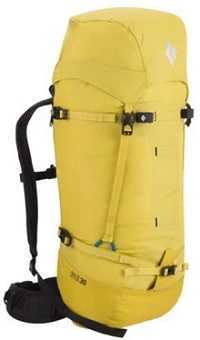
A 25+ liter day pack to use as carry-on or while sightseeing. This will not be used on the trek. If you have some other preferred way to carry a few miscellaneous items, then there is no need to bring this day pack.
Sleeping Bag & Pad

We recommend a bag rated between 20° and 0° F. Allow ample room for movement. We recommend down over synthetic for its light weight, warmth, and packability. If you know you sleep cold, consider a 0° F bag.

A full-length inflatable pad.
Technical Gear

We recommend lightweight, collapsible poles.

Wool or synthetic.

A Buff provides versitile head and neck protection. A neck gaiter is also acceptable.

Start with fresh batteries and bring extra set(s) of batteries appropriate to the duration of the trip.

Regular sunglasses will suffice on this program; glacier glasses are not required.
Each glove layer is worn separately as conditions change during the climb.

Light weight liner or softshell gloves. Lighter colors absorb less sunlight while still offering UV protection.

Wind- and water-resistant, insulated mountain gloves.
We recommend a minimum of five upper body layers, all of which can be used in conjunction with each other. Two of these should be insulating layers, one light, and one medium, that fit well together. Today there are many different layering systems to choose from, including fleece, softshell, down, and synthetic options.

Long-sleeve wool or synthetic top. Light weight, light-colored, hooded baselayers (sun hoodys) are highly recommended for sun protection.

One step up in warmth and bulk from a baselayer. A technical fleece makes an ideal light weight insulating layer.

A down, synthetic, or softshell hoody makes a great midlayer.

A hooded down or synthetic jacket.

An uninsulated, waterproof shell jacket with hood.

We recommend a moisture-wicking, active-wear bra.
We recommend a system of four layers, all of which can be used in conjunction with each other. Products which combine several layers into one garment, such as traditional ski pants, don’t work well as they don’t offer the versatility of a layering system.

Non-cotton briefs or boxers.

Synthetic or wool.

Noninsulated, waterproof shell pants must be able to fit comfortable over your baselayer bottoms and trekking pants. Full-length side zippers are required for facilitating quick clothing adjustments over boots.

A light weight, synthetic pair of pants is a good option for the approach trek when hiking at lower altitudes and in warm conditions. These pants have no insulation, are typically made of thin nylon, and commonly feature zippers to convert between pants and shorts.

A pair of light weight cotton or nylon pants, great for wearing around camp.

A pair of lightweight boots for approaches and hiking on rugged terrain. We recommend a waterproof, mid-top boot for better stability and ankle support.

Great for traveling and wearing around town or camp. A pair of tennis shoes or light hikers works well.

Large enough to fit over your trekking boots to guard against mud and snow.

Either wool or synthetic. Whatever sock combination you are accustomed to wearing during your training or previous adventures (whether single medium weight socks, a medium weight with a liner sock, two medium weight socks together, etc.), should work just fine for this climb.
First Aid & Medications
We recommend you speak with your physician about which medications you should have while traveling. Please talk with your guide before taking medications.
At a minimum, we require the following medications:
Broad spectrum antibiotics for respiratory and gastrointestinal problems like Azithromycin (250mg tablets).

Our guides carry comprehensive medical kits, so keep yours small and light. We recommend a selection of adhesive bandages, antibiotic ointment, Moleskin and blister care, medical tape and/or duct tape, cough drops, basic painkillers, an antacid, an anti-diarrheal, and personal medications.
Personal Items
-450x0.jpg)
See the Food tab for suggestions and quantities.

Insulated outdoor-style mug. We recommed a model with a removable lid, which helps retain heat and prevent spills. You may also choose to use 0.5L insulated bottle or a 0.5L nalgene.

One-liter water bottles with wide mouths made of co-polyester (BPA-free plastic).

Chlorine Dioxide water purification drops. Make sure to select the 30-minute version.

Bring as needed.

We recommend lining your day pack and duffel bag with garbage bags to keep items completely dry. You can also use waterproof pack liners.

Include toilet paper, hand sanitizer, toothbrush and toothpaste, and wet wipes. Bring a quantity appropriate to the duration of your trip.

We recommend small tubes of SPF 30 or higher, which can be carried in pockets for easy access and to prevent freezing.

We recommend SPF 15 or higher.

Spare prescription glasses if you wear contact lenses/eyeglasses.

Practice using this before coming on the climb!
For showers on the trek.

Many smartphones have excellent cameras. Action cameras, small point-and-shoots, and compact dSLRs are lightweight and work well at altitude.

A small power bank, enough to charge a phone or e-reader several times.
For charging personal electronics while traveling internationally.
Travel Clothes

We recommend bringing a selection of clothing to wear while traveling, site seeing and dining.
Travel Documents
Valid for six months beyond your return date.
The first two pages of your passport.
Pre-Trip Checklist
Purchase travel insurance.
Purchase airplane tickets.
Reserve rental equipment.
Be in the best shape of your life!
It is nice to bring a few of your favorite trail snacks to supplement the provided lunches but keep your snacks to around 1 pound. Bring some drink mix to add to your water as a tasty way to stay hydrated.
With the exception of hotel breakfasts, most restaurant meals in the cities are on your own. Breakfast, lunch, and dinner meals on the trek are included. As indicated in our Trip Itinerary , all meals are included beginning with breakfast on Day 4 through lunch on Day 12.
During the trek drinking water will be provided. You are responsible for your own bottled water and drinks when not on the trail (at hotels, restaurants and while traveling).
MOUNTAIN LUNCHES AND SNACKS
Our lunches on the trail typically consist of a sandwich, granola bar, some fruit, and chocolate. This is enough food for lunch but we recommend you bring some of your own snacks. Keep these personal snacks to about a pound for the trip.
Mountain snacks are eaten during short breaks throughout the day. We continually snack to keep our energy levels up while we climb - lunch begins just after breakfast and ends just before dinner!
The importance of having foods that are genuinely enjoyed cannot be overstated. Eating properly is the key to maintaining strength while in the mountains. In order to combat the loss of appetite at altitude we aim to have a variety of foods that stimulate the whole palate, from sweet to sour to salty.
Recommended mountain snack items: candy bars, energy bars, GORP mixes, dried fruit, nuts, cookies, hard candies (Jolly Ranchers, toffees, Life Savers), gummy bears, sour candies (Sweet Tarts), and drink mixes (Gatorade/Kool-Aid).
Chile does not allow the following items through Customs: cheeses, fresh meats, dried meats, fresh fruits, and fresh vegetables. Other food items may pass inspection but that decision is at the discretion of the customs inspector. Items which are generally okay include jerky and dried fruits as long as they are in their original packaging.
Scrambled eggs, oatmeal, or cereal can be expected for breakfasts along with hot drinks such as coffee, tea, cocoa, or cider.
Dinner normally begins with soup and ends with dessert. Healthy meals with a vegetables and meat are served as the main course. For example, we’ll have pork tenderloin over green beans and a light sauce or a local salmon filet and sautéed peppers for the entree.
Deposit Payments: A non-refundable deposit payment of $1,500 per person secures your reservation.
- Deposit payments may be made via MasterCard, Visa, American Express*, e-check/ACH, or check from a U.S. bank.
Balance Payments: The balance payment is due 120 days before the start of your program.
- **Wire transfers must cover all fees charged by your bank. The amount of the incoming wire to our bank must equal the balance payment amount.
- A payment reminder is emailed approximately three weeks before your payment due date. If your balance payment is not received 120 days before the start of your program, your reservation will be canceled, and all program fees will be forfeited.
- Payment in full is required when registering for a program within 120 days of the departure date.
*There is a 3% surcharge on all credit/debit card transactions. Credit/debit cards are not accepted for payments of $10,000 or more.
Cancellation
The $1,500 per person deposit is non-refundable and non-transferable .
- If you cancel 120 or more days before the start of your program, the $1,500 per person deposit will not be refunded.
- If you cancel less than 120 days before the start of your program, no refunds will be issued .
Due to the time-sensitive nature of these programs, and the amount of preparation time required for this program, we strictly adhere to our policy and cannot make exceptions for any reason.
Cancellation Insurance
We require that everyone purchase travel insurance. Please see our Travel Tab for details.
- RMI Leadership
- One night at a hotel in Punta Arenas prior to the trek, includes breakfast and is based on double occupancy*
- Two nights at hotel in Puerto Natales prior to the trek, includes breakfast and is based on double occupancy*
- One night at a hotel in Puerto Natales after the trek, includes breakfast and is based on double occupancy*
- Private transportation between Punta Arenas - Puerto Natales - Torres Del Paine - Punta Arenas
- All group trekking supplies such as tents, stoves, etc.
- All meals while trekking
- Park fees and permit fees
- Trekking support
- Outfitter staff
NOT INCLUDED
- International round-trip air fare and travel expenses to/from Punta Arenas
- Transfers between the Punta Arenas airport and hotel for arrival and departure flights
- Meals in Punta Arenas and Puerto Natales
- Any additional hotel nights in Punta Arenas not included above
- Recommended insurance policies (medical, evacuation, trip cancellation, etc.)
- Personal gear
- Excess baggage fees
- International airport departure taxes and Chile entry visas
- Customary guide gratuities
- Support Staff Tip Pool (we suggest $200 per person)
- Satellite telephone, air charges and internet use
- Personal expenses, room charges and beverages
* Accommodations are based on double occupancy. A Single Supplement Fee will be charged to those occupying single accommodations by choice or circumstance. The single supplement is not available in huts, tents, or in all hotels.
Rainier Mountaineering, Inc. reserves the right to modify the land cost of a trip at any time before departure.
Risk Management
Please clearly understand that mountaineering is inherently hazardous. Managing risk is RMI’s number one priority. Our guides manage significant hazards inherent in mountaineering, but they cannot eliminate them. Objective hazards include rockfall, icefall, avalanches, slides or falls by individuals and rope teams on steeper slopes, weather-related problems including cold, heat, high winds, and other unnamed dangers that can occur while climbing.
You are choosing to engage in an activity in which guided and non-guided climbers have been injured or killed. While those accidents are indeed infrequent, they may occur at any time and be out of our control. We ask that participants acknowledge the risks and hazards of mountaineering and make their own choices about whether or not to engage in this activity.
PARTICIPANT Responsibilities
Mountaineering is both an individual challenge and a team endeavor. Each Participant is required to share in the responsibility of the safety and success of the team. For this reason, we ask that each Participant:
- Possess the necessary physical and mental fitness required for this program.
- Be responsible for knowing all pre-departure information.
- Provide a signed Physician’s Certificate stating that the Participant is medically qualified to join this program.
- Update the RMI Office if there are any changes to your health or medical information before departure.
- Be properly attired and equipped as outlined in the Equipment List.
- Act in a considerate manner toward all team members and show respect for local customs, values, and traditions in the areas we travel.
- Help minimize our impact on the environment and follow appropriate Leave No Trace practices.
- Describe yourself, honestly and accurately, in terms of fitness, health, skills, abilities, and your equipment to your guide staff.
- Communicate with your guide staff on the mountain if there are any changes in your medications or health.
- Adhere to the advice of your guide staff.
- Continue to self-assess throughout the program, measuring your fitness, health, skills, and abilities against the demands required of the program.
RMI reserves the right to dismiss the Participant from a program or to send the Participant to a lower altitude at any time if the RMI Guide Staff determines, in its sole discretion, that the Participant is not physically, technically, or psychologically prepared for, or capable of participating in the program, or for any other reason that may compromise the safety, health or well-being of the Participant or the entire group. If this decision is made, the Participant will not receive any refunds or credits and will be financially responsible for any additional costs associated with an early departure, including but not limited to, evacuation, transportation, hotel reservations, meals, etc.
Zero Tolerance Harassment Policy
Rainier Mountaineering, Inc. (RMI) does not tolerate harassment or mistreatment of our participants or employees. Inappropriate conduct under this policy may include conduct that creates a disrespectful, intimidating, hostile, degrading, humiliating, or offensive environment for a participant or employee. Engaging in such conduct is a violation of this policy.
RMI may consider conduct to violate the policy even if it falls short of unlawful harassment under applicable law. When determining whether conduct violates this policy, we will consider whether a reasonable person could conclude that the conduct created an intimidating, hostile, degrading, or demeaning environment.
Violation of this policy may result in removal from a program, as well as refusal to provide services indefinitely. We place the utmost value on the safety of our participants and employees. Please report any incidents to RMI management.
Age requirements
All participants must be 18 years old at the time of registration.
Photo Release
RMI’s Photo Release outlines the terms and conditions for using your likeness in photographs, videos, or other digital media.
I hereby grant Rainier Mountaineering, Inc. (RMI) or its affiliates permission to use my likeness in a photograph, video, or other digital media (“photo”) in any and all of its publications, including web-based publications. By granting permission, you allow RMI to utilize these media for lawful purposes.
Here are the key points:
- Authorization: You authorize RMI to edit, alter, copy, exhibit, publish, or distribute the photos.
- Ownership: All photos become the property of RMI and will not be returned.
- Compensation: You will not be compensated for these uses.
- Rights: RMI exclusively owns all rights to the images, videos, and recordings and to any derivative works created from them.
- Waiver: You waive the right to inspect or approve printed or electronic copies.
- Release: You release Rainier Mountaineering, Inc. and its assigns and licensees from any claims arising from these uses, including defamation, invasion of privacy, rights of publicity, or copyright.
- Hold Harmless: You hold harmless, release, and forever discharge RMI or its affiliates from any and all claims, demands, and causes of action which I, my heirs, representatives, executors, administrators, or any other persons acting on my behalf or on behalf of my estate have or may have by reason of this authorization.
General Policies
RMI’s program schedule and itineraries are subject to change or adjustment based on a number of factors. These include, but are not limited to, route conditions, weather, group strength, terrain, other environmental factors, and many other factors. RMI has complete discretion to change plans to accommodate any of these or other factors, including but not limited to increases in program fees, changes to program schedule or itinerary, and changes to guides or staff, as necessary for the proper and safe conduct of the program. Once the program has started, the Lead Guide will decide on any changes to the itinerary, including ending the program early if the continuation of the program may compromise the safety, health, or well-being of the group.
We reserve the right to cancel any program due to inadequate signups, weather, route conditions, or for any other reason. In such a case, we will make every effort to reschedule the Participant on a different program date. If rescheduling is not possible, we will issue the Participant a refund for all program fees paid to RMI, less any non-refundable payments made on behalf of the Participant to secure any of the included land costs provided for this program, including but not limited to, hotel accommodations, transportation, transfers, tours, group equipment and food, permits, and local outfitter services, prior to the cancellation of the program. Additionally, RMI cannot be responsible for any non-refundable expenses the Participant incurred in preparation for the program (i.e., airline tickets, hotel reservations, rental cars, equipment purchases or rentals, etc.).
Once a program begins, there are no refunds or credits for weather-related cancellations or for a program that may end early due to weather, route conditions, or any other circumstances that may compromise the health, safety, or well-being of the group. Furthermore, if the Participant decides for any reason not to begin a program or to discontinue a program at any time, no refunds or credits will be issued. The Participant will be responsible for all additional costs associated with an early departure, including, but not limited to evacuation, transportation, hotel reservations, meals, etc.
The Participant is responsible for any costs due to COVID-19, including but not limited to, any testing fees to enter another country, tests required to return to the US, and/or costs associated with medical care and/or quarantine such as hotel accommodations, meals, separate transportation, etc.
Land Costs are provided as a package, and refunds or credits will not be issued for any unused meals, accommodations, group transportation, or other unused costs. Accommodations are based on double occupancy. A Single Supplement Fee will be charged to those Participants occupying single accommodations either by choice or circumstance. If you are willing to share a room, we will make every effort to pair you with another same-gender team member. We will match willing same-gender team members based on the order of registration date. If we are unable to match you with another same-gender team member, a single supplement fee will be charged. The availability of single accommodations is limited in most of the hotels where we stay, and single accommodations are not available while in the mountains.
The Participant understands and agrees that RMI assumes no responsibility or liability in connection with any travel and hospitality services provided to the Participant by other companies in connection with the program, including but not limited to, the services provided by airlines, hotels, rental cars, and transportation companies and that RMI is not responsible for any act, error, omission, or any injury, loss, accident, delay, irregularity, or danger by a supplier of travel or hospitality services to the Participant in connection with the RMI program. The Participant will be responsible for all costs associated with any travel delays, missed connections, or missing baggage that requires additional arrangements (separate transportation, hotel accommodations, meals, etc.) to be made on your behalf for you or your baggage to rejoin the program.
What are the huts like?
The huts vary from large lodges with full service bars and restaurants to small hostels that are clean with lots of character. The rooms are all communal with approximately 6 beds in each.
What are the facilities like?
There are flush toilets at the huts and camps. All the huts have communal hot showers. We bring our own towels and soap.
How hard are the days of hiking?
The days range from 5 hours to 11 hours a day of rolling terrain. There are some uphill and downhill sections that can be quite demanding. Adding a 30-pound pack also contributes to fatigue during the day so be prepared by training well. The trail is mostly a nice dirt path with some areas of mud or roots to walk across.
How will I be able to stay connected with those at home?
There is no cell coverage in the park but WIFI is available at 5 of the huts for a fee.
Are there places to charge my electronics?
All the huts have generators, so you will be able to charge your electronics when the power is on in the hut. We will not be able to charge electronics the two nights we stay in tents.
What is the weather like?
In Patagonia the weather can be warm and sunny one minute and cold and rainy the next. We pick a great time of year to go where we are likely to have nice weather, but we need to be prepared for anything. Typically, the winds will be strong over the passes and prove to be a challenge to walk against.
How long is the entire circuit?
We walk the O and the W around the Torres Del Paine Massif which covers 100 miles.
What is food like on the trek?
Breakfasts are toast, eggs, oatmeal, and coffee or tea. Lunches are sandwiches, granola bar, fruit, and some chocolate. Dinners are soup, an entree of a protein and starch for example local salmon fillet over quinoa with sautéed peppers, and a local desert. It is nice to bring a few of your favorite trail snacks to supplement but we provide plenty of food. Adding a drink mix to your water can help to stay hydrated.
Find Your Adventure
Filter results.

RMI Expeditions 30027 SR 706 East Post Office Box Q Ashford, WA 98304
Phone: 1 (888) 892‑5462
Email: [email protected]
Privacy Policy

Sign up for our Newsletter

- Email Address *
Keep up to date with information about our latest climbs by joining our mailing list. Sign up and we'll keep you informed about new adventures, special offers, competitions, and news. privacy policy
Thank you for subscribing to the RMI Expeditions Newsletter!
While you're at it, you can sign up some of our other mailings as well:
Please choose the programs you'd like updates on:

- Last minute guaranteed trips
- Covid Info Hub
- Info nights & events
- How to book
Patagonia - Condor Trail Adventure
Trek amongst patagonia’s unspoiled and wildest landscapes.
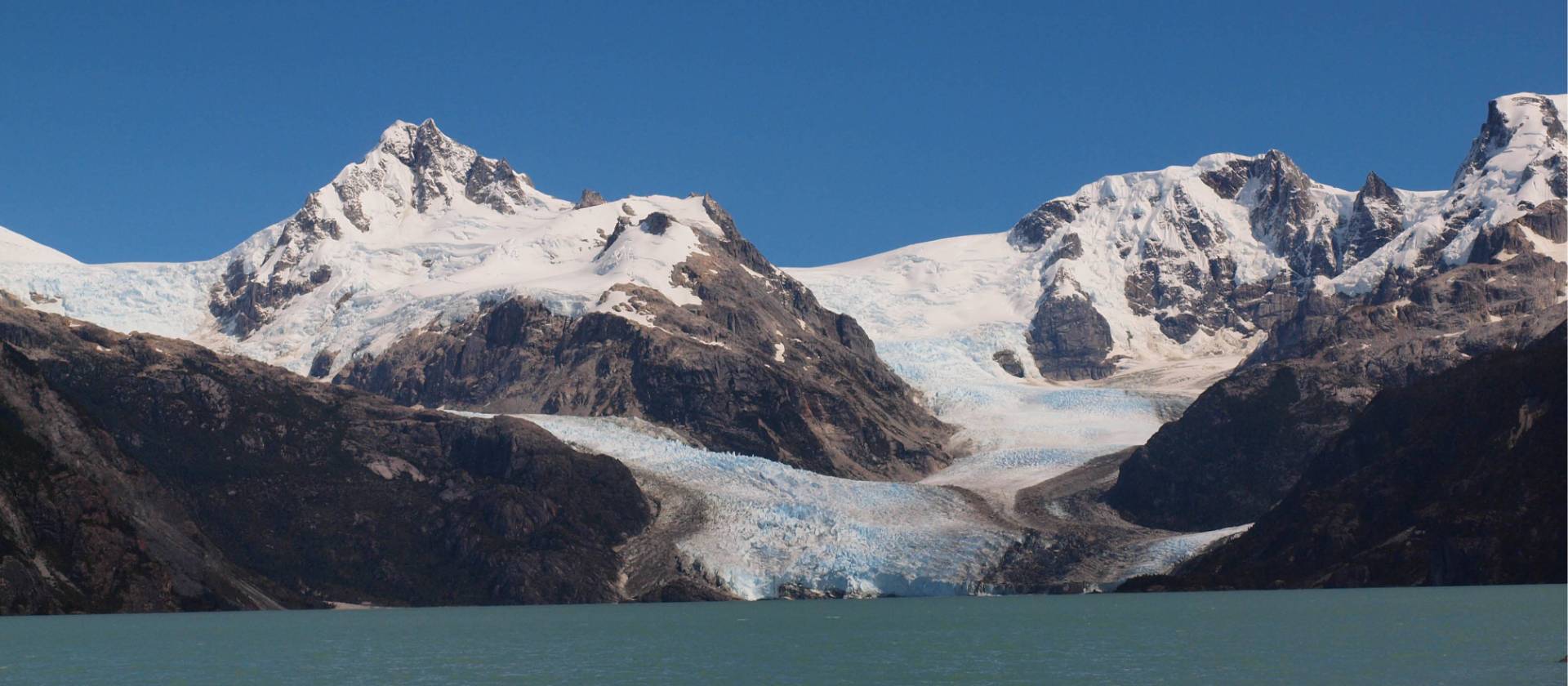
11 Days NaN
- 6 days trekking
- 2 nights Terra Luna Lodge
- 8 nights camping
- 10 Breakfasts
Share this trip with a friend
Destination
Antarctica & the arctic, australasia, central america, central asia, indian subcontinent, middle east, north america, south america, vessels & boats, advanced search, thoughtful travel.
- Accommodation
- Bike Information
- Trail Surface
- About your leader
- Departure dates
- Essential information
Trip reviews
- Related articles
Similar trips
Suggested extensions.
Share this trip
Trip highlights
- A photographer's delight, this unique and exclusive adventure takes you through secluded Patagonian wilderness
- Sail through the stunning marble caves on Lake General Carrera
- Trek around the Northern Patagonian Ice Fields marvelling at the crystal clear lakes fed by the glaciers
- Camp within the pristine mountains with direct views of stunning glaciers
- Cross one of the wildest and untouched areas in Patagonia
Experience Patagonia in a way that few get the chance to on this 11-day trek through one of the most remote areas of the globe. A unique and exclusive adventure for real outdoor lovers, hike your way amongst ancient forests, across glaciers, through crystal clear rivers and enjoy the stunning landscape that surrounds you at every turn. You will explore the "Capilla de Mármol”, a fantastic maze of marble caves created by the millenary waves of Lake General Carrera, marvel at the Northern Patagonian Ice Fields, the largest expanse of ice in the Southern Hemisphere apart from Antarctica, and be enveloped by the secluded Patagonian wilderness where it's highly unlikely to even see another person. A good physical shape and a keen adventure mentality are necessary to enjoy this experience and the reward is worth it. Enjoy this incredible adventure amongst Patagonia's unspoiled and wildest landscapes.
Read more...
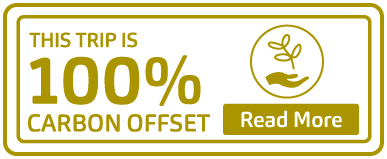
Expand all | Collapse all
Day 1 Join Balmaceda and travel to Terra Luna Lodge
Meals: L,D
Day 2 Trek to El Balcon (walk approx. 7 hours)
Meals: B,L,D
Day 3 Rest Day
Day 4 trek to la tinita (walk approx. 7 hours), day 5 trek to la joyita (walk approx. 7 hours), day 6 rest day, day 7 trek to pecebre camp (walk approx. 8 hours), day 8 pecebre camp, day 9 trek to summit (altitude: 1,300m), day 10 trek in the surroundings before returning to terra luna lodge, day 11 trip concludes with a transfer to balmaceda airport, what's included.
- 10 breakfasts, 10 lunches and 10 dinners
- Airport transfers
- 2 nights Terra Luna Lodge or similar
- Specialised bilingual guide
- Group camping equipment – includes tents, sleeping mats and cooking equipment, (Sleeping bag not provided, but available for hire)
- Private road transportation
- Tours - all guide fees and park entrance costs on all sections mentioned in the trip itineraries
- Group medical kit
What's not included
- International airfares and departure taxes
- Internal flights
- Any drinks during meals at hotels, restaurant or refugios
- Sleeping bag (can be hired at additional cost)
- Items of a personal nature such as phone calls, laundry and drinks of any kind
Per Person, Twin Share
Select your dates and book now
The following errors occured:.
Rating: ☆ ☆ ☆ ☆ ☆ ☆ ☆ ☆ ☆ ☆ ☆ ☆ ☆ ☆ ☆ ☆ ☆ ☆ ☆ ☆ ☆ ☆ ☆ ☆ ☆ ☆ ☆ ☆ ☆ ☆
Other trip reviews
Why travel with us.
Award Winning Adventures
Enhancing your journey with authentic experiences, genuine cultural exchange and real exploration are the focal points on all of our adventures. In 2019, we were crowned by our peers as the best in adventure travel at The Travel Awards in Sydney.
Our vision is to leave the world a better place by following our sustainable active outdoor travel charter . All our adventures are 100% carbon offset and our Regenerative 2030 Project aims to integrate ‘regenerative’ projects into every one of our global operations by 2030.
Ultimate Value
When you book one of our adventures, you will receive quality services at the best prices with plenty of inclusions. There are no hidden costs, single travellers don’t pay more and you’ll enjoy many ‘extra touches’ that ensure your holiday is excellent value for money.
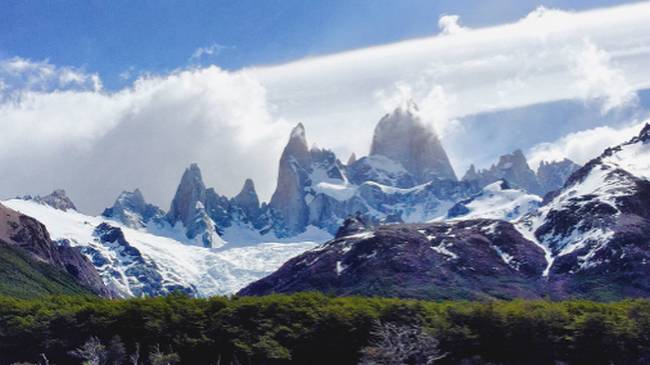
Paine & Fitz Roy Trek
Activities:.
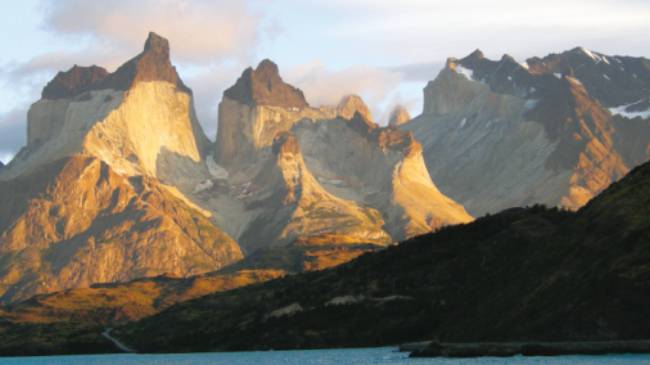
Torres del Paine Circuit
Moderate to Challenging
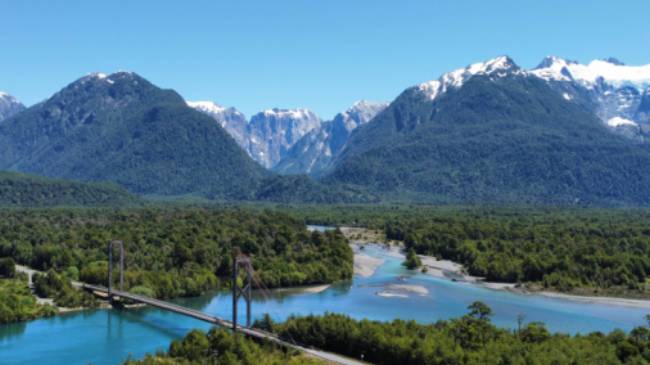
Patagonia Cycle - Northern Austral
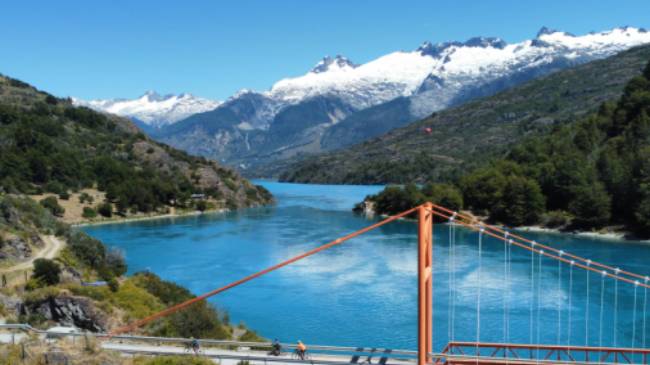
Patagonia Cycle - Southern Austral
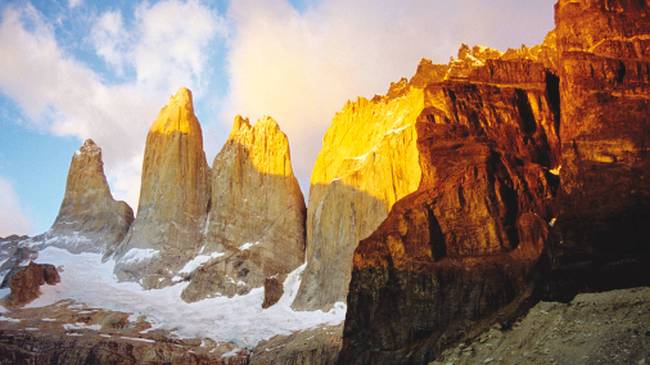
Torres del Paine W-Trek - Self Guided
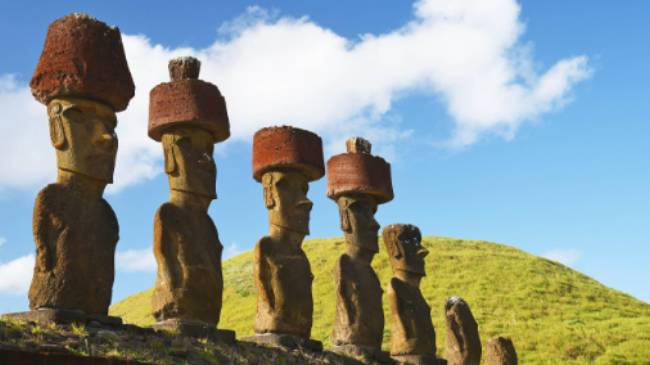
Easter Island
Discovery and Cruising
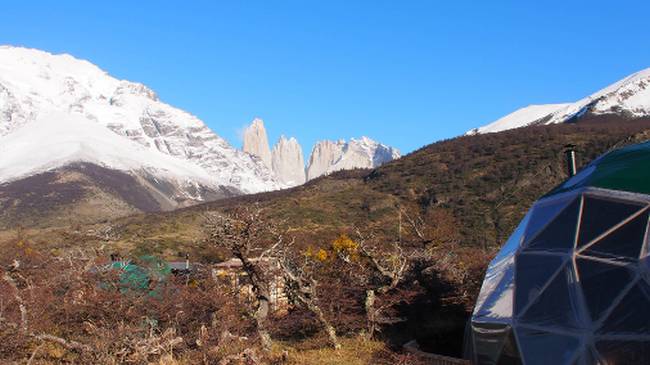
Torres del Paine Ecocamp
Introductory
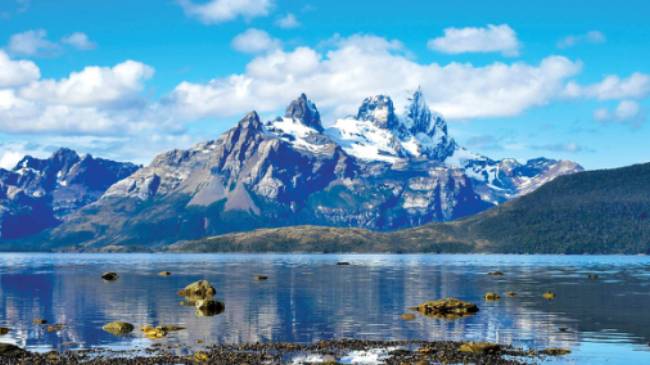
Fjords of Tierra del Fuego
Canadian know-how helps restore Torres del Paine’s bucket-list hikes in Patagonia
Overuse and erosion put the Mirador Las Torres trek in peril, but that’s changing with a rethink about how to make this extraordinary hike more sustainable
At once, my feet, my knees, my hips, even my mind felt the difference. Instead of painful rocks, I was walking on pillows. At least, the soil underfoot felt like feathers. After navigating the hard-packed path to Mirador Las Torres – one of the world’s top trails in Patagonia’s Torres del Paine National Park , and one my joints had spent the past five hours protesting – it took just a few steps on the newly designed but still unfinished trail to feel like I could keep going. Relief washed over me. Awe soon followed.
Feeling better, I could do more than just move through the scenery one April day earlier this year. I absorbed the immensity of the black rock within Ascensio Canyon, I listened to the roaring river below and could properly admire the contrasting fall colours that surrounded me.
The writer on the epic hike in Patagonia's Torres del Paine National Park. Catherine Dawson March/The Globe and Mail
That sense of wonder is exactly what British Columbia trail designer Jacob (Sutra) Brett hoped would happen when he began planning this new section in 2016 as a Shuswap Trail Alliance volunteer.
Heading into the outdoors? Here’s why you should get a guide
A trail “is not … a thing on the ground that people follow, it’s actually an experience in a story created for them,” he said.
Brett believes trails should tell hikers a story about the landscape and heads back to Patagonia for his 10th visit in September to do more sustainable- and social-trail planning. He now runs his own consulting business, Earthbound Projects, but was first invited to this wild part of the world by Hotel Las Torres , which also owns Reserva Las Torres, the 11-acre reserve adjacent to the national park. Several of Torres del Paine’s most popular trails run through their private land.
“He’s all about sexy trails, the curves, the surprises and the viewpoints,” Mauricio Kusanovic said. His family runs Hotel Las Torres and he is executive director of the next-door reserve.

Hotel Las Torres is the closest hotel to many of Torres del Paine National Park's most popular treks. Guests can ride with baqueanos, or Chilean cowboys, to explore the reserve. Las Torres Patagonia
Also supporting the new trail work are Chilean non-profits, including Torres del Paine Legacy Fund, AMA Torres del Paine and CONAF, the Chilean forestry authority. Brett’s trail-design plans, cut into the hillsides by teams of Chilean and international volunteers, have slowly transformed several bucket-list hikes in the area.
The Mirador Las Torres out-and-back trail had to be first because it is in such desperate need of renewal. The 20-kilometre route endures 1,000 people a day in peak season. The eight-hour (or in my case a leisurely 12-hour) round trip is one of Chilean Patagonia’s unmissable and must-see sights and it can be done as a day trip or worked into the multiday W and O circuits in the park.

The group of hikers traverse the Valley of the Winds on the Mirador Las Torres trail. Catherine Dawson March/The Globe and Mail
My hiking group slipped on headlamps and left Hotel Las Torres in the predawn. It’s located right near the main trailheads and we soon began ascending single file on a path created by horses and traders eons ago. The trail is so scoured by water and winds of up to 100 kilometres an hour and ground down by millions of feet and hooves, that it is more of a chute than a path – one full of stones and, often, steaming piles of horse poop.
The best hiking gear of 2024, from boots to coffee makers
We followed the well-worn trail up to the tip of the Valley of the Winds, down into the lenga beech forest and clambered back up the Paine mountains over a boulder moraine (so windy that holes in my hiking poles whistled) to reach three granite towers looming some 8,000 feet over a glacial tarn. It’s a breathtaking sight that gives the park its name (“The Towers of Paine”). The lakeshore is often packed with hikers lining up to get their celebratory photos (we even watched a proposal, complete with Champagne).

The Mirador Las Torres viewpoint is inside the national park, but the trail begins and ends on the private Reserva Las Torres. The softer ground I enjoyed on my return trip is part of a fresh route that takes hikers in a new direction to preserve the land and improve their experience.
“The first step was looking to fix the old route,” Brett explains. “Can we technically fix it? Mostly, yes. But can we socially fix it – how users are going to use the trail – and that answer was no.”
He considered the psychology of international hikers coming to Patagonia (i.e., nothing but a broken leg will stop them from completing that bucket-list trek), and realized he needed to improvise. “They are there for a very focused reason,” he said, and new trails need to discourage determined hikers from taking shortcuts to the old route, thus destroying its reforestation.
“I do a land-based inventory, where I go around the area and look for other anchors or features in the environment that people would naturally gravitate to,” Brett said. He listens, too, because he knows hikers follow the sound of water and create ad-hoc paths to investigate if the main trail does not.

Volunteers work on a stretch of trail overlooking Ascensio Canyon in Patagonia. Barria Arjel
Volunteers pause to enjoy the views before ascending the hard-packed, rock covered trail to the base of the towers in Torres del Paine National Park. Catherine Dawson March/The Globe and Mail
The new trail, Kusanovic said, “is thought out for a wonderful experience, something that avoids water damage with the proper grade and the proper width and goes to the most attractive spots.”
There are still two bridges to build and more routing to be done, but he is hopeful the new section of the Mirador trek will be completed by April, 2025.

One of Torres del Paine's three granite towers reaches as high as 2,500 metres, towering over the boulder-strewn trail below. Catherine Dawson March/The Globe and Mail
Creating environmentally sensitive trails in an increasingly busy tourism destination is no small feat but it’s essential for the Kusanovic family: They need well-managed trails because that’s what their guests are travelling to see.
“One of our greatest challenges is being the buffer zone for the national park and managing the visitation. So, one of our goals is to share this place with the world in a sustainable manner.”
Somehow, I walked 34,997 steps that day – and was only able to finish because of the encouragement and patience of a great group of women. But also, because our guide Marcelo Osses knew how to find the new trail that gave me a second wind. He leads groups to the base of the towers at least three times a week (usually much faster) but he didn’t seem to mind the slow pace.
“The change of colour in April is amazing, it’s really wonderful,” he mused, pulling out his phone again to capture the gorgeous sunlit ambers and yellows of fall while waiting for me to catch my breath.
Chile’s peak summer hiking season runs from December to February (it’s also the windiest time of year). But consider planning a trip in late March and early April when there are far fewer tourists and glorious fall colours to enjoy along the trails throughout Patagonia.

A Patagonian-style barbecue of lamb and vegetables is served for dinner at Hotel Las Torres. Las Torres Patagonia
Torres del Paine National Park was created around Hotel Las Torres , a family-run estancia turned all-inclusive hotel with a bar, spa, fine-dining restaurant and stables. Three-day, two-night stays from US$2,160 for double occupancy or US$2,950 for single. Of the many hotels near the park, Hotel Las Torres has the best location (a short walk from the main trailheads) and rooms that look out onto Mount Almirante Nieto. Beginner and advanced riders should not miss a chance to explore the area on horseback with local baqueanos , or cowboys. Visitors who’d rather not hike or ride can still see the region’s outstanding landscapes on driving tours. lastorres.com
The writer was a guest of Hotel Las Torres. It did not review or approve the story before publication.
Take a Break
Check your horoscope to learn how the stars align for you today.

Switch gears. Give your brain a workout and do today's Daily Cryptic Crossword.

Scoop a new vibe in the numbers and do today's Daily Sudoku.

Kick back with the Daily Universal Crossword.

Follow related authors and topics
- Catherine Dawson March
- Environment
- Travel and Tourism
Authors and topics you follow will be added to your personal news feed in Following .
Interact with The Globe
Justin trudeau must call a leadership race, before it’s too late, kamala harris’s corporate tax hike will benefit red states that are business-friendly, concerns mount over new federal immigration policy that would grant permanent residency to low-wage workers, union issues new strike threats as railways await word on arbitration, home builders plead for relief as costs soar, the maximum cpp pension future retirees could get is about to start changing in a big way, ‘mewing’ is trending among teen and tween boys – and parents and teachers are sharing their concerns.

IMAGES
COMMENTS
Alesha enjoying the view over Grey Glacier. The French Valley - Valle Del Frances. Time Required: 3 to 4 hours Distance: 12km Difficulty: Moderate Start / Finish Points: Refugio Los Cuernos You always have energy in Patagonia, even when you are literally falling asleep, so don't miss this epic side trip that takes you between the Cerro Paine Grande and the Cuernos del Paine following the ...
Hiking the W Trek Snapshot. Location: Torres del Paine National Park, Chile Nearest town: Puerto Natales, Chile Getting to and from the park: Torres del Paine is easily accessible by bus from Puerto Natales. Park entry: Park entry tickets and overnight stays in the park (campsites and lodges) must be arranged before visiting the park. Start and finish: The W Trek traverses a roughly w-shaped ...
Overview of the W Trek. Located in Torres Del Paine National Park, Chile; 50 miles/80 km; Typically done in 4 Nights, 5 Days; The highest elevation is at the Base of Towers, 2,788 feet above sea level
[email protected]. U.S.: +13314652129 Chile: +56-957902936. Head Office: Huerto 105, Puerto Natales, Chile. FAQs. Contact Us. ChileTour Patagonia, is a top-rated local Chilean travel brand with a main office in Puerto Natales that operates various types of W Trek experiences in Torres del Paine National Park and trips to other parts ...
Day 2: Central Sector to Francés Sector. The blue water of Lake Nordenskjold from the W trek route in Torres del Paine in Patagonia, Chile. Photo: Getty. Distance: 8 miles (13.5km) Leaving Central, you'll notice the trail gets a little quieter as you move away from the day trippers coming purely to see Las Torres.
Hiking the W Trek in Torres del Paine is expensive. Especially when compared to other places in Patagonia like Bariloche and El Chalten. But there's ways to make this experience cheaper like bringing our own food and camping gear. Overview (per person): Our Costs. Accommodation + Gear (3 nights): $345 USD.
The W trek is a multi-day hiking route in the Torres del Paine National Park in Patagonia, southern Chile. It's one of the most famous treks in the region. ... All four Las Torres Patagonia campsites on the W trek Central, Chileno, Cuernos, and Francés can be booked online. In the 2023 season, Las Torres campsites on the W trek can be booked ...
Ascent: 2956 ft of elevation gain. Time: 7 - 9 hours. The first day of this 4 day W trek itinerary in Patagonia will cover a lot of ground. You'll kick off the day bright and early departing from Puerto Natales. A 2-hour drive delivers you to the Laguna Amarga entrance gate of Torres del Paine National Park.
The W Trek in Torres del Paine, Patagonia, Chile. Torres del Paine, where the W Trek takes place, is one of the most famous national parks in South America. It was established as a national park in 1959 and is approx. 1814 square kilometres (181,400 hectares). Torres del Paine has sensational mountains, glaciers, lakes and rivers to explore.
Torres Del Paine O Circuit. Location: Patagonia Hiking Tours. Area: Torres del Paine Treks. Trip type: Hut to Hut Trekking Tour. Difficulty: Highlights: Circumnavigate Torres del Paine, Camps & Backcountry Lodges, Towering Granite Spires …. 7 Days. from $5400.
Trip Summary and Itinerary Map. Day 1: Trek to Las Torres (The Towers) lookout; Refugio Torres Central. Day 2: Trek to Los Cuernos (The Horns) lookout; Refugio Los Cuernos. Day 3: Trek to the French Valley; Refugio Paine Grande. Day 4: Trek to Glacier Grey; optional kayaking; Refugio Grey. Day 5: Boat trip to face of Glacier Grey; optional ice ...
1 Travel Guide to Hiking the W Trek in Patagonia. 1.1 Hiking the W Trek Basics. 1.2 Accommodation on the W Trek. 1.3 When to Tackle the W Trek. 2 Getting Started: Where to Fly Into and How to Get There. 2.1 Puerto Natales - The Gateway to Torres del Paine National Park.
My Patagonia highlights. Day 1: Buenos Aires to El Chalten: Hike to Mirador Condores. Day 2: Laguna de Los Tres hike (El Chalten) Day 3: Laguna Torre (El Chalten) Day 4: Perito Moreno Glacier (El Calafate) Day 5 Patagonia itinerary: Puerto Natales. Day 6 - 10: W Trek (Torres Del Paine) Other places to visit in Patagonia.
Tracing the foothills of the snow-capped Paine Massif in southern Chile's famous Parque Nacional Torres del Paine, the W Trek one of the world's most epic multi-day tramps. Named for the shape sketched by the 80km (50-mile) trail, the W Trek immerses you in some of Patagonia's most mesmerizing scenery, with turquoise lakes, oozing ...
Patagonia Full Circuit Trek - Torres del Paine National Park. ... How to travel Patagonia on US$30 a day. Kindle. Chile: Carretera Austral: A guide to one of the world's most scenic road trips (Bradt Travel Guides). Paperback & Kindle. Walking Patagonia by Caspian Ray. Don't expect a hiking guide, it's a fiction story about a young guy ...
19 Things to Know Before Hiking the W Trek in Patagonia's Torres del Paine in 2024. So you're interested in hiking the W Trek in Patagonia - one of South America's most famous trails. The W Trek zigzags through the heart of Chile's iconic Torres del Paine National Park, a land where the summits form stunning granite monolith towers ...
Immerse yourself in the Patagonian wilderness, on this 6-day hiking trip in the Torres del Pain National Park of Chile. Coined one of the most beautiful and popular treks in the world, the W Trek traverses through rolling grasslands and mountainous peaks, alongside the breathtaking blues of lakes, rivers and streams.
The Classic W Trek is undoubtedly the most famous trail in Patagonia, Torres del Paine National Park. This non-technical guided hike tour connects a best-of-the-best selection of Patagonia's highlights: the Towers Base lookout, French Valley and Grey Glacier. Hike through pristine landscapes, past rivers, lakes and rocky peaks - plus grab ...
Ecocamp Patagonia is located in the heart of Torres del Paine National Park in Chile with views of the majestic granite Paine Towers. It was the first geodesic dome hotel in the world, offering an upscale camp at the domes inspired by the region's ancient nomadic inhabitants. EcoCamp Patagonia Suite Dome (Heating & Private bathroom, 28m² ...
Day 2: Seron to Dickson. Distance: About 11 miles. Hike up a small pass where you get the first glimpse of the glacial lakes and impressive peaks Patagonia is known for. Even the back side of the ...
Because the backside of the O Circuit must be traversed counter-clockwise, your only option will be to begin hiking east along the trail, which will be easy to find. Camp Italiano is a comfortable 7.5-kilometer (4.7-mile) hike from Paine Grande. Once you arrive, check in with the park ranger and set up camp.
Imagina un viaje que combine lo mejor de la tierra y el mar en la Patagonia chilena, uno de los paisajes más impresionantes del mundo. Esa fusión la brindan el Trekking W en Torres del Paine y la navegación por los fiordos patagónicos.
The Full Circuit Trek around Chile's Torres del Paine National Park, near the southern tip of Patagonia, takes us through some of the most idyllic landscapes on the planet. Popularly known as the "O", this 10-day loop encompasses the shorter "W" route, but also ventures out into the more remote stretches of grassland, old-growth forest, and ...
Patagonia Hiking & Trekking Tours. Patagonia's world-class hikes put it firmly at the top of most trekkers lists. Explore granite pinnacles of Paine and Fitz Roy, walk across the ice cap or trek up volcanoes. From the rainforests to wind-tortured steppe, day hikes to multi-day expeditions, let the scenery draw you in and take your breath away.
Experience Patagonia in a way that few get the chance to on this 11-day trek through one of the most remote areas of the globe. A unique and exclusive adventure for real outdoor lovers, hike your way amongst ancient forests, across glaciers, through crystal clear rivers and enjoy the stunning landscape that surrounds you at every turn.
After navigating the hard-packed path to Mirador Las Torres - one of the world's top trails in Patagonia's Torres del Paine National Park, and one my joints had spent the past five hours ...